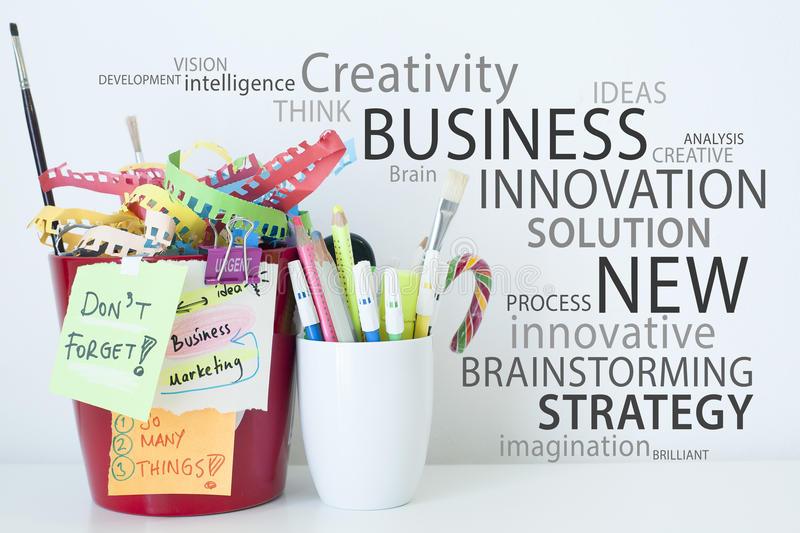D Y Patil International University, Akurdi, Pune
Search results: 1884
- Teacher: Dr. Sanjay Badhe
- Teacher: Mrs.Mayura Abhijit khanore
- Teacher: Ms Divya Raidas
- Teacher: Dr. Surabhi Sonam
- Teacher: Dr Shubhro Chakrabartty
- Teacher: Ms Shilpa Marathe
- Teacher: Dr. Laxmi Priya Sahu
- Teacher: Ms . Priyanka Eknath Doke
- Teacher: Mr. Vivek Prakash Magar
- Teacher: Ms Vaishali Kumar
- Teacher: Mayuri Bhandari
- Teacher: Mrs. Heena Bhatia
- Teacher: Dr Richa Purohit
- Teacher: Ms. Prachi Soniminde
- Teacher: Ms Zalak Thakkar
- Teacher: Mrs. Veena Kiragi
- Teacher: Dhanashri Varute
- Teacher: Dr.Prateek Verma
- Teacher: Mrs.Mayura Abhijit khanore
- Teacher: Ms . Priyanka Eknath Doke
- Teacher: Miss Kavita Ashok Gaikwad
- Teacher: Ms. Tejashri Chhagan Sawant
- Teacher: Sandeep Dongare
- Teacher: Dr. Kalyan Bamane
- Teacher: Mr. Rajkumar Chaudhari
- Teacher: Dr Ashvini P Shende
- Teacher: Dr. Bahubali Shiragapur
- Teacher: Mrs Sneha Kanawade
- Teacher: Raji Ajith Panickar
- Teacher: Dr. Rahul Sharma
- Teacher: Ms Vijaylaxmi jain
- Teacher: Mr Shrikant Mahindrakar
- Teacher: Dr. Niharika Singh
- Teacher: Ms Shilpa Marathe
- Teacher: Ms Krishnendu S
- Teacher: Dr. Maheshwari Biradar
- Teacher: Ms Vaishali Kumar
- Teacher: Mr Saransh Kushwaha
- Teacher: Dr. Rahul Sharma
- Teacher: Dr. Maheshwari Biradar
- Teacher: Ms Priyanka Karale
- Teacher: Dr. Rahul Sharma
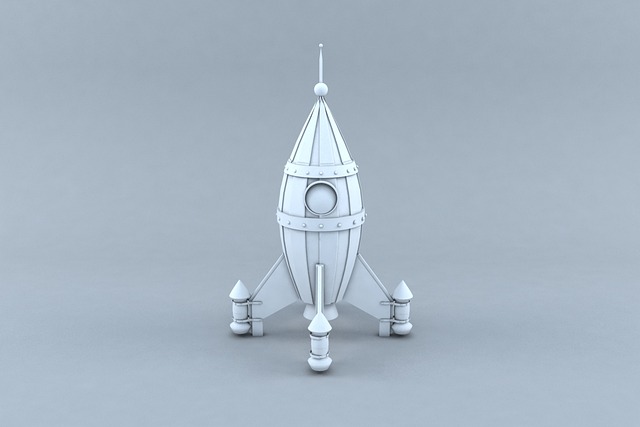
Course
Description cum Session Plan
2D and 3D Graphics Illustration - DES2404
SEM – IV / 2nd YEARCourse/Module
Instructor:
Ms.
Shruti Bir
Office Number: 530
Phone: 7028015701
Email:
shruti.bir@dypiu.ac.in
Office hours: 9:30 am -5:30pm
Location: SID, DYPIU,
Akurdi, Pune.
Teaching Assistant
Name: NA
Contact: NA
Office Hours: NA
Location: NA
Level (who can take this course?): 12th pass/Elementary
and Intermediate course certificate holder students who has a keen
interest and passion for 2D and 3D design, Illustration & Animation.
Credit: 4 (60 hrs.)
Evaluation:
Internal Evaluation - 80% (Continuous Evaluation)
External
Evaluation - 20% (Jury)
Maximum Number of Students: 40
Course Objectives:
- Equip students with industry-standard skills in 2D/3D illustration, modelling, texturing, rigging, and animation using professional tools.
- Develop creative problem-solving abilities and efficient workflows to meet industry demands in digital content creation.
- Foster proficiency in composition, lighting, shading, and rendering to create high-quality visuals for games, films, and UI/UX.
- Enhance students’ ability to integrate animations and illustrations into interactive media, improving engagement and usability.
- Strengthen collaborative and independent project skills, simulating real-world industry environments and expectations.
- Improve presentation and communication skills, enabling students to effectively showcase and justify their creative work.
- Prepare students for careers in animation, game design, and digital media by ensuring they meet industry standards.
Prerequisites:
·
Basic Computer Literacy and familiarity with web
browsers
·
Basic Understanding of the Internet and Websites
·
Basic Text Editing Skills with basic mathematical skills
·
Most importantly the Problem-Solving Mindset
Course Syllabus:
|
Serial Number |
Module Topics |
Hours |
|
Module I |
Building blocks of illustration; Pen, Pencil and Shape tools and Freehand drawings to practice creating 2D/3D forms, graphics, characters etc. · Students will learn the fundamentals of digital illustration using tools such as the Pen, Pencil, and Shape tools to create basic 2D forms. · Through hands-on practice, students will develop proficiency in digital drawing techniques, including line art and basic shapes, laying the foundation for more complex illustrations using various design tools like illustrator photoshop etc. |
10 |
|
Module II |
2D graphics, characters, 3D product illustrations & animations · Students will explore techniques for creating both 2D drawings and 3D illustrations by adding tone, shadows, highlights, and adjusting strokes. · Through experimentation with various digital brushes and shading techniques, students will learn to add depth and dimension to their illustrations, enhancing realism and visual interest. · Students will practice creating compositions using collage techniques, tracing, and recreating illustrations from reference images. · By studying principles of composition, perspective, and visual storytelling, students will develop skills in arranging elements within their illustrations to create engaging and cohesive visuals. |
10 |
|
Module III |
Introduction to 3D Design Tools, 3D Characters & 3D products (Hard Surface Modelling) · Understanding the fundamentals of 3D tool and its features. · Analyzing diverse applications of 3D graphics in various industries · Introduction to 3D Design tools – Blender/Maya · Overview of 3D modelling concepts · Polygon Model, Objects, Vertices, Edges, Faces · In-depth study of polygonal models |
10 |
|
Module IV |
Materials, Textures, UV Maps in 3D Characters & 3D Products · Introduction to various industry tools for texturing complex characters and models. · Exploring materials and their impact on 3D graphics · Understanding textures and UV mapping in 3D graphics · Shading, Normals, Advanced Shading · Shading principles in 3D graphics · Advanced shading techniques |
10 |
|
Module V |
Rigging 3D Characters & Hard surface models/product · Rigging 2D characters and graphics in Adobe Animate · Introduction to advance skeleton plugin (Free 3D rig creation industry tool) · Rigging processes in 3D Models · Implementing constraints and inverse kinematics · Working with armatures and bones in 3D modelling · Introduction to rigid body physics in 3D graphics |
10 |
|
Module VI |
Intro to 3D Animation, Dope Sheet, Timeline, Keyframes, Shape Keys
Camera Setup, Lighting, Setting up a Scene for 3D Rendering · Using Camera in 3D Environment & camera animation
|
10 |
|
Total Hours |
|
60 |
Lessons & Session Plan:
|
Assignment Number |
Module Details |
Starting Date /Submission Date |
|
Assignment 1 |
Theme based 2D/3D Illustration project - 1. Students will conceptualize and create an illustration based on a given theme, exploring multiple versions and iterations of the same concept. |
21/03/2025 |
|
Assignment 2 |
Illustration & animations For UI elements (Real life Design Contexts) - 1. Illustration manipulation and animation Using Figma 2. Students will learn to integrate illustrations into UI/Graphic Design contexts, refining rough illustrations into complete, executable formats suitable for digital design projects. 3. By exploring techniques for integrating illustrations with typography, layout design, and user interfaces, students will develop skills in designing cohesive visual identities and user experiences. |
28/03/2025 |
|
Assignment 3 |
Designing & creating a 3D Model (a character and a hard surface (Product) using Blender/maya - 1. Students will design a simple 3D character based on given theme. 2. Also, a hard surface model/ Product/ Environment using 3D design tools like Blender/maya etc. |
04/03/2025 |
|
Assignment 4 |
Texturing the 3D Models (Hard surface/Product and Character) created in previous assignment using Blender/Maya |
11/04/2025 |
|
Assignment 5 |
Rigging the 3D Models created in previous assignment using Advance skeleton plugin/tool in maya or blender. |
18/04/2025 |
|
Assignment 6 |
Student will create a basic, small duration but meaningful animations that can be used in various purposes in the industry. Submit the polished version of your project and present it and participate in the Q&A session of final projects. |
23/04/2025 |
Course
Outcome:
1. Demonstrate proficiency in 2D and 3D digital illustration techniques,
utilizing industry-standard tools.
2. Apply fundamental design principles, including composition, shading, and
perspective, to enhance visual storytelling.
3. Develop and refine illustrations and 3D models through an iterative
design process, integrating constructive feedback.
4. Utilize digital brushes, textures, and UV mapping to create detailed and
realistic surfaces in 3D graphics.
5. Construct and manipulate 3D models, including characters and hard
surface objects, using polygonal modelling techniques.
6. Implement rigging techniques for 2D and 3D models, applying constraints
and inverse kinematics for realistic movement.
7. Apply key animation principles, including keyframes and motion
refinement, to produce meaningful 3D animations.
8. Optimize lighting, camera angles, and rendering settings to achieve
high-quality visual outputs.
9. Integrate illustrations and animations into UI/UX design, enhancing user
engagement and interactivity.
10. Synthesize acquired skills into a final project,
effectively presenting and justifying design decisions in a professional
context.
Text book:
NA
Reference book:
- The Art of 3D Animation: A Comprehensive Guide to Crafting Spectacular Visuals - Authored by Subhash Chaudhary
- Digital Modeling - Written by William Vaughan
- 3D Art Essentials - Ami Chopin
- 3D Animation Essentials 1st Edition - Andy Beane
Web References:
2D & 3D Modeling (Blender, Maya, etc.):
- Blender Guru – https://www.blenderguru.com/
- In-depth Blender tutorials, from beginner to expert.
- In-depth Blender tutorials, from beginner to expert.
- CG Cookie Blender Training – https://cgcookie.com/
- Professional Blender courses covering modeling, shading, and animation.
- Professional Blender courses covering modeling, shading, and animation.
- Autodesk
Maya Learning Hub –
https://knowledge.autodesk.com/support/maya/learn
- Official Maya tutorials covering all major features.
- Official Maya tutorials covering all major features.
- Official Maya tutorials covering all major features.
Pdfs, Docs, Exl. sheets, PPTs and also supportive internal tutorial Videos will be provided (if required) alongside the day-to-day lectures to make the learning and teaching more interactive, easy and fun.
- Teacher: Ms Shruti Bir
- Teacher: Anil Narasipuram
- Teacher: Varun Sharma
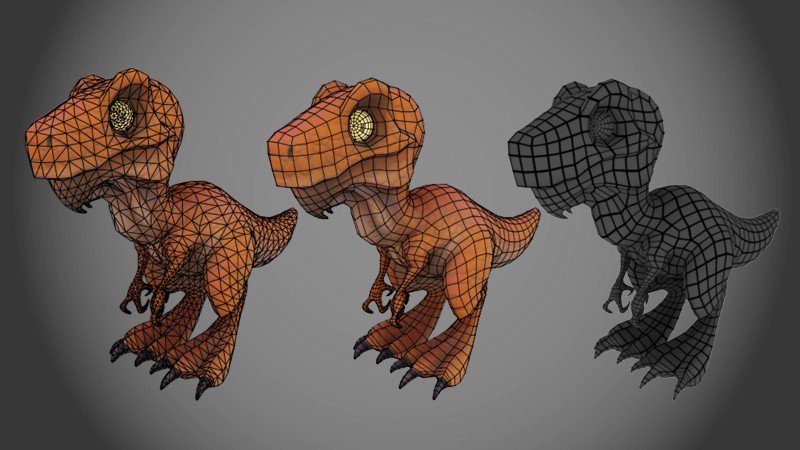
- Teacher: Anil Narasipuram
- Teacher: Mr. Ajinkya Hiran
- Teacher: Prof. Mangesh Javkhedkar
- Teacher: Dr. Priyanka Dhoot
- Teacher: Dr. Anupam Kumar
- Teacher: MS.DOYEL DUTTA
- Teacher: Ms. Pragati Pallavi
- Teacher: Dr Ananya Mehta
- Teacher: Ms Anupurba Das
- Teacher: Ms Karishma Doke
- Teacher: Sulaxan Jadhav
- Teacher: Dr.Vaishnaw Kale
- Teacher: Dr. Bahubali Shiragapur
- Teacher: Dr. Sirshendu Arosh
- Teacher: Sulaxan Jadhav
- Teacher: Ms Krishnendu S
- Teacher: Dr. Rahul Sharma
- Teacher: Ms. Sweta Shreyashi
- Teacher: Ms Priyanka Karale
- Teacher: Dr. Kapil Sharma
- Teacher: Mrs. Heena Bhatia
- Teacher: Dr Sarika Jadhav
- Teacher: Dr Richa Purohit
- Teacher: Ms Priyanka Karale
- Teacher: Dr. Kapil Sharma
- Teacher: Ms Krishnendu S
- Teacher: Dr. Maheshwari Biradar
- Teacher: Mr. Ranjeet Ranjan Jha
- Teacher: Mr Mahendra Patel
- Teacher: Sulaxan Jadhav
- Teacher: Dr.Vaishnaw Kale
- Teacher: Dr. Maheshwari Biradar
- Teacher: Dr.Vaishnaw Kale
- Teacher: Ms Vaishali Kumar
- Teacher: Dr. Rahul Sharma
- Teacher: Mr.Swet Chandan
- Teacher: Mr Ajinkya Kothavade
- Teacher: Mrs. Maya Ranjeet Pisal
- Teacher: Dr. Maheshwari Biradar
- Teacher: Ms Dipali P Dhokane
- Teacher: Dr. Rahul Sharma
- Teacher: Mrs. Heena Bhatia
- Teacher: Varshita Gangadhara
- Teacher: Archana Kadam
- Teacher: Amit Marwadi
- Teacher: Mrs. Maya Ranjeet Pisal
- Teacher: Dr Richa Purohit
- Teacher: Ms. Prachi Soniminde
- Teacher: Kunal Dumbre
- Teacher: Mrs. Heena Bhatia
- Teacher: Varshita Gangadhara
- Teacher: Archana Kadam
- Teacher: Amit Marwadi
- Teacher: Mr. Yash Sanjay More
- Teacher: Mrs. Maya Ranjeet Pisal
- Teacher: Dr Richa Purohit
- Teacher: Dr K P Agrawal
- Teacher: Yash Sanjay More
- Teacher: Mrs. Shubhangi V Patil
- Teacher: Mrs. Shubhangi V Patil
- Teacher: Dr Sarika Jadhav
- Teacher: Mr Ajinkya Kothavade
- Teacher: Mr Riteshkumar Sale
- Teacher: Dr. Rahul Sharma
- Teacher: Sulaxan Jadhav
- Teacher: Prof. Vinayak Sathe
- Teacher: Mrs Sneha Kanawade
- Teacher: Dr Sarika Jadhav
- Teacher: Sulaxan Jadhav
- Teacher: Ms.Nikita Pagar
- Teacher: Mr Riteshkumar Sale
- Teacher: Dr. Bahubali Shiragapur
- Teacher: Mr Amit Kumar Om
- Teacher: MS.DOYEL DUTTA

Course Description
"Advanced Design and Graphics" is a course that focuses on advanced concepts and techniques related to design and graphics. The course typically builds upon foundational knowledge in design principles, visual communication, and graphics software to explore more complex and specialized topics. The primary goal is to deepen understanding and proficiency in creating visually compelling designs.
Course Objective:
1. Make students familiar with the world of Graphic Design
2. To introduce them to various design software
3. Integrate print and digital design concepts seamlessly, understanding the unique requirements and formats for both mediums.
4. Explore interactive design principles and tools, incorporating graphics, interactive designs, and other multimedia elements into design projects.
Course Outcome:
On completion of this course, the student should be able to:
1. Apply knowledge gained in designing software for design and layout.
2. Demonstrate proficiency of skills in designing and creating layouts using page layout software for print media.
3. Integrate interactive design concepts into projects, creating engaging and dynamic visual experiences.
4. Seamlessly produce designs for both print and digital platforms, considering the specific requirements of each medium.
- Teacher: Mr Amit Kumar Om
- Teacher: Dr.Rahul Weldode
- Teacher: Mr. Rajkumar Chaudhari
- Teacher: Dr. Tamal Mondal
- Teacher: Varsha Sambhaje
- Teacher: Mr Rohit Saktel
- Teacher: Dr. Kapil Sharma
- Teacher: Dr. Bahubali Shiragapur
- Teacher: Dr Anuj Kumar
- Teacher: Varsha Sambhaje
- Teacher: Dr. Rahul Sharma
- Teacher: Mr. Suresh Kadam
- Teacher: Mrs Venkata Mrudula Bhimavarapu
- Teacher: Sheetal Bura
- Teacher: Dr. Kranti Shingate
- Teacher: Dr. Palash Bairagi
- Teacher: Dr. Kranti Shingate
- Teacher: Dr. Priyanka Dhoot
- Teacher: Dr. Kranti Shingate
- Teacher: Mrs. Heena Bhatia
- Teacher: Dr Sarika Jadhav
- Teacher: Dr Richa Purohit
- Teacher: Mrs. Heena Bhatia
- Teacher: Dr Sarika Jadhav
- Teacher: Dr Richa Purohit
- Teacher: Prof Paresh Kulkarni
- Teacher: Dr Arvind Kumar Mathur
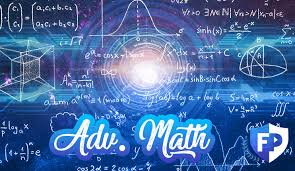
- Teacher: Dr. Anju Chaurasia
- Teacher: Suprabhat Sinha
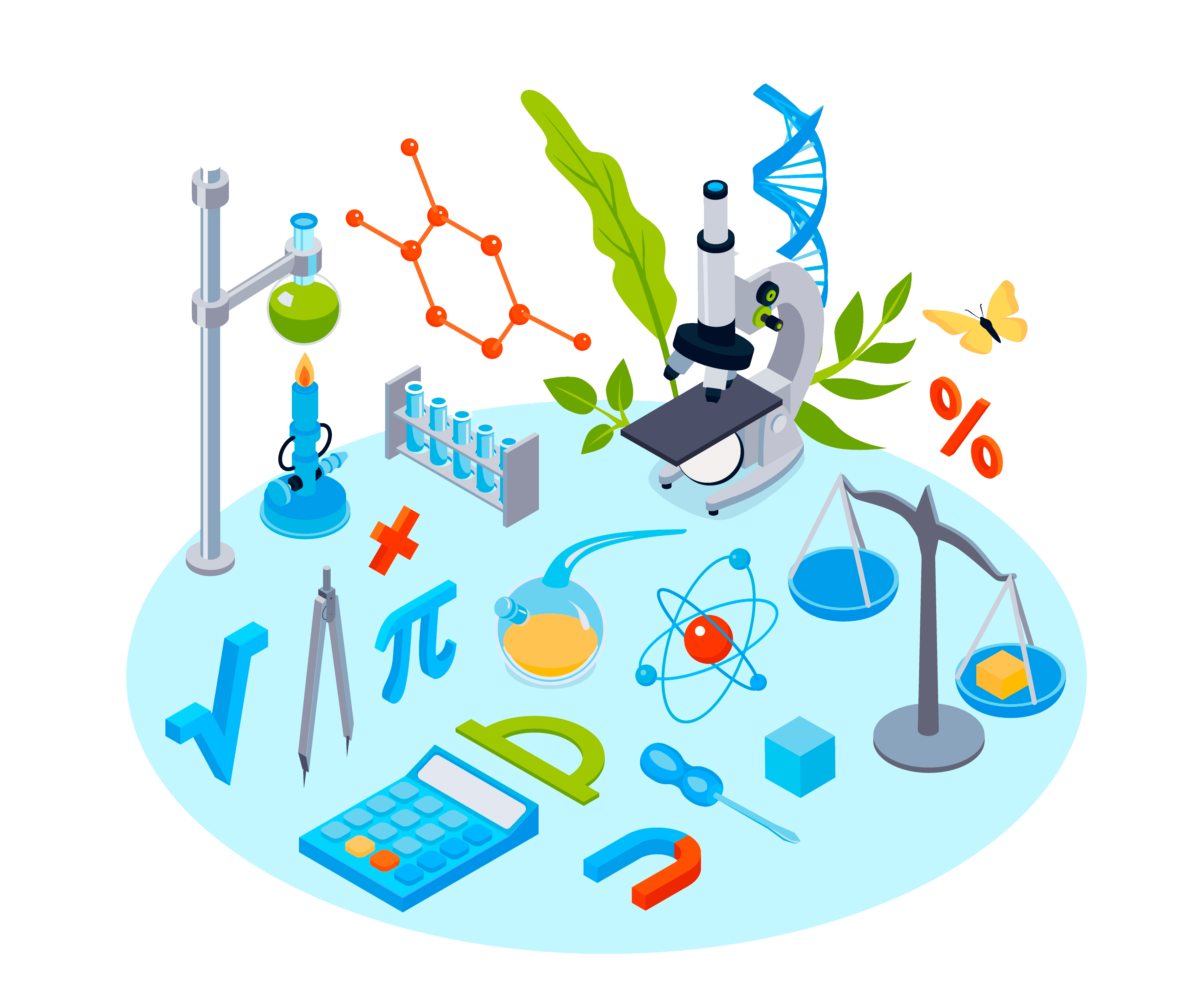
- Teacher: Dr. Anju Chaurasia
- Teacher: Dr Siddharth Gavhale
- Teacher: Ms Sushmita Kumar
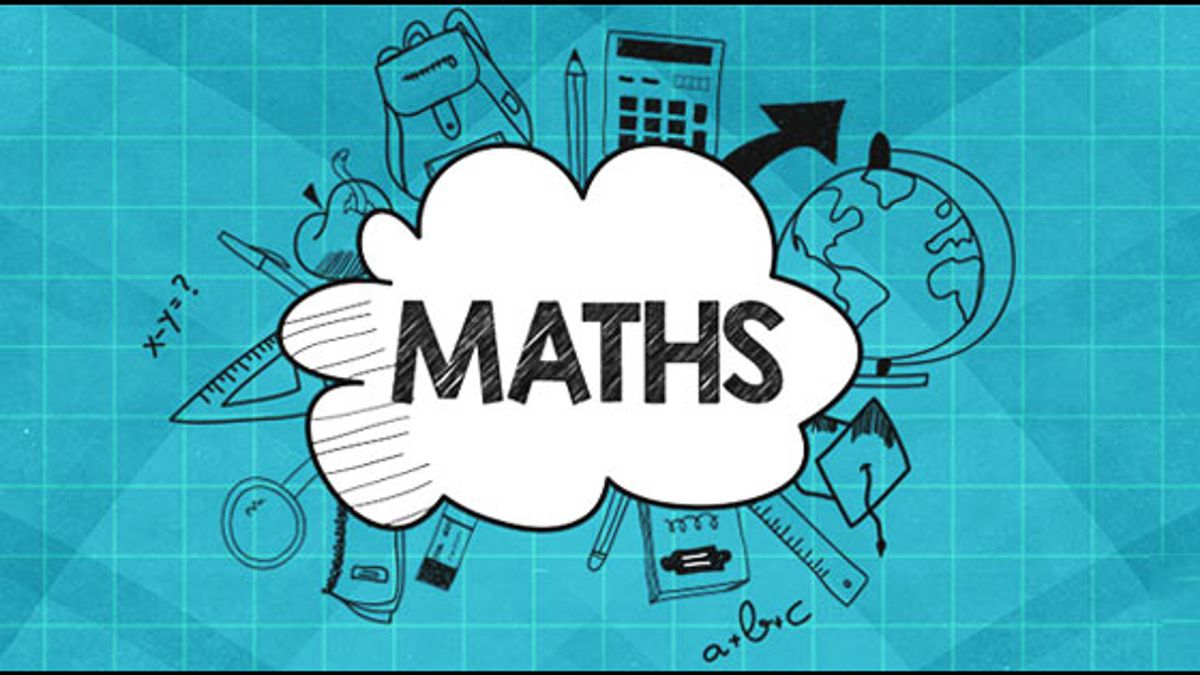
- Teacher: Dr. Anju Chaurasia
- Teacher: Dr. Maheshwari Biradar
- Teacher: Mrs. Ashwini Pawar
- Teacher: Ms Pratiksha Saheb
- Teacher: Dr. Rahul Sharma
- Teacher: Mr.Swet Chandan
- Teacher: Manasa Mandapati
- Teacher: Dr. Maheshwari Biradar
- Teacher: Dr Urmi Shah
- Teacher: Dr. Rahul Sharma
- Teacher: Mr Jeevraj S Bhalerao
1) Introduction to Basic Understanding of Typography principles
2) Basic anatomy, structure & construction of letters using Grids for Futura Font.
3) Styles of Types. Type family & Type Weights
4) Type Details & Hierarchy
5) Making Type Styles
6) Type As Monogram, Symbol, Identity.
- Teacher: Dr. Vijay Shah
- Teacher: Sandeep Dongare
- Teacher: Mr Amit Kumar Om
- Teacher: MS.DOYEL DUTTA
- Teacher: Arvind Singh
- Teacher: Dr. Kranti Shingate
- Teacher: Ms Anuradha Patil
- Teacher: Ms Anuradha Patil
- Teacher: MS.DOYEL DUTTA
- Teacher: Dr. Anupam Kumar
- Teacher: Ms. Pragati Pallavi

- Teacher: Dr. Meena Pandey

- Teacher: Dr. Meena Pandey
- Teacher: Rashmi Dharwadkar
- Teacher: Dr. Samarjit Roy
- Teacher: Ms Karishma Doke
- Teacher: Manasa Mandapati
- Teacher: Mr Mayank Nipane
- Teacher: Dr. Rahul Sharma
- Teacher: Dr. Bahubali Shiragapur
- Teacher: Mr Mayank Nipane
- Teacher: Dr. Rahul Sharma
- Teacher: Mr Mayank Nipane
- Teacher: Dr. Rahul Sharma
- Teacher: Mrs Arti Singh
- Teacher: Santosh Chavan
- Teacher: Varshini Kore
- Teacher: Saher Pathan
- Teacher: Dr. Bahubali Shiragapur
- Teacher: Mr. Yash Sanjay More
- Teacher: Dr. Bahubali Shiragapur
- Teacher: Ms Karishma Doke
- Teacher: Mr. Yash Sanjay More
- Teacher: Dr. Bahubali Shiragapur
- Teacher: Dr Amol Dhakne
- Teacher: Mr. Yash Sanjay More
- Teacher: Dr. Rahul Sharma
- Teacher: Durgesh Kumar
- Teacher: Dr Arvind Kumar Mathur
- Teacher: Dr Sandhya Shinde
- Teacher: Dr. Swapnil Bhurat
- Teacher: Dr Priya Charles
- Teacher: Pranil Choudhari
- Teacher: Dr Arvind Kumar Mathur
- Teacher: Dr Sandhya Shinde
- Teacher: Mrs Shweta Suryavanshi
- Teacher: Pranjal Shahinath Tekade
- Teacher: Dr Sandhya Shinde
- Teacher: Dr Shubhro Chakrabartty
- Teacher: Dr. Kranti Shingate
- Teacher: Ms. Pragati Pallavi
- Teacher: Dr. Sonal Mahajan
- Teacher: Dr. Sonal Mahajan
- Teacher: Dr. Sonal Mahajan
- Teacher: Dr. Surabhi Sonam
- Teacher: Dr. Maheshwari Biradar
- Teacher: Mr Shubham Jagdale
- Teacher: Dr. Rahul Sharma
- Teacher: Dr. Maheshwari Biradar
- Teacher: Mr Shubham Jagdale
- Teacher: Ms Vaishali Kumar
- Teacher: Dr. Rahul Sharma
- Teacher: Ms Krishnendu S
- Teacher: Dr Sarika Jadhav
- Teacher: Ms Krishnendu S
- Teacher: Dr Sarika Jadhav
- Teacher: Mrs Sunita Salunke
- Teacher: Dr. Rahul Sharma
- Teacher: Dr Vandna Srivastava

- Teacher: Mr Naman Kumar
- Teacher: GaganDeep Meena
- Teacher: Dr. Rahul Sharma
- Teacher: Mrs. Shweta Banait
- Teacher: Dr. Anju Chaurasia
- Teacher: Varsha Sambhaje
- Teacher: Dr. Anju Chaurasia
- Teacher: Dr Rishikant Rajdeepak
- Teacher: Varsha Sambhaje
- Teacher: Suprabhat Sinha
- Teacher: Dr Rishikant Rajdeepak
- Teacher: Suprabhat Sinha
- Teacher: Dr Vandna Srivastava
- Teacher: Dr. Anju Chaurasia
- Teacher: Dr Siddharth Gavhale
- Teacher: Varsha Sambhaje
- Teacher: Dr. Vinodkumar Ghale
- Teacher: Varsha Sambhaje
- Teacher: Dr. Rahul Sharma
- Teacher: Dr Siddharth Gavhale
- Teacher: Varsha Sambhaje
- Teacher: Dr. Rahul Sharma
- Teacher: Dr Rishikant Rajdeepak
- Teacher: Dr. Rahul Sharma
- Teacher: Ms. Ekta Dhanraj Talele
- Teacher: Mrs Sunita Salunke
- Teacher: Dr. Rahul Sharma
- Teacher: Dr Vandna Srivastava
- Teacher: Dr. Anju Chaurasia
- Teacher: Varsha Sambhaje
- Teacher: Suprabhat Sinha
- Teacher: Dr Rishikant Rajdeepak
- Teacher: Varsha Sambhaje
- Teacher: Suprabhat Sinha
- Teacher: Dr Vandna Srivastava
ESC1001 - Applied Computational Mathematics-I
|
Teaching Scheme |
Credits |
Examination Scheme |
|
TH: 03 Hrs/Week |
04 |
TH: 100 Marks (ISE – 20 Marks SBE – 30 Marks ESE – 50 Marks) |
|
TUT: 01 Hrs/Week |
|
TUT: 25 Marks |
|
Total Hrs: 36 |
|
Total Marks:125 |
Prerequisites: Matrices and Determinants, Differentiation and Integration, Differential Equation
Course Objectives:
1) To develop mathematical and computational skills
2) To enhance analytical and logical thinking power of students and deploy these skills effectively in their disciplines.
3) To equip the students with concepts and techniques in Matrices and Differential Calculus.
4) To enable the students to apply concepts and techniques in Ordinary & Partial differentiation.
Course Outcomes: (CO1-CO5 for 5 Modules)
After successful completion of the course, students will be able to:
CO1: Solve system of linear equations by using the concept of Rank of the matrix
CO2: Find Eigen Values and Eigen Vectors of the matrix
CO3: Solve and apply the knowledge of ordinary differential equation of first order and first degree
CO4: Deal with derivative of functions of several variables
CO5: Apply partial differentiation to calculate Errors, Approximations and Extreme values
|
Module – I Linear Algebra-I (07 Hrs) |
|
Module– II Linear Algebra-II (07 Hrs) |
|
Module – III Ordinary Differential Equations & its Applications (08 Hrs) |
|
Module – IV Differentiation of Functions of Several Variables (Partial Diff.) (07 Hrs) |
|
Module – V Applications of Partial Differentiation (07 Hrs) |
- Teacher: Dr. Vanita Daddi
- Teacher: Dr. Anju Chaurasia
- Teacher: Varsha Sambhaje
- Teacher: Dr. Rahul Sharma
- Teacher: Dr Rishikant Rajdeepak
- Teacher: Dr. Rahul Sharma
- Teacher: Ms. Ekta Dhanraj Talele
- Teacher: Dr Rishikant Rajdeepak
- Teacher: Varsha Sambhaje
- Teacher: Suprabhat Sinha
- Teacher: Dr Vandna Srivastava
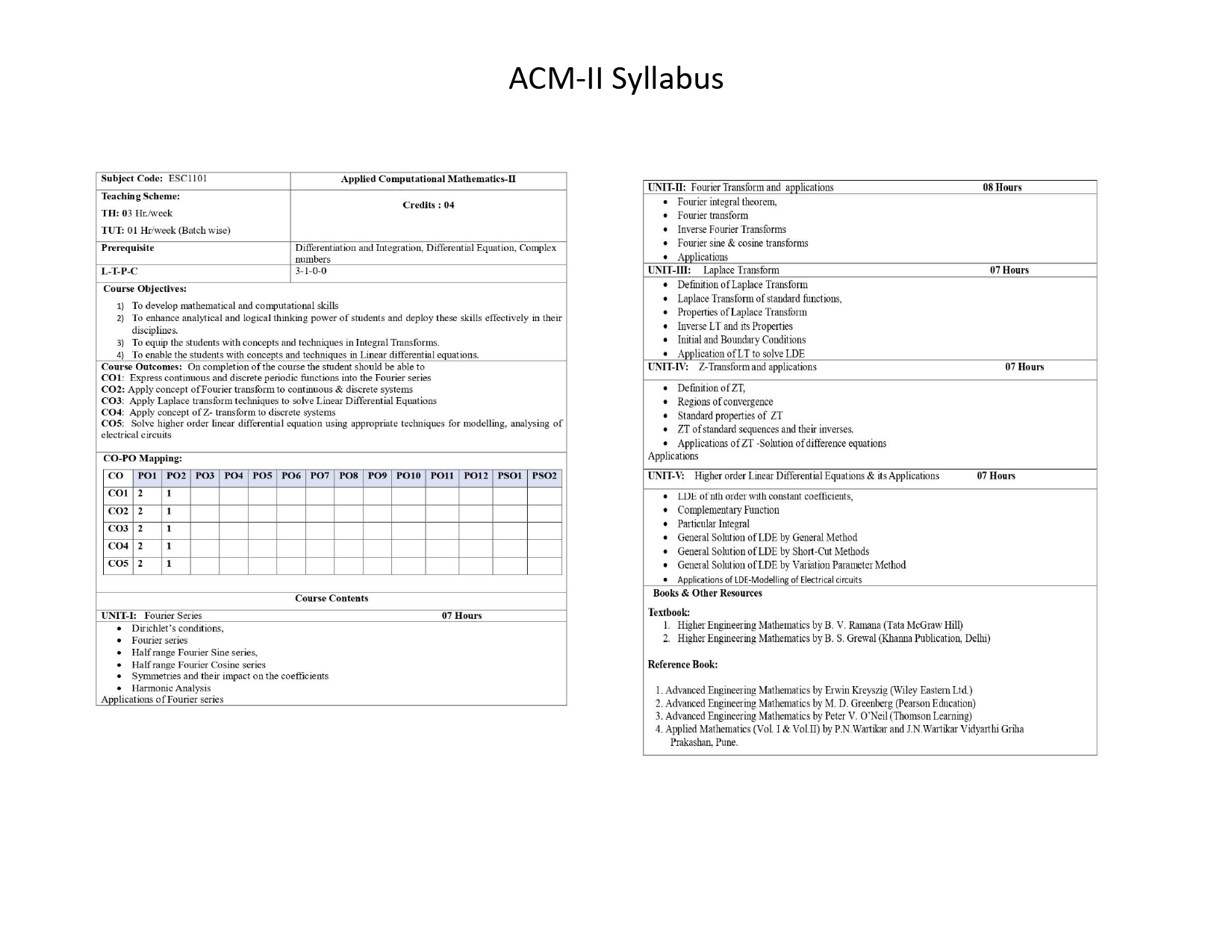
|
Subject Code: ESC1101 |
Applied Computational Mathematics-II |
||||||||||||||||||||||||||||||||||||||||||||||||||||||||||||||||||||||||||||||||||||||||||
|
Teaching Scheme: TH: 03 Hr./week TUT: 01 Hr/week (Batch wise) |
Credits : 04
|
||||||||||||||||||||||||||||||||||||||||||||||||||||||||||||||||||||||||||||||||||||||||||
|
Prerequisite |
Differentiation and Integration, Differential Equation, Complex numbers |
||||||||||||||||||||||||||||||||||||||||||||||||||||||||||||||||||||||||||||||||||||||||||
|
L-T-P-C |
3-1-0-0 |
||||||||||||||||||||||||||||||||||||||||||||||||||||||||||||||||||||||||||||||||||||||||||
|
Course Objectives: 1) To develop mathematical and computational skills 2) To enhance analytical and logical thinking power of students and deploy these skills effectively in their disciplines. 3) To equip the students with concepts and techniques in Integral Transforms. 4) To enable the students with concepts and techniques in Linear differential equations. |
|||||||||||||||||||||||||||||||||||||||||||||||||||||||||||||||||||||||||||||||||||||||||||
|
Course Outcomes: On completion of the course the student should be able to CO1: Express continuous and discrete periodic functions into the Fourier series CO2: Apply concept of Fourier transform to continuous & discrete systems CO3: Apply Laplace transform techniques to solve Linear Differential Equations CO4: Apply concept of Z- transform to discrete systems CO5: Solve higher order linear differential equation using appropriate techniques for modelling, analysing of electrical circuits
|
|||||||||||||||||||||||||||||||||||||||||||||||||||||||||||||||||||||||||||||||||||||||||||
|
CO-PO Mapping:
|
|||||||||||||||||||||||||||||||||||||||||||||||||||||||||||||||||||||||||||||||||||||||||||
|
Course Contents |
|||||||||||||||||||||||||||||||||||||||||||||||||||||||||||||||||||||||||||||||||||||||||||
|
UNIT-I: Fourier Series 07 Hours |
|||||||||||||||||||||||||||||||||||||||||||||||||||||||||||||||||||||||||||||||||||||||||||
|
· Dirichlet’s conditions, · Fourier series · Half range Fourier Sine series, · Half range Fourier Cosine series · Symmetries and their impact on the coefficients · Harmonic Analysis Applications of Fourier series |
|||||||||||||||||||||||||||||||||||||||||||||||||||||||||||||||||||||||||||||||||||||||||||
|
UNIT-II: Fourier Transform and applications 08 Hours |
|||||||||||||||||||||||||||||||||||||||||||||||||||||||||||||||||||||||||||||||||||||||||||
|
· Fourier integral theorem, · Fourier transform · Inverse Fourier Transforms · Fourier sine & cosine transforms · Applications |
|||||||||||||||||||||||||||||||||||||||||||||||||||||||||||||||||||||||||||||||||||||||||||
|
UNIT-III: Laplace Transform 07 Hours |
|||||||||||||||||||||||||||||||||||||||||||||||||||||||||||||||||||||||||||||||||||||||||||
|
· Definition of Laplace Transform · Laplace Transform of standard functions, · Properties of Laplace Transform · Inverse LT and its Properties · Initial and Boundary Conditions · Application of LT to solve LDE |
|||||||||||||||||||||||||||||||||||||||||||||||||||||||||||||||||||||||||||||||||||||||||||
|
UNIT-IV: Z-Transform and applications 07 Hours |
|||||||||||||||||||||||||||||||||||||||||||||||||||||||||||||||||||||||||||||||||||||||||||
|
· Definition of ZT, · Regions of convergence · Standard properties of ZT · ZT of standard sequences and their inverses. · Applications of ZT -Solution of difference equations Applications |
|||||||||||||||||||||||||||||||||||||||||||||||||||||||||||||||||||||||||||||||||||||||||||
|
UNIT-V: Higher order Linear Differential Equations & its Applications 07 Hours |
|||||||||||||||||||||||||||||||||||||||||||||||||||||||||||||||||||||||||||||||||||||||||||
|
· LDE of nth order with constant coefficients, · Complementary Function · Particular Integral · General Solution of LDE by General Method · General Solution of LDE by Short-Cut Methods · General Solution of LDE by Variation Parameter Method · Applications of LDE-Modelling of Electrical circuits |
|||||||||||||||||||||||||||||||||||||||||||||||||||||||||||||||||||||||||||||||||||||||||||
|
Books & Other Resources Textbook: 1. Higher Engineering Mathematics by B. V. Ramana (Tata McGraw Hill) 2. Higher Engineering Mathematics by B. S. Grewal (Khanna Publication, Delhi)
Reference Book:
1. Advanced Engineering Mathematics by Erwin Kreyszig (Wiley Eastern Ltd.) 2. Advanced Engineering Mathematics by M. D. Greenberg (Pearson Education) 3. Advanced Engineering Mathematics by Peter V. O’Neil (Thomson Learning) 4. Applied Mathematics (Vol. I & Vol.II) by P.N.Wartikar and J.N.Wartikar Vidyarthi Griha Prakashan, Pune. Theory & Tutorial/Practical Class
Tutorial: i) Tutorial for the subject shall be engaged in minimum three batches (batch size of 22 students maximum) per division. ii) Term work shall consist of five assignments on each Unit-I to Unit-V and is based on performance and continuous internal assessment. |
|||||||||||||||||||||||||||||||||||||||||||||||||||||||||||||||||||||||||||||||||||||||||||
- Teacher: Dr. Vanita Daddi
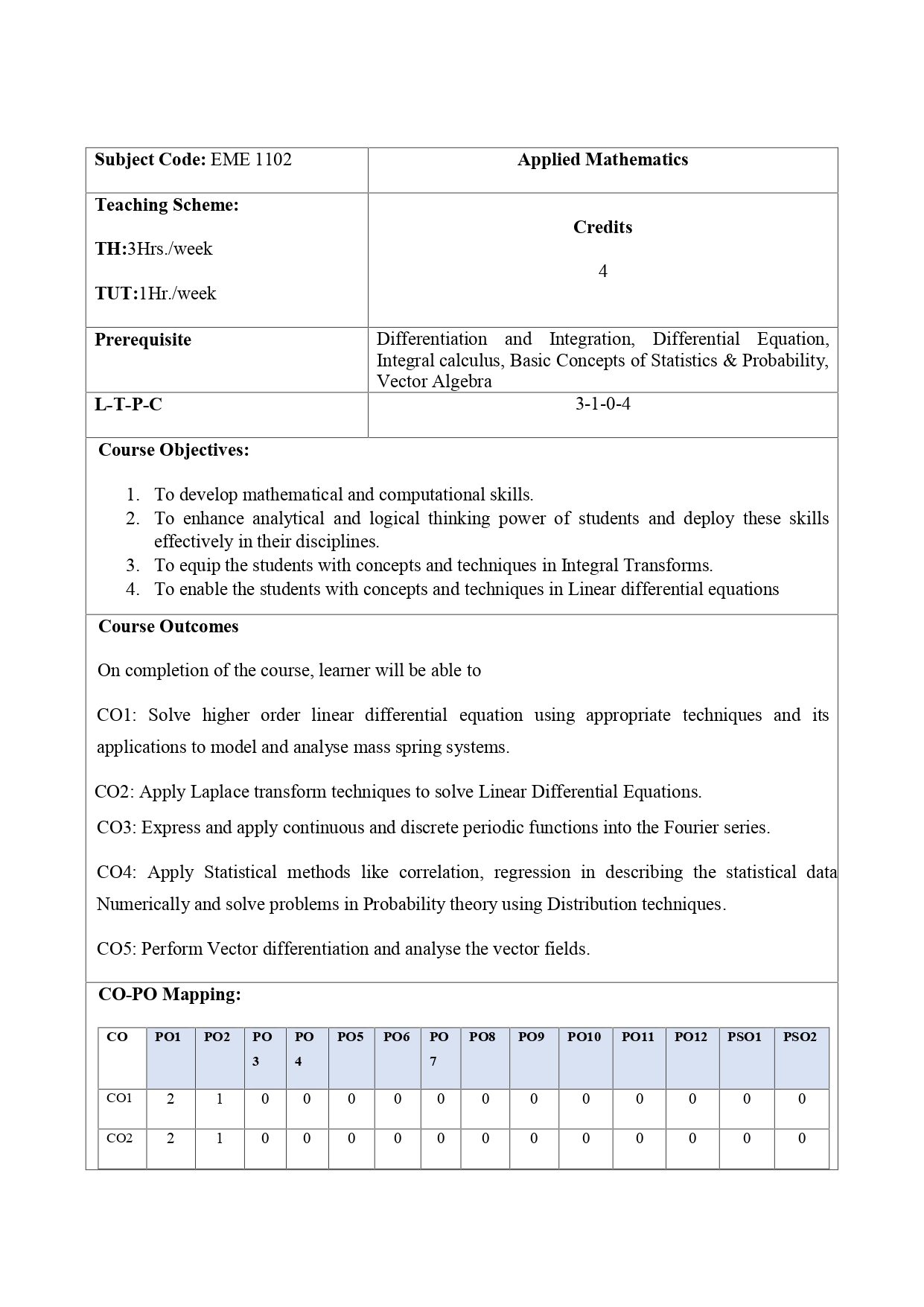
- Teacher: Sudhir Nanaso Narale
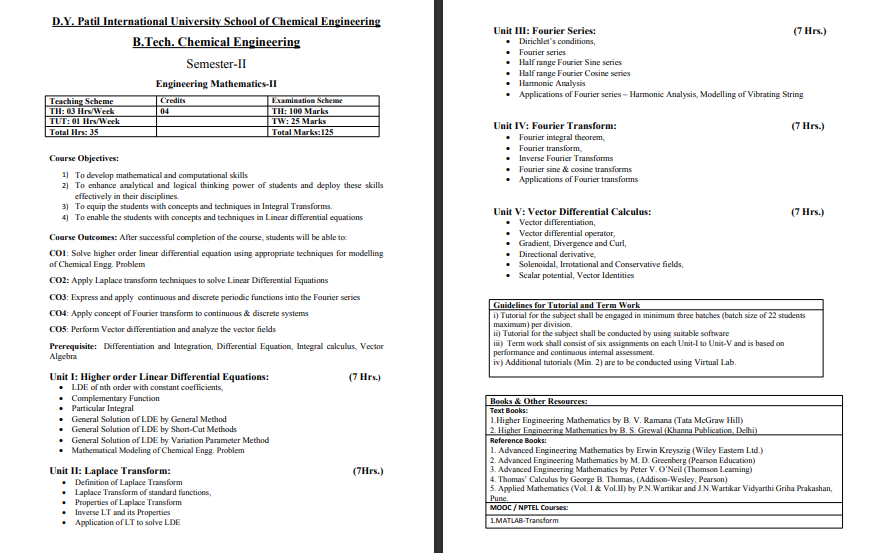
Unit I: Higher order Linear Differential Equations: (7 Hrs.)
LDE of nth order with constant coefficients,
Complementary Function
Particular Integral
General Solution of LDE by General Method
General Solution of LDE by Short-Cut Methods
General Solution of LDE by Variation Parameter Method
Mathematical Modeling of Chemical Engg. Problem
Unit II: Laplace Transform: (7Hrs.)
Definition of Laplace Transform
Laplace Transform of standard functions,
Properties of Laplace Transform
Inverse LT and its Properties
Application of LT to solve LDE
Unit III: Fourier Series: (7 Hrs.)
Dirichlet’s conditions,
Fourier series
Half range Fourier Sine series
Half range Fourier Cosine series
Harmonic Analysis
Applications of Fourier series – Harmonic Analysis, Modelling of Vibrating String
Unit IV: Fourier Transform: (7 Hrs.)
Fourier integral theorem,
Fourier transform,
Inverse Fourier Transforms
Fourier sine & cosine transforms
Applications of Fourier transforms
Unit V: Vector Differential Calculus: (7 Hrs.)
Vector differentiation,
Vector differential operator,
Gradient, Divergence and Curl,
Directional derivative,
Solenoidal, Irrotational and Conservative fields,
Scalar potential, Vector Identities
- Teacher: Mr Umesh Narkhede
- Teacher: Mrs.Mayura Abhijit khanore
- Teacher: Ms Yashswee Ghorpade
- Teacher: Dr. Lubna Shaik
- Teacher: Ms Naasrin Israiel Shaikh
- Teacher: Ms Varshini Dayanand Kore
- Teacher: Dr. Ragini Pandey
- Teacher: Dr. Sanjay Kumar
- Teacher: Ms. Surbhi Pandya
- Teacher: Varshini Dayanand Kore
- Teacher: Dr. Sanjay Kumar
- Teacher: Dr Sangeeta Benni
- Teacher: Dr. Vandana Patil
- Teacher: Mr. Vivek Prakash Magar
- Teacher: Dr. Dipika Pradhan
- Teacher: Dr. Rahul Sharma
- Teacher: Dr. Dipika Pradhan
- Teacher: Dr. Rahul Sharma
- Teacher: Dr. Prateek Srivastav
- Teacher: Ms Unnati Sunil Darak
- Teacher: Dr. Satyen Marathe
- Teacher: Mr. Ajinkya Hiran
- Teacher: Mr. Ajinkya Hiran
- Teacher: Dr. Somya Dubey
- Teacher: Mr. Ajinkya Hiran
- Teacher: Mr Jeevraj S Bhalerao
- Basic Calligraphy:
- Understanding Basic Strokes, Lettering sense, Aesthetics in Calligraphy Design,
- Different Tool angles of the nib & how to use it. Construction of Lower Case Letters
- Construction of Lower Case Letters
- Construction of Capital Case Letters
- Using Basis Shapes & constructing letters
- Play of various tools & creating decorative forms
- Practicing A to Z letters using the sentence " Quick Brown Fox Jumps Over The Lazy Dog"
- Importance of N spacing
- Creating Invitation, Greeting Cards
- Basic Letter Design:
- Understanding Type,
Fonts and their uses in Communication Design
- Understanding the
Anatomy of Type.
- Uses of Positive
& Negative Space.
- Understanding
Legibility & Readability Rules, Compositions of different types.
- Understanding uses of
Display & Script Typefaces.
- Understanding
Typography in the context of Digital Media Resolution.
- Understanding Type, Fonts and their uses in Communication Design
- Understanding the Anatomy of Type.
- Uses of Positive & Negative Space.
- Understanding Legibility & Readability Rules, Compositions of different types.
- Understanding uses of Display & Script Typefaces.
- Understanding Typography in the context of Digital Media Resolution.
- Teacher: Dr. Vijay Shah
The design, construction, and upkeep of the natural and physical built environment, including public works like roads, bridges, canals, dams, airports, sewage systems, pipelines, building structural elements, and railroads, are the focus of the professional engineering field known as civil engineering.
- Teacher: Dr. Pravin Gorde
- Teacher: Dr. Vijay Shah
- Teacher: Dr. Vijay Shah
- Teacher: Dr Arvind Kumar Mathur
- Teacher: Mr Abhijeet Pawar
- Teacher: Mrs Sarika Satpute
- Teacher: Mrs Sarika Satpute
- Teacher: Mrs. Shweta Banait
- Teacher: Ms Anupurba Das
- Teacher: Ms Karishma Doke
- Teacher: Kunal Dumbre
- Teacher: Manasa Mandapati
- Teacher: Prabhu Reddy
- Teacher: Dr. Gaurav Kumar Singh
- Teacher: Dr. B. Pavan Babu
- Teacher: Dr. Swapnil Bhurat
- Teacher: Ms Anupurba Das
- Teacher: Dr Arvind Kumar Mathur
- Teacher: Prabhu Reddy
- Teacher: Mr Laksh Talreja
- Teacher: Dr. Laxmi Priya Sahu
- Teacher: Dr. Rahul Sharma
- Teacher: Dr. Gaurav Kumar Singh
- Teacher: Tanvi Rajendra Pansare
- Teacher: Dr. Rahul Sharma
- Teacher: Dr. Gaurav Kumar Singh
- Teacher: Dr Dipti chandra
- Teacher: Dr. Rahul Sharma
- Teacher: Dr. Gaurav Kumar Singh
- Teacher: Mrs. Shweta Banait
- Teacher: Ms Anupurba Das
- Teacher: Ms Karishma Doke
- Teacher: Kunal Dumbre
- Teacher: Manasa Mandapati
- Teacher: Prabhu Reddy
- Teacher: Dr. Laxmi Priya Sahu
- Teacher: Mrs Priyanka Mahajan
- Teacher: Dr Arvind Kumar Mathur
- Teacher: Mrs Sarika Satpute
- Teacher: Dr. Sirshendu Arosh
- Teacher: Dr. Yudhishthir Raut
- Teacher: Dr. Rahul Sharma
- Teacher: Dr Sandhya Shinde
- Teacher: Varun Sharma
- Teacher: Mr.Swet Chandan
- Teacher: Varun Sharma
- Teacher: Dr. Vijay Shah
- Teacher: Dr. Kranti Shingate
- Teacher: Dr Richa Purohit
- Teacher: Mr Mahendra Patel
- Teacher: Dr. Vijay Shah
- Teacher: Dr. Vijay Shah
- Teacher: Mr Jeevraj S Bhalerao
- Teacher: Dr. Vijay Shah
- Teacher: Mrs. Mangal Anilkumar Ambi
- Teacher: Dr. Mugdha Sirvastava
- Teacher: Mrs. Mangal Anilkumar Ambi
- Teacher: Dr. Mugdha Sirvastava
- Teacher: Dr Priyatosh Ranjan
- Teacher: MS.DOYEL DUTTA
- Teacher: MS.DOYEL DUTTA
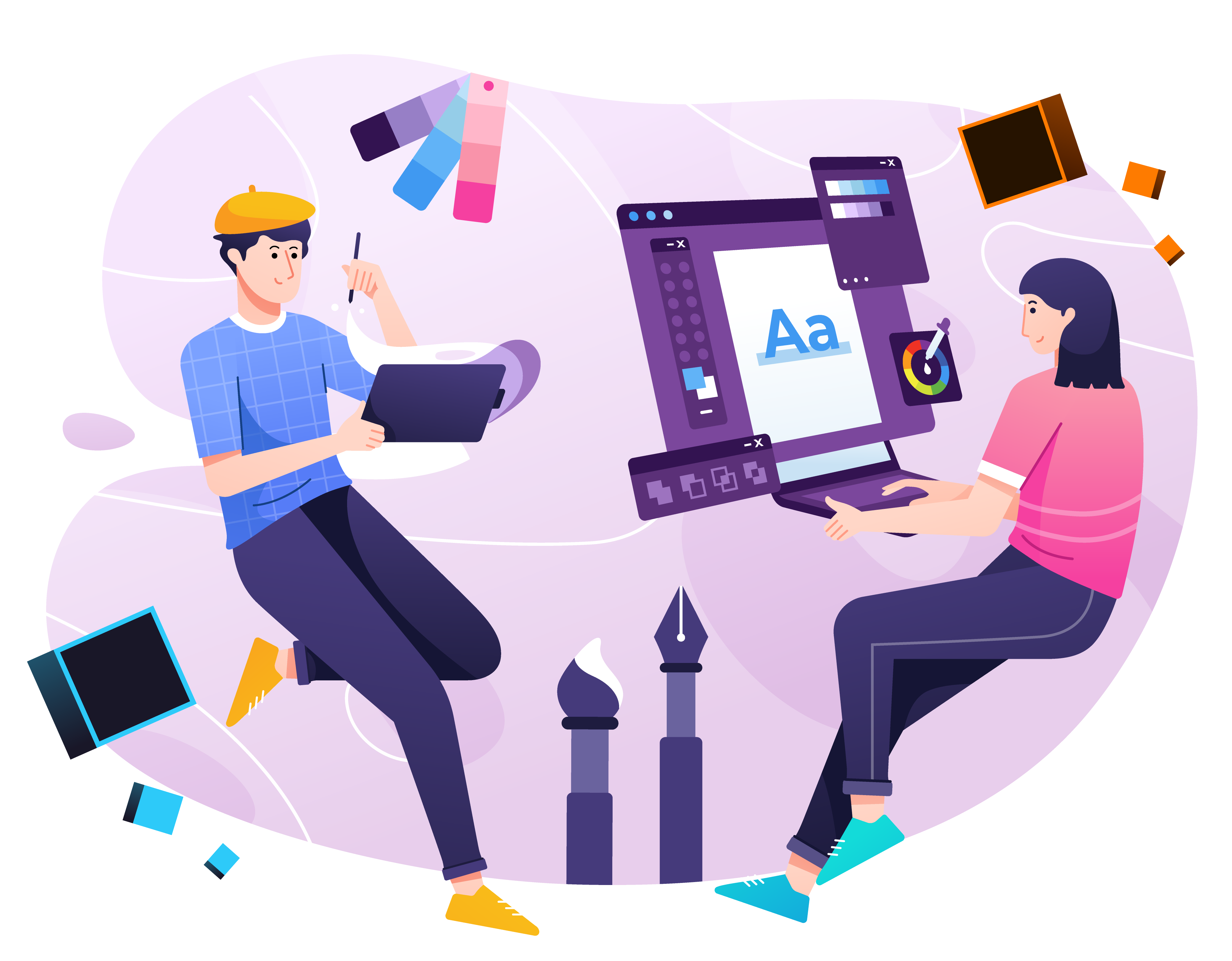
Upon completion of this course, the student should be able to:
● Describe the basics of Design and Graphics
● Utilize knowledge gained in the application of elements and principles of design in different forms of Visual and Graphic Communication for Print and Web Media
● Apply the knowledge of photo editing software for the design
- Teacher: Mr Amit Kumar Om

- Teacher: Mr Amit Kumar Om
This course provides an introduction to digital drafting tools and techniques essential for Civil Engineering students. Covering fundamental concepts, students will learn how to create precise and professional digital drawings using industry-standard software. The course emphasizes the practical application of drafting principles to develop engineering drawings and layouts for construction and infrastructure projects.
Throughout the course, students will gain proficiency in using Computer-Aided Design (CAD) software, understanding layers, scales, dimensions, and annotations. Students will also explore drafting standards, symbols, and conventions commonly used in civil engineering projects. Additionally, the course will cover essential skills like managing digital files, collaborating on design projects, and preparing documents for printing and presentation.
By the end of the course, students will have developed a foundational skill set in digital drafting, enabling them to create accurate, detailed engineering drawings that meet professional and industry standards, preparing them for more advanced applications in civil engineering design and planning
- Teacher: Dr. Atul Kolhe
- Teacher: MS.DOYEL DUTTA
- Teacher: Dr Arvind Kumar Mathur
- Teacher: Prof. Mangesh Javkhedkar
- Teacher: Dr. Madhavi Deshpande
- Teacher: Dr. Kranti Shingate
- Teacher: Dr. Madhavi Deshpande
- Teacher: Dr. Kranti Shingate
- Teacher: Prof.Shashi Singh
- Teacher: Ms Rupali Gupta
- Teacher: Mrs Venkata Mrudula Bhimavarapu
This course is for winter semester
- Teacher: MS.DOYEL DUTTA
- Teacher: Dr. Swapnil Bhurat
- Teacher: Dr Arvind Kumar Mathur
- Teacher: Dr. Manish Sharma
- Teacher: Ms. Monika Dangore
- Teacher: Ms. Prachi Soniminde
- Teacher: Aabha Gupta
- Teacher: Suvarna Ketankumar Karankal
- Teacher: Mrs. Heena Bhatia
- Teacher: Prachi Chhajed
- Teacher: Dr Richa Purohit
- Teacher: Ms. Prachi Soniminde
- Teacher: Mrs. Heena Bhatia
- Teacher: Dr Richa Purohit
- Teacher: Mr Nikhil Soniminde
- Teacher: Mrs. Heena Bhatia
- Teacher: Dr Richa Purohit
- Teacher: Ms Dipali P Dhokane
- Teacher: Mrs. Heena Bhatia
- Teacher: Dr Richa Purohit
- Teacher: Mr Nikhil Soniminde
- Teacher: Jyoti Yadav
- Teacher: Mrs. Heena Bhatia
- Teacher: Dr Richa Purohit
- Teacher: Mr Nikhil Soniminde
- Teacher: Mrs. Heena Bhatia
- Teacher: Dr Richa Purohit
- Teacher: Varsha Sambhaje

- Teacher: Dr. Anju Chaurasia
- Teacher: Sneha Ashok Adsule
- Teacher: Mrs. Heena Bhatia
- Teacher: Ms. Bi Bi Humera
- Teacher: Dr. Neera Kumari
- Teacher: Mr Shrikant Mahindrakar
- Teacher: Dr Richa Purohit
- Teacher: Mrs. Heena Bhatia
- Teacher: Uma Bhushan
- Teacher: Dr Richa Purohit
- Teacher: Mrs. Heena Bhatia
- Teacher: Vahida Pathan
- Teacher: Dr Richa Purohit
- Teacher: Vahida Pathan
- Teacher: Mrs. Heena Bhatia
- Teacher: Mrs.Madhuri Pagale
- Teacher: Dr Richa Purohit
- Teacher: Mr Nikhil Soniminde
- Teacher: Mr. Ranjeet Ranjan Jha
- Teacher: Archana Kadam
- Teacher: Bhakti Sathe
- Teacher: Vahida Pathan
- Teacher: Ms Hetal Thaker
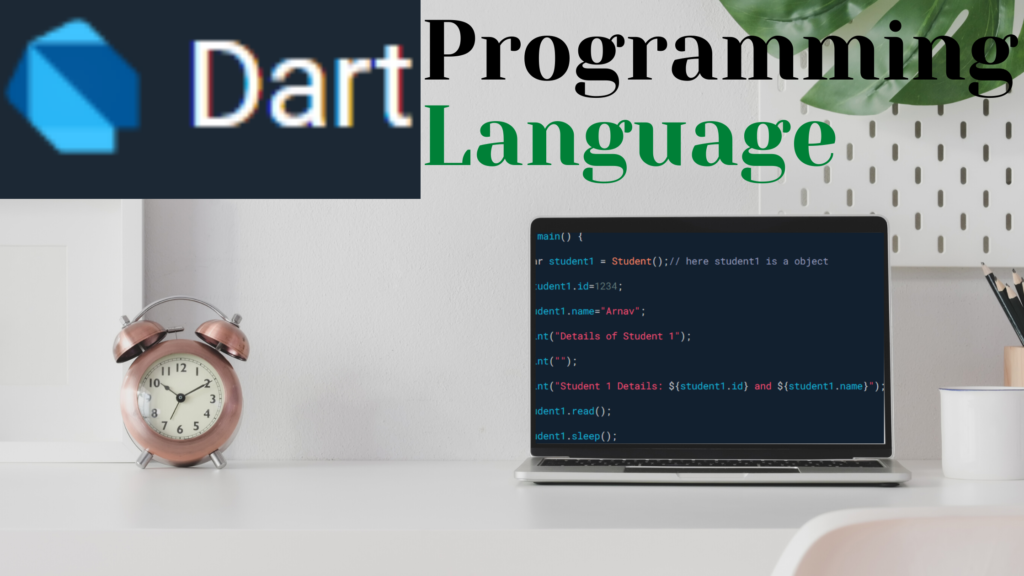
- Teacher: Dr Sarika Jadhav
- Teacher: Mrs. Maya Ranjeet Pisal
- Teacher: Ms Dipali P Dhokane
- Teacher: Mrs. Maya Ranjeet Pisal

- Teacher: Ms.Nikita Pagar
- Teacher: Vahida Pathan

- Teacher: Dr Sarika Jadhav
- Teacher: Ms Hetal Thaker

- Teacher: Dr Sarika Jadhav
- Teacher: Varun Sharma
- Teacher: Vahida Pathan
- Teacher: Mrs. Heena Bhatia
- Teacher: Dr. Aaradhana A. Deshmukh
- Teacher: Dr Richa Purohit
- Teacher: Ms Zalak Thakkar
- Teacher: Dr. Aaradhana A. Deshmukh
- Teacher: Ms Zalak Thakkar
- Teacher: Mrs. Heena Bhatia
- Teacher: Manasa Mandapati
- Teacher: Dr Richa Purohit
- Teacher: Mrs. Heena Bhatia
- Teacher: Manasa Mandapati
- Teacher: Dr Richa Purohit
- Teacher: Mrs. Heena Bhatia
- Teacher: Manasa Mandapati
- Teacher: Dr Richa Purohit
- Teacher: Mrs. Heena Bhatia
- Teacher: Dr Sarika Jadhav
- Teacher: Dr Richa Purohit
- Teacher: Mr Nikhil Soniminde
- Teacher: Heena Ahuja
- Teacher: Mrs. Heena Bhatia
- Teacher: Dr Richa Purohit
- Teacher: Ms Zalak Thakkar
- Teacher: Mrs. Heena Bhatia
- Teacher: Dr Richa Purohit
- Teacher: Ms Zalak Thakkar
- Teacher: Mrs. Heena Bhatia
- Teacher: Anil Narasipuram
- Teacher: Ms. Prachi Soniminde
- Teacher: Ms Zalak Thakkar
- Teacher: Mrs. Heena Bhatia
- Teacher: Anil Narasipuram
- Teacher: Dr Richa Purohit
- Teacher: Ms. Prachi Soniminde
- Teacher: Mrs. Heena Bhatia
- Teacher: Manasa Mandapati
- Teacher: Dr Richa Purohit
- Teacher: Ms Zalak Thakkar
- Teacher: Mrs. Heena Bhatia
- Teacher: Dr Sarika Jadhav
- Teacher: Dr Richa Purohit
- Teacher: Mr Nikhil Soniminde
- Teacher: Dr Richa Purohit
- Teacher: Ms. Prachi Soniminde
- Teacher: Dr Richa Purohit
- Teacher: Ms. Prachi Soniminde
- Teacher: Mrs. Heena Bhatia
- Teacher: Mrs. Heena Bhatia
- Teacher: Archana Kadam
- Teacher: Rashmi Dharwadkar
- Teacher: Bhakti Sathe
- Teacher: Vahida Pathan
- Teacher: Dr. Kranti Shingate
- Teacher: Dr. Palash Bairagi
- Teacher: Mrs. Rita Kakade
- Teacher: Mrs. Heena Bhatia
- Teacher: Mrs.Madhuri Pagale
- Teacher: Dr. Yudhishthir Raut
- Teacher: Dr. Yudhishthir Raut
- Teacher: Dr. Tamal Mondal
- Teacher: Mrs.Madhuri Pagale
- Teacher: Samruddhi Sapkal
- Teacher: Ms Priyanka Karale
- Teacher: Dr. Samarjit Roy
- Teacher: Ms Anupurba Das
- Teacher: Dr Anuj Kumar
- Teacher: Samruddhi Sapkal
- Teacher: Ms Pratiksha Saheb
- Teacher: Dr. Rahul Sharma
- Teacher: Ms Priyanka Karale
- Teacher: Dr. Samarjit Roy
Name of the Course: MMB 5003 Bio-entrepreneurship
- Course Instructor:
Name: Prof. Manoj Kumar AS
Office Number: 352
Phone: 9967181502
Email: manoj.kumar@dypiu.ac.in
Office hours: 9 am to 5 pm
Location: Akurdi
- Teaching Assistant:
None
- Level (who can take this course?): Graduates in Bioengineering and Biotechnology
- Credit:
L T P C
3 0 0 3
- Evaluation: Based on attendance, interactiveness, business model project, mid term examination score and end of semester examination score
- Breakup of evaluation:
Total marks: 100
Attendance & Responsiveness: 10%
Mid term Exam: 20%
Business Model Project: 20%
End of Semester Exam: 50%
- Maximum Number of Students: 30
- Actual Number of Students: 9
Prerequisite: Must be a student of M.Sc Medical Biotechnology
Course Syllabus:
|
Module no |
COURSE DESCRIPTION |
Lectures (hrs) |
|
Unit I:
|
Introduction and Overview of the Medical Biotechnology Industry Part I: translational biotechnology industry overview (include the commercialization pathways for drug, medical device, diagnostic companies) Part II: entrepreneurship/intrepreneurship) Part III: Lean Launchpad (LLP) methodology Part IV: Commercialization Knowledge Survey (CKS)
Starting a Company Part I: formation of BEEnopoly companies Part II: team assessments Business Model Part I: the business model canvas Part II: biotechnology business models
How to startup a Startup Part I: corporate structure (LLC, LLP, C-Corp, S-Corp, etc.) Part II: ownership/vesting Part III LLP check in (customer development
|
12 |
|
Unit II
|
Funding Part I: the funding process
Intellectual Property Part I: basic concept of intellectual properties (patents, Trademarks, Copyrights) |
|
|
Unit III
|
Regulatory Strategies Part I: The regulatory agencies Part II: reimbursement
Clinical Development Part I: pre clinical development (animal studies, admetox, etc.) Part II: clinical development, considerations for human experimentation. Part III: clinical trial design
Industry Perspective and Experiences
Oversight/Governance |
10 |
Lesson Plan (Class room lecture):
|
Sr. No |
Content |
Date of Lecture |
|
1 |
Overview of Bio-entrepreneurship |
August 2024 |
|
1 |
Translational biotechnology industry overview (including the commercialization pathways for drug, medical device, diagnostic companies) |
August 2024 |
|
2 |
Development and Commercialization of Plasma products (including preclinical and clinical development) |
August 2024 |
|
3 |
Development and Commercialization of Biosimilars (including preclinical and clinical development) |
August 2024 |
|
4 |
Development and Commercialization of Gene therapy products (including preclinical and clinical development) |
September 2024 |
|
5 |
Development and Commercialization of Cell therapy products (including preclinical and clinical development) |
September 2024 |
|
6 |
Development and Commercialization of Vaccines (including preclinical and clinical development) |
|
|
7 |
Development and Commercialization of Biotech services |
|
|
8 |
Regulatory agencies and Regulatory pathways in Biotech business |
September 2024 |
|
9 |
Student presentations on fundamental techniques in the development of Biotech products and services |
September 2024 |
|
10 |
Biotech Business Models |
October 2024 |
|
11 |
Starting a Biotech company, the Lean start up concept, the Lean Launchpad methodology, and the Business Model Canvas |
October 2024 |
|
12 |
Intellectual Property - Patents, Trademarks and Copyrights |
October 2024 |
|
|
Funding for Bio-entrepreneurship |
October 2024 |
|
13 |
Team building and Team assessment |
November 2024 |
|
14 |
Corporate structure – LLC, LLP, C-Corp, S-Corp, Ownership / Vesting |
November 2024 |
|
15 |
Customer development and Customer satisfaction |
November 2024 |
|
16 |
Ethical considerations in Bio-entrepreneurship |
November 2024 |
|
17 |
Oversight and Governance of Biotech business |
November 2024 |
- References:
(i) Steve Blank and Bob Dorf: The Startup Owner's Manual: The Step-By-Step Guide for Building a Great Company. K & S Ranch.
(ii) Craig Shimasaki, ed.: Biotechnology Entrepreneurship: Starting, Managing, and Leading Biotech Companies. Elsevier Inc., 2014.
(iii) Lawton Robert Burns: The Business of Healthcare Innovation. Cambridge University Press, Cambridge UK, 2005
(iv) Burrill & Company Annual Biotechnology Industry Report
(v) Cynthia Robbins-Roth: From Alchemy to IPO: The Business of Biotechnology. Basic Books, 2001
(vi) Barry Werth: The Billion Dollar Molecule: One Company’s Quest for the Perfect Drug Simon & Schuster, 1995.
- Course Outcome:
The overall aim of the course is to give the participants an insight into field of bio-entrepreneurship, i.e. business within the life sciences. Upon completion of the course, the student will be able to describe the processes of product and service development in the life science sector, understand the similarities and differences in the development of different bioproducts and bio services, demonstrate a general understanding of the central role that business development plays for the biomedical industry, assess and compare different forms of IP and perform basic IP analysis, apply idea creation tools, write, and critically review a business plan, perform a basic market analysis in the life science sector and analyze and critically asses a case study.
- Teacher: Dr Manoj Kumar
- Teacher: Dr Shubhro Chakrabartty
- Teacher: Dr Sumit Kumar
- Teacher: Nishant Gaur
- Teacher: Dr. Sonal Mahajan
BCH112 Biochemistry
L T P Cr
3 0 3 4.5
COURSE OBJECTIVES:
This course is designed to give the basic understanding of various molecules involved in the chemical foundation of the living system and their structure and biological function. This course will give a general idea about energy transformation and different chemical processes involved in it.
Module 1:|
1. |
Chemical foundation of living cell: Introduction to Biochemistry, Introduction to various types of biomolecules like (Carbohydrate, Lipids, Proteins, Amino Acid involved in formation of cell) and their classification in detail. Scope and Importance of Biochemistry in Nutrition, Agriculture and Pharmacy, etc. |
Module 2:
Structure and function of biomolecules Part I
Carbohydrates: Structure and function of Mono, Di, polysaccharide and glycoproteins.
Lipids: Structure and function of important lipids: Phospholipids, Sphingolipids and Lipoproteins.Module 3:
Structure and function of biomolecules Part II
Proteins and Amino acid: Structure of amino acids. Primary, secondary tertiary and Quaternary structure of proteins. Biological function of protein and amino acid.
Enzymes: Chemical nature & broad classification of enzymes, M-M kinetics.Module 4:
Bioenergetics:
Basic Concept & Design of energy transformation, Primary and Secondary metabolites involved.
Major processes of energy transformation: Glycolysis, TCA cycle, fatty acid synthesis and oxidation, deamination, transamination, etc.Reference Book:
Text Book of Biochemistry by U. Satyanarayana
- Teacher: Ms. Poonam Prakash Chim
- Teacher: Dr. Lubna Shaik
- Teacher: Nadaf Arshad Yunus

- Teacher: Dr. Sonal Mahajan
- Teacher: Ms . Priyanka Eknath Doke
- Teacher: Ms . Priyanka Eknath Doke

- Teacher: Mr. Saikat Dutta
- Teacher: Dr. Sonal Mahajan

- Teacher: Dr. Meena Pandey
- Teacher: Dr. Meena Pandey
- Teacher: Dr. Meena Pandey
- Teacher: Ms Unnati Sunil Darak
- Teacher: Dr.Anjali Gupta
- Teacher: Ms. Khushboo Bhurat
- Teacher: Dr.Anjali Gupta
- Teacher: Dr. Kawita Kanoje
- Teacher: Dr.Anjali Gupta
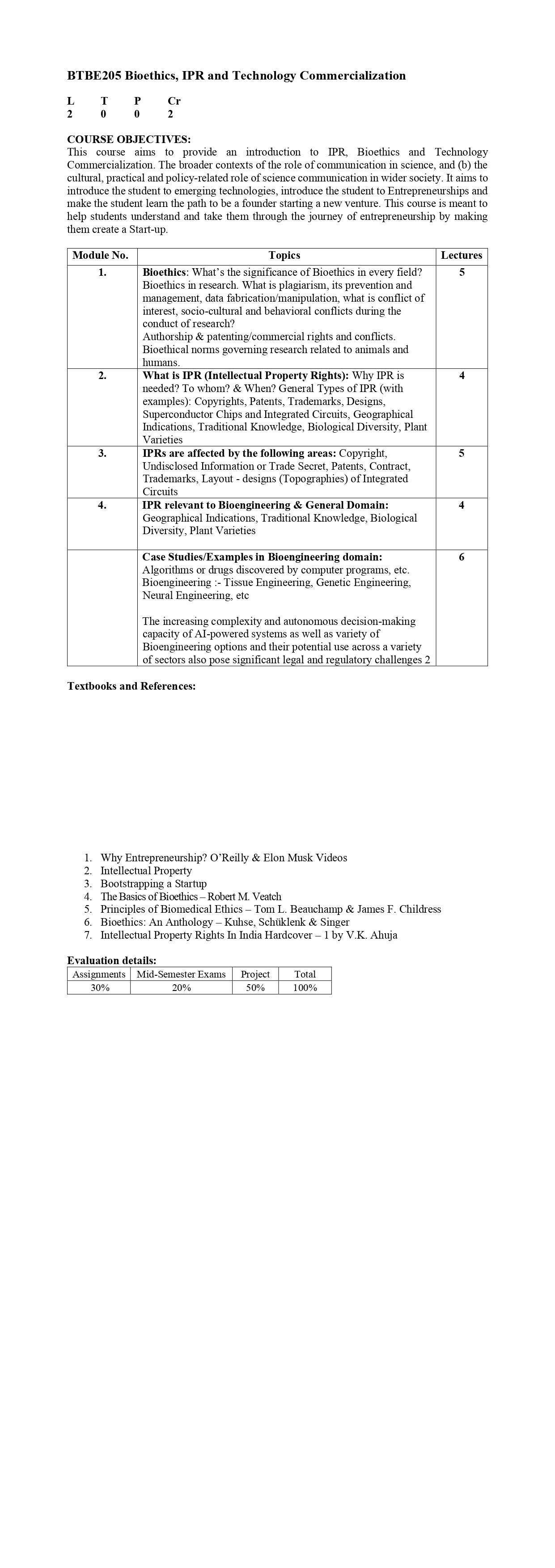
- Teacher: Dr. Mohini Suryawanshi
- Teacher: Priti Patil
- Teacher: Prof.Shashi Singh
- Teacher: Ms Unnati Sunil Darak
- Teacher: Dr.Anjali Gupta
- Teacher: Mrs. Mangal Anilkumar Ambi
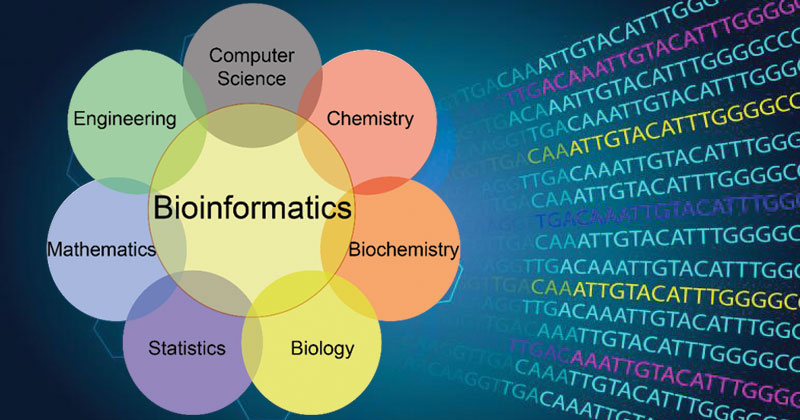
- Teacher: Dr. Surabhi Sonam
- Teacher: Mrs. Mangal Anilkumar Ambi
- Teacher: Dr. Surabhi Sonam
- Teacher: Mrs.Mayura Abhijit khanore
- Teacher: Ms Sakshi Ravindra Dhapatkar
- Teacher: Sakshi Ravindra Dhaptkar
- Teacher: Dharnidhar Kudal
- Teacher: Dr. Surabhi Sonam
- Teacher: Ms Unnati Sunil Darak
- Teacher: Ms Sakshi Ravindra Dhapatkar
- Teacher: Mr Rupam Ghosal
- Teacher: Dr Sumit Kumar
- Teacher: Prof.Shashi Singh
- Teacher: Ms Sakshi Ravindra Dhapatkar
- Teacher: Ms Tejaswini Sarwate
- Teacher: Ms Naasrin Israiel Shaikh
- Teacher: Mr Dineshkumar Turkar
Biology for Engineers -B.Tech Chemical engineering
- Teacher: Dr. Vijayalakshmi Srinivasan
- Teacher: Dr. Vijayalakshmi Srinivasan
- Teacher: Dr. Sanjay Kumar
- Teacher: Dr. Surabhi Sonam
- Teacher: Ms. Saher Dabir Pathan
- Teacher: Dr. Surabhi Sonam
- Teacher: Dr. Vijayalakshmi Srinivasan
- Teacher: Saher Pathan
- Teacher: Dr. Surabhi Sonam
- Teacher: Mr. Saikat Dutta
- Teacher: Dr. Sanjay Kumar
- Teacher: Dr. Surabhi Sonam
- Teacher: Mrs. Mangal Anilkumar Ambi
- Teacher: Dr. Surabhi Sonam
- Teacher: Dr Prafull Chavan
- Teacher: Dr Prafull Chavan
- Teacher: Dr. Surabhi Sonam
- Teacher: Ms Unnati Sunil Darak
- Teacher: Dr. Surabhi Sonam
- Teacher: Ms Unnati Sunil Darak
- Teacher: Dr. Surabhi Sonam
- Teacher: Harshana Srivastava
- Teacher: Mrs. Shubhangi V Patil
- Teacher: Mrs. Shubhangi V Patil
- Teacher: Dr Priyatosh Ranjan
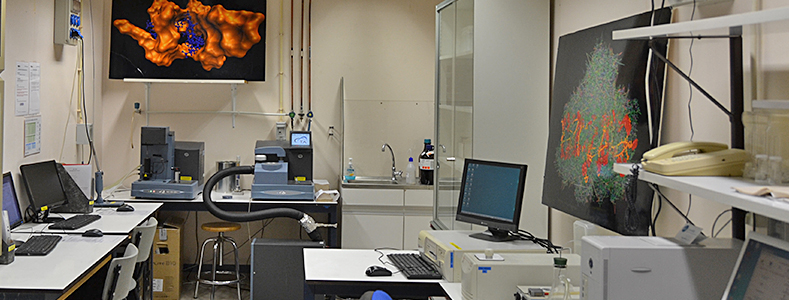
- Teacher: Dr. Sonal Mahajan

- Teacher: Dr. Sonal Mahajan
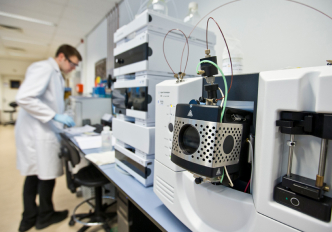
- Teacher: Dr. Sonal Mahajan
- Teacher: Ms Naasrin Israiel Shaikh
- Teacher: Dr. Babuskin Srinivasan
- Teacher: Ms. Presida Bacil Vanjare
COURSE DESCRIPTION:
The designed course is an amalgamation of mathematics, biology and industrial design, and deals with the design and development of equipment and processes for the manufacturing of products such as agriculture, food, feed, pharmaceuticals, chemicals, polymers etc.
COURSE OUTCOMES
After completion of the course the students gather knowledge on
Ø Media optimization- Different optimization strategies employed
Ø Design sterilization operations
Ø Describe the type of bioreactors employed
Ø Modes of fermentation- pros and cons of each operation
Ø Determine oxygen requirements via oxygen mass transfer coefficient
Ø Models used to study the growth of cells in the boreactor
Ø Cultivation of microbial, animal and plant cells in bioreactor
|
Module No. |
Topics |
Lectures |
|
1. |
Module 1: Overview of fermentation process & Media design Overview of fermentation industry-general requirements of fermentation process-basic configuration of fermentor (CSTR) and ancillaries, main parameters to be monitored and controlled in fermentation processes. Criteria for good medium, medium requirements for fermentation processes, carbon, nitrogen, minerals, vitamins and other complex nutrients, oxygen requirements, medium formulation of optimal growth and product formation, examples of simple and complex media, design of various commercial media for industrial fermentations – medium optimization methods |
6 |
|
2 |
METABOLIC STOICHIOMETRY AND ENERGETICS Stoichiometry of cell growth and product formation, elemental balances, degrees of reduction of substrate and biomass, available electron balances, yield coefficients of biomass and product formation, maintenance coefficients energetic analysis of microbial growth and product formation, oxygen consumption and heat evolution in aerobic cultures, thermodynamic efficiency of growth.
STERILIZATION KINETICS Thermal death kinetics of microorganisms, batch and continuous heat sterilization of liquid media, filter sterilization of liquid media, air sterilization and design of sterilization equipment - batch and continuous |
10 |
|
3. |
Module 3: Configuration of Bioreactors & Growth kinetics Bioreactor designs; Types of fermentation and fermenters; Concepts of basic modes of fermentation – Batch, fed batch ad continuous; Conventional fermentation v/s biotransformation; Solid substrate, surface and submerged fermentation; two stage cultivation Packed bed reactor, airlift reactor, introduction to fluidized bed reactor bubble column reactors
Simple unstructured models for microbial growth, Monod model, growth of filamentous organisms, product formation kinetics - Leudeking- Piret models, substrate and product inhibition on cell growth and product formation. Biomass estimation – Direct and Indirect methods. |
10 |
|
4 |
Module 4: BIOREACTOR SCALE UP Regime analysis of bioreactor processes, oxygen mass transfer in bioreactors – microbial oxygen demands; methods for the determination of mass transfer coefficients; mass transfer correlations. Scale up criteria for bioreactors based on oxygen transfer, power consumption and impeller tip speed. |
4 |
|
5. |
Module 5: MODELLING AND SIMULATION OF BIOPROCESSES Study of structured models for analysis of various bioprocess – compartmental models, models of cellular energetics and metabolism, single cell models, plasmid replication and plasmid stability model. Dynamic simulation of batch, fed batch, steady and transient culture metabolism. RECOMBINANT CELL CULTIVATION Different host vector system for recombinant cell cultivation strategies and advantages. E.coli, yeast Pichia pastoris/ Saccharomyces cereviseae, Animal cell cultivation, plant cell cultivation, Insect cell cultivation. High cell density cultivation, process strategies, reactor considerations in the above system |
8 |
- Teacher: Shital Vijay Nehere
- Teacher: Dr. Babuskin Srinivasan
- Teacher: Ms Naasrin Israiel Shaikh
- Teacher: Dr. Babuskin Srinivasan
- Teacher: Ms. Presida Bacil Vanjare
Name of the Course: BRD 4005 Bioreactor design and analysis (4)
Course Instructor:
Name: Dr. Babuskin Srinivasan
Office Number:
Phone: +91-8807762115
Email: babuskin.srinivasan@dypiu.ac.in
Office hours: 9.30 am – 5.30 pm
Location: 516, D Y Patil International University, Pune
· Teaching Assistant: Nil
Name:
Contact:
Office Hours:
Location:
· Level (who can take this course?): B. Tech Bioengineering
· Credit: 3-1-0-4
· Evaluation:
· Breakup of evaluation: % wise
|
Mid exam (30) |
Seminar (10) |
Case study (15) |
Final exam (45) |
Total (100) |
· Maximum Number of Students: 27
Course Objectives:
The course introduces the student to design aspects of bioreactor. The course provides knowledge regarding the materials used for construction, biosensors, online control etc. At the end of this course, the student will be able to design and develop bioreactors used for specific operations
Prerequisites:
Basic mathematical skills like differentiation, integration
Basic knowledge about bioprocess
Course Syllabus:
|
Module No. |
Topics |
Lectures |
|
1. |
BIOCHEMICAL PROCESS VARIABLES – MEASUREMENTS & CONTROL Measurement & Control- Temperature, pH, pressure, dissolved oxygen, shaft power, rate of stirring, detection and prevention of foam, measurement of cells, inlet and outlet gas analysis. Mechanical fittings in a bioreactor. Software used in Bioreactors- SCADA |
9 |
|
2. |
BIOREACTOR DESIGN Design of batch bioreactors, Design of Fed-batch bioreactors, Design ofd Continuous Bioreactors; Design considerations for maintaining sterility of process streams processing equipments |
8 |
|
3. |
BIOREACTOR ANALYSIS Mass Transfer in bioreactor, Heat Transfer in Bioreactors, Rheology of fermentation broths, Heterogeneous reactions in bioprocesses, Scale-up of bioreactors- criteria & parameters |
8 |
|
4. |
NON-IDEAL REACTORS; RTD Design and Analysis of Non-ideal reactors, Reactors with nonideal mixing: Mixing times in agitated tanks, residence time distribution, models for nonideal reactors, Mixing-bioreaction interactions |
8 |
|
5. |
CASE STUDIES Case study analysis on type of bioreactors employed in food, biopharma and environmental treatment plants; Modelling & Simulation in bioreactor design and operation; Application of MATLAB in bioprocess. Artificial neural networking in Bioprocess |
8 |
Lesson Plan:
|
Sr. No |
Content (Daily Plan) |
Date (Proposed) |
|
1 |
Introduction to Bioreactor design |
08/08/24 |
|
2 |
Measurement - Temperature, pH |
08/08/24 |
|
3 |
Measurement- pressure |
13/08/24 |
|
4 |
Measurement- dissolved oxygen, shaft power |
20/08/24 |
|
5 |
Measurement - dissolved oxygen, shaft power |
20/08/24 |
|
6 |
Control mechanisms |
22/08/24 |
|
7 |
Type of controllers employed |
27/08/24 |
|
8 |
Mechanical fittings in a bioreactor |
27/08/24 |
|
9 |
Software used in bioreactors- SCADA |
29/08/24 |
|
10 |
Design of bioreactors- introduction |
29/08/24 |
|
11 |
Design of Batch bioreactors |
03/09/24 |
|
12 |
Design of Fed-batch bioreactors |
03/09/24 |
|
13 |
Design of continuous bioreactors |
05/09/24 |
|
14 |
Design considerations |
10/09/24 |
|
15 |
Practice problems- batch, fed batch |
12/09/24 |
|
16 |
Practice problems- continuous |
19/09/24 |
|
17 |
Mass Transfer in bioreactors |
24/09/24 |
|
18 |
Heat Transfer in Bioreactors |
01/10/24 |
|
19 |
Rheology of fermentation broths |
03/10/24 |
|
20 |
Heterogeneous reactions in bioprocesses, Scale-up of bioreactors- criteria & parameters |
03/10/24 |
|
21 |
Scale-up of bioreactors- criteria & parameters |
11/10/24 |
|
22 |
Non-ideal reactors – intro |
15/10/24 |
|
23 |
Residence time distribution |
22/10/24 |
|
24 |
Models of non-ideal reactors |
22/10/24 |
|
25 |
Student seminar |
07/11/24 |
|
26 |
Case study intro |
12/11/24 |
|
27 |
Group discussion |
14/11/24 |
|
28 |
Case study project presentation |
18/11/24 |
|
29 |
Case study project presentation |
18/11/24 |
|
30 |
Modelling and simulation of bioreactors |
19/11/24 |
|
31 |
Student seminar |
21/11/24 |
|
32 |
Tutorial class |
21/11/24 |
· Course Outcome:
Upon success completion of this course, the students will be able to:
Ø Students will be able to demonstrate knowledge regarding the construction of bioreactors
Ø Students gain inputs on the type of sensors and softwares used in the bioreactors
Ø The learners can be able to explain the type of bioreactors employed in various bioprocess sectors
Recommended Readings
1. Michael L. Shuler and FikretKargi, Bioprocess Engineering: Basic Concepts, 2nd Edition, 2002, Prentice Hall.
2. Octave Levenspiel, Chemical Reaction Engineering, 3rd Edition, 1999, Wiley
3. Moser, Anton, Bioprocess Technology: Kinetics and Reactors, Springer Verlag, 1988.
· Study Materials: shared in the form of ppts, eBooks
- Teacher: Mrs.Mayura Abhijit khanore
- Teacher: Dr. Babuskin Srinivasan
- Teacher: Sneha Ashok Adsule
- Teacher: Dr. Neera Kumari
- Teacher: Mr Shrikant Mahindrakar
- Teacher: Dr Anu Dandona
- Teacher: Dr. Neera Kumari
- Teacher: Dr. Neera Kumari
- Teacher: Mrs. Mangal Anilkumar Ambi
- Teacher: Dr. Anju Chaurasia

This course is an introduction to statistical methods used in biological and medical research. Elementary probability theory, measures of central tendency and dispersion, statistical hypothesis testing, paired sample hypothesis, regression and correlation methods, analysis of variance, and study design are covered. Emphasis is given on applications to medical problems.
- Teacher: Dr Priyatosh Ranjan
- Teacher: Dr. Surabhi Sonam
- Teacher: Mrs. Mangal Anilkumar Ambi
- Teacher: Dr. Anju Chaurasia
- Teacher: Dr.Obulapathi Challa
- Teacher: Dr. Saif Nalband
- Teacher: Mrs Sneha Kanawade
- Teacher: Dr. Bahubali Shiragapur
- Teacher: Mr. Santosh Chavan
- Teacher: Dr. Rahul Sharma
- Teacher: Mr. Suresh Kadam
- Teacher: Mr. Suresh Kadam
- Teacher: Sharad Gupta
- Teacher: Mrs. Mangal Anilkumar Ambi
- Teacher: Dr. Surabhi Sonam
- Teacher: Dr Sumit Kumar
- Teacher: MS.DOYEL DUTTA
- Teacher: MS.DOYEL DUTTA
- Teacher: Ms. Pragati Pallavi
- Teacher: Dr. Tamal Mondal
- Teacher: Dr. Anju Chaurasia
- Teacher: Dr. Anju Chaurasia
- Teacher: Arvind Singh
- Teacher: Arvind Singh
- Teacher: Jayashri Kawale
- Teacher: Dr. Bahubali Shiragapur

- Teacher: Dr. Sirshendu Arosh
- Teacher: Jayashri Kawale

- Teacher: Dr. Sirshendu Arosh
- Teacher: Mr. Rajkumar Chaudhari
- Teacher: Ms Shilpa Marathe
- Teacher: Ms Shilpa Marathe
- Teacher: Dr. Pramod Yelmewad
- Teacher: Ms Shilpa Marathe
- Teacher: Dr. Kapil Sharma
- Teacher: Dr.Obulapathi Challa
- Teacher: Priti Patil
- Teacher: Dr.Anjali Gupta
- Teacher: Priti Patil
- Teacher: Priti Patil
- Teacher: Prof.Shashi Singh
- Teacher: Dr Dipti chandra
- Teacher: Mr. Rajkumar Chaudhari
- Teacher: Anil Narasipuram
- Teacher: Dr. Dipika Pradhan
- Teacher: Dr. Bahubali Shiragapur
- Teacher: Mr. Rajkumar Chaudhari
- Teacher: Dr. Bahubali Shiragapur
- Teacher: Mrs Remya Praveen
- Teacher: Samruddhi Sapkal
- Teacher: Dr. Kapil Sharma
- Teacher: Dr. Maheshwari Biradar
- Teacher: Jayashri Kawale
- Teacher: Bhakti Sathe
- Teacher: Dr. Garima Pandey
- Teacher: Dr Ashvini P Shende
- Teacher: Mr.Swet Chandan
- Teacher: Mr. Rajkumar Chaudhari
- Teacher: Mr. Akash Sambhaji Dange
- Teacher: Mrs. Shweta Banait
- Teacher: Manasa Mandapati
- Teacher: Mrs Smita S Pawar
- Teacher: Dr. Sanjay Kumar
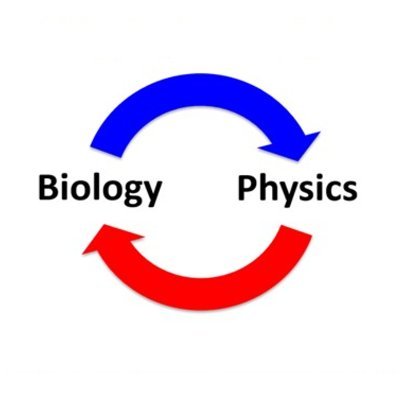
- Teacher: Nishant Gaur
- Teacher: Mr Naman Kumar
- Teacher: Dr. Surabhi Sonam
- Teacher: Dr Priyatosh Ranjan
- Teacher: Mrs. Shweta Banait
- Teacher: Mr Naman Kumar
- Teacher: Dr. Neera Kumari
- Teacher: Dr. Sanjay Kumar
- Teacher: Mr Shrikant Mahindrakar
- Teacher: Dhanashri Varute
- Teacher: Mr. Saikat Dutta
- Teacher: Dr. Sonal Mahajan
- Teacher: Dr. Meena Pandey
- Teacher: Ms. Surbhi Pandya
- Teacher: Ms. Bi Bi Humera
- Teacher: Dr. Neera Kumari
- Teacher: Mr. Saikat Dutta
- Teacher: Dr. Surabhi Sonam

- Teacher: Dr. Meena Pandey
- Teacher: Mrs. Mangal Anilkumar Ambi
- Teacher: Dr. Sanjay Kumar
- Teacher: Mr. Saikat Dutta
- Teacher: Dr. Sanjay Kumar
- Teacher: Dr. Saif Nalband
- Teacher: Samruddhi Sapkal

it is the application of technology to the design of buildings. It is a component of architecture and building engineering and is sometimes viewed as a distinct discipline or sub-category.
- Teacher: Dr. Pravin Gorde
Course Syllabus
|
Program |
Year of Study |
Semester |
Course Type |
|
B.B.A |
1st Year |
I |
Core Course |
|
Course Full Title |
|
|
Course Short Title |
BA |
|
Course Code |
103 |
|
Course Credit |
4 |
Course Description
Accounting is the language of business that helps businesses communicate their performance and their position to its various stakeholders inside and outside the organization. It also guides and assesses the outcome of all business decisions. This course’s goal is to help you develop a framework for understanding financial, cost and management accounting and their different aspects. It will guide you to the process of flow of financial information through a business organization up till its communication with external stakeholders.
Course Outcomes:
CO 1: Maintain records of monetary data in an organized manner
CO 2: Apply the accounting equations and accounting mechanics
CO 3:Preparation of Ledgers, Trial Balance, Balance Sheet and Profit and Loss Account
CO 4: Preparation of Cash Flow Statement
CO 5:Preparation and understanding of Corporate Financial Statements & Corporate Annual Reports
|
Course Content |
|||
|
Unit No |
Topic |
Content |
No of Lectures |
|
1 |
Introduction
|
1. Meaning and Scope of Accounting 2. Accounting Concepts, Principles And Conventions 3. Capital And Revenue Expenditures and Receipts 4. Contingent Assets and Contingent Liabilities 5. Accounting Policies 6. Accounting as a Measurement Discipline – Valuation Principles, Accounting Estimates 7. Accounting Standards |
8 |
|
2 |
Accounting Process and systems |
1. Basic Accounting Procedures - Journal Entries 2. Ledgers 3. Trial Balance 4. Subsidiary Books and Cash Book 5. Balance Sheet 6. Profit and Loss 7. Cash Flow Statement |
8 |
|
3 |
Preparation of Financial Statements |
1. Introduction 2. Relationship Between Profit and Loss Account and Balance Sheet 3. Preparation of Profit and Loss Account 4. Preparation of Balance Sheet 5. Adjustment Entries 6. Adjusted Trial Balance |
8 |
|
4 |
Corporate Financial Statements |
7. Introduction 8. Books of Accounts to Be Kept by a Company 9. Financial Statements 10. Assets 11. Equity 12. Other Equity 13. Liabilities 14. Contingent Liabilities and Commitments 15. Revenue from Operations 16. Other Income 17. Expenses 18. Profit Before Exceptional Items and Tax 19. Exceptional Items 20. Tax Expense 21. Profit (Loss) for the Period from Continuing Operations 22. Discontinued Operations 23. Profit (Loss) for the Period 24. Other Comprehensive Income 25. Earnings per Share 26. Income Taxes 27. Dividend 28. Preliminary Expenses 29. Discount on Issue of Shares or Debentures 30. Capitalization of Profits 31. Preparing Profit and Loss Account and Balance Sheet |
8 |
|
5 |
Understanding Corporate Annual Reports |
1. Introduction 2. Notes to Accounts 3. Directors’ Report 4. Independent Auditors’ Report 5. Segment Information and Related Party Transactions 6. Corporate Governance Report 7. Management Discussion and Analysis Report 8. Business Responsibility Report 9. Value Added Statement 10. Economic Value Added Statement |
8 |
Learning Resources:
|
Sr. No |
Type |
Details |
|
1 |
Recommended Text Book |
Financial Accounting: Fundamentals, Analysis and Reporting Author: R K Arora – Wiley Publication |
|
2 |
Reference Books |
1. Financial Accounting- Dr S N Maheshwari, CA Sharad K Maheshwari&DrSuneel K Maheshwari - S Chand Publication. 2. Financial Accounting: By A.Mukharji&M.Hanif (Tata McGraw-Hill Publishing Co. Ltd. New Delhi) 3. Advanced Accounts: By M.C.Shukla& S.P. Grewal (S.Chand& Co. Ltd. New Delh |
|
3 |
Recommended Research Journals |
1. The Chartered Accountant: Journal of the Institute of Chartered Accountants of India. 2. The Accounting World : ICFAI Hyderabad |
|
4 |
Recommended Magazines |
1. Commerce and Business Researcher 2. Business Today 3. Indian journal of Accounting |
|
5 |
Recommended Journal |
|
|
6 |
Recommended Websites |
|
|
7 |
Recommended Tech- Talks |
1. CA Praveen Sharma 2. CA GirishAhuja |
Teaching Plan :
BBA Sem I
Paper No. BA 103
Subject: Business Accounting
Subject Teacher: Dr. FCMA. Aparna Ghaisas
|
No. |
Topics to be covered |
Time (Min) |
Proposed Date |
Actual Date |
|
1 |
Syllabus Discussion & Basics of Financial Accounting |
50 |
17.08.23 |
17.08.23 |
|
2 |
Conventions, Types of Financial Accounting |
50 |
17.08.23 |
17.08.23 |
|
3 |
Types of Expenditure Duel Effects, Types of Accounts & Rules of Accounts |
50 |
22.08.23 |
22.08.23 |
|
4 |
Journal Entries -Practice |
50 |
22.08.23 |
22.08.23 |
|
5 |
Journal Entries -Practice |
50 |
24.08.23 |
24.08.23 |
|
6 |
Journal Entries -Practice |
50 |
24.08.23 |
24.08.23 |
|
7 |
Journal Entries -Practice |
50 |
29.08.23 |
29.08.23 |
|
8 |
Journal Entries -Practice |
50 |
29.08.23 |
29.08.23 |
|
9 |
Leger Postings & Balancing Ledger |
50 |
31.08.23 |
31.08.23 |
|
10 |
Trial Balance |
50 |
31.08.23 |
31.08.23 |
|
11 |
Trial Balance - Practice |
50 |
07.09.23 |
05.09.23
|
|
12 |
Final Accounts - Introduction |
50 |
07.09.23 |
05.09.23 |
|
13 |
Final Accounts - Adjustments |
50 |
21.09.23 |
07.09.23 |
|
14 |
Final Accounts - Adjustments |
50 |
21.09.23 |
07.09.23 |
|
15 |
Final Accounts – Practice |
50 |
26.09.23 |
12.09.23 |
|
16 |
Final Accounts – Practice |
50 |
26.09.23 |
12.09.23 |
|
17 |
Final Accounts – Practice |
50 |
03.10.23 |
14.09.23 |
|
18 |
Final Accounts – Practice |
50 |
03.10.23 |
14.09.23 |
|
19 |
Final Accounts – Practice |
50 |
05.10.23 |
21.09.23 |
|
20 |
Final Accounts – Practice |
50 |
05.10.23 |
21.09.23 |
|
21 |
Final Accounts – Practice |
50 |
17.10.23 |
26.09.23 |
|
22 |
Final Accounts – Practice |
50 |
17.10.23 |
26.09.23 |
|
23 |
Final Accounts – Practice |
50 |
19.10.23 |
|
|
24 |
Final Accounts – Practice |
50 |
19.10.23 |
|
|
25 |
Books of Accounts to Be Kept by a Company |
50 |
26.10.23 |
|
|
26 |
Formats of Final Accounts for Company |
50 |
26.10.23 |
|
|
27 . |
Schedule III : Balance Sheet |
50 |
31.10.23 |
|
|
28 |
Schedule II : Profit & Loss |
50 |
31.10.23 |
|
|
29 |
Company Final Accounts Practice |
50 |
02.11.23 |
|
|
30 |
Company Final Accounts Practice |
50 |
02.11.23 |
|
|
31 |
Company Final Accounts Practice |
50 |
07.11.23 |
|
|
32 |
Company Final Accounts Practice |
50 |
07.11.23 |
|
|
33 |
Company Final Accounts Practice |
50 |
09.11.23 |
|
|
34 |
Company Final Accounts Practice |
50 |
09.11.23 |
|
|
35 |
Company Final Accounts Practice |
50 |
21.11.23 |
|
|
36 |
Company Final Accounts Practice |
50 |
21.11.23 |
|
|
37 |
Company Final Accounts Practice |
50 |
23.11.23 |
|
|
38 |
Company Final Accounts Practice |
50 |
23.11.23 |
|
|
39 |
Cash Flow Statement |
50 |
28.11.23 |
|
|
40 |
Directors’ Report |
50 |
28.11.23 |
|
|
41 |
Independent Auditors’ Report |
50 |
30.11.23 |
|
|
42 |
Corporate Governance Report |
50 |
30.11.23 |
|
|
43 |
Management Discussion and Analysis Report & Business Responsibility Report |
50 |
05.12.23 |
|
|
44 |
Economic Value Added Statement |
50 |
05.12.23 |
|
|
|
|
|
|
|
|
|
|
|
|
|
|
|
|
|
|
|
|
|
|
|
|
|
|
|
|
|
|
|
|
|
|
|
|
|
Subject Teacher Director
- Teacher: Dr Aparna Ghaisas
- Teacher: Dr. Palash Bairagi
- Teacher: Dr Aparna Ghaisas
- Teacher: Dr. Madhavi Deshpande
- Teacher: Dr. Kranti Shingate
- Teacher: Prof.Shashi Singh
- Teacher: Dr Arvind Kumar Mathur
- Teacher: Prof. Bharat Nagargoje
- Teacher: Dr Arvind Kumar Mathur
- Teacher: Prof. Bharat Nagargoje
- Teacher: Ms Pranjal Tekade
- Teacher: Dr. Kirti Mehta
- Teacher: Dr. Kirti Mehta
- Teacher: Maithili Salgaokar
Course Outcomes:
CO 1: Understand the concept of Entrepreneurship
CO 2: learn new venture creation process
CO 3: Understand the nuances of Project Management
CO 4: Know how to raise finance and institutions supporting Entrepreneurship
CO 5: Analyze the reasons of industrial sickness
|
Unit No |
Topic |
Content |
|
1 |
Introduction to Entrepreneurship |
|
|
2 |
New Venture Creation |
|
|
3 |
Project Management |
|
|
4 |
Institutions supporting Business Enterprises |
|
|
5 |
Why do businesses fail? |
|
Learning Resources:
|
Sr. No |
Type |
Details |
|
1 |
Recommended Text Book |
|
|
2 |
Reference Books |
|
|
3 |
Recommended Research Journals |
|
|
4 |
Recommended Magazines |
1. Harvard Business Review |
|
5 |
Recommended Websites |
1. https://www.entrepreneur.com/topic/inspiration 2. https://www.forbes.com/ |
|
6 |
Recommended Tech- Talks |
|
- Teacher: Prasad Deshpande
- Teacher: Abhinita Daiya
- Teacher: Dr. Kirti Mehta
- Teacher: Dr. Satyen Marathe
- Teacher: Mr Kumud Das
- Teacher: Sonali Bagade
- Teacher: Arvind Singh
- Teacher: Dr. Palash Bairagi
- Teacher: Arvind Singh
- Teacher: Dr. Palash Bairagi
- Teacher: Sonali Bagade
- Teacher: Abhinita Daiya
- Teacher: Girish Phatak
- Teacher: Abhinita Daiya
- Teacher: Arvind Singh
- Teacher: Arvind Singh
- Teacher: Jagdeep Singh
- Teacher: Dr. Kirti Mehta
- Teacher: Dr. Kirti Mehta
- Teacher: Dr. Kranti Shingate
- Teacher: Mr.Sharad Wadkar
- Teacher: Ms. Priyanka Subhash Kunjir
- Teacher: Ms. Priyanka Subhash Kunjir
- Teacher: Ms. Sharvari Pote
- Teacher: Ms Unnati Sunil Darak
- Teacher: Dr. Lubna Shaik
- Teacher: Dr. Surabhi Sonam
- Teacher: Dr. Babuskin Srinivasan
- Teacher: Dr Aparna Ghaisas
- Teacher: Dr. Sidhartha Singh
- Teacher: Prof.Shashi Singh
- Teacher: Ms Sakshi Ravindra Dhapatkar
- Teacher: Prof.Shashi Singh
Cell and tissue engineering
- Teacher: Sakshi Ravindra Dhaptkar
- Teacher: Prof.Shashi Singh
- Teacher: Sakshi Ravindra Dhaptkar
- Teacher: Prof.Shashi Singh
- Teacher: Prof.Shashi Singh

- Teacher: Mrs. Mangal Anilkumar Ambi
- Teacher: Dr. Meena Pandey
- Teacher: Dr. Meena Pandey
- Teacher: Nadaf Arshad Yunus
- Teacher: Dr. Meena Pandey
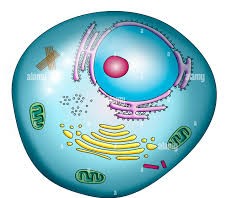
- Teacher: poonam kamthe
- Teacher: Dr. Meena Pandey

- Teacher: Mrs. Mangal Anilkumar Ambi
- Teacher: Dr. Meena Pandey
- Teacher: Dr. Surabhi Sonam
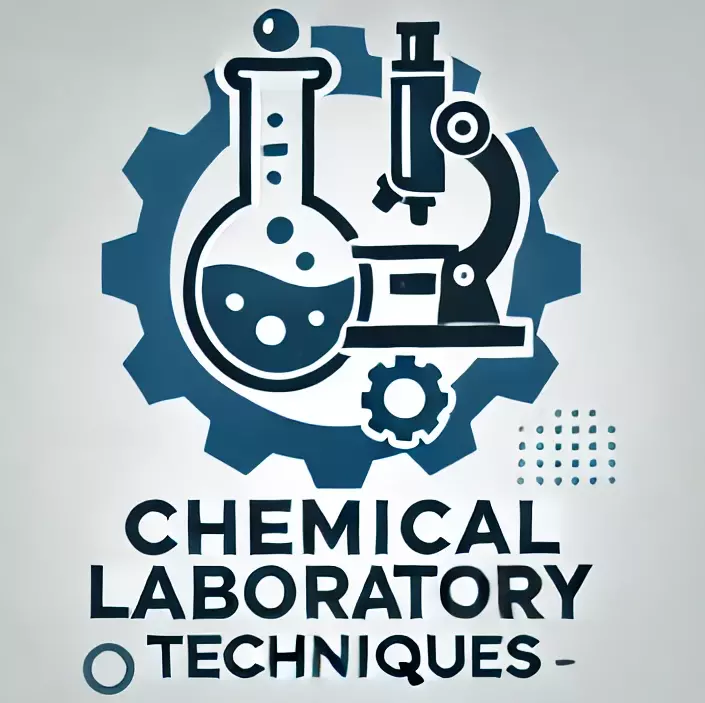
This course is about the basic Laboratory techniques used in Chemical Engineering such as for Fluid Mechanics, Heat Transfer, Mass transfer and others.
- Teacher: Dr. Utkarsh Maheshwari

- Teacher: Dr. Sonal Mahajan
- Teacher: Ms Sakshi Ravindra Dhapatkar
- Teacher: Ms Yashswee Ghorpade
- Teacher: Dr. Sonal Mahajan
- Teacher: Ms Divya Raidas
- Teacher: Ms Unnati Sunil Darak
- Teacher: Dr.Anjali Gupta
- Teacher: Priyanka Raju Balage
- Teacher: Mrs. Heena Bhatia
- Teacher: Dr Richa Purohit
- Teacher: Priyanka Raju Balage
- Teacher: Mrs. Heena Bhatia
- Teacher: Dr Richa Purohit
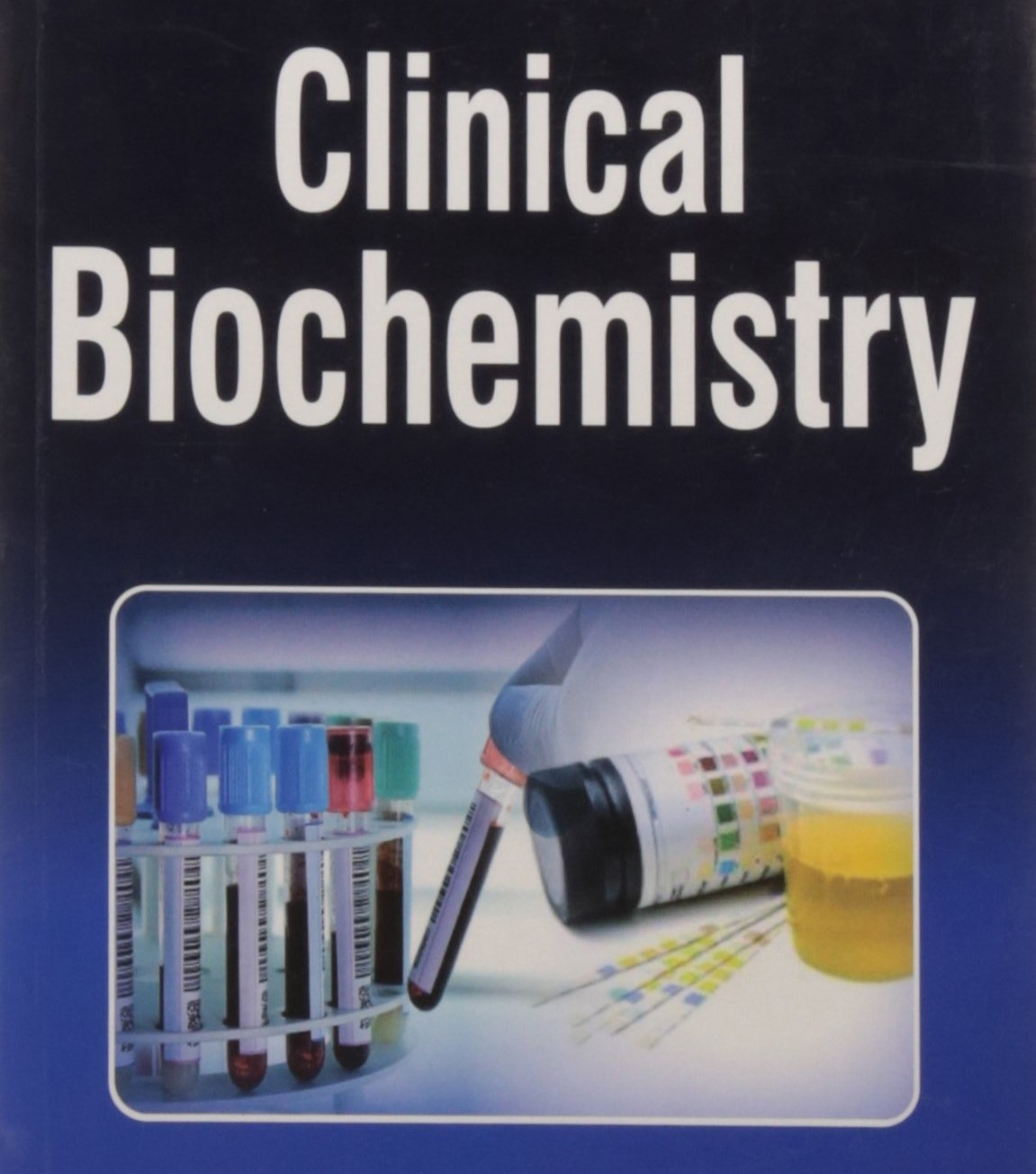
- Teacher: Mr. Saikat Dutta
- Teacher: Dr. Parth Sarthi Sen Gupta
- Teacher: Dr Priyatosh Ranjan
- Teacher: Mrs.Mayura Abhijit khanore
- Teacher: Dr. Sidhartha Singh
- Teacher: Mr. Saikat Dutta
- Teacher: Dr. Sonal Mahajan
- Teacher: Ms. Surbhi Pandya
- Teacher: Dr Jagadish Jakati
- Teacher: Ms Yukta More
- Teacher: Dr. Rahul Sharma
- Teacher: Dr Swapnil Waghmare
- Teacher: Dr. Maheshwari Biradar
- Teacher: Mrs. Maya Ranjeet Pisal
- Teacher: Dr. Rahul Sharma
- Teacher: Dr. Yudhishthir Raut
- Teacher: Prof. Vinayak Sathe
- Teacher: Dr. Bahubali Shiragapur
- Teacher: Ms. Prachi Soniminde
- Teacher: Maithili Salgaokar
- Teacher: Dr. Utkarsh Maheshwari
- Teacher: Ms.Falguni Marbate
- Teacher: Ms. Surabhi Kanchan Gulwelkar
- Teacher: Ms. Surabhi Kanchan Gulwelkar
- Teacher: Ms. Surabhi Kanchan Gulwelkar
- Teacher: Dr. Vijay Shah
- Teacher: Dr. Kranti Shingate
- Teacher: Vahida Pathan
- Teacher: Mr. Shyam Pagare
- Teacher: Dr Arvind Kumar Mathur
- Teacher: Vahida Pathan
- Teacher: Ms Niharika Rajshree
- Teacher: Vahida Pathan
- Teacher: Dr Arvind Kumar Mathur
- Teacher: Vahida Pathan
- Teacher: Ms Niharika Rajshree
- Teacher: Dr Urmi Shah
- Teacher: Mrs. Manisha Bhavsar
- Teacher: Aabha Gupta
- Teacher: Ms Nayanatara Tampi
- Teacher: Mr Aziz M Poonawala
- Teacher: Dr Ananya Mehta
- Teacher: Dr. Swapnil Bhurat
- Teacher: Dr Arvind Kumar Mathur
- Teacher: Vahida Pathan
- Teacher: Dr Urmi Shah
- Teacher: Ms. Priyanka Subhash Kunjir
- Teacher: Ms. Priyanka Subhash Kunjir
- Teacher: Dr. Swapnil Bhurat
- Teacher: Dr Arvind Kumar Mathur
- Teacher: Vahida Pathan
- Teacher: Dr Urmi Shah
- Teacher: Dr Dnyanada Hire
- Teacher: Dr Ananya Mehta
- Teacher: Dr Ananya Mehta
- Teacher: Mr. Ajinkya Hiran
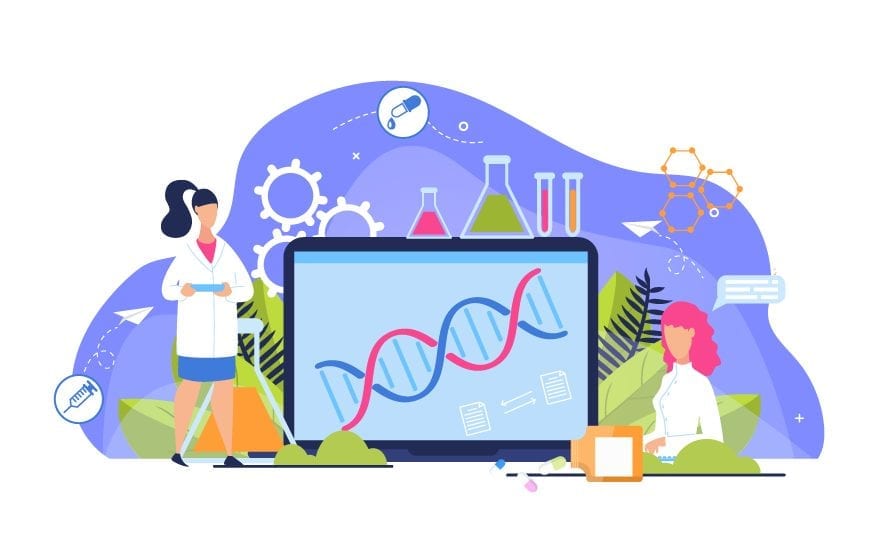
- Teacher: Dr. Parth Sarthi Sen Gupta
- Teacher: Mrs. Mangal Anilkumar Ambi
- Teacher: Dr. Mugdha Sirvastava
- Teacher: Ms Varshini Dayanand Kore
- Teacher: Dr. Parth Sarthi Sen Gupta
- Teacher: Ms Varshini Dayanand Kore
- Teacher: Dr. Parth Sarthi Sen Gupta
- Teacher: Dr. Surabhi Sonam
- Teacher: Sejal Shailesh Deshpande
- Teacher: Dr. Sanjay Kumar
- Teacher: Mrs. Shubhangi V Patil
- Teacher: Dr Rishikant Rajdeepak
- Teacher: Dr Bansidhar Joshi
- Teacher: Mrs. Kalyani Kute
- Teacher: Mr Paras Thakkar
- Teacher: Mr Pulkit Tiwari
- Teacher: Dr. Surabhi Sonam
- Teacher: Dr. Maheshwari Biradar
- Teacher: Dr. Vinodkumar Ghale
- Teacher: Ms Jaya Hulugade
- Teacher: Ms Jaya Hulugale
- Teacher: Dr. Rahul Sharma
- Teacher: Dr. Rahul Sharma
- Teacher: Suprabhat Sinha
- Teacher: Mr. Rajkumar Chaudhari
- Teacher: Dr. Vinodkumar Ghale
- Teacher: Dr. Rahul Sharma
- Teacher: Dr. Vinodkumar Ghale
- Teacher: Mr Nihal Kale
- Teacher: Dr. Rahul Sharma
- Teacher: Mr Prateek Meshram
- Teacher: Mr Paras Thakkar
This course introduces computational thinking and problem-solving using Python. Students will learn to break down complex problems, recognize patterns, and develop algorithms to create efficient solutions. Through hands-on projects, they will build a solid foundation in Python basics, data structures, and logic, while exploring real-world applications across various fields. Emphasis is placed on debugging, refining solutions, and understanding how computers interpret code. By the end of the course, students will be able to design, code, and test programs, fostering both logical reasoning and creativity in solving computational problems. No prior programming experience is required, making this course accessible to all learners.
- Teacher: Vaishnavi Battul
- Teacher: Dr Keval Nikam
- Teacher: Dr Priya Charles
- Teacher: Mr Dinesh Kumar
- Teacher: Dr Arvind Kumar Mathur
- Teacher: Mr Nitin Motgi
- Teacher: Mr Atul Pradhan
- Teacher: Dr Amol Mali
- Teacher: Mr Atul Pradhan
- Teacher: Abhinita Daiya
- Teacher: Dr. Maheshwari Biradar
- Teacher: Mr Saransh Kushwaha
- Teacher: Dr. Rahul Sharma
- Teacher: Tosheet Hedaoo
- Teacher: Ms. Surbhi Pagar
- Teacher: Dr Ashvini P Shende
- Teacher: Dr Swapnil Waghmare
- Teacher: Mr Shubham Jagdale
- Teacher: Mr Ajinkya Kothavade
- Teacher: Ms Vaishali Kumar
- Teacher: Mr. Yash Sanjay More
- Teacher: Mr Pulkit Tiwari
- Teacher: Ms Vaishali Kumar
- Teacher: Mr Saransh Kushwaha
- Teacher: Sulaxan Jadhav
- Teacher: Dr. Bahubali Shiragapur
- Teacher: Dr. Maheshwari Biradar
- Teacher: Dr. Rahul Sharma
- Teacher: Dr Sandhya Shinde
- Teacher: Dr. Sanjay Badhe
- Teacher: Dr. Maheshwari Biradar
- Teacher: Dr. Rahul Sharma
- Teacher: Jayashri Kawale
- Teacher: Dr. Kapil Sharma
- Teacher: Varsha Sambhaje
- Teacher: Dr. Kapil Sharma
- Teacher: Mrs. Heena Bhatia
- Teacher: Dr Richa Purohit
- Teacher: Bhakti Sathe
- Teacher: Dr. Kapil Sharma
- Teacher: Dr. Maheshwari Biradar
- Teacher: Mrs. Maya Ranjeet Pisal
- Teacher: Mr Riteshkumar Sale
- Teacher: Dr. Rahul Sharma
- Teacher: Dr. Sanjay Badhe
- Teacher: Dr. Maheshwari Biradar
- Teacher: Dr. Pragati Choudhari
- Teacher: Mr Shubham Jagdale
- Teacher: Mrs Monika Kapgate
- Teacher: Mr Saransh Kushwaha
- Teacher: Mrs. Vidya Sameer Kadam
- Teacher: Dr. Maheshwari Biradar
- Teacher: Mr Nikhil Soniminde
- Teacher: Nitin Rajput
- Teacher: Mr Shubham Jagdale
- Teacher: Mrs. Maya Ranjeet Pisal
- Teacher: Dr. Sanjay Badhe
- Teacher: Dr. Maheshwari Biradar
- Teacher: Dr. Pragati Choudhari
- Teacher: Mr Shubham Jagdale
- Teacher: Mrs Monika Kapgate
- Teacher: Mr Saransh Kushwaha
- Teacher: Dr. Sanjay Badhe
- Teacher: Dr. Maheshwari Biradar
- Teacher: Dr. Pragati Choudhari
- Teacher: Mr Shubham Jagdale
- Teacher: Mrs Monika Kapgate
- Teacher: Mr Saransh Kushwaha
- Teacher: Dr. Pragati Choudhari
- Teacher: Mr Shubham Jagdale
- Teacher: Dr. Rahul Sharma
- Teacher: Dr. Pragati Choudhari
- Teacher: Ms. Akshara A. Saoji
- Teacher: Dr. Rahul Sharma
- Teacher: Dr Bansidhar Joshi
- Teacher: Mr Riteshkumar Sale
- Teacher: Dr. Rahul Sharma
- Teacher: Mrs Asha S Ayakar
- Teacher: Ms Karishma Doke
- Teacher: Bhakti Sathe
- Teacher: Dr. Kapil Sharma
- Teacher: Dr. Bahubali Shiragapur
- Teacher: Dr. Samarjit Roy
- Teacher: Ashwini Bhavsar
- Teacher: Dr. Yudhishthir Raut
- Teacher: Dr Bansidhar Joshi
- Teacher: Dr. Rahul Sharma
- Teacher: Dr Sanjay Mohite
- Teacher: Dr. Rahul Sharma
- Teacher: Ms Jyoti Dukare
- Teacher: Ms Shreya Porwal
- Teacher: Nitin Rajput
- Teacher: Dr. Rahul Sharma
- Teacher: Dr Swapnil Waghmare
- Teacher: Dr. Maheshwari Biradar
- Teacher: Mr. Vishwjeet Jagtap
- Teacher: Dr. Rahul Sharma
- Teacher: Dr Swapnil Waghmare
- Teacher: Dr. Maheshwari Biradar
- Teacher: Dr. Samarjit Roy
- Teacher: Dr. Samarjit Roy
- Teacher: Dr. Pallavi Jha
- Teacher: Mr Kumud Das
- Teacher: Dr. Vijay Shah
- Teacher: Dr. Vijay Shah
Course Title: Copywriting and Content Development
|
Programme |
B. Des |
|
Discipline |
GD & UX |
|
Academic Year |
2022-23 |
|
Specialization |
GD |
|
Batch |
2021 |
|
Year |
2023 |
|
Course Code |
DES402 |
|
Semester |
4 |
|
Type of Course |
Core |
|||
|
Course In-charge |
Nayanatara Tampi |
|||
|
Core Faculty |
Nayanatara Tampi |
|||
|
Co-Faculty |
- |
|||
|
Visiting Faculty |
Aziz Poonawala, Manav Kambli |
|||
|
|
L |
ST |
P |
Total |
|
Marks |
Internal Work |
External Jury |
External Task |
External Exam |
Total |
|
Credits |
|
|
|
4 |
Max. |
80 |
20 |
0 |
0 |
100 |
|
|
Hours |
16 |
28 |
10 |
54 |
Min. |
32 |
8 |
0 |
0 |
40 |
Aim(s) – Introduction to Copywriting and Content Creation
· Objective(s) –
1. Sensitizing to successful and unsuccessful advertising campaigns
2. Learn and apply the use of attractive headlines and taglines
3. Discover the use of Brand voice and tonality
4. Learn the various tools of copy writing and when to use each
5. Create an advertising pitch using above tools and review
Pedagogy
Students will gain multi-disciplinary skills through lectures and interaction with industry experts while developing their own ad campaigns for specific product briefs. They will learn to discuss, criticize, and appreciate other forms of advertising
· Detailed Syllabus
|
Session No. |
Topic & Sub-Topic |
Duration (Hrs.) |
|
1. |
Introduction to advertising, lecture |
2 |
|
2. |
Assignment on Headlines and Taglines |
4 |
|
3. |
Introduction to market research for branding |
2 |
|
4. |
Assignment on research report for selected brand |
4 |
|
5. |
Introduction to brand tonality and brand archetypes |
3 |
|
6. |
Introduction to tools of Copywriting and Case studies presentation |
3 |
|
7. |
Assignment on brand tonality and market repositioning |
6 |
|
8. |
Presentation of students work and Jury |
4 |
|
9. |
Introduction to types of writing for content creation |
2 |
|
10. |
Assignment on ideation for content creation |
4 |
|
11. |
Introduction to Organic content and successful blog writing |
2 |
|
12. |
Assignment on Blog post for organic brand content |
6 |
|
13. |
Introduction to Social media platforms and brand content |
2 |
|
14. |
Assignment on Social media posts for brands |
4 |
|
15. |
Final presentation and jury for module |
6 |
|
|
Total Hrs. |
54 |
(1 working day was missed due to Founder’s Day program at DYPIU)
· Prerequisite/s- Understanding of what is
Advertising and relevant young Indian brands
· Mode of submission Hard Copies & Soft Copies
Final assignments are to be submitted in digital format online.
|
Faculty |
Name |
Signature |
Date |
|
Course I/C |
Prof. Nayanatara Tampi |
|
|
|
Director |
Prof. Dr. Vijay Shah |
|
|
- Teacher: Varun Sharma
- Teacher: Ms Nayanatara Tampi
|
Subject Code |
Subject Title |
Lec |
Tut |
Prac |
Cre |
Hours |
|
DES2402 |
Content Development and Copywriting |
1 |
1 |
2 |
3 |
45 |
|
Pre-requisites |
● Basic Knowledge of Word Processors/Online Writing Tools ● The ability to read/write in ONE language (English/Hindi/Marathi) |
|
|
|
|
|
|
Course Objective: ● Craft clear, concise, and engaging content: Students will be able to analyze target audiences and tailor written content to effectively communicate ideas and information in a compelling way. ● Polish the students’ content writing skills: Students will gain proficiency in essential writing techniques, including grammar, punctuation, and style, to produce well-structured and error-free content. ● Apply content development principles: Students will learn and implement strategies for planning, researching, and organizing content to meet specific goals and objectives. ● Evaluate and adapt content for different platforms: Students will understand how to optimize content for various formats, mainly focusing on the design disciplines of their choice from UI/UX to graphic design and illustration. |
|
|
Modules |
Lect. |
|
Module 1: Understanding Brands, Brand Archetypes and answering the basic question: "What is Content" ● Brand Fundamentals: This module dives into the concept of brands, exploring their core values, mission statements, target audiences, and brand voice. You'll learn how brands connect with their audience and how content plays a crucial role in building brand identity. ● Brand Archetypes: We'll delve into brand archetypes, uncovering the different personality traits brands can embody (e.g., the Hero, the Caregiver, the Outlaw). You'll explore how archetypes influence brand messaging and how to identify the archetype that best aligns with your target content. ● Defining Content: This foundational section explores the very essence of content - what it is, its various purposes (to inform, entertain, persuade), and how it serves as a bridge between brands and audiences. |
9 |
|
Module 2: Understanding Content Briefs, Types of Briefs, Different Content Formats ● Demystifying Content Briefs: This module delves into content briefs - the blueprint for creating effective content. You'll learn how to analyze briefs, identify key information like target audience, purpose, and tone, and ensure your content aligns with client expectations. ● Types of Content Briefs: Explore the different types of content briefs you might encounter, such as blog post briefs, social media captions, website copy briefs, and more. Understand how each brief requires specific information and content approaches. ● Content Format Frenzy: We'll dive deep into the world of content formats. From blog posts and articles to infographics and social media content, you'll gain a comprehensive understanding of popular content formats and their strengths and weaknesses for different communication goals. |
6 |
|
Module 3: Understanding Tonality, Brand Voice ● The Power of Tone: This module delves into the concept of tone in content writing. You'll explore how to establish the right tone (e.g., formal, informal, humorous) to resonate with your target audience and align with the brand voice. ● Crafting Your Brand Voice: Learn how to identify and develop a unique brand voice - the personality that shines through in all your content. Discover techniques to maintain consistency in tone and voice across all platforms. |
6 |
|
Module 4: The Art and Science of Blog Writing + Understanding Long Form Content ● The Blogger's Toolkit: This module equips you with the essential tools for crafting engaging blog posts. You'll explore best practices for structuring blog content, including catchy introductions, informative body paragraphs, and compelling conclusions. ● The Power of Long-Form Content: Explore the world of long-form content, such as eBooks, white papers, and in-depth articles. You'll understand how long-form content helps establish brand authority and fosters deeper audience engagement. |
6 |
|
Module 5: Decoding social media + Understanding short-form content (posts and more) ● Social media: This module delves into the ever-evolving landscape of social media. You'll learn about popular platforms, their unique content formats (posts, tweets, stories), and strategies for crafting engaging and shareable short-form content. ● The Art of the Short Bite: Master the art of crafting captivating short-form content tailored for specific social media platforms. Explore methods to hook readers quickly, maximize engagement, and leverage trends effectively. ● Social Media Strategy: Learn to develop a social media content strategy aligned with your overall brand goals. Discover techniques for scheduling content, measuring success, and optimizing your social media presence. |
6 |
|
Module 6: The Intersections of Content and Design - How Content interacts with UI/UX and Graphic Design ● Content & Design Synergy: This module explores the beautiful marriage of content and design. You'll learn how content interacts with User Interface (UI) and User Experience (UX) design principles to create a seamless and engaging user journey. ● The Power of Visuals: Discover the importance of visuals like images, infographics, and videos in enhancing content and user experience. Learn how to integrate visuals effectively to break up text, improve readability, and capture attention. ● Design Best Practices: Gain a basic understanding of design best practices to optimize content presentation. This can include understanding layout principles, choosing appropriate fonts and colors, and creating a visually appealing user experience. |
6 |
|
Module 7: The Dos and Don'ts of Content Writing Practice, Understanding Content-focused tools and Writing your Brand to Life ● Content Writing Essentials: This module equips you with practical writing techniques for content creation. You'll learn about grammar, punctuation, style guides, and how to conduct thorough research to ensure your content is accurate, informative, and credible. ● Content Creation Tools: Explore content-focused tools and resources that can streamline your workflow and enhance your writing. This might include grammar checkers, plagiarism detection software, project management tools, and content calendars. ● Writing Your Brand Story: In this culminating module, you'll put your newfound knowledge to the test by crafting content that brings your brand story to life. Learn how to translate brand values and messaging into compelling content that resonates with your target audience and achieves your marketing goals. |
6 |
|
Total Hours |
45 |
COURSE OUTCOMES
|
CO1 |
Demonstrate a strong understanding of brand identity and how content marketing supports brand building. (Module 1) |
|
CO2 |
Develop content aligned with client or brand specifications, utilizing various formats and adhering to content brief requirements. (Module 2) |
|
CO3 |
Craft content with a distinct tone and voice that aligns with the brand personality and resonates with the target audience. (Module 3) |
|
CO4 |
Produce engaging blog posts and long-form content, incorporating SEO best practices and strategies for user engagement. (Module 4) |
|
CO5 |
Create effective social media content tailored for different platforms, utilizing short-form content formats to maximize reach and audience interaction. (Module 5) |
|
CO6 |
Apply basic design principles to integrate visuals effectively with content, enhancing user experience and readability. (Module 6) |
|
CO7 |
Demonstrate proficiency in essential content writing techniques, including grammar, punctuation, and proper research methodologies to ensure content accuracy and credibility. (Module 7) |
CORRELATION OF COS WITH POS
|
CO/PO |
PO1 |
PO2 |
PO3 |
PO4 |
PO5 |
PO6 |
PO7 |
PO8 |
PO9 |
PO10 |
|
CO1 |
3 |
2 |
2 |
2 |
3 |
2 |
2 |
0 |
2 |
2 |
|
CO2 |
2 |
2 |
2 |
2 |
3 |
0 |
2 |
1 |
2 |
2 |
|
CO3 |
2 |
2 |
2 |
2 |
3 |
2 |
2 |
1 |
0 |
2 |
|
CO4 |
2 |
2 |
0 |
3 |
3 |
2 |
2 |
1 |
2 |
2 |
|
CO5 |
2 |
2 |
2 |
2 |
3 |
0 |
2 |
1 |
2 |
2 |
|
CO6 |
3 |
0 |
2 |
1 |
2 |
3 |
2 |
1 |
2 |
2 |
|
CO7 |
2 |
2 |
2 |
3 |
3 |
2 |
2 |
0 |
2 |
2 |
|
Text book: "The Elements of Content Strategy" by Erin Kissane "Writing for the Web: Composing, Coding, and Constructing Web Sites" by J.D. Applen and Rudy McDaniel Reference book: The Copywriter’s Handbook – Robert Bly "Everybody Writes: Your Go-To Guide to Creating Ridiculously Good Content" by Ann Handley Web References Copyblogger - Link: Copyblogger HubSpot Blog: Content Marketing - Link: HubSpot Blog |
- Teacher: Mr Aziz M Poonawala
- Teacher: Dr Arvind Kumar Mathur
- Teacher: Mrs Manali Pednekar
- Teacher: Dr. Madhavi Deshpande
- Teacher: Ms Anuradha Patil
- Teacher: Ms Anuradha Patil
- Teacher: Arvind Singh
- Teacher: Arvind Singh
- Teacher: Mr. Ajit Dalavi
- Teacher: Dr K P Agrawal
- Teacher: Dr. Swapnil Bhurat
- Teacher: Dr Rishikant Rajdeepak
- Teacher: Dr. Gaurav Kumar Singh
- Teacher: Dr.Rahul Weldode
- Teacher: Mr. Suresh Kadam
- Teacher: Ms. Monika Sharma
- Teacher: Sharad Gupta
- Teacher: Manjusha. CB
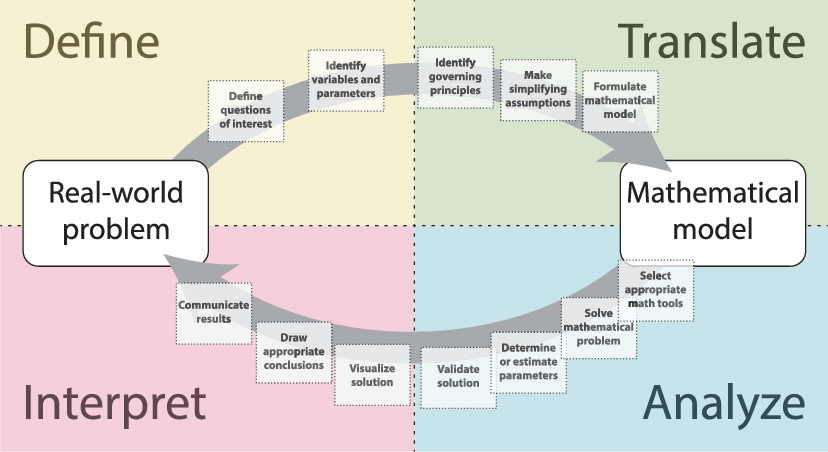
This course covers basics of mathematics in four modules, viz., (1) Module 1 discusses "Linear Algebra" that includes (a) solving systems of linear equations, (b) matrix algebra, and (c) characteristic polynomials; (2) Module 2 discusses (a) first-order and second-order differential equations, and (b) partial derivatives of functions of two variables; (3) Modules 3 discusses basics of (a) probabililty, and (b)statistics; (4) Module 4 discusses "Discrete Mathematics" that includes (a) mathematical logics, and (b) graph theory.
- Teacher: Dr Rishikant Rajdeepak
- Teacher: Varsha Sambhaje
- Teacher: Suprabhat Sinha
- Teacher: Dr Ashvini P Shende
- Teacher: Mr Saransh Kushwaha
- Teacher: Ms. Sharvari Pote
- Teacher: Varshita Gangadhara
- Teacher: Dr. Niharika Singh
- Teacher: Ms Vaishali Kumar
- Teacher: Mr Saransh Kushwaha
- Teacher: Ms.Nikita Pagar
- Teacher: Mr Saransh Kushwaha
- Teacher: Mrs. Heena Bhatia
- Teacher: Dr. Aaradhana A. Deshmukh
- Teacher: Dr Richa Purohit
- Teacher: Bhakti Sathe
- Teacher: Suraj Shete
- Teacher: Mrs. Heena Bhatia
- Teacher: Dr Richa Purohit
- Teacher: Bhakti Sathe
- Teacher: Suraj Shete
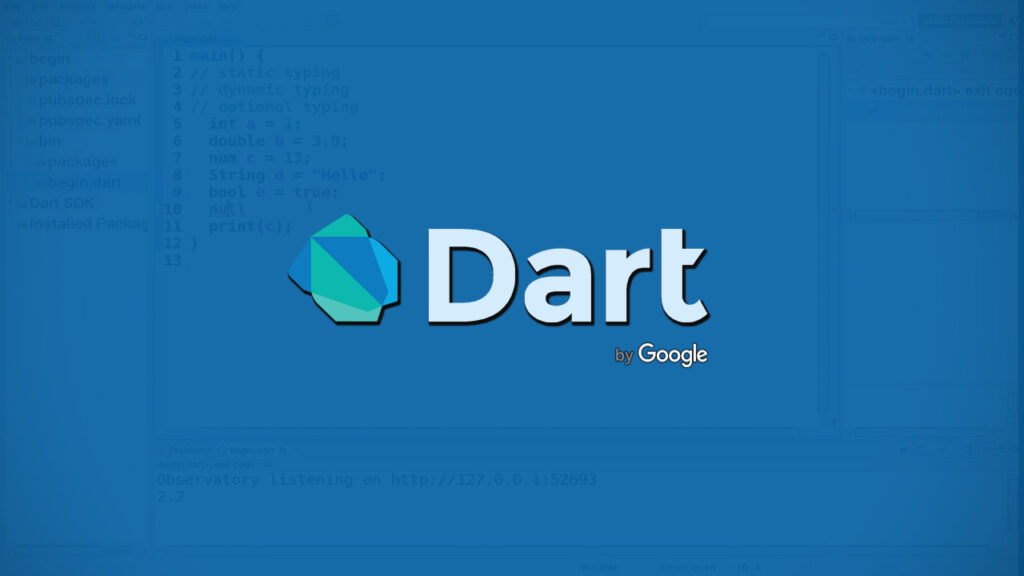
- Teacher: Dr Sarika Jadhav
- Teacher: Mrs. Heena Bhatia
- Teacher: Dr. Aaradhana A. Deshmukh
- Teacher: Dr Richa Purohit
- Teacher: Dhanashri Varute
- Teacher: Dr. Maheshwari Biradar
- Teacher: Dr Sarika Jadhav
- Teacher: Ms Priyanka Karale
- Teacher: Dr. Rahul Sharma
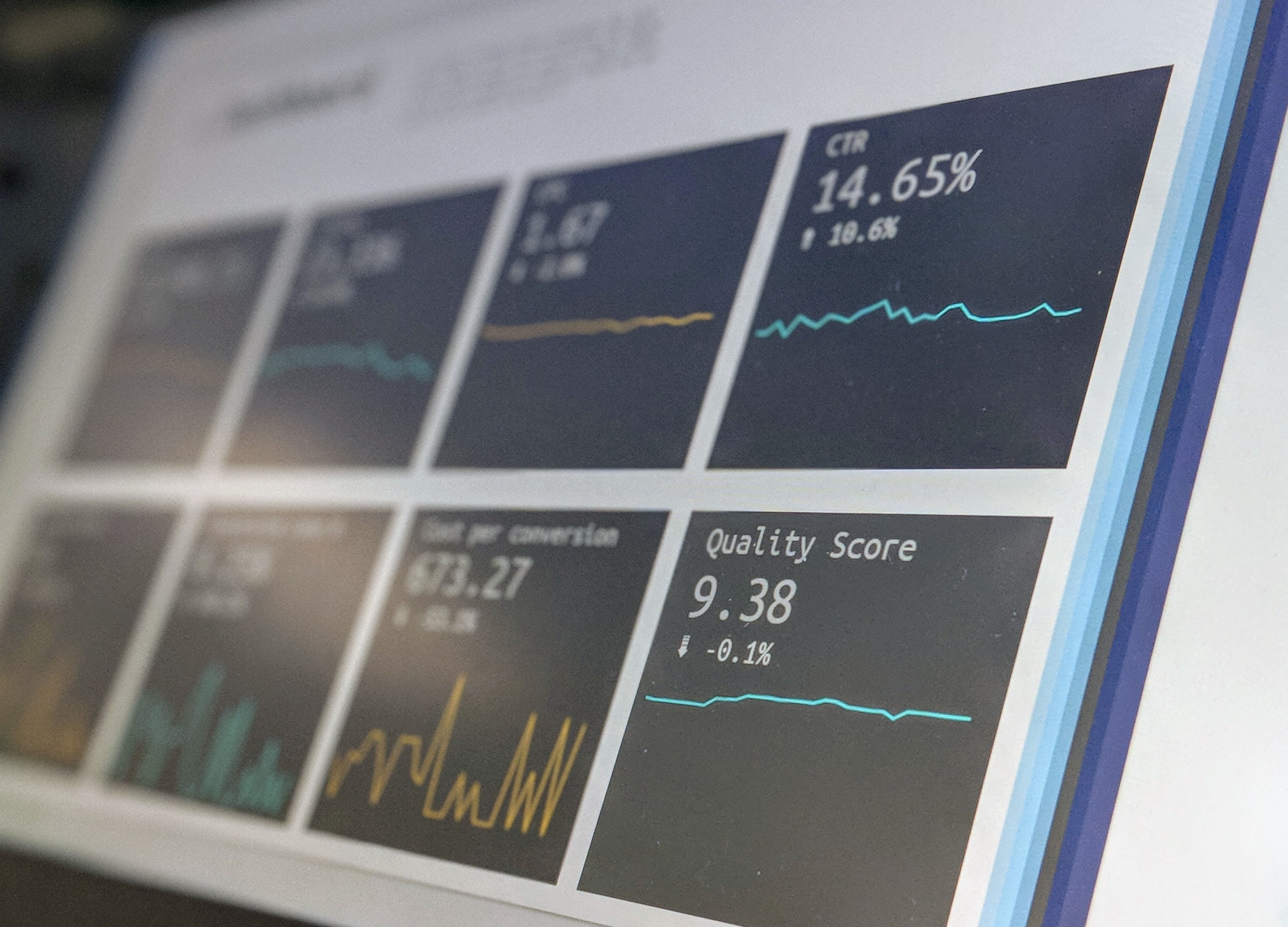
Data journalism is a type of journalism in which reporters create stories using massive datasets. This reflects the growing importance of numerical data in the production and dissemination of information, as well as the growing connection between journalists and professions like design, computer science, and statistics. Through the use of infographics and data visualizations, data journalism aids in the telling of a complicated tale.
- Teacher: Ms. Neha Dubey

This course introduces students to the principles and practices of data journalism, equipping them with the skills to collect, analyze, and visualize data to tell compelling stories. Students will learn ways to find and evaluate data sources, use data analysis tools and techniques, and communicate their findings effectively through various media platforms.
- Teacher: Ms. Neha Dubey
- Teacher: Dr. Maheshwari Biradar
- Teacher: Ms Priyanka Karale
- Teacher: Dr. Rahul Sharma
- Teacher: Ms Priyanka Karale
- Teacher: Mr Rohit Saktel
- Teacher: Sulaxan Jadhav
- Teacher: Dr Siddharth Gavhale
- Teacher: Ms. Vaishnavi Amit Gund
- Teacher: Ms Sushmita Kumar
- Teacher: Mrs. Shweta Banait
- Teacher: Dr. Neera Kumari
- Teacher: Varshini Dayanand Kore
- Teacher: Dr. Neera Kumari
- Teacher: Ms Sushmita Kumar
- Teacher: Dr. Neera Kumari
- Teacher: Sulaxan Jadhav
- Teacher: Dr. Tamal Mondal
- Teacher: Dr Keval Nikam
- Teacher: Mr. Rajkumar Chaudhari
- Teacher: Ms.Nikita Pagar
- Teacher: Ms Shobhana Patil
- Teacher: Mrs Remya Praveen

- Teacher: Mrs. Heena Bhatia
- Teacher: Ms.Nikita Pagar
- Teacher: Dr Richa Purohit
- Teacher: Ms Dipali P Dhokane
- Teacher: Dr Richa Purohit
- Teacher: Mr Nikhil Soniminde
- Teacher: Priti Patil
- Teacher: Dhanashri Varute
- Teacher: Dr. Pramod Yelmewad
- Teacher: Ms Dipali P Dhokane
- Teacher: Ms Vijaylaxmi jain
- Teacher: Aparna Joshi
- Teacher: Priti Patil
- Teacher: Dr. Rahul Sharma
- Teacher: Ms Zalak Thakkar
- Teacher: Dr. Maheshwari Biradar
- Teacher: Mrs. Ashwini Pawar
- Teacher: Dr. Rahul Sharma
- Teacher: Ms Krishnendu S
- Teacher: Ms Jyoti Dukare
- Teacher: Ms Shobhana Patil
- Teacher: Mr Rohit Saktel
- Teacher: Dr Bansidhar Joshi
- Teacher: Mrs Remya Praveen
- Teacher: Mrs Sneha Kanawade
- Teacher: Ms Jyoti Dukare
- Teacher: Dr. Rahul Sharma
- Teacher: Ms Jyoti Dukare
- Teacher: Mr. Vishwjeet Jagtap
- Teacher: Mrs Varsha Pandagare
- Teacher: Dr. Rahul Sharma
- Teacher: Ms Jyoti Dukare
- Teacher: Mrs Akanksha Kulkarni
- Teacher: Dr. Rahul Sharma
- Teacher: Mr Saurabh Gargote
- Teacher: Mr. Vishwjeet Jagtap
- Teacher: Mr Prateek Meshram
- Teacher: Dr. Rahul Sharma
- Teacher: Dr Amol Dhakne
- Teacher: Mr Saurabh Gargote
- Teacher: Dr. Rahul Sharma
- Teacher: Rashmi Dharwadkar
- Teacher: Dr. Tamal Mondal
- Teacher: Mr. Yash Sanjay More
- Teacher: Ms.Nikita Pagar
- Teacher: Mrs. Shweta Banait
- Teacher: Mrs. Veena Kiragi
- Teacher: Dr Nalini Jagtap
- Teacher: Mrs. Veena Kiragi
- Teacher: Mr Rohit Saktel
- Teacher: Dr. Bahubali Shiragapur
- Teacher: Ms. Surbhi Pagar
- Teacher: Ms Pratiksha Saheb
- Teacher: Dr. Rahul Sharma
- Teacher: Mrs. Shweta Banait
- Teacher: Ms Sandhya S Jawale
- Teacher: Samruddhi Sapkal
- Teacher: Dr Ashvini P Shende
- Teacher: Mr Anshanu Birajdar
- Teacher: Dr Sarika Jadhav
- Teacher: Mr Mayank Nipane
- Teacher: Mrs. Shweta Banait
- Teacher: Priti Patil
- Teacher: Mr Anshanu Birajdar
- Teacher: Ms Jyoti Dukare
- Teacher: Dr Sarika Jadhav
- Teacher: Mr Mayank Nipane
- Teacher: Mr Anshanu Birajdar
- Teacher: Dr. Somya Dubey
- Teacher: Ms Jyoti Dukare
- Teacher: Mr Mayank Nipane
- Teacher: Mr Anshanu Birajdar
- Teacher: Ms Shobhana Patil
- Teacher: Dr. Rahul Sharma
- Teacher: Dr. Somya Dubey
- Teacher: Dr. Rahul Sharma
- Teacher: Ms. Akanksha Shewale
- Teacher: Mr Anshanu Birajdar
- Teacher: Dr. Somya Dubey
- Teacher: Dr. Rahul Sharma
- Teacher: Ms. Akanksha Shewale
- Teacher: Mr.Swet Chandan
- Teacher: Mr. Yash Sanjay More
- Teacher: Mr Mayank Nipane
- Teacher: Dr. Rahul Sharma
- Teacher: Varshita Gangadhara
- Teacher: Dr. Yogesh Kumar Sariya
- Teacher: Dr. Maheshwari Biradar
- Teacher: Mr Mayank Nipane
- Teacher: Dr. Rahul Sharma
- Teacher: Mrs. Veena Kiragi
- Teacher: Mrs. Heena Bhatia
- Teacher: Varshita Gangadhara
- Teacher: Dr Richa Purohit
- Teacher: Dr. Yogesh Kumar Sariya
- Teacher: Mr.Swet Chandan
- Teacher: Mr. Yash Sanjay More
- Teacher: Mr.Swet Chandan
- Teacher: Varshita Gangadhar
- Teacher: Mr Shrikant Mahindrakar
- Teacher: Sulaxan Jadhav
- Teacher: Dr.Vaishnaw Kale
- Teacher: Ms Priyanka Karale
- Teacher: Mr Shrikant Mahindrakar
- Teacher: Ms Yukta More
- Teacher: Dr.Vaishnaw Kale
- Teacher: Mr. Yash Sanjay More
- Teacher: Ms Yukta More
- Teacher: Dr. Rahul Sharma
- Teacher: Ms Yukta More
- Teacher: Dr. Laxmi Priya Sahu
- Teacher: Mr. Yash Sanjay More
- Teacher: Ms Yukta More
- Teacher: Dr. Laxmi Priya Sahu
- Teacher: Dr.Vaishnaw Kale
- Teacher: Mr. Yash Sanjay More
- Teacher: Ms Yukta More
- Teacher: Dr. Rahul Sharma
- Teacher: Dr. Sirshendu Arosh
- Teacher: Mr Shrikant Mahindrakar
- Teacher: Manasa Mandapati
- Teacher: Varun Sharma
- Teacher: Dr. Vijay Shah
- Teacher: Dr. Vijay Shah
- Teacher: Dr. Vijay Shah
- Teacher: Bhanuprakash Bussagari
- Teacher: Dr. Vijay Shah
- Teacher: Bhanuprakash Bussagari
- Teacher: Bhanuprakash Bussagari
- Teacher: Anil Narasipuram
- Teacher: Dr. Vijay Shah
- Teacher: Bhanuprakash Bussagari
- Teacher: Mr Mahendra Patel
- Teacher: Dr. Vijay Shah
- Teacher: Anil Narasipuram
- Teacher: Mr Mahendra Patel
- Teacher: Bhanuprakash Bussagari

- Teacher: Ms Karishma Doke
- Teacher: Ms Priyanka Karale
- Teacher: Ms Shobhana Patil
- Teacher: Ms Shreya Porwal
- Teacher: Samruddhi Sapkal
- Teacher: Bhakti Sathe
- Teacher: Dr. Bahubali Shiragapur
- Teacher: Mr. Vishwjeet Jagtap
- Teacher: Ms Shobhana Patil
- Teacher: Dr. Rahul Sharma
- Teacher: Dr. Pragati Choudhari
- Teacher: Ms Jyoti Dukare
- Teacher: Dr. Rahul Sharma

Assignment / Task: 3D Trophy Design (Sports, Achievements, Business, Military, Professional
awards, Community Service, Hunting, and Environmental accomplishments)
Size : 12 Inch (Minimum Height)
Method : Draw 2 Rough Scribble & Finalize one from the Concern Faculty.
Material Required: Pencils, Colour, Color Pencils, ¼ th Super, Foam Sheet, Acrylic sheet,
white/ Cartridge paper and Tinted paper, Foam Sheet, Acrylic sheet,
Wood Stick, Craft Material, Different Types of Paper, Drawing Tools,
Cutting Tools
Brief & Instructions about Project:
A trophy is a tangible, decorative item used to remind of a specific achievement, serving as recognition or evidence of merit. Trophies are most commonly awarded for sporting events ranging from youth sports to professional level athletics. Additionally, trophies are presented for achievements in Academic, Arts and Entertainment, Business, Military, Professional awards, Community Service, Hunting, and Environmental accomplishments. In many contexts, especially in sports, medals (or, in North America, rings) are often given out either as the trophy or along with more traditional trophies.
Originally the word trophy, derived from the Greek tropaion
Details expected in Design: Award name, Logo, Winner name
- Students have to Prepare Trophy Design on said / directed topic
- Students has to create two ( 02 ) rough visuals, on their chosen topic adding creative sense and interesting layout sense.
- Students are directed to work on the finalized topic by creating commercial message of communication for the Trophy Design
- The approved layout will be digitally executed for the final Design Layout by the student in the expected dimensions.
- Size required as mentioned. 12”x 18”
- Use existing logo, symbol, monogram, label & packaging wherever required.
References:- Use website according to your selected Product/Service.
Expected Outcome/s: Fulfilling more than 80% of objectives as per PO & CO’s.
4Links & References:
https://i.pinimg.com/736x/3a/82/0c/3a820c7f7be6ada64b48959b7174b71f.jpg
https://in.pinterest.com/pin/3659243440571186/
https://in.pinterest.com/pin/7881368093107523/
https://in.pinterest.com/pin/7881368094210998/
https://i.pinimg.com/736x/d5/f4/a3/d5f4a3c52f961efdd0d9f3faf9f4c29c.jpg
https://in.pinterest.com/pin/4574037117215317/- Teacher: Mr. Shyam Pagare
- Teacher: Mr Jeevraj S Bhalerao
- Teacher: Ms Shruti Bir
- Teacher: Mr Ketan M Deore
- Teacher: Mr Krishna Kumar
- Teacher: Ms. Monika Sharma
- Teacher: Ms Sri Gayathri Vedula
- Teacher: Mr Jeevraj S Bhalerao
- Teacher: Ms Shruti Bir
- Teacher: Mr Ketan M Deore
- Teacher: Mr Krishna Kumar
- Teacher: Ms. Monika Sharma
- Teacher: Ms Sri Gayathri Vedula
- Teacher: Dr. Vijay Shah
- Teacher: Bhanuprakash Bussagari
- Teacher: Bhanuprakash Bussagari
- Teacher: Dr. Vijay Shah
- Teacher: Dr. Vijay Shah
- Teacher: Ms. Monika Sharma
- Teacher: Varun Sharma
- Teacher: Ms Nayanatara Tampi
Understand the visual and structural design of magazines across print and digital formats. Students will explore the evolution of magazine formats and learn how visual aesthetics contribute to effective communication in editorial design.
Gain hands-on experience with Adobe InDesign for professional layout and publishing. The course provides extensive practical sessions on setting up pages, using grids, applying styles, and exporting documents.
Apply typography, imagery, and layout principles to real-world editorial design. Learners will work with text and images to create dynamic, reader-friendly layouts that communicate clearly and attractively.
Create a print/digital magazine project that demonstrates design and conceptual thinking. By the end of the course, students will produce a complete mini magazine using industry-standard software.
- Teacher: Mr Amit Kumar Om
- Teacher: Mr Amit Kumar Om
- Teacher: Mr.Swet Chandan
- Teacher: Dr. Prateek Srivastav
- Teacher: Ms. Monika Sharma
- Teacher: Mr Krishna Kumar
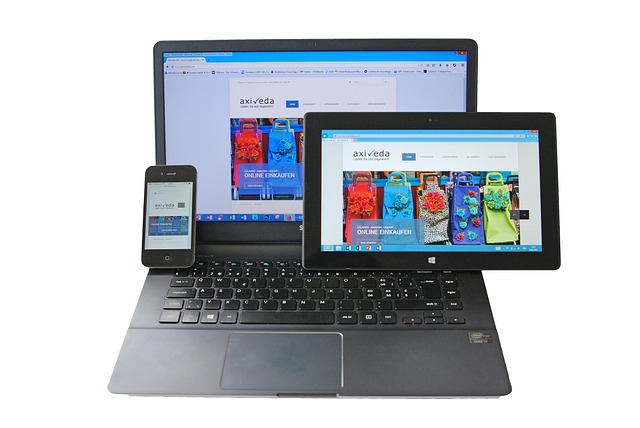
Course Instructor: Ms. Shruti Bir
Office Number: 530
Phone: 7028015701
Email: shruti.bir@dypiu.ac.in
Office hours: 9:30 am -5:30pm
Location: SID, DYPIU, Akurdi, Pune.
Level (who can take this course?): Anyone who has a keen interest and passion for designing digital products.
Credit: 6 (90 hrs.)
Evaluation:
Internal Evaluation - 80% (Continuous Evaluation)
External Evaluation - 20% (Jury)
Maximum Number of Students: 50
Course Objectives:
1. Learn how to create user flow/task flow diagrams for a prototype.
2. Learn how to build the information architecture for a prototype.
3. Learn how to build wireframes and prototypes based on information architecture and user flow diagrams.
4. Learn how to create high fidelity prototypes using standard prototyping tools.
5. Learn how to create useful, usable and visually compelling UI design for any kind of app, site or system.
6. Understand and apply the principle of design to arrange UI elements into a unified, consistent experience
7. Understand the rules for designing on various screen sizes and mobile devices.
Prerequisites:
1. Basic Understanding of Design Principles
2. Familiarity with Graphic Design Tools
3. Introduction to Web Development (Optional but Helpful)
4. Basic Knowledge of User Experience (UX) Principles:
5. Familiarity with Mobile App Concepts (for Mobile UI Design)
6. Fundamentals of Typography and Color Theory
7. Awareness of Current UI/UX Trends
8. Basic Digital Illustration Skills (Optional)
9. Introduction to Human-Computer Interaction (HCI)
Course Syllabus:
|
S. No. |
Topic |
Hours |
|
1. |
Creating user flow/task flow diagrams |
5 |
|
2. |
Building an information architecture, Accessibility |
5 |
|
3. |
Wireframing and low fidelity prototype |
5 |
|
4. |
UI design fundamentals, visual hierarchy |
10 |
|
5. |
Color for UI |
10 |
|
6. |
Typography for UI |
10 |
|
7. |
Web UI design |
10 |
|
8. |
Responsive design |
10 |
|
9. |
Mobile App UI design |
10 |
|
10. |
Google Material Design |
5 |
|
11. |
Designing assets for app distribution - icons, app store collateral |
5 |
|
12. |
UI design for other form factors - smart watches, TVs, desktop apps |
5 |
|
|
Total Hours |
90 |
Lesson Plan:
|
S. No. |
Content |
Date |
|
1 |
1. Overview of user/task flows, Importance of user flows in UX design, Key components of flows, Difference between task and user flows, Task flow examples for mobile apps 2. Introduction
to tools (e.g., Figma, Sketch, Photoshop, Illustrator, Fig jam etc.) 3. Review
of flow diagrams 4. Final adjustments and refinements to user/task flows |
9th - 13th September |
|
2 |
1. Key
elements: hierarchies, navigation, content structure 2. Introduction to accessibility (WCAG), Accessibility tools and standards, Evaluating accessibility |
16th September |
|
3 |
1. Wireframing principles, Differences between low and high-fidelity wireframes, Wireframing tools 2. Introduction to visual hierarchy, Key principles: size, color, placement, Optimizing UI for user attention 3. Prototyping principles, Tools for creating interactive prototypes (Figma) |
18th - 20th September |
|
4 |
1. Color psychology and its impact, Color schemes: complementary, analogous, triadic, Accessibility considerations (contrast ratios) 2. Principles of typography in UI, Font choices, size, spacing, line height, Typography accessibility considerations 3. Combining fonts for readability and aesthetic appeal 4. Layouts, grids, navigation, forms for web UI, Responsive web design basics, best practices in typography for UI design. 5. Integrating color and typography into UI, Creating a style guide for consistency |
23rd - 27th September |
|
5 |
1. Responsive design principles, mobile-first design approach, key differences between web UI and mobile 2. UI design, mobile UI patterns (navigation, gestures, touch targets) |
30th September - 1st October |
|
6 |
1. Principles
of Material Design (e.g., cards, buttons, elevation) 2. Best
practices for app icons, splash screens, app store assets |
3rd - 4th October |
Course Outcome:
1. Understand and Create User Flow/Task Flow Diagrams:
2. Build Effective Information Architecture with Accessibility in Mind:
3. Develop Wireframes and Low-Fidelity Prototypes:
4. Apply UI Design Fundamentals and Visual Hierarchy Principles:
5. Utilize Color Theory for Effective UI Design:
6. Implement Typography Best Practices for UI Design:
7. Design Responsive Web UIs:
8. Create Mobile App UI Designs:
9. Master Google Material Design Principles:
10. Design UI Assets for App Distribution and Other Form Factors:
Text Book: Will be suggested based upon personalized teaching and learning requirements.
Reference Book: About Face: The Essentials of Interaction Design, Alan Cooper Mobile First, Luke Wroblewski. Intuitive Design: Eight Steps to an Intuitive UI, Everett N McKay Don’t Make Me Think, Steve Krug
Study Materials: PPTs, Video links and other web references for external research and study.
- Teacher: Ms Shruti Bir
- Teacher: Mr Jeevraj S Bhalerao
- Teacher: Mr Aziz M Poonawala
- Teacher: Mr Krishna Kumar
Tentative Session Plan
Course Title : Environmental & Information Graphics Design
|
Programme |
B. Des |
|
Discipline |
Graphic Design |
|
Academic Year |
2024-25 |
|
Specialization |
GD |
|
Batch |
2022 |
|
Year |
3 |
|
Course Code |
DES3601 |
|
Semester |
6 |
|
Type of Course |
Core |
|||
|
Course In-charge |
|
|||
|
Core Faculty |
Prof Aziz Poonawala |
|||
|
Co-Faculty |
Asst Prof Jeevraj Bhalerao |
|||
|
Visiting Faculty |
- |
|||
|
|
L |
ST |
P |
Total |
|
Marks |
Internal Work |
External Jury |
External Task |
External Exam |
Total |
|
Credits |
|
|
|
6 |
Max. |
80 |
20 |
0 |
0 |
100 |
|
|
Hours |
|
|
|
90 |
Min. |
32 |
8 |
0 |
0 |
40 |
Day wise / Session wise
|
|
CLASSROOM SESSIONS |
|
|||
|
Sess. No. |
L/S/P |
Date |
Topics & Sub-Topic with
Instructional Objectives |
Duration (Hrs) |
|
|
1 |
L |
2-1-25 |
Introduction to Environmental Graphics. Assignment 1. (5 Marks) Trace the history and evolution of environmental Graphics. |
3 |
|
|
2 |
L/P |
3-1-25 |
Types of Signages. Fonts, Sizes, & Colours most frequently used in Environment Graphics. Types of Signages and their applications |
3 |
|
|
3 |
L |
6-1-25 |
Division of class into 3 groups. Discussion on how assignments are to be completed. Role of each group member. Discussion and preparation for Wayfinding Assignment. |
3 |
|
|
4 |
P |
7-1-25 |
Assignment 2. (20 Marks) Complete Mapping of Signages for Sixth floor of J Block of DYPIU. Including Fire Evacuation Plan, Exits, layout Plan, Classrooms, Fire Extinguisher Locations, Elevators, etc. Recce and Planning |
3 |
|
|
5 |
P |
13-1-25 |
Assignment 2 |
3 |
|
|
6 |
P |
15-1-25 |
Assignment 2 |
3 |
|
|
7 |
P |
16-1-25 |
Assignment 2. |
3 |
|
|
8 |
P |
17-1-25 |
Assignment 2 |
3 |
|
|
9 |
P |
20-1-25 |
Assignment 2 |
3 |
|
|
10 |
L/P |
21-1-25 |
Parking and related signages for commercial and public buildings and spaces |
3 |
|
|
11 |
|
22-1-25 |
Assignment 3. (20 Marks) Create a detailed vehicle parking plan – 2 and 4 wheelers – for the DYPIU campus with all relevant signages, way boards, traffic flow signs. Specify the size of each signage, material to be used and installation. Group Assignment |
3 |
|
|
12 |
|
23-1-25 |
Assignment 3 |
3 |
|
|
13 |
|
24-1-25 |
Assignment 3 |
3 |
|
|
14 |
|
27-1-25 |
Assignment 3 |
3 |
|
|
15 |
|
28-1-25 |
Assignment 3 |
3 |
|
|
16 |
|
29-1-25 |
Assignment 3 |
3 |
|
|
17 |
|
30-1-25 |
Assignment 3 |
3 |
|
|
18 |
|
31-1-25 |
Departmental Store Signages. Store front. External signs. Parking. Internal signs. Aisle Identification. Pricing labels and offers. Discussion and recce. |
3 |
|
|
19 |
|
10-2-25 |
Assignment 4. (10 Marks) Design and develop signages for a departmental store in the vicinity. |
3 |
|
|
20 |
|
11-2-25 |
Assignment 4 |
3 |
|
|
21 |
|
13-2-25 |
Mapping and wayfinding. |
3 |
|
|
22 |
|
14-2-25 |
Assignment 5. (5 Marks) Mapping and Wayfinding. Individual Assignment |
3 |
|
|
23 |
|
17-2-25 |
Assignment 6. (10 Marks) Individual Assignment. Highway and Road Signs. Traffic Symbols. Universal symbols that have no language. Sports Symbols. Integration of construction design for the visually impaired. |
3 |
|
|
24 |
|
18-2-25 |
Assignment 6. Submission |
3 |
|
|
25 |
|
19-2-25 |
Storefront and building signages |
3 |
|
|
26 |
|
20-2-25 |
Digital Signages and their applications |
3 |
|
|
27 |
|
21-2-25 |
Train Station signages. Essential Requirements. Recce of Akurdi Railway Station |
3 |
|
|
28 |
|
24-2-25 |
Assignment 7. (10 Marks) Train station signages |
3 |
|
|
29 |
|
25-2-25 |
Prepare for exhibition. Create the print files |
3 |
|
|
30 |
|
26-2-25 |
Exhibition |
3 |
|
|
|
|
27-2-25 |
|
|
|
|
|
|
28-2-25 |
|
|
|
|
|
|
|
Total Hours |
90 |
|
- Teacher: Mr Aziz M Poonawala
- Teacher: Mr. Shishirbindu Buddhisagar
- Teacher: Mr Mahendra Patel
- Teacher: Mr Krishna Kumar

Course Description cum Session Plan
Design Project 4 - Introduction to Programming - DES3622
SEM – VI / 3rd YEAR
Course Instructor:
Ms. Shruti BirOffice Number: 530
Phone: 7028015701
Email: shruti.bir@dypiu.ac.in
Office hours: 9:30 am -5:30pm
Location: SOD, DYPIU, Akurdi, Pune.
Teaching Assistant
Name: NAContact: NA
Office Hours: NA
Location: NA
Level (who can take this course?): 12th pass / Elementary and Intermediate course certificate holder and students who has a keen interest and passion for design and coding and has basic idea of how digital design work.
Credit: 4 (60 hrs.)
Assessment and Evaluation:
Internal Evaluation - 80% (Continuous Evaluation)
- Practical Assignments and Design Projects (40 marks)
- MCQ/Technical assessment (20 marks)
- Presentation(10 marks)
- Viva/(10 marks)
External Evaluation - 20%
Jury – 20 Marks
Maximum Number of Students: 44
Course Objectives:
- Develop basic web pages using HTML, CSS, and JavaScript.
- Apply responsive web design techniques to create mobile-friendly websites.
- Utilize Bootstrap to enhance web page responsiveness and aesthetics.
- Write basic JavaScript programs to manipulate web elements and handle user interactions.
- Implement advanced web features such as interactive galleries, modals, and forms.
- Gain exposure to modern web development trends and tools used in the industry.
- Build a fully functional mini-project website that demonstrates key programming skills.
Prerequisites:
1. Knowledge with HTML/CSS2. Basic computer literacy (using files, folders, web browsers, etc.).
3. Familiarity with using the internet and web applications.
4. A keen interest in learning how websites and applications are built.
5. No prior programming knowledge is required, but a logical mindset and problem-solving skills will be beneficial.
Course Syllabus:
|
S. No. |
Topic |
Hours |
|
1 |
Module 1: Introduction to Programming |
10 |
|
2 |
Module 2: Responsive Web Programming |
10 |
|
3 |
Module 3: Introduction to Bootstrap |
10 |
|
4 |
Module 4: Introduction to JavaScript |
10 |
|
5 |
Module 5: Advanced Programming for Web and App Features |
20 |
|
Total Hours |
60 |
|
Lessons & Session Plan:
|
Sr. No. |
Module Topics |
Duration/ Dates |
|
1 |
Module 1: Introduction to Programming
|
Feb 10 – Feb 11, 2025 |
|
2 |
Module 2: Responsive Web Programming
Assignment 1: Develop a basic 5-page website layout incorporating all fundamental website elements such as navigation, content sections, images, and forms etc. |
Feb 21 – Feb 25, 2025 |
|
3 |
Module 3: Introduction to Bootstrap
Assignment 2: Hands-on project: Implement Bootstrap features into the existing 5-page website to create the responsiveness. |
Feb 27 –28Feb & March 03, 2025 |
|
4 |
Module 4: Introduction to JavaScript
Assignment 3: Adding interactivity to the existing website (interactive buttons, simple animations, basic form validation) |
4 - 5 March and 12 -13 March, 2025 |
|
5 |
Module 5: Advanced Programming for Web and App Features
Assignment 4: Adding advanced features to the website (forms, modals, animations, API integration) |
17 - 21 March |
Course Outcome:
1.
Enhances
Academic Reputation: The course provides a strong foundational
programming curriculum, improving the university’s academic standards.
2.
Industry-Relevant
Curriculum: Aligns with industry demands, making the
university's graduates more employable.
3.
Promotes
Interdisciplinary Learning: Encourages
collaboration between departments such as computer science, design, and
business.
4.
Supports
Research & Innovation: Encourages
students to explore emerging technologies, contributing to university-led
research projects.
5.
Attracts
More Enrolments: By offering a well-structured programming
course, the university can appeal to a broader range of students, including
those interested in UI/UX, software development, and web design.
6.
Develops
Fundamental Programming Skills:
Provides a strong foundation in programming concepts, essential for web and
software development.
7.
Enhances
Problem-Solving Abilities:
Encourages logical thinking and algorithmic problem-solving skills.
8.
Prepares
for Industry Roles: Equips students with the skills required for
entry-level roles in web development, UI/UX design, and software engineering.
9.
Encourages
Hands-On Learning: Through practical projects, students gain
real-world experience in creating websites and interactive applications.
10.
Opens
Pathways for Advanced Learning:
Serves as a stepping stone for further studies in full-stack development,
mobile app development, and data science.
Text book:
Head First Programming - Authored by Paul Barry and David Griffiths.Reference Book:
Learning Processing: A Beginner's Guide to Programming Images, Animation, and InteractionStudy Materials:
Pdfs, Docs, Exl sheets, PPTs and also supportive internal tutorial Videos will be provided as required alongside the day-to-day lectures to make the learning and teaching more interactive, easy and fun.Web references for external research and study:
Research Papers/Articles recommended for reading:https://developer.mozilla.org/en-US/docs/Web/JavaScript/Guide/Introduction
W3school - https://www.w3schools.com/
- Teacher: Ms Shruti Bir
- Teacher: Mr Krishna Kumar
- Teacher: Mr Krishna Kumar
- Teacher: Mr Aziz M Poonawala
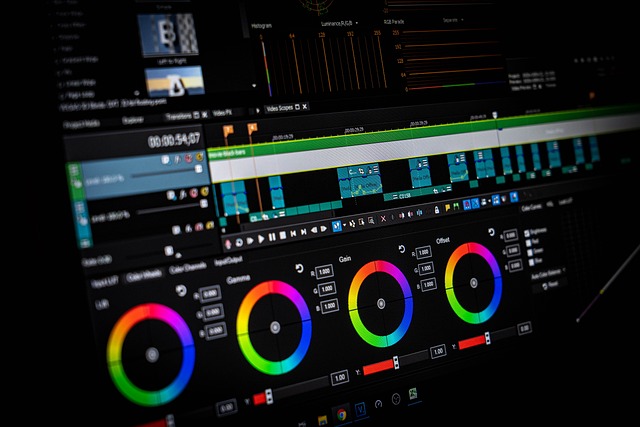
Course
Description cum Session Plan
Design Project 5 Motion Design for
UI - DES3624
SEM – VI / 3rd YEAR
Course Instructor:
Ms.
Shruti Bir
Office Number: 530
Phone: 7028015701
Email:
shruti.bir@dypiu.ac.in
Office hours: 9:30 am -5:30pm
Location: SOD, DYPIU,
Akurdi, Pune.
Teaching Assistant
Name: NA
Contact: NA
Office Hours: NA
Location: NA
Level (who can take this course?): 12th pass / Elementary and Intermediate course certificate holder and students who has a keen interest and passion for design and VFX and has basic idea of how digital design work.
Credit: 5 (75 hrs.)
Assessment and Evaluation:
Internal Evaluation - 80%
(Continuous Evaluation)
- Practical Assignments and Design Projects (60 marks)
- Presentation/Viva (20 marks)
Jury – 20 Marks
Maximum Number of Students: 43
Course Objectives:
1. Learn the application of animation and motion graphics in UI design
2. Learn how to prototype motion graphics animations using software like
Adobe After Effects and other prototyping software as well as with code
3. Learn to deliver specifications for UI animations to software developers
Prerequisites:
- Knowledge of UI design
- Knowledge of prototyping tools
- Familiarity with basic concepts of animation
- An introduction to industry standard digital tools: Adobe Animate, After effect/Premier and 3D tools such as Blender/Maya and Media Encoder.
Course Syllabus:
|
S. No. |
Topic |
Hours |
|
1 |
Module 1: Introduction to Motion Design in UI |
5 |
|
2 |
Module 2: Introduction to Motion Design tools |
5 |
|
3 |
Module 3 : Function of Motion Graphics in App/Website |
5 |
|
4 |
Module 4: Motion Design for Advance UI Elements |
10 |
|
5 |
Module 5: Usability and Functional Role of Animation in UI |
10 |
|
6 |
Module 6: Conceptualizing, Storyboarding, and Prototyping for Motion Video |
20 |
|
7 |
Module 7: Polishing, Optimization and Successful delivery of the M Video |
5 |
|
Total Hours |
60 |
|
Lessons & Session Plan:
|
S. no. |
Content |
Date |
|
1 |
Module 1: Introduction to Motion Design in UI · What is Motion Design or Motion Graphics Design in UI. · Key Elements of Motion Design: Animation, Typography, Visual Graphics, Videos, Images, Shapes & Forms, Illustrations & Icons, Sounds & music, Compositions & Layout, Colors & Textures, Transitions, Timing & Speed, Depth & Space, Staging & Lighting. Visual Effects (VFX), Storytelling. · Importance of Motion design: Learn the Importance of Motion design in UI/UX using online references, case studies and examples etc. · Role of Motion Design in UI/UX: Explore the role of motion design in enhancing user interfaces (UI), including providing visual feedback, guiding user interactions, and conveying hierarchy and structure. |
2nd Jan - 6th Jan |
|
2 |
Module 2: Introduction to Motion Design tools Primary Adobe Motion Design Tools 1. Adobe After Effects – Industry-standard motion graphics and visual effects software used for animations, compositing, and special effects. 2. Adobe Premiere Pro – Professional video editing software that supports motion graphics, transitions, and video effects. 3. Adobe Animate – 2D animation software for web, game, and video projects, formerly known as Flash. Supporting Tools for Motion Design 5. Adobe Photoshop 6. Adobe Media Encoder – Assists in rendering and exporting motion graphics and animations in various formats. And support advance level optimisation. 7. Blender/Maya
|
13th Jan – 18th Jan |
|
3 |
Module 3: Function of Motion Graphics in App/Website · Function of Motion Graphics Design: Understand the function of Motion Graphics Design and the purpose of it: State Change Animations, Reveal Interactions/Animations, Emphasis Animations etc. · Exploring advance UI as motion videos : Animated web banner/ product launch/promotional videos etc. · Assignment 1- Animated web banner/Product Launch Motion Video (Advance form of UI) 1. Concept Development: Based upon previous research and learning, develop the concept for creating an Animated web/app banner or Product launch Video using Adobe Animate and Adobe Premier. 2. Create Storyboard 3. Create the animated video: Implement all your learnings, skills, technical knowledge to finally execute the concept developed in storyboard and submit the Animated Web/App banner/ Animated Product Launch Video before the deadline. |
19th Jan – 24th Jan |
|
4 |
Module 4: Motion Design for Advance UI Elements 1. Advance UI elements: learning about the advance UI elements and understanding the need for more complex and advance form of Motion Design for advance UI elements. Examples: 2D/3D Product Launch Videos/Product Promotional Videos/Explainer Videos/Brond Story/Intro Videos 2. Advance techniques & tools: Introduction of After Effects and its features, Introduction of 3D Objects/Models/Character animation for motion Design 3. Code-based motions for interactive experiences 4. Online Research: Through advance techniques and tools, understand the specific needs of a brand and create brand stories, implement new services, enhance the existing product/services or simple celebrate an achievement or simply generate more traffics to maintaining brand reputation and its consistency.
|
25th Jan – 30th Jan |
|
5 |
Module 5 : Usability and Functional Role of Animation in UI · Adobe Animate/Adobe Premier: Introduction to animation tool and its advance features. · Motion Design Principles: Animation in basic UI elements: Easing (Slow In, Slow Out), Offset & Delay, Parenting, Transformation, Value Change, Masking, Overlay, Cloning, Obscuration, Parallax, Dimensionality, Dolly & zoom. · Introducing 2D characters and motion: 2D character rigging and animations. · Introduction of video as advance UI elements: transitions and VFX, understand how Videos and animation contributes to the usability of interfaces by providing clear feedback, improving orientation, and reducing cognitive load. |
31st Jan - 31st Jan |
|
6 |
Module 6: Conceptualization, Storyboarding, Prototyping of Motion Video · Master the process of storyboarding and conceptualization to plan and visualize UI animations and transitions in order to create and advance UI element. · Prototype animations, vfx using tools like Adobe animate, After Effects, Adobe Premier or even 3D tools like Blender/Maya to achieve the advance level and for detailed motion design. · Assignment 2 - Conceptualization, Storyboarding and Report writing 1. Concep Development: Based upon previous research and learning, develop the concept for creating an Animated web/app banner or Product launch Video using Adobe Animate and Adobe Premier. 2. Report writing and Create Storyboard 3. Create the Prototype of Animated/Motion Video: Implement all your learnings, skills, technical knowledge to finally execute the concept developed and submit the Animated Web/App banner/ Animated Product Launch Video before the deadline. 4. Presentation: Present your project to UI/UX and other design experts and faculties. |
5th Feb – 26th Feb
27th and 28th Feb – Presentation
|
|
7 |
Module 7: Polishing, Optimization and Successful delivery of the M Video · Iteration - taking feedback and polishing every element of the · Animation/Motion Video · Polishing the Video to match the Industry Standard · Optimization of the media. Introduction to Optimization tools · Preparing the motion video to embedded into the App/Web, Introduction to Adobe Media Encoder and other optimization tools as/if required. |
3rd March -5th March |
Course Outcome:
- Demonstrate a strong understanding of motion design principles and their application in UI/UX.
- Develop advanced motion graphics using industry-standard tools and techniques.
- Create purpose-driven and aesthetically compelling animations for a variety of UI elements.
- Optimize motion assets for seamless integration across digital platforms.
- Build a professional motion design portfolio showcasing their expertise.
Text Book: N/A
Text book:
- Designing Interface Animation: Improving the User Experience Through Animation - Author: Val Head
- Design for Motion: Fundamentals and Techniques of Motion Design - Author: Austin Shaw
Reference Book:
1. Designing Interface Animation:
Improving the User Experience through Animation by Val Head
2. Motion Design Toolkit by Austin Shaw
3. The Animator's Survival Kit by Richard Williams
4. UI Animation Essentials for
Non-Designers by Pablo Stanley
5. Creative Motion Graphic Titling for
Film, Video, and the Web by Yael
Braha and Bill Byrne
Study Materials:
Pdfs, Docs, Exl sheets, PPTs and also supportive internal tutorial Videos will be provided as required alongside the day-to-day lectures to make the learning and teaching more interactive, easy and fun.
Web references for external research and study:
- Compelling and Moving: A Guide to Motion Design Principles
- Making Motion Meaningful
- Adobe Animate Tutorials
https://helpx.adobe.com/animate/tutorials.html
- Adobe After Effects Help Centre
https://helpx.adobe.com/after-effects
- Premiere Pro Tutorials
https://helpx.adobe.com/premiere-pro/tutorials.html
- Teacher: Ms Shruti Bir
Course Description cum Session Plan
Film Design - DES3603
SEM – VI / 3rd YEAR
● Course Instructor
Name: Ketan M Deore
Office Number:
Phone: 9712695416
Email: ketan.deore@dypiu.ac.in
Office hours: 9:00 am to 5 pm.
Location: DYPIU Akurdi.
- Teaching Assistant: (NA)
Name:
Contact:
Office Hours: Time slots
Location
- Level (who can take this course?): 12th pass / Elementary and Intermediate course certificate
- Credit: 1-1-4-4
- Evaluation: Internal and external assignments (80 + 20 )
- Breakup of evaluation: % wise (80% internal and 20% external / jury)
- Maximum Number of Students: 44
Course Objectives:
1. Learn to execute ideas and concepts using Digital film. Learn the basics of Film Design and make a short film.
2. Learn to execute work in group projects on tight deadlines.
3. Learn the entire process of film making from script to screen.
4. Learn the difference between short film and advertisement film.
5. Learn to work in an industry like environment.
Prerequisites:
Knowledge to shoot videos with Digital Camera or Mobile phone. Know some basic fundamentals of film making from the previous film making course. Basic Knowledge in English to write the script
Course Syllabus:
|
Modules |
Lect. |
|
Module-I: History and process of filmmaking |
12 |
|
Module II How to develop a story and write script. |
10 |
|
Module-III: How to make script into screenplay and shooting script |
12 |
|
Module-IV Revision of 5c's of Cinematography 1. Camera 2.Camera Angles 3. Cuts 4.Close-up and 5.Continuity |
10 |
|
Module-V: Storyboarding the story |
10 |
|
Module-VI: Checking of Storyboards and feedback session |
12 |
|
Module-VII Watching movie clips and songs from films to study 1. Mesa en scene 2. Lighting and sound |
10 |
|
Module-VII Lighting for a movie Basics |
10 |
|
Module-IX Shooting of short film |
12 |
|
Module-X Editing and Post production work |
10 |
|
Module-XI Screening of the final films and submission for grading |
12 |
|
Total hours |
120 |
Lesson Plan:
|
Sr. No |
Content (Daily Plan) |
Date (Proposed) |
|
1 |
History and process of filmmaking |
3/10/2025 |
|
2 |
How to develop a story and write script. |
3/11/2025 |
|
3 |
How to develop a story and write script. |
3/12/2025 |
|
4 |
Movie Screening for understanding the story flow |
3/13/2025 |
|
5 |
Movie Screening for understanding the story flow |
3/17/2025 |
|
6 |
How to make script into screenplay and shooting script |
3/18/2025 |
|
7 |
How to make script into screenplay and shooting script |
3/19/2025 |
|
8 |
Movie Screening for understanding the story flow |
3/20/2025 |
|
9 |
Movie Screening for understanding the story flow |
3/21/2025 |
|
10 |
Revision of 5c's of Cinematography |
3/24/2025 |
|
11 |
Revision of 5c's of Cinematography |
3/25/2025 |
|
12 |
1. Camera 2.Camera Angles 3. Cuts 4.Close-up and 5.Continuity |
3/26/2025 |
|
13 |
Storyboarding the story |
3/27/2025 |
|
14 |
Storyboarding the story |
3/28/2025 |
|
15 |
Checking of Storyboards and feedback session |
4/1/2025 |
|
16 |
Watching movie clips and songs from films to study 1. Mesa en scene 2. Lighting and sound |
4/2/2025 |
|
17 |
Lighting for a movie Basics |
4/3/2025 |
|
18 |
Shooting of short film |
4/4/2025 |
|
19 |
Shooting of short film |
4/7/2025 |
|
20 |
Shooting of short film |
4/8/2025 |
|
21 |
Shooting of short film |
4/9/2025 |
|
22 |
Shooting of short film |
4/11/2025 |
|
23 |
Shooting of short film |
4/15/2025 |
|
24 |
Shooting of short film |
4/17/2025 |
|
25 |
Editing and Post production work |
4/21/2025 |
|
26 |
Editing and Post production work |
4/22/2025 |
|
27 |
Screening of the final films and submission for grading |
4/23/2025 |
- Course Outcome:
|
CO1 |
Filmmaking Fundamentals: Understand the history, process of filmmaking, and script development |
|
CO2 |
Cinematography and Storyboarding: Master the 5 C's of cinematography, create storyboards, and study film elements like mise-en-scène, lighting, and sound |
|
CO3 |
Film Production and Post-Production: Execute the shooting, editing, and post-production of a short film, culminating in a final screening and submission |
- Text Book:
- "Film Directing: Shot by Shot" by Steven D. Katz
- "The Filmmaker's Guide to Production Design" by Vincent LoBrutto
- Reference Book:
- An Introduction by Kristen Thompson
- The Visual Story : Creating the Visual Structure of Film, Tv , and Digital Media
- The Design of EveryDay things. Don Norman.
- Study Materials:
- Notes – Based on the various books and topics
- Youtube Videos – Interviews or podcast related to topics
- PPT
Approved / Not approved
(Dr. Madhavi Deshpande)
Dean Academics - DYPIU
Director
School of Commerce and Management,
D.Y. Patil International University, Akurdi, Pune
- Teacher: Mr Ketan M Deore
- Teacher: Dr. Vijay Shah
- Teacher: Mr Krishna Kumar

Annexure V.a
Course Description cum Session Plan
Design Project 6 – Game Design and Development - DES3625
SEM – VI / 3rd YEAR
Course Instructor:
Ms.
Shruti Bir
Office Number: 530
Phone: 7028015701
Email:
shruti.bir@dypiu.ac.in
Office hours: 9:30 am -5:30pm
Location: SOD, DYPIU,
Akurdi, Pune.
Teaching Assistant
Name: NA
Contact: NA
Office Hours: NA
Location: NA
Level (who can take this course?): 12th pass / Elementary and Intermediate course certificate holder and students who has a keen interest and passion for Games Design and also ready to advance their skills to the next level to become an industry ready professional.
Credit: 8 (75 hrs.)
Assessment and Evaluation:
Internal Evaluation - 80% (Continuous Evaluation)Practical Assignments and Design Projects (60 marks)
Presentation(10 marks)
Viva/(10 marks)
External
Evaluation - 20%
Jury – 20 Marks
Maximum Number of Students: 44
Course Objectives:
- Understand the principles of visual scripting and how it applies to game development.
- Develop interactive game mechanics using Volt in Unity and Blueprints in Unreal Engine.
- Create high-quality UI/UX elements for game interfaces using Photoshop & Illustrator.
- Design 3D assets using Blender & Maya for integration into game projects.
- Implement visual effects, animations, and interactions without traditional coding.
- Optimize game logic and improve performance using efficient visual scripting techniques.
- Work in teams to develop a fully functional game prototype by the end of the module.
- Develop problem-solving skills related to debugging and enhancing gameplay interactions.
Prerequisites:
- Understanding user experience, interface design, and usability principles.
- Basic Game Design Concepts: Knowledge of game mechanics, player engagement, and level design.
- 2D & 3D Digital Art Basics: Familiarity with Photoshop, Illustrator, Blender, or Maya for asset creation.
- Basic Programming Logic: Understanding of logic flow, conditions, loops.
- Project-Based Learning & Collaboration: Ability to work in teams, brainstorm, and present game concepts.
Course Syllabus:
|
S. No. |
Topic |
Hours |
|
1 |
Module 1: Fundamentals of 2D Game Design & Visual Scripting |
10 |
|
2 |
Module 2: 2D Game Asset Creation & Integration |
10 |
|
3 |
Module 3: 2D Game Mechanics & Interaction |
10 |
|
4 |
Module 4: Developing a Complete 2D Game |
10 |
|
5 |
Module 5: 3D Game Asset Creation & Environment Design |
10 |
|
6 |
Module 6: 3D Character Rigging & Animation |
20 |
|
7 |
Module 7: 3D Game Mechanics & AI Development |
5 |
|
8 |
Module 8: Final 3D Game Development & Optimization |
|
|
Total Hours |
120 |
|
Lessons & Session Plan:
|
Modules |
Phase 1: 2D Game Design & Development (Modules 1-4) |
Date |
|
Module 1 |
Fundamentals of 2D Game Design & Visual Scripting
|
12/03/25 – 25/03/25 |
|
Module 2 |
2D Game Asset Creation & Integration
Assignment 1: 2D Game Asset Creation Objective:
Task:
Documentation (PDF): explaining the design process |
26/03/25 -28/03/25 |
|
Module 3 |
2D Game Mechanics & Interaction
Assignment 2: Build a Simple 2D Game Prototype Objective:
Task:
Submission Format:
Documentation (PDF): explaining game mechanics and scripts. |
31/03/25 – 02/04/25 |
|
Module 4 |
Developing a Complete 2D Game
|
03/04/25 – 07/04/25 |
|
|
Phase 2: 3D Game
Design & Development (Modules 5-8) |
|
|
Module 5 |
3D Game Asset Creation & Environment Design
|
08/04/25 – 09/04/25 |
|
Module 6 |
3D Character Rigging & Animation
Assignment 3: 3D Character & Environment Modelling Objective:
Task:
Submission Format:
Game documentation: A PDF report detailing the modelling process. |
11/04/25 – 15/04/25 |
|
Module 7 |
3D Game Mechanics & AI Development
Assignment 4: Interactive 3D Game Prototype Objective:
Task:
Submission Format:
Game documentation: (PDF) explaining Blueprints used. |
16/04/25 – 17/04/25 |
|
Module 8 |
Final 3D Game Development & Optimization
Assignment 5: Final Presentation (2D & 3D Game Showcase) Objective:
Task:
Submission Format:
|
21/04/25 – 23/04/25 |
Course Outcome:
- Demonstrate proficiency in visual scripting using Volt & Blueprints.
- Design and implement game UI/UX with industry-standard tools.
- Create and integrate 2D & 3D assets into a game engine.
- Develop interactive prototypes that showcase engaging game mechanics.
- Optimize gameplay logic and performance without writing code.
- Collaborate effectively in a game development pipeline.
- Present and document a fully functional game prototype as a portfolio project.
- Analyse and apply game design principles to create immersive user experiences.
Text book:
Reference book: Books Recommended
A Theory of Fun
The Art of Game Design: A Book of Lenses
Rules of Play: Game Design Fundamentals
The Ultimate Guide to Video Game Writing and Design
The Gamification of Learning and Instruction: Game-based Methods and
Strategies for Training and Education
Level Up! The Guide to Great Video Game Design
Holistic Game Development with Unity: An All-in-One Guide to Implementing
Game Mechanics, Art, Design and Programming
Web References : Research Papers/Articles recommended for reading:
https://docs.unity3d.com/Manual/index.html
Study Materials:
Pdfs, Docs, Exl sheets, PPTs and also supportive internal tutorial Videos will be provided as required alongside the day-to-day lectures to make the learning and teaching more interactive, easy and fun.
- Teacher: Ms Shruti Bir
- Teacher: Mr Ketan M Deore
- Teacher: Ms. Monika Sharma
- Teacher: Mr Krishna Kumar
- Teacher: Mr Aziz M Poonawala
- Teacher: Mr Krishna Kumar
- Teacher: Mr Krishna Kumar
- Teacher: Mr.Swet Chandan
- Teacher: Mr Krishna Kumar
- Teacher: Varun Sharma
- Teacher: Varun Sharma
- Teacher: Mr Mahendra Patel
- Teacher: Varun Sharma
- Teacher: Dr. Vijay Shah
- Teacher: Varun Sharma
- Teacher: Dr. Vijay Shah
- Teacher: Sandeep Dongare
- Teacher: Dr. Vijay Shah
- Teacher: Varun Sharma
- Teacher: Varun Sharma
- Teacher: Dr. Vijay Shah
- Teacher: Dr. Vijay Shah
- Teacher: Varun Sharma
- Teacher: Mr.Swet Chandan
- Teacher: Mr. Akash Sambhaji Dange
- Teacher: Ms Karishma Doke
- Teacher: Bhakti Sathe
- Teacher: Mr Chandresh Shah
- Teacher: Dr. Bahubali Shiragapur
- Teacher: Dr Bansidhar Joshi
- Teacher: Dr Sanjay Mohite
- Teacher: Dr. Rahul Sharma
- Teacher: Dr Jagadish Jakati
- Teacher: Dr Sanjay Mohite
- Teacher: Dr. Rahul Sharma
- Teacher: Dr. Pragati Choudhari
- Teacher: Dr Sanjay Mohite
- Teacher: Dr. Rahul Sharma
- Teacher: Mrs Asha S Ayakar
- Teacher: Dr Sanjay Mohite
- Teacher: Dr. Rahul Sharma
- Teacher: Dr Shubhro Chakrabartty
- Teacher: Mr.Swet Chandan
- Teacher: Mr. Rajkumar Chaudhari
- Teacher: Anil Narasipuram
- Teacher: Mr. Rajkumar Chaudhari
- Teacher: Dr. Sanjay Badhe
- Teacher: Dr. Maheshwari Biradar
- Teacher: Dr Shubhro Chakrabartty
- Teacher: Anil Narasipuram
- Teacher: Dr. Swapnil Bhurat
- Teacher: Mrs. Heena Bhatia
- Teacher: Mr. Akash Sambhaji Dange
- Teacher: Anil Narasipuram
- Teacher: Dr Richa Purohit
Design Thinking 1: DES1201
The "Design Thinking 1" course introduces students to the foundational principles and processes of design thinking, focusing on user-centered problem-solving. Through hands-on assignments and interactive sessions, students will learn to empathize with users, define actionable problem statements, generate creative ideas, prototype solutions, and test them effectively. The course emphasizes collaboration, creative confidence, and real-world applications to address societal challenges while fostering essential design skills.
- Teacher: Ms. Monika Sharma
This advanced course in Design Thinking builds on foundational principles to tackle complex societal challenges. It emphasizes problem-solving through systems thinking, empathy, and innovative prototyping techniques like 3D printing. Students will develop research capabilities, frame problems effectively, and create scalable solutions, preparing them for real-world challenges in design-led societal change.
- Teacher: Ms. Monika Sharma
- Teacher: Dr. Shailesh Ghodke
- Teacher: Mr. Naresh Bathula
- Teacher: Mr Kuntal De
- Teacher: Varun Sharma

Name of the Course: ECE1106: Design Thinking and Fabrication Technics
- Course Instructor:
Name: Dr. Atul R Kolhe
Phone: 9970456457
Email: atul.kolhe@dypiu.ac.in
Office hours: 9:30 AM to 5:00 PM
Location: ED Cell 2nd Floor Near Central Lift)
Level : Civil Engineering & Any Under Graduate Level student
- Credit: 2-0-1-3.0
- Evaluation:
- Breakup of evaluation: % wise
- Theory:
i. Mid-Semester Exam: 30%
ii. Assignments/Case Studies: 20%
iii. End-Semester Exam: 50%
- Tutorials:
i. Class Participation and Problem Solving: 40%
ii. Case Study Presentation: 60%
- Practical:
i. Continuous Evaluation: 50%
ii. Final Viva and Project Submission: 50%
Maximum Number of Students: 60
- Course Description
This course emphasizes the principles and process of Design Thinking as a structured approach to solving real-world engineering challenges. Tailored for first-year Civil Engineering students, it introduces a human-centered, collaborative, and iterative methodology to foster creativity and innovation in problem-solving.
Students will learn to empathize with users, define problems, ideate potential solutions, and create prototypes while refining their designs through feedback and testing. The course also incorporates basic fabrication techniques, such as model-making and 3D printing, enabling students to bring their ideas to life.
By focusing on the mindset and process of Design Thinking, this course equips students with the skills to address complex engineering problems with innovative, sustainable, and user-focused solutions.
Through practical sessions, students will learn fundamental fabrication techniques, including model-making, 3D printing, and material manipulation, to translate design concepts into tangible outputs. By fostering creativity and technical skills, this course prepares students to approach engineering problems with a multidisciplinary perspective and a focus on sustainable and efficient design solutions.
Course Objectives:
- To introduce design thinking principles for solving real-world civil engineering challenges.
- To provide knowledge of fabrication techniques, including advanced digital tools and 3D printing technologies.
- To develop the ability to create sustainable, functional, and innovative civil engineering solutions.
Prerequisites:
Basic Engineering Graphics, Advanced Drawing Techniques, and familiarity with CAD tools.
Course Syllabus:
Lesson Plan:
|
Sr. No |
Content (Daily Plan) |
Date (Proposed) |
|
1 |
Unit 1: Introduction to Design Thinking and its Overview |
13/01/25 |
|
2 |
Empathize, Define, Ideate, Prototype, and Test phases. |
15/01/25 |
|
3 |
Importance of human-centered design in civil engineering. |
17/01/25 |
|
4 |
Problem-Solving in Civil Engineering: Case studies in infrastructure, urban planning, and materials innovation. |
20/01/25 |
|
5 |
Techniques for brainstorming and idea generation. |
22/01/25 |
|
6 |
Visualization
Tools: |
24/01/25 |
|
7 |
27/01/25 |
|
|
8 |
Advanced Drafting Tools: Application of AutoCAD, Revit, and SketchUp for 2D and 3D modeling. |
29/01/25 |
|
9 |
Layer management, blocks, templates, and standards in civil engineering drawings. |
31/01/25 |
|
10 |
Introduction to BIM and its advantages in collaborative design. |
03/02/25 |
|
11 |
Parametric Design Fundamentals:Basics of Rhino and Grasshopper for parametric modeling. |
05/02/25 |
|
12 |
Cross-Disciplinary Integration: Combining architectural, structural, and service designs into a cohesive framework. |
07/02/25 |
|
13 |
Unit
3: Overview of Fabrication Methods: |
10/02/25 |
|
14 |
Introduction
to 3D Printing: |
12/02/25 |
|
15 |
Materials for construction: concrete, polymers, and composites. |
14/02/25 |
|
16 |
File
Preparation for Fabrication: |
17/02/25 |
|
17 |
Applications
in Construction: |
21/02/25 |
|
18 |
o Full-scale applications: walls, beams, bridges, and modular housing. |
24/02/25 |
|
19 |
Unit
4: Structural Optimization Techniques: |
28/02/25 |
|
20 |
Sustainability
in Fabrication: |
3/3/25 |
|
21 |
o Impact of 3D printing on reducing waste and energy consumption. |
05/03/25 |
|
22 |
Sustainable
Case Studies: |
07/03/25 |
|
23 |
Future
Trends: |
17/03/25 |
|
24 |
o Digital twins and their application in construction. |
19/03/25 |
|
25 |
Unit
5: Prototyping Techniques: |
21/03/25 |
|
26 |
o Iterative prototyping using 3D printing |
24/03/25 |
|
27 |
Modular components using 3D printing |
21/03/25 |
|
28 |
2.
Testing and Feedback: |
24/03/25 |
|
29 |
o Role of simulations and physical testing. |
26/03/25 |
|
30 |
3.
Iterative Design: |
28/03/25 |
Laboratory
|
Sr. No |
Content |
Date |
|
1. |
Draw a Detailed Plan Elevation Plan and Section of Residential Building using AutoCaD with Layer Management |
22/01/25 |
|
2 |
Work on hypothetical design challenges using design thinking principles |
05/02/25 |
|
3 |
Design an innovative plan and elevation for any special structure |
19/02/25 |
|
4 |
Analyze real-world projects like 3D-printed houses, modular bridges, or innovative urban infrastructure |
05/03/25 |
|
5 |
Explore advanced functions of AutoCAD, Revit, Rhino, and Grasshopper under instructor supervision. |
19/03/25 |
|
6 |
Present initial drafts of designs or fabricated small building component models |
26/03/25 |
- Course Outcome:
Upon successful completion, students will be able to:
- Apply design thinking methodologies to civil engineering problems.
- Use advanced digital tools for modeling and detailing.
- Understand and implement fabrication techniques, including 3D printing and parametric design, for prototypes and structures.
- Emphasize sustainability and efficiency in design and fabrication practices.
- Text Book:
- Design Thinking for Engineers and Architects – S.M. Jain
- AutoCAD 2024: A Problem-Solving Approach – Sham Tickoo
- 3D Concrete Printing Technology: Construction and Building Applications – Jay G. Sanjayan, Ali Nazari, and Behzad Nematollahi
- Reference Book:
- Solving Problems with Design Thinking: Ten Stories of What Works – Jeanne Liedtka, Andrew King, Kevin Bennett
- Mastering Autodesk Revit 2024 – Daniel John Stine
- Additive Manufacturing Technologies: Rapid Prototyping to Direct Digital Manufacturing – Ian Gibson, David Rosen, Brent Stucker
- Teacher: Dr. Atul Kolhe
- Teacher: Dr. Swapnil Bhurat
- Teacher: Dr. Prateek Srivastav
- Teacher: Dr. Swapnil Bhurat
- Teacher: Mr Rupam Ghosal
- Teacher: Parvez Patel
- Teacher: Mr Rupam Ghosal
- Teacher: Parvez Patel
- Teacher: Mr.Swet Chandan
- Teacher: Mr Saurabh Gargote
- Teacher: Dr. Rahul Sharma
- Teacher: Mr Saurabh Gargote
- Teacher: Dr. Rahul Sharma
- Teacher: Dr. Prateek Srivastav
- Teacher: Mr. Rajkumar Chaudhari
- Teacher: Mr. Akash Sambhaji Dange
- Teacher: Anil Narasipuram
- Teacher: Dr. Swapnil Bhurat
- Teacher: Pranil Choudhari
- Teacher: Dr Arvind Kumar Mathur
- Teacher: Pranjal Shahinath Tekade
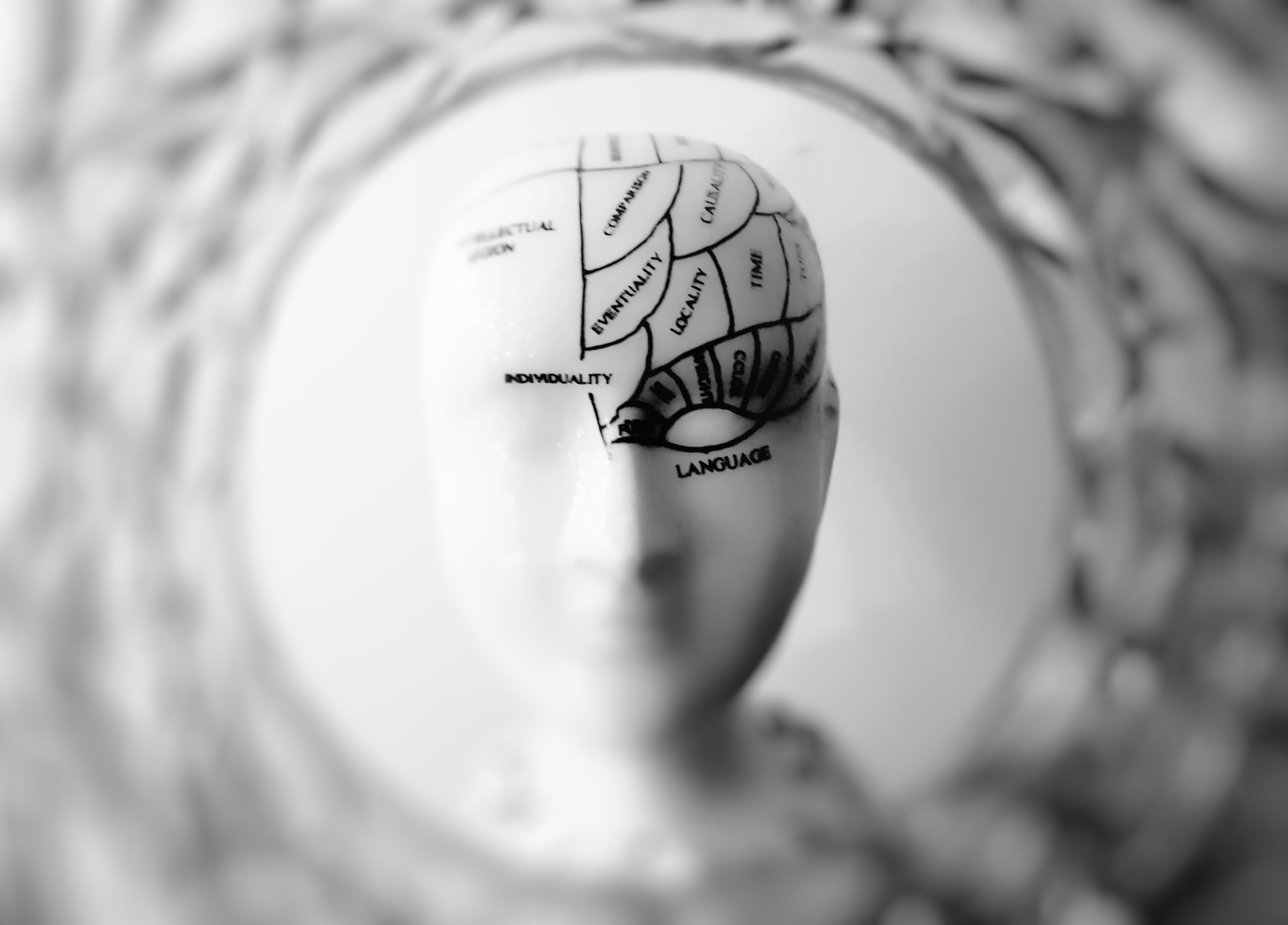
Course: Design Thinking II
Aim: Introduce participants to Design Thinking principles and foster creative problem-solving skills.
Objectives:
- Define and empathize with users' needs.
- Generate innovative ideas through ideation techniques.
- Prototype and iterate solutions effectively.
- Collaborate in interdisciplinary teams.
- Apply Design Thinking in real-world scenarios.
Session No. | Topic & Sub-Topic | Duration (Hrs.) |
The human brain, subconscious mind, psychology of interaction design, cognitive frameworks | 5 | |
Cognition and perception, visual perception and color vision | 3 | |
Memory, types of memory | 3 | |
Thinking , action, learning, mental models, cognitive biases | 3 | |
Attention, choice, cognitive load | 5 | |
Emotion and experience, peak experience, flow | 3 | |
Visceral, behavioral and reflective design | 5 | |
Feedback loops, social validation and virality | 3 | |
Total Hrs. | 30hrs. |
`Prerequisite/s - Understanding of Design-related courses: While not a strict prerequisite, taking courses in design or related fields like graphic design, industrial design, or human-computer interaction can be advantageous. These courses can provide you with a foundational understanding of design principles, aesthetics, and user-centered design.
Mode of submission - Soft Copies
- Teacher: Mr Krishna Kumar
The Design Thinking Laboratory (Fabrication Lab) is an engaging, hands-on course for first-year Mechanical Engineering students that introduces the essentials of creative problem-solving, prototyping, and design thinking. This lab empowers students to tackle real-world engineering challenges using a structured design-thinking approach, encompassing five stages: empathize, define, ideate, prototype, and test.
In the lab, students learn to work collaboratively in teams, developing empathy and understanding user needs to create practical, user-centered solutions. Through project-based learning, students gain direct experience with rapid prototyping, allowing them to turn ideas into physical prototypes, test solutions, and refine designs iteratively.
The course also introduces students to basic fabrication techniques. Skills in additive manufacturing (3D printing) and subtractive processes (like CNC milling) are built, along with familiarity with hand tools and basic electronics. Working with materials such as plastic, wood, and metal, students build confidence and competence in creating functional prototypes.
Alongside technical skills, the lab emphasizes communication and presentation skills, essential for documenting and effectively sharing the design process and final outcomes. This prepares students to confidently communicate their ideas in professional and academic contexts.
By the end of the course, students will have a solid foundation in design thinking, practical fabrication skills, and the ability to approach problems with creativity and resilience, preparing them for future engineering challenges and innovations.
- Teacher: Dr Vikas Dive
- Teacher: Dr Aniket Kolekar

Development Communication is a dynamic and interdisciplinary course that delves into the intricate relationship between communication and socioeconomic development. This course explores the theories, strategies, and real-world applications of communication in the context of fostering positive change within diverse communities and regions globally. Through an examination of historical and contemporary perspectives, students gain insight into the multifaceted role of communication in driving social development, from advocacy and lobbying to the ethical and cultural considerations that underpin effective communication initiatives. By the end of this course, students will be equipped with the knowledge and skills needed to design, implement, and critically evaluate development communication campaigns and projects.
- Teacher: Ms. Neha Dubey

- Teacher: Ms. Neha Dubey
- Teacher: Ms. Neha Dubey
- Teacher: Suraj Shete
- Teacher: Dr. Bahubali Shiragapur
- Teacher: Dr. Maheshwari Biradar
- Teacher: Dr Shubhro Chakrabartty
- Teacher: Ms Karishma Doke
- Teacher: Mrs Monika Kapgate
- Teacher: Jayashri Kawale
- Teacher: Bhakti Sathe
- Teacher: Dr. Bahubali Shiragapur
- Teacher: Dr Jagadish Jakati
- Teacher: Jayashri Kawale
- Teacher: Dr. Rahul Sharma
- Teacher: Dr Jagadish Jakati
- Teacher: Mrs Monika Kapgate
- Teacher: Dr. Rahul Sharma
- Teacher: Ms. Shraddha Jadhav
- Teacher: Dr. Rahul Sharma
- Teacher: Ms. Shraddha Jadhav
- Teacher: Mrs Monika Kapgate
- Teacher: Dr. Rahul Sharma
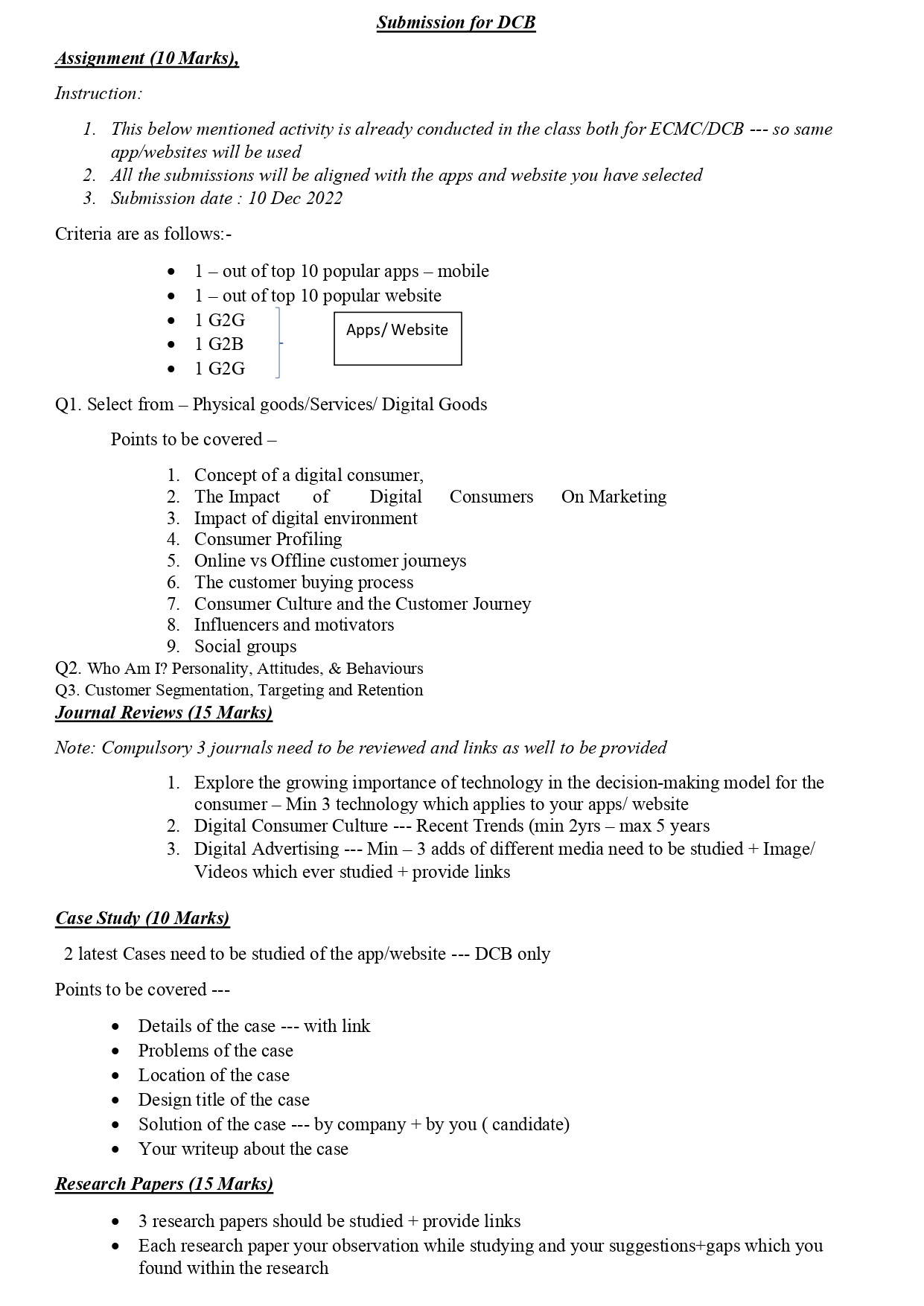
- Teacher: Sheetal Bura
- Teacher: Sheetal Bura
- Teacher: Sheetal Bura

Course Description cum Session Plan
Digital Design Tool - DES1203
SEM – II / 1st YEAR
Course Instructor:
Ms. Shruti Bir
Office Number: 530
Phone: 7028015701
Email: shruti.bir@dypiu.ac.in
Office hours: 9:30 am -5:30pm
Location: SOD, DYPIU, Akurdi, Pune.
Teaching Assistant
Name: NA
Contact: NA
Office Hours: NA
Location: NA
Level (who can take this course?): 12th pass / Elementary and Intermediate course certificate holder students who has a keen interest and passion for designing and has basic idea of how digital design work.
Credit: 4 (60 hrs.)
Assessment and Evaluation:
Internal Evaluation - 80% (Continuous Evaluation)
- Practical assignments and projects (40 marks)
- Quizzes/viva/Software proficiency tests (40 marks)
External Evaluation - 20%
Jury – 20 Marks
Maximum Number of Students: 43
Course Objectives:
- Learn design tools to impact and add value to the aesthetic of our world.
- Develop a fundamental understanding of key digital design tools.
- Explore the unique features and applications of each software.
- Learn best practices in creating digital content for various platforms.
- Build practical skills through project-based assignments.
Prerequisites:
- Basic computer literacy, including familiarity with operating systems and file management.
- An understanding of fundamental design concepts such as colour theory, typography, and layout principles.
- A keen interest in digital media and visual storytelling.
- No prior experience with design software is required, but a willingness to learn and explore creative tools is essential.
Course Syllabus:
|
S. No. |
Topic |
Hours |
|
1 |
Figma - Collaborative Interface Design Tool |
10 |
|
2 |
Adobe Photoshop - Raster Graphics and Image Editing |
5 |
|
3 |
Adobe Illustrator - Vector Graphics Design |
5 |
|
4 |
Adobe Animate CC - Animation and Interactive Content |
10 |
|
5 |
Adobe InDesign - Layout and Publishing |
10 |
|
6 |
Adobe After Effects / Premiere - Video Editing and Motion Graphics |
10 |
|
7 |
Adobe Intro duction to Adobe Media Encoder |
10 |
|
Total Hours |
60 |
|
Lessons & Session Plan:
|
S. no. |
Content |
Date |
|
1 |
Figma - Collaborative Interface Design Tool - Introduction to Figma and its workspace - Creating and managing projects in Figma - Design systems and components - Prototyping and wireframing - Design interactive UI elements: buttons, transitional effect and animations and image slides with horizontal and vertical image slides. |
2nd Jan - 8th Jan |
|
2 |
Adobe Photoshop - Raster Graphics and Image Editing - Understanding the Photoshop interface - Working with layers and layer masks - Image manipulation and retouching techniques - Applying filters and effects - Illustrating icons and logos using various tools. |
9th Jan - 15th Jan |
|
3 |
Adobe Illustrator - Vector Graphics Design - Overview of vector graphics and Illustrator workspace - Creating shapes, paths, and complex illustrations - Typography and text effects - Exporting scalable assets |
16th Jan - 22nd Jan |
|
4 |
Adobe Animate CC - Animation and Interactive Content - Introduction to Adobe Animate workspace - Creating frame-by-frame animations - Tweening and motion paths - Optimizing media for various platform. |
23rd Jan - 27th Jan |
|
5 |
Module 5: Adobe InDesign & Adobe After Effects / Premiere - Adobe InDesign: Multi-page document management - Adobe After Effects: Motion graphics and visual effects - Adobe Premiere: Video editing basics
Intro duction to Adobe Media Encoder: - A dynamic tool to optimize the media files, - Convert videos into various file extensions as required. - Export media successfully maintaining the resolution & industry standard quality. |
29th Jan - 31st Jan |
Course Outcome:
1. Demonstrate proficiency in using key digital design tools such as Figma, Adobe Photoshop, Adobe Illustrator, Adobe Animate CC, Adobe InDesign, and Adobe After Effects/Premiere.
2. Create professional-level digital assets, including user interfaces, game graphics, animations, layouts, and promotional videos.
3. Understand the workflows and best practices in designing for digital and print media.
4. Develop collaborative design skills through tools like Figma and Adobe Cloud.
5. Apply animation and motion graphics techniques to enhance visual storytelling.
6. Produce polished video content using advanced editing and compositing tools.
7. Prepare design assets for different platforms, ensuring compatibility and optimization.
8. Build a portfolio showcasing a range of creative projects suitable for professional opportunities in game design, multimedia, and graphic design fields.
Text Book: N/A
Reference Book:
1. “The Figma Handbook” by Figma
2. “Adobe Animate CC Classroom in a Book” by Russell Chun
3. “Adobe InDesign Classroom in a Book” by Kelly Kordes Anton and Tina DeJarld
4. “Adobe After Effects Classroom in a Book” by Lisa Fridsma and Brie Gyncild
5. “Premiere Pro Classroom in a Book” by Maxim Jago
Study Materials:
Pdfs, Docs, Exl sheets, PPTs and also supportive internal tutorial Videos will be provided as required alongside the day-to-day lectures to make the learning and teaching more interactive, easy and fun.
Web references for external research and study:
- Figma Official Documentation
https://help.figma.com
- Adobe Animate Tutorials
https://helpx.adobe.com/animate/tutorials.html
- Adobe InDesign Learn & Support
https://helpx.adobe.com/indesign/tutorials.html
- Adobe After Effects Help Centre
https://helpx.adobe.com/after-effects
- Premiere Pro Tutorials
https://helpx.adobe.com/premiere-pro/tutorials.html
- Teacher: Ms Shruti Bir
1. Understanding Fabrication Techniques
2. Gain experience operating machinery such as CNC machines and 3D printers.
3. Identify different materials used in fabrication
4. Plan and execute fabrication projects from concept to completion, including design, material selection, fabrication, and finishing.
- Teacher: Lakshmipraba Balaji
Course Title: Digital Illustration
|
Programme |
B. Des |
|
Discipline |
GD & UX |
|
Academic Year |
2022-23 |
|
Specialization |
|
|
Batch |
2021 |
|
Year |
2023 |
|
Course Code |
DI |
|
Semester |
4 |
|
Type of Course |
Core |
|||
|
Course In-charge |
Nayanatara Tampi |
|||
|
Core Faculty |
Nayanatara Tampi |
|||
|
Co-Faculty |
|
|||
|
Visiting Faculty |
|
|||
|
|
L |
ST |
P |
Total |
|
Marks |
Internal Work |
External Jury |
External Task |
External Exam |
Total |
|
Credits |
|
|
|
4 |
Max. |
80 |
20 |
0 |
0 |
100 |
|
|
Hours |
|
|
|
60 |
Min. |
32 |
8 |
0 |
0 |
40 |
Aim(s) – Students to create illustrations digitally with characters, backgrounds, emotions and action – developing their own drawing style along the way.
Objective(s) –
· Starting with Line art and using Illustrator and Pen tablet to make digital illustrations
· Moving into Flat (2d) colour drawings, using illustrator shape building techniques
· Digital painting on Photoshop using brushes and pen tablet
· 3d semi realistic drawing, learning tone shadows and perspective grids
· Creating digital collages, tracing, and other useful drawing methods
Pedagogy
Students will explore digital illustration in depth on Adobe Illustrator and Photoshop. They will learn to develop characters, emotions, actions, environments and learn to create consistency throughout their design. They will learn a variety of drawing styles and how to choose between them. Eventually students will find their own personal style and apply this to create a story board of their work.
· Detailed Syllabus
|
Session No. |
Topic & Sub-Topic |
Duration (Hrs.) |
|
1. |
Introduction to basic line art drawing with pen tablet, tracing with shape tools and tracing with pen and curve tool on Illustrator |
2 |
|
2. |
Assignment on Line art drawing |
4 |
|
3. |
Introduction to flat (2d) colour art on illustrator, creating colour palettes, shades and using illustrations from previous exercise |
2 |
|
4. |
Assignment on 2d flat colour art |
4 |
|
5. |
Introduction to digital painting on photoshop, using pen tablet and brushes and patterns. |
2 |
|
6. |
Assignment on digital painting (Photobashing) |
4 |
|
7. |
Introduction to semi-realistic art, adding value to a drawing using tone, shadows and highlights. Introduction to 3d art, perspective drawing on illustrator. |
2 |
|
8. |
Assignment on semi realistic 3d art. |
4 |
|
9. |
Final Development of Character and Environment style |
6 |
|
10. |
Introduction to Illustration for graphic novels, gaming |
2 |
|
11. |
Brief and Storyline Development |
4 |
|
12. |
Lecture on Character Development styles – Emotions and Actions |
2 |
|
13. |
Lecture on Layouts and storytelling |
2 |
|
14. |
Time management and Planning |
2 |
|
15. |
Individual Review and Feedback |
12 |
|
16. |
Final Presentation |
6 |
|
17. |
Total Hrs. |
60 |
Mode of submission
· Hard Copies Pin up presentation and discussion
· Soft Copies for online submission and grading
|
Faculty |
Name |
Signature |
Date |
|
Course I/C |
Prof. Nayanatara Tampi |
|
|
|
Director |
Prof. Dr. Vijay Shah |
|
|
- Teacher: Varun Sharma
- Teacher: Ms Nayanatara Tampi
- Teacher: Dr Priya Charles
- Teacher: Mrs. Vidya Sameer Kadam
- Teacher: Jayashri Kawale
- Teacher: Dr. Yudhishthir Raut
- Teacher: Mrs Asha S Ayakar
- Teacher: Ms Karishma Doke
- Teacher: Manasa Mandapati
- Teacher: Ms Shilpa Marathe
- Teacher: Mrs Smita S Pawar
- Teacher: Dr. Yudhishthir Raut
- Teacher: Dr. Rahul Sharma
- Teacher: Mrs Smita S Pawar
- Teacher: Bhakti Sathe
- Teacher: Mr Laksh Talreja
- Teacher: Dr. Bhawnath Tiwari
- Teacher: Mrs Asha S Ayakar
- Teacher: Ms Karishma Doke
- Teacher: Ms Rohini A Zambare
- Teacher: Mrs Smita S Pawar
- Teacher: Dr. Rahul Sharma
- Teacher: Ms Rohini A Zambare
- Teacher: Mrs Asha S Ayakar
- Teacher: Bhakti Sathe
- Teacher: Dr. Rahul Sharma
- Teacher: Dr. Rahul Sharma
- Teacher: Suprabhat Sinha
- Teacher: Ms Rohini A Zambare
- Teacher: Mr Nihal Kale
- Teacher: Dr. Rahul Sharma
- Teacher: Suprabhat Sinha
- Teacher: Mrs. Vidya Sameer Kadam
- Teacher: Jayashri Kawale
- Teacher: Dr. Yudhishthir Raut
- Teacher: Dr. Yogesh Kumar Sariya
- Teacher: MS.DOYEL DUTTA
- Teacher: MS.DOYEL DUTTA
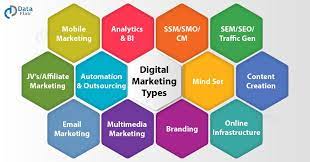
The core objective of the course is to give the students an overview of the digital world. How the digitalization has changed the functioning of media and how some new dimensions have been added to the world of marketing. On completion of the course, the will be able to utilize all the digital channels purposefully and optimally. The course will not only make them industry savvy but will also make them competed enough to set up their own start-ups.
- Teacher: MS.DOYEL DUTTA
- Teacher: MS.DOYEL DUTTA
- Teacher: MS.DOYEL DUTTA

B.A. JMC: Semester - V
Discipline Specific Elective - Media Production
Course Name: DIGITAL MEDIA PRODUCTION (PROJECTS)
Course Code: JMC 508
Course Credits: 4
Course Objectives:
• Students of this course will be prepared to handle social media platforms and management for the business clients for entrepreneurship and for their employer companies.
• During this project, blog writing has been kept for understanding the print media. In which students will choose the niche of their choice with the approval of their project guide and work on it. The goal of completing this work in the stipulated time is through all the technical activities, etc.
• On the other hand, the target of doing podcasting has been set during this project to use audio and video mode in digital medium and get a better understanding of it.
• Visual communication has been considered an effective medium. YouTube, the form of this digital as well as social media, is becoming very popular these days, all over the world. Students will have to create their own YouTube channel during this project. In which he/she will have to produce a certain number of videos on the subject under the direction of the project guide and post it on his/her channel.
• By which he/she will be able to cross publicity of his/her above 3 major works. During the project, the Project Guide will conduct workshops with the students as per the prescribed team table. In which by learning the activities of these various digital and social media, he/she will create his/her own channel as follows:
1. 1-Blog
2. 1-Podcast channels
3. 1-YouTube channel
• In addition to your pre-made or newly created social media handles to Operate and Perform Cross-promotion.
1. Facebook
2. Instagram
3. Twitter
4. LinkedIn
- Teacher: Mr Amit Kumar Om
- Teacher: Sandeep Dongare
- Teacher: Sandeep Dongare
- Teacher: Kunal Dumbre
- Teacher: Ms Shilpa Marathe
- Teacher: Dr. Yudhishthir Raut
- Teacher: Mr Naman Kumar
- Teacher: GaganDeep Meena
- Teacher: Dr. Maheshwari Biradar
- Teacher: Dr. Anju Chaurasia
- Teacher: Varsha Sambhaje
- Teacher: Dr. Rahul Sharma
- Teacher: Dr.Anjani Srivastava
- Teacher: Dr. Pallavi Jha
- Teacher: Dr. Pallavi Jha
- Teacher: Dr Ananya Mehta
- Teacher: Ms. Pragati Pallavi
- Teacher: Dr. Priyanka Dhoot
Name of the Course: DPR 4001 Downstream Processing (5.5)
Course Instructor:
Name: Dr. Babuskin Srinivasan
Office Number:
Phone: +91-8807762115
Email: babuskin.srinivasan@dypiu.ac.in
Office hours: 9.30 am – 5.30 pm
Location: 516, D Y Patil International University, Pune
· Teaching Assistant:
Name: Mrs. Mayura khanore
Contact: +919420904067
Office Hours: Time slots
Location: 340, D Y Patil International University, Pune
· Level (who can take this course?): B. Tech Bioengineering
· Credit: 3-1-3-5.5
· Evaluation:
· Breakup of evaluation: % wise
|
Mid exam (20) |
Seminar (10) |
Lab practical (30) |
Final exam (40) |
Total (100) |
·
· Maximum Number of Students: 27
Course Objectives:
The objective of this course is to learn about how to develop and formulate various product isolation methods related to biopharmaceuticals, clinical research and development
Prerequisites:
Basic mathematical skills like differentiation, integration
Basic knowledge about upstream processing
Course Syllabus:
|
Module No. |
Topics |
Lectures |
|
1. |
Introduction to Downstream processing Introduction to downstream processing, principles, characteristics of bio-molecules and bioprocesses. Cell disruption for product release – mechanical, enzymatic and chemical methods. Pre-treatment and stabilisation of bio-products. |
6 |
|
2. |
Physical methods of separation Unit operations for solid-liquid separation - filtration and centrifugation. |
8 |
|
3. |
Isolation of products Adsorption, liquid-liquid extraction, aqueous two-phase extraction, membrane separation – ultrafiltration and reverse osmosis, dialysis, precipitation of proteins by different methods. |
8 |
|
4. |
Product purification Chromatography – principles, instruments and practice, adsorption, reverse phase, ion exchange, size exclusion, hydrophobic interaction, bio-affinity and pseudo affinity chromatographic techniques. |
8 |
|
5. |
Final product formulation and finishing operations Crystallization, drying and lyophilization in final product formulation |
8 |
Lesson Plan:
|
Sr. No |
Content (Daily Plan) |
Date (Proposed) |
|
1 |
Introduction to downstream processing |
05/08/24 |
|
2 |
Characteristics of biomolecules and bioprocesses |
09/08/24 |
|
3 |
Cell disruption- physical and chemical methods |
12/08/24 |
|
4 |
Cell disruption- biological and mechanical methods |
14/08/24 |
|
5 |
Group discussion on cell disruption techniques |
21/08/24 |
|
6 |
Pre-treatment and stabilization of bioproducts |
22/08/24 |
|
7 |
Basic downstream processing problems |
23/08/24 |
|
8 |
Practice problems |
28/08/24 |
|
9 |
Filtration Introduction |
30/08/24 |
|
10 |
Filtration concept |
02/09/24 |
|
11 |
Filtration – derivation |
04/09/24 |
|
12 |
Filtration- problems |
06/09/24 |
|
13 |
Centrifugation- Introduction |
09/09/24 |
|
14 |
Types of centrifuges used |
12/09/24 |
|
15 |
Problems in centrifugation |
13/09/24 |
|
16 |
Adsorption- concept of isotherms |
18/09/24 |
|
17 |
Liquid-liquid extraction- co-current, counter current, Batch and continuous |
20/09/24 |
|
18 |
Aqueous two-phase extraction- principle |
23/09/24 |
|
19 |
Membrane separation- ultrafiltration & microfiltration |
04/10/24 |
|
20 |
Membrane separation- reverse osmosis |
09/10/24 |
|
21 |
Dialysis and Electrodialysis |
11/10/24 |
|
22 |
Protein precipitation methods |
14/10/24 |
|
23 |
Chromatography – Introduction |
15/10/24 |
|
24 |
Adsorption chromatography |
17/10/24 |
|
25 |
Gel filtration chromatography |
18/10/24 |
|
26 |
Ion-exchange chromatography |
21/10/24 |
|
27 |
Hydrophobic interaction chromatography |
23/10/24 |
|
28 |
Normal and Reverse phase chromatography |
08/11/24 |
|
29 |
Bio affinity and Pseudo affinity chromatography |
11/11/24 |
|
30 |
Group discussion |
14/11/24 |
|
31 |
Crystallization |
18/11/24 |
|
32 |
Student seminar |
18/11/24 |
|
33 |
Drying and finishing operations |
21/11/24 |
Laboratory
|
Sr. No |
Content |
Date |
|
1 |
Centrifugation Studies During Settling Of Yeast Cells |
21/08/24 |
|
2 |
Cell Disruption By Sonication and protein estimation |
28/08/24 |
|
3 |
Batch Sedimentation & Flocculation |
04/09/24 |
|
4 |
Basket Centrifuge and Cyclone separator – demo |
11/09/24 |
|
5 |
HPLC- demo |
18/09/24 |
|
6 |
Precipitation of proteins by salting out- Ammonium sulfate |
25/09/24 |
|
7 |
Aqueous two-phase extraction and partition coefficient |
10/10/24 |
|
8 |
Gel filtration chromatography |
16/10/24 |
|
9 |
Affinity chromatography |
23/10/24 |
|
10 |
Column Chromatography |
13/11/24 |
|
11 |
Ion-Exchange Chromatography |
13/11/24 |
· Course Outcome:
Upon success completion of this course, the students will be able to:
· Define the fundamentals of downstream processing for product recovery
· Understand the requirements for successful operations of downstream processing
· Describe the components of downstream equipment and explain the purpose of each
· Apply principles of various unit operations used in downstream processing and enhance problem solving techniques
· Text Book:
1. Belter, P.A., E.L. Cussler and Wei-Houhu “Bioseparations – Downstream Processing for Biotechnology”, John Wiley, 1988.
2. Nooralabettu Krishna Prasad., Downstream Process Technology: A New Horizon in Biotechnology, Prentice Hall India,2010.
3. Sivasankar, B. “Bioseparations: Principles and Techniques”. PHI, 2006.
· Reference Book:
1. Raja Ghosh “Principles of Bioseparations Engineering”. World Scientific, 2006
2. Michael R.Ladisch Bioseparations Engineering: Principles, practice and Economics, WileyInterscience,1st Edition,2001.
3. Product Recovery in Bioprocess Technology”. (BIOTOL – Biotechnology by Open Learning Series). Butterworth – Heinmann / Elsevier, 2004.
· Study Materials: shared in the form of ppts, eBooks
- Teacher: Mrs.Mayura Abhijit khanore
- Teacher: Dr. Babuskin Srinivasan
- Teacher: Mr. Santosh Chavan
- Teacher: Ms Shilpa Marathe
- Teacher: Dr Kaustubh Sakhare
- Teacher: Dr. Bahubali Shiragapur
- Teacher: Mrs. Shweta Banait
- Teacher: Dr. Yudhishthir Raut
- Teacher: Mr. Jayant R. Pujar
- Teacher: Dr. Rahul Sharma
- Teacher: Dr. Prateek Srivastav
- Teacher: Mr. Santosh Chavan
- Teacher: Bhakti Sathe
- Teacher: Dr. Rahul Sharma
- Teacher: Dr. Prateek Srivastav
- Teacher: Mr. Santosh Chavan
- Teacher: Dr Dnyanada Hire
- Teacher: Dr. Rahul Sharma
- Teacher: Mrs.Smita Brahmachari
- Teacher: Dr. Kranti Shingate
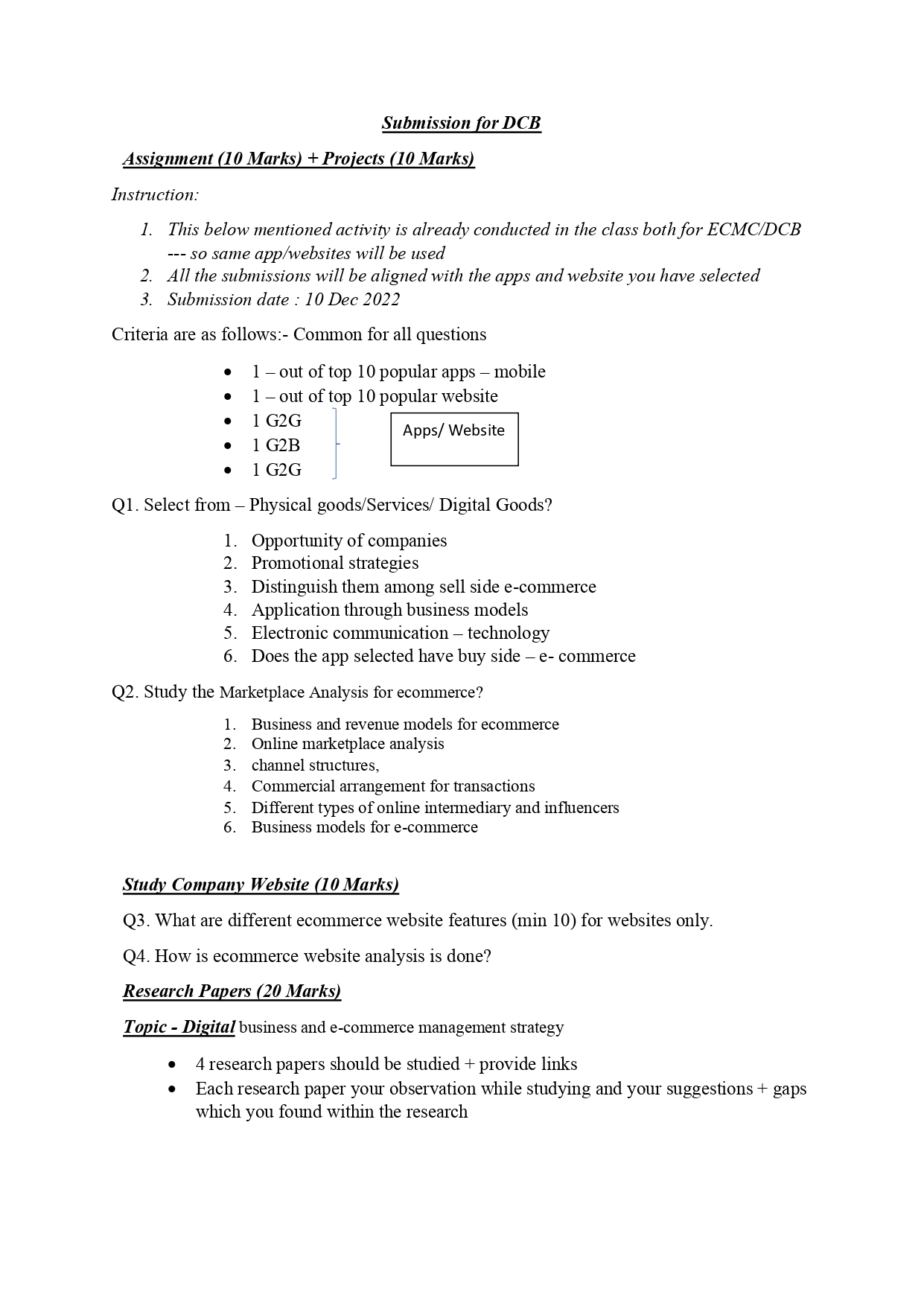
- Teacher: Sheetal Bura
- Teacher: Abhinita Daiya
- Teacher: Nivetha krishnan
- Teacher: Dr Arvind Kumar Mathur
- Teacher: Dr Devendra Saini
- Teacher: Mrs Sarika Satpute
- Teacher: Mrs Sarika Satpute
- Teacher: Dr. Swapnil Bhurat
- Teacher: Mrs Nikita Chavan
- Teacher: Pranil Choudhari
- Teacher: Mrs Priyanka Mahajan
- Teacher: Dr Arvind Kumar Mathur
- Teacher: Vahida Pathan
- Teacher: Mrs Sarika Satpute
- Teacher: Mrs Shweta Suryavanshi
- Teacher: Pranjal Shahinath Tekade
- Teacher: Prof. Mangesh Javkhedkar
- Teacher: Dr. Kranti Shingate
- Teacher: Dr. Vijay Shah
- Teacher: Mr Ketan M Deore
Course Objectives:
1. To identify the domains in Mechanical Engineering and explain the mechanical
elements.
2. To introduce to design procedure and mechanisms.
3. To explain the basic concept of engineering thermodynamics and its application
4. To get acquainted with vehicle systems.
5. To introduce various machine tools and manufacturing processes to produce components
6. To provide introduction to Robotics
Course Outcomes
On completion of the course, learner will be able to
CO1: Know different domains in Mechanical Engineering and compare different mechanical
elements with its application.
CO2: Explain different mechanisms and design process.
CO3: Explain the basic concepts of thermodynamics and its application, principle of energy
conservation and modes of heat transfer.
CO4: Illustrate various basic parts and transmission system of a road vehicle
CO5: Describe various manufacturing processes and machine tools suitable for particular
industrial application
CO6: Explain the basics of Robotics and its applications in industries
Course Contents
UNIT-I Introduction to Mechanical Engineering 06 Hours
Mechanical Engineering and its domains: Design, Production and Thermal Engineering,
Introduction to Mechanical Industry: Design, Production, Quality control and Inspection
departments. Mechanical Elements: Holding, Supporting and Power transmitting elements
(simple numerical)
UNIT-II Fundamentals of Design and Mechanisms 06 Hours
Design: Definition, Steps in Design process, Mechanical Properties, National/International
design standards, Introduction to Machine & Mechanism.
Mechanism: Four Bar Mechanism, Slider Crank Mechanism.
UNIT-III Introduction to Thermal Engineering and Heat Transfer 06 Hours
Thermal Engineering: Laws of Thermodynamics, their Limitations and applications, IC
Engines, Refrigeration and air conditioning, Measurements of temperature and pressure.
Heat Transfer: Conduction, Convection and Radiation.(Simple Numerical)
UNIT-IV Vehicle systems 06 Hours
Introduction of chassis layouts, steering system, suspension system, braking system, cooling
system and fuel injection system and fuel supply system. Study of Electric and Hybrid
Vehicle systems. Study of power transmission system, clutch, gear box, propeller shaft,
universal joint, differential gearbox and axles. Vehicle active and passive safety
arrangements: seat, seat belts, airbags and antilock brake system.
UNIT-V Manufacturing Processes and Machine Tools 06 Hours
Manufacturing Processes: Classification, Sand Casting, Metal forming, Sheet metal working,
Machining, Metal joining & Surface finishing processes.
Machine Tools: Introduction to Conventional Lathe, Drilling machine CNC, VMC.
UNIT-VI Fundamentals of Robotics 06 Hours
Laws of Robotics, Classification of Robots, Robot anatomy, Point to Point and Continuous
path robotic systems, Joints, End Effectors, Grippers, Robot Specification, General
considerations and Applications of Robot.
Books & Other Resources
Text Books
1. Nag, P. K., “Engineering Thermodynamics,” Tata McGraw-Hill Publisher Co. Ltd.
2. Chaudhari and Hajra, “Elements of Workshop Technology”, Volume I and II, Media
Promoters and Publishers, Mumbai
3. Agrawa1,Basant and Agrawal, C. M., (2008), “Basics of Mechanical Engineering”,
John Wiley and Sons, USA
4. Rajput, R.K., (2007), “Basic Mechanical Engineering”, Laxmi Publications Pvt. Ltd.
5. Pravin Kumar, (2018), “ Basic Mechanical Engineering, 2nd Ed.”, Pearson (India) Ltd.
6. Moran, M. J., Shapiro, H. N., Boettner, D. D., and Bailey, M. “Fundamentals of
Engineering Thermodynamics”, Wiley
7. Surinder Kumar, (2011), “Basic of Mechanical Engineering”, Ane Books Pvt. Ltd.
New Delhi
Reference Books
1. Khan, B. H., “Non Conventional Energy Sources, Tata McGraw-Hill Publisher Co. Ltd.
2. Boyle, Godfrey, “Renewable Energy”,2nd Ed., Oxford University Press
3. Khurmi, R.S. ,and Gupta, J. K.,“A Textbook of Thermal Engineering”, S. Chand & Sons
4. Incropera, F. P. and Dewitt, D.P., (2007), “Fundamentals of Heat and Mass Transfer, 6th
Ed., John Wiley and Sons, USA
5. Groover,Mikell P., (1996), “Fundamentals of Modern Manufacturing:
Materials, Processes, and Systems”, Prentice Hall, USA
6. Norton, Robert L., (2009), “Kinematics and Dynamics of Machinery”, Tata McGrawHill
7. Cleghorn, W. L., (2005), “Mechanisms of Machines”, Oxford University Press
8. Juvinal, R. C., (1994), “Fundamentals of Machine Component Design”, John Wiley and
Sons, USA
9. Ganeshan, V., (2018), “Internal Combustion Engines”, McGraw Hill
Anderson, Curtis Darrel and Anderson,Judy, (2010), “Electric and Hybrid Cars: A
History”, 2nd Ed., McFarland
- Teacher: Dr Keval Nikam
- Teacher: Sonali Bagade
- Teacher: Sonali Bagade
- Teacher: Prof. Mangesh Javkhedkar
- Teacher: Ms Shilpa Marathe
- Teacher: Dr. Kapil Sharma
- Teacher: Suraj Shete
- Teacher: Ms Karishma Doke
- Teacher: Mrs Smita S Pawar
- Teacher: Bhakti Sathe
- Teacher: Dr. Bahubali Shiragapur
- Teacher: Mrs Smita S Pawar
- Teacher: Mr. Jayant R. Pujar
- Teacher: Bhakti Sathe
- Teacher: Dr. Rahul Sharma
- Teacher: Mrs Smita S Pawar
- Teacher: Mr. Jayant R. Pujar
- Teacher: Bhakti Sathe
- Teacher: Dr. Rahul Sharma
- Teacher: Mrs Asha S Ayakar
- Teacher: Dr. Rahul Sharma
- Teacher: Ms Rohini A Zambare
- Teacher: Anil Narasipuram
Introduce students to the world of extended reality (XR) while giving hands-on experience on AR /VR devices and applications.
For further details, download:
2. Session Plan
3. Task Sheet
4. Assessment Sheet
- Teacher: Varun Sharma
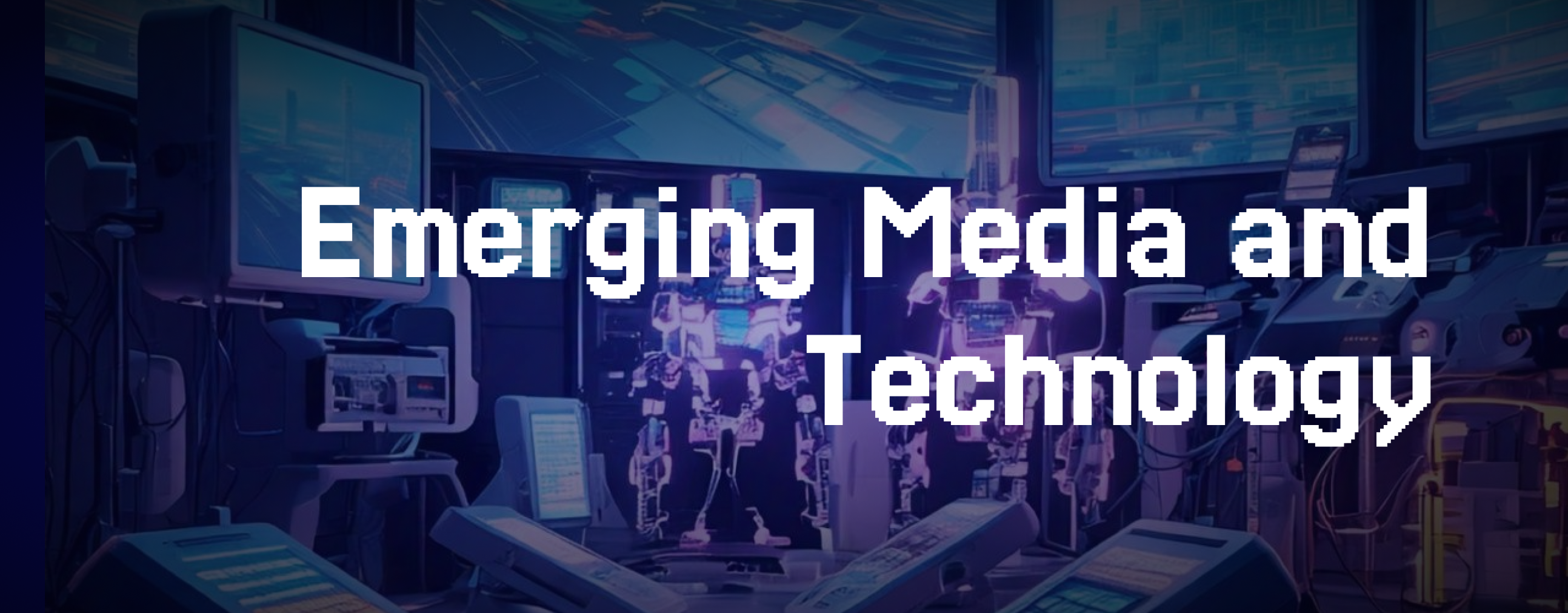
- Teacher: Ms Sri Gayathri Vedula
- Teacher: Mr Chetan Pawar
- Teacher: Dr Amol Mali
- Teacher: Dr Arvind Kumar Mathur

This course on "Energy Storage and Conversion Systems" provides a comprehensive understanding of various energy storage technologies and their applications in modern energy systems. It begins with an introduction to the need for energy storage, covering methods like flywheel, electrical, magnetic, and chemical storage, including hydrogen and synthetic fuels. The course explores superconducting magnet energy storage (SMES) and supercapacitors, focusing on electrochemical double-layer capacitors (EDLC), pseudocapacitors, and their differences from conventional capacitors and batteries. In the second module, students learn about battery technology, including its history, electrochemistry, electrical characteristics, and mathematical models, with an emphasis on recent advancements in lithium-ion and solid-state batteries. The third module addresses the classification of batteries, such as lead-acid, nickel-cadmium, and lithium-ion, and covers battery pack systems, protection, thermal management, and disposal methods. Direct energy conversion is explored in Module IV, focusing on thermoelectric and thermionic generators, their efficiency, and applications. Finally, Module V covers fuel cells, discussing different types, including alkaline, phosphoric acid, PEM, molten carbonate, and solid oxide fuel cells, along with their working principles, efficiency, and practical uses. This course equips students with the knowledge to engage with and contribute to advancements in energy storage and conversion systems.
- Teacher: Durgesh Kumar
- Teacher: Dr Arvind Kumar Mathur
- Teacher: Dr Arvind Kumar Mathur
- Teacher: Dr. Manish Sharma
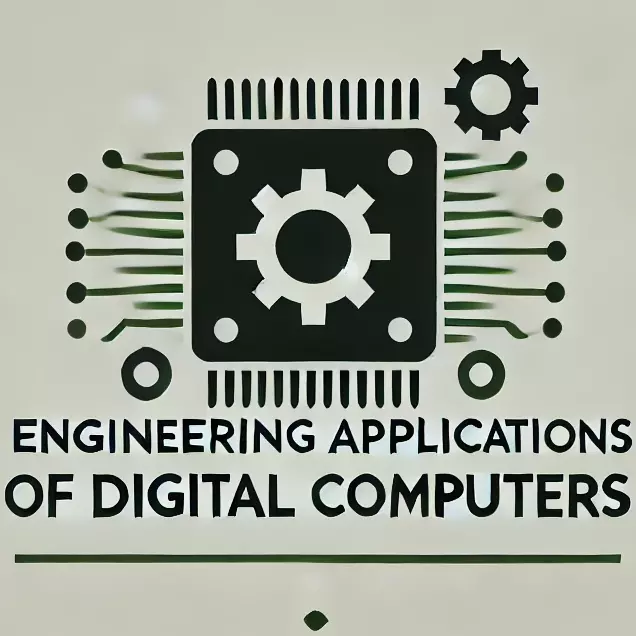
The course is all about understanding how the various Digital setups can be used for the Chemical Engineering applications
- Teacher: Dr. Utkarsh Maheshwari
1.To understand the concepts of corrosion and preventive methods for
corrosion control.
2. To study conventional and alternative fuels along with their properties and
applications.
3. To study the structure, properties and applications of some industrially
important polymers.
4. To study the concepts of fuels cells and recent trends of using hydrogen cars.
5. To study spectroscopic techniques for chemical analysis.
- Teacher: Dr Sangeeta Benni
- Teacher: Dr Sangeeta Benni
- Teacher: Mr. Suresh Kadam
- Teacher: Dr Manoj Kumar
- Teacher: Mr. Saikat Dutta
- Teacher: Ms Ekata Mehul
|
Course Contents |
||
|
Unit 1 |
Introduction to Engineering Drawing and Engineering Curves |
6 Hrs. |
|
Importance of engineering drawing in real world, Division of lines and angles, dimensioning principles, Linear dimensions’ Angular dimensions Classification of curves: Ellipse, Parabola, Hyperbola, Involutes, Spirals, Helix, Methods of construction for engineering curves and their application in real world. |
||
|
Unit 2 |
Projection of Points, Straight Line, Plane and Solid |
10 Hrs. |
|
Principle of projection, Method of Projection, Difference between First angle and Third Angle Projection. BIS Code of Practice. Projection of point in all four quadrants. Projection of a straight line with respect to the two reference planes. Projection of Plane |
||
|
Unit3 |
Section of solid and development of lateral surface |
8 Hrs. |
|
Basics of solid shapes (prisms, pyramids, cylinders, cones, spheres. Projection of solids, Creating sectional views of solids, Importance of sectional views in engineering, Applications in the visualization of industrial components. Development of lateral surfaces of prisms, pyramids, cylinders, cones, etc. Real-world applications of development in sheet metal work and manufacturing. |
||
|
Unit 4 |
Orthographic Projection |
6 Hrs. |
|
Principles of isometric and orthographic projections. Differentiating between isometric and orthographic views. Importance of accurate projections in engineering and industrial design. Orthographic views (front, top, and side views) of industrial components |
||
|
Unit 5 |
Isometric Projection |
6 Hrs. |
|
Isometric Projection - Techniques for representing three-dimensional objects on a two-dimensional plane. Applications in visualizing industrial components and assemblies. |
||
- Teacher: Dr.Sunil Dambhare
- Teacher: Dr Amit Umbrajkar
Engineering Materials and Metallurgy is a core course for second-year Mechanical Engineering students, offering a comprehensive introduction to the properties, behavior, and applications of materials essential in engineering. This course provides foundational knowledge of metals, alloys, ceramics, polymers, and composites, emphasizing their structure, characteristics, and uses in modern engineering solutions.
The course covers atomic structure, crystallography, and phase diagrams, helping students understand how material properties are influenced by their internal structure. Students explore key topics in metallurgy, including heat treatment, strengthening mechanisms, and microstructural analysis, to learn how materials can be modified to meet specific engineering requirements.
Through laboratory experiments and case studies, students gain practical insights into the testing and evaluation of materials, including hardness testing, tensile strength, and impact resistance. This hands-on experience enables students to assess material suitability for various applications and make informed decisions in engineering design.
By the end of the course, students will understand how to select appropriate materials based on mechanical, thermal, and environmental considerations, making them adept at addressing the material demands of modern mechanical systems and laying the groundwork for advanced studies in materials science and mechanical design.
- Teacher: Dr Aniket Kolekar
- Teacher: Dr. Swapnil Bhurat
- Teacher: Mr Sachin Jamadar
- Teacher: Dr Arvind Kumar Mathur
- Teacher: Dr. Swapnil Bhurat
- Teacher: Mr Rahul Mali
- Teacher: Dr Arvind Kumar Mathur
- Teacher: Mr Umesh Narkhede
EME 1006 Engineering Mathematics
|
Teaching Scheme |
Credits |
Examination Scheme |
|
TH: 03Hrs/Week |
04 |
TH: 100 Marks |
|
TUT: 01Hrs/WeekBatchwise |
|
TW:25 Marks |
|
|
Total Marks:125 |
Prerequisite: Matrices and Determinants, Differentiation and Integration, Differential Equation,
Course Objectives:
1) To develop mathematical and computational skills
2) To enhance analytical and logical thinking power of students and deploy these skills effectively in their disciplines.
3) To equip the students with concepts and techniques in Matrices and Differential Calculus.
4) To enable the students to apply concepts and techniques in Ordinary & Partial differentiation.
Course Outcomes:After successful completion of the course, students will be able to:
CO1: Solve system of linear equations by using the concept of Rank of the matrix
CO2: Find Eigen Values and Eigen Vectors of the matrix
CO3:Solve and apply the knowledge of ordinary differential equation of first order and first degree
CO4: Deal with derivative of functions of several variables
CO5: Apply partial differentiation to calculate Errors, Approximations and Extreme values
Unit I: Linear Algebra-I: (7 Hrs.)
Unit II: Linear Algebra-II: (7 Hrs.)
Unit III: Ordinary Differential Equations & its Applications: (7 Hrs.)Unit IV: Differentiation of Functions of Several Variables (Partial Diff.): (7 Hrs.)
Unit V: Applications of Partial Differentiation: (7 Hrs.)
- Teacher: Sudhir Nanaso Narale
- Teacher: Dr Rishikant Rajdeepak

Engineering Mathematics-I
|
Teaching Scheme |
Credits |
Examination Scheme |
|
TH: 03 Hrs/Week |
04 |
TH: 100 Marks |
|
TUT: 01 Hrs/Week |
|
TW: 25 Marks |
|
Total Hrs: 36 |
|
Total Marks:125 |
Course Objectives:
1) To develop mathematical and computational skills
2) To enhance analytical and logical thinking power of students and deploy these skills effectively in their disciplines.
3) To equip the students with concepts and techniques in Matrices and Differential Calculus.
4) To enable the students to apply concepts and techniques in Ordinary & Partial differentiation.
Course Outcomes: After successful completion of the course, students will be able to:
CO1: Solve system of linear equations by using the concept of Rank of the matrix
CO2: Find Eigen Values and Eigen Vectors of the matrix
CO3: Solve and apply the knowledge of ordinary differential equation of first order and first degree
CO4: Deal with derivative of functions of several variables
CO5: Apply partial differentiation to calculate Errors, Approximations and Extreme values
Prerequisite: Matrices and Determinants, Differentiation and Integration, Differential Equation,
- Teacher: Mr Umesh Narkhede
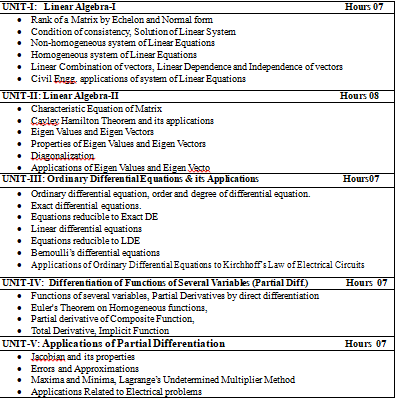
Subject Code: ECE1004 | Subject Name : Engineering Mathematics-I | ||||||||||||||||||||||||||||||||||||||||||||||||||||||||||||||||||||||||||||||||||||||||||
Teaching Scheme: TH: 3Hr./week | Credits : 4
| ||||||||||||||||||||||||||||||||||||||||||||||||||||||||||||||||||||||||||||||||||||||||||
Prerequisite | Matrices and Determinants, Differentiation and Integration, Differential Equation
| ||||||||||||||||||||||||||||||||||||||||||||||||||||||||||||||||||||||||||||||||||||||||||
L-T-P-C | 3-1-0-4 | ||||||||||||||||||||||||||||||||||||||||||||||||||||||||||||||||||||||||||||||||||||||||||
Course Objectives: 1) To develop mathematical and computational skills 2) To enhance analytical and logical thinking power of students and deploy these skills effectively in their disciplines. 3) To equip the students with concepts and techniques in Matrices and Differential Calculus. 4) To enable the students to apply concepts and techniques in Ordinary & Partial differentiation.
| |||||||||||||||||||||||||||||||||||||||||||||||||||||||||||||||||||||||||||||||||||||||||||
Course Outcomes: CO1:Students will be able to solve system of linear equations by using the concept of Rank of the matrix CO2: Students will be able to find Eigen Values and Eigen Vectors of the matrix CO3: Students will be able to solve and apply the knowledge of ordinary differential equation of first order and first degree CO4: Students will be able to deal with derivative of functions of several variables CO5: Students will be able to apply partial differentiation to calculate Errors, Approximations and Extreme values | |||||||||||||||||||||||||||||||||||||||||||||||||||||||||||||||||||||||||||||||||||||||||||
CO-PO Mapping:
| |||||||||||||||||||||||||||||||||||||||||||||||||||||||||||||||||||||||||||||||||||||||||||
- Teacher: Mr Sachin Jamadar
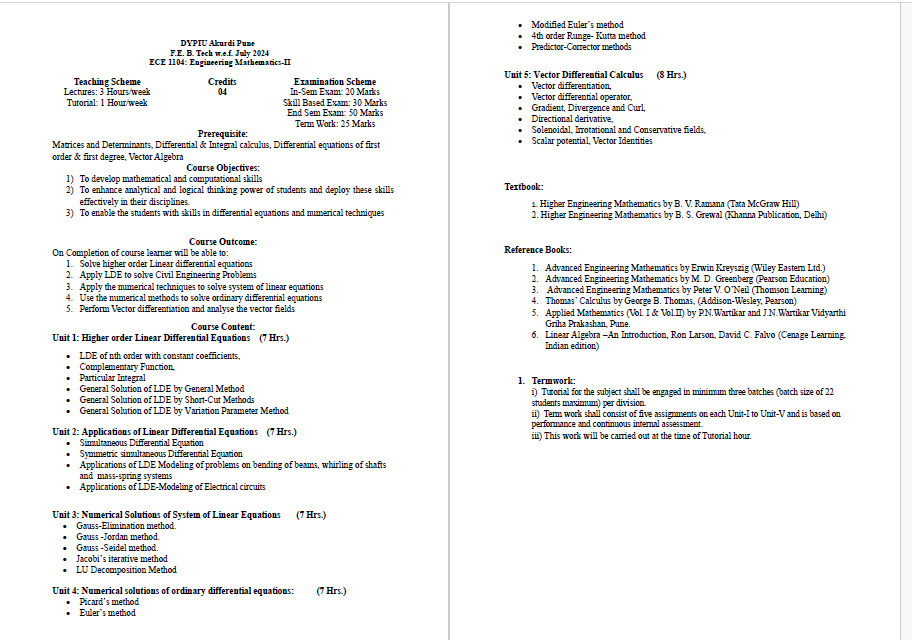
Prerequisite:
Matrices and Determinants, Differential & Integral calculus, Differential equations of first order & first degree, Vector Algebra
Course Objectives:
1) To develop mathematical and computational skills
2) To enhance analytical and logical thinking power of students and deploy these skills effectively in their disciplines.
3) To enable the students with skills in differential equations and numerical techniques
Course Outcome:
On Completion of course learner will be able to:
1. Solve higher order Linear differential equations
2. Apply LDE to solve Civil Engineering Problems
3. Apply the numerical techniques to solve system of linear equations
4. Use the numerical methods to solve ordinary differential equations
5. Perform Vector differentiation and analyse the vector fields
Course Content:
Unit 1: Higher order Linear Differential Equations (7 Hrs.)
· LDE of nth order with constant coefficients,
· Complementary Function,
· Particular Integral
· General Solution of LDE by General Method
· General Solution of LDE by Short-Cut Methods
· General Solution of LDE by Variation Parameter Method
Unit 2: Applications of Linear Differential Equations (7 Hrs.)
· Simultaneous Differential Equation
· Symmetric simultaneous Differential Equation
· Applications of LDE Modeling of problems on bending of beams, whirling of shafts and mass-spring systems
· Applications of LDE-Modeling of Electrical circuits
Unit 3: Numerical Solutions of System of Linear Equations (7 Hrs.)
· Gauss-Elimination method.
· Gauss -Jordan method.
· Gauss -Seidel method.
· Jacobi’s iterative method
· LU Decomposition Method
Unit 4: Numerical solutions of ordinary differential equations: (7 Hrs.)
· Picard’s method
· Euler’s method
· Modified Euler’s method
· 4th order Runge- Kutta method
· Predictor-Corrector methods
Unit 5: Vector Differential Calculus (8 Hrs.)
· Vector differentiation,
· Vector differential operator,
· Gradient, Divergence and Curl,
· Directional derivative,
· Solenoidal, Irrotational and Conservative fields,
· Scalar potential, Vector Identities
- Teacher: Mr Sachin Jamadar

Engineering Mechanics is the study of forces, motion, and their effects on structures and machines. It applies physics and mathematics to analyze and predict mechanical behavior. Key topics include statics and equilibrium, . Essential for engineering design, it ensures safety, stability, and efficiency in various applications, from buildings to vehicles.
- Teacher: Ms. Amruta Kulkarni
- Teacher: Dr Amit Umbrajkar
- Teacher: Dr. Vandana Patil
- Teacher: Dr. Swapnil Bhurat
- Teacher: Mr Dinesh Kumar
- Teacher: Dr Arvind Kumar Mathur
- Teacher: Mrs Shilpa Idhol
- Teacher: Dr Arvind Kumar Mathur
- Teacher: Mr Abhijeet Pawar
- Teacher: Dr. Swapnil Bhurat
- Teacher: Mrs Shilpa Idhol
- Teacher: Dr Arvind Kumar Mathur
- Teacher: Mr Abhijeet Pawar
- Teacher: Mrs Trupti Shirsath
- Teacher: Mr Dineshkumar Turkar
- Teacher: Mr. Ajinkya Hiran
- Teacher: Maithili Salgaokar
- Teacher: Dr. Palash Bairagi
- Teacher: Maithili Salgaokar
- Teacher: Maithili Salgaokar
- Teacher: Ms Anuradha Patil
- Teacher: Ms Anuradha Patil
- Teacher: Dr. Madhura Jagtap
- Teacher: Dr. Meena Pandey
- Teacher: Dr. Meena Pandey

- Teacher: Dr Sandesh Solepatil

- Teacher: Dr. Meena Pandey
- Teacher: Mrs. Heena Bhatia
- Teacher: Dr Richa Purohit
- Teacher: Ms. Prachi Soniminde
- Teacher: Mrs. Heena Bhatia
- Teacher: Prachi Chhajed
- Teacher: Dr Richa Purohit
- Teacher: Ms. Prachi Soniminde
- Teacher: Dr. Maheshwari Biradar
- Teacher: Mr Nihal Kale
- Teacher: Dr. Rahul Sharma
In
this course, we delve into the convergence of environmental studies and
journalism, spotlighting the pivotal role of media in addressing environmental
concerns, fostering public consciousness, and catalyzing constructive
transformations. Students will scrutinize pivotal environmental dilemmas,
journalistic methodologies, ethical imperatives, and narrative strategies
essential for adeptly conveying environmental issues to varied audiences.
- Teacher: Maan Bardhan Kanth
- Teacher: Maan Bardhan Kanth

- Teacher: Dr. Meena Pandey
- Teacher: Mr. Navneet Agarwal
- Teacher: Mrs. Heena Bhatia
- Teacher: Prachi Chhajed
- Teacher: Dr Richa Purohit
- Teacher: Ms. Prachi Soniminde
- Teacher: Dr Vrushali Gadekar
- Teacher: Dr. Meena Pandey
- Teacher: Dr. Maheshwari Biradar
- Teacher: Mr Nihal Kale
- Teacher: Dr. Rahul Sharma
- Teacher: Mr. Rajkumar Chaudhari
- Teacher: Dr.Saji Baby
- Teacher: Mr. Rajkumar Chaudhari
- Teacher: Dr Vrushali Gadekar
- Teacher: Dr Vrushali Gadekar
- Teacher: Dr Vrushali Gadekar
- Teacher: Mr Nihal Kale
- Teacher: Dr. Rahul Sharma
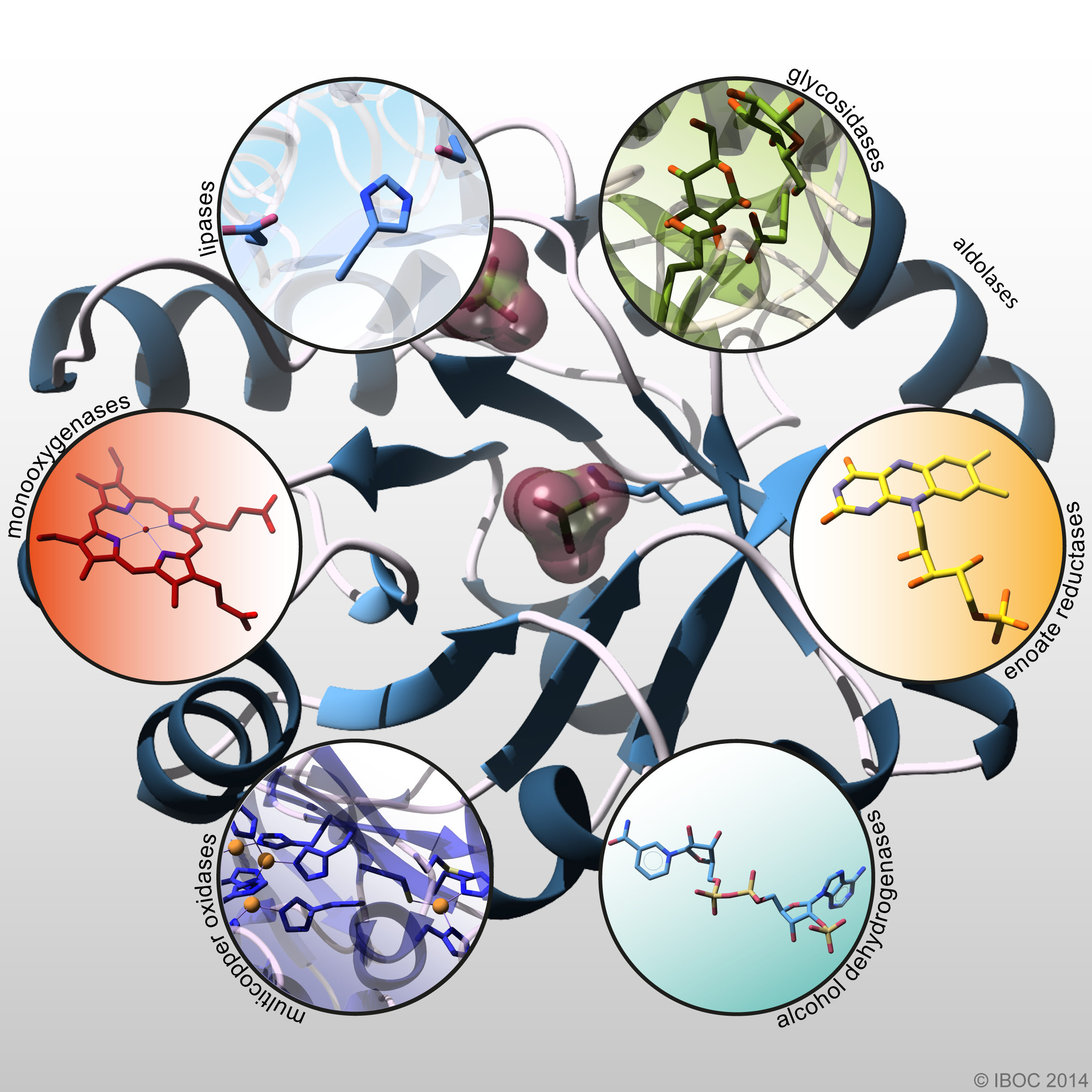
- Teacher: Ms Sakshi Ravindra Dhapatkar
- Teacher: Ms Yashswee Ghorpade
- Teacher: Dr. Sonal Mahajan

- Teacher: Ms Sakshi Ravindra Dhapatkar
- Teacher: Ms Yashswee Ghorpade
- Teacher: Dr. Sonal Mahajan
- Teacher: Archana Kadam
- Teacher: Suraj Shete
- Teacher: Rashmi Dharwadkar
- Teacher: Varshita Gangadhara
- Teacher: Ms Shilpa Marathe
- Teacher: Dr. Tamal Mondal

- Teacher: Varshita Gangadhara
- Teacher: Dr Sunanda R Mulik
- Teacher: Mrs. Vidya Sameer Kadam
- Teacher: Dr. Yudhishthir Raut
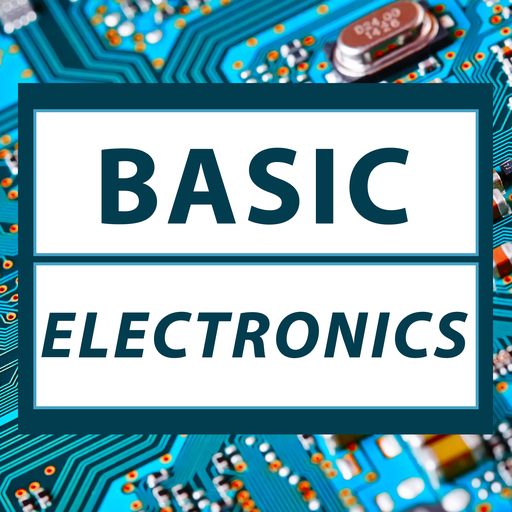
Students are able to provide learn;
• To understand operation of semiconductor devices.
• To understand DC analysis and AC models of semiconductor devices.
• To apply concepts for the design of Regulators and Amplifiers
• To verify the theoretical concepts through laboratory and simulation experiments.
• To implement mini projects based on concept of electronics circuit concepts.
- Teacher: Mrs. Vidya Sameer Kadam
- Teacher: Dr. Laxmi Priya Sahu
- Teacher: Dr. Gaurav Kumar Singh
- Teacher: Mrs. Vidya Sameer Kadam
- Teacher: Dr. Yudhishthir Raut
- Teacher: Dr. Sanjay Kumar
- Teacher: Mr Shrikant Mahindrakar
- Teacher: Dhanashri Varute
- Teacher: Kunal Dumbre
- Teacher: Dr. Sanjay Kumar
- Teacher: Mr Shrikant Mahindrakar
- Teacher: Mr. Yash Sanjay More
- Teacher: Mrs. Shweta Banait
- Teacher: Mr Naman Kumar
- Teacher: Dr. Neera Kumari
- Teacher: Dr. Anju Chaurasia
- Teacher: Varsha Sambhaje
- Teacher: Ms. Prachi Soniminde
- Teacher: Mr Nihal A Kadam
- Teacher: Dr Arvind Kumar Mathur
- Teacher: Dr. Rajendhar Puppala
- Teacher: Mr Nihal A Kadam
- Teacher: Dr Arvind Kumar Mathur
- Teacher: Dr. Rajendhar Puppala
- Teacher: Mr Nihal A Kadam
- Teacher: Dr Arvind Kumar Mathur
- Teacher: Dr. Rajendhar Puppala
- Teacher: MS.DOYEL DUTTA
- Teacher: Arvind Singh
- Teacher: Vidyadhar Apte
- Teacher: Vidyadhar Apte
- Teacher: Dr. Mehjabeen Barodawala
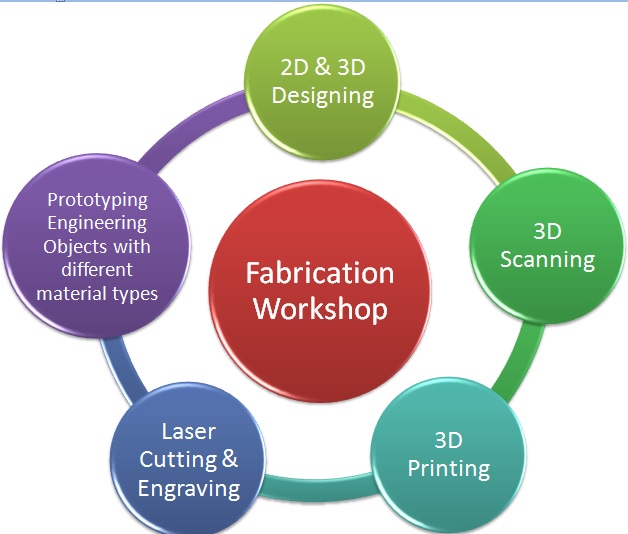
- Teacher: Mr. Rajkumar Chaudhari
- Teacher: Mr Naman Kumar
- Teacher: Nitin Rajput
- Teacher: Dr. Rahul Sharma
- Teacher: Koustubh Ashtekar
- Teacher: Mr Naman Kumar
- Teacher: Sheetal Bura
- Teacher: Dr. Kranti Shingate
- Teacher: Dr. Satyen Marathe
- Teacher: Prof.Shashi Singh
- Teacher: Prof.Shashi Singh
- Teacher: Dr. Surabhi Sonam
- Teacher: Prof.Shashi Singh
- Teacher: Shital Vijay Nehere
- Teacher: Dr. Lubna Shaik
- Teacher: Dr. Babuskin Srinivasan
Course
Objectives:
- To establish an introductory understanding of film history and development in world and India.
- Students are oriented to the aesthetical and theoretical understanding of the film appreciation process.
- Lectures, readings, screenings, discussions and the screenings of films will facilitate this course.
- Teacher: Sandeep Dongare
- Teacher: MS.DOYEL DUTTA
- Teacher: Sandeep Dongare
- Teacher: Dr. Priyanka Dhoot
- Teacher: Maithili Salgaokar
The course provides an introduction to financial accounting and emphasizes the analysis and
evaluation of accounting information as part of the managerial processes of planning, decisionmaking,
and control. A large aspect of the course covers the fundamentals of financial accounting.
The objective is to provide a basic overview of financial accounting, including basic accounting
concepts and principles, as well as the structure of the income statement, balance sheet, and
statement of cash flows. This course is recommended for students who will be using accounting
information for managing manufacturing and service operations, controlling costs, and making
strategic decisions, as well as those going into general consulting or thinking of starting their own
businesses.
Course Outcomes:
CO 1: Learn the basics of Financial Accounting.
CO 2: Understand various analytical procedures and application of Financial analysis.
CO 3: Understand and apply various financial ratios
CO 4: Understand Horizontal, Common-Size and Trend Analysis
CO 5: Understand the Accounting Standards and IFRS

- Teacher: Maithili Salgaokar
- Teacher: Dr. Kirti Mehta
- Teacher: Dr. Anuja Sethiya
- Teacher: Dr. Priyanka Dhoot
- Teacher: Dr. Kirti Mehta
- Teacher: Dr. Kirti Mehta
- Teacher: Mr. Suresh Kadam
- Teacher: Dr. Anuja Sethiya
- Teacher: Dr. Kirti Mehta
- Teacher: Dr. Kirti Mehta
- Teacher: Mr. Suresh Kadam
- Teacher: Mr. Suresh Kadam
- Teacher: Mr. Suresh Kadam
- Teacher: Ms Anuradha Patil
- Teacher: Ms Anuradha Patil
- Teacher: Sonali Bagade
- Teacher: Dr. Palash Bairagi
- Teacher: Dr. Palash Bairagi
- Teacher: Prof. Mangesh Javkhedkar
- Teacher: Mrs Venkata Mrudula Bhimavarapu
- Teacher: Dr Ashvini P Shende
- Teacher: Prof. Vinayak Sathe
- Teacher: Dr. Kirti Mehta
- Teacher: Mr. Devendra Athavale
- Teacher: Dr. Priyanka Dhoot
- Teacher: Dr. Priyanka Dhoot
- Teacher: Dr. Palash Bairagi
- Teacher: Ms Divya Raidas
- Teacher: Mr Dineshkumar Turkar
- Teacher: Mr Dinesh Kumar
- Teacher: Mr Dineshkumar Turkar
- Teacher: Nirav Bhaliya
- Teacher: Mr Sushil Gaikwad
- Teacher: Dr Arvind Kumar Mathur
- Teacher: Mr Dineshkumar Turkar
- Teacher: Dr. Swapnil Bhurat
- Teacher: KHUSHBOO GUPTA
- Teacher: Dr Sudhir Kumar
- Teacher: Dr Arvind Kumar Mathur
The basic concepts of fluid mechanics and hydraulic machine operation, which are crucial for mechanical engineering applications, are introduced in this course. Major topics addressed in the course include fluid properties, fluid statics and fluid dynamics. Students will gain a thorough understanding of fluid motion through the study of the Bernoulli equation, continuity equation and momentum equation. These concepts are essential for analyzing real-world fluid systems in mechanical engineering applications.
The course also focuses on hydraulic machines—devices that utilize fluid power to perform mechanical work. Students will study the design, performance, and applications of hydraulic pumps and turbines, with a focus on efficiency and optimization in mechanical engineering contexts. Practical problem-solving, including the analysis of fluid flow in pipes and hydraulic systems, will be a key component of the course.
Laboratory experiments and simulations will provide hands-on experience. By the end of the course, students will have the skills to analyze and design fluid systems and hydraulic machines, preparing them for real-world mechanical engineering challenges.
|
Course Contents |
||
|
Module 1 |
Fluid properties and fluid statics |
8 Hrs. |
|
Introduction: Understanding fluids a s a continuum, physical properties - density, specific weight, specific gravity and vapour pressure, examination of Newton's law of viscosity, ideal and real fluids, and Newtonian and non-Newtonian fluids. compressibility and bulk modulus, surface tension. Types of fluid flow, Fluid Statics: Forces acting on fluid element, Pascal’s law, hydrostatics law, pressure on flat surfaces, total pressure and center of pressure. |
||
|
Module 2 |
Dynamics of fluid flow |
8 Hrs. |
|
Euler’s equation, Bernoulli’s theorem and modified Bernoulli’s theorem, stagnation pressure, HGL, TEL. venturimeter, orifice meter, pitot tubes, static pitot tube, momentum equation, moment of momentum equation. Impact of jet - on stationary, and moving flat and curved plates. |
||
|
Module 3 |
Flow through pipes |
8 Hrs. |
|
Laws of fluid friction, loss due to friction, loss of head due to i) sudden enlargement ii) sudden contraction iii) entrance of the pipe iv) exit of the pipe v) pipe fittings, flow through series, parallel pipes, power transmission through pipes, efficiency of transmission |
||
|
Module 4 |
Dimensional analysis |
6 Hrs. |
|
Principles and Techniques: Dimensional analysis using Buckingham’s theorem. Important dimensionless numbers and their significance, Geometric, kinematic, and dynamic similarity. Model Studies: Froude, Reynolds, Weber, and Mach numbers. Applications and limitations of model testing with practical examples. |
||
|
Module 5 |
Hydraulic Turbines & Centrifugal Pumps |
10 Hrs. |
|
Introduction to Hydro power plant, Classification of Hydraulic Turbines, Concept of Impulse and Reaction Turbines. Construction, Principle of Working, design aspects, velocity diagrams Introduction & classification of rotodynamic Pumps, Main Components of Centrifugal Pump, Construction and Working of Centrifugal Pump, Types of heads, Velocity triangles and their analysis, Work done and Efficiency, Series and parallel operation of pumps, Priming of pumps, specific speed, cavitation and NPSH. |
||
- Teacher: Dr.Sunil Dambhare
- Teacher: Mr. Ajit Dalavi
- Teacher: Dr Prafull Chavan
- Teacher: Shital Vijay Nehere
- Teacher: Ms. Khushboo Bhurat
- Teacher: Dr. Sanjay Kumar
- Teacher: Mr. Ajit Dalavi
- Teacher: Dr. Mehjabeen Barodawala
- Teacher: Ms Anuradha Patil
- Teacher: Dr. Kranti Shingate
- Teacher: Ms Anuradha Patil
- Teacher: Ms Anuradha Patil

Course Description cum Session Plan
DP 2- Front-End Development - DES2305
SEM – III / 2nd YEAR
Course Instructor:
Ms.
Shruti Bir
Office Number: 530
Phone: 7028015701
Email:
shruti.bir@dypiu.ac.in
Office hours: 9:30 am -5:30pm
Location: SID, DYPIU,
Akurdi, Pune.
Teaching Assistant
Name: NA
Contact: NA
Office Hours: NA
Location: NA
Level (who can take this course?): 12th pass / Elementary and Intermediate course certificate holder students who has a keen interest and passion for Web development.
Credit: 2 (30 hrs.)
Evaluation:
Internal Evaluation - 80% (Continuous Evaluation)
External
Evaluation - 20% (Jury)
Maximum Number of
Students:
44
Course Objectives:
· Understand the design concept of Web Development
· Understanding of HTML syntax, elements, tags, attributes, tree structure,
· Understanding of CSS syntax, style rules, selectors
· Understand how to use the Bootstrap framework to implement a responsive website.
· Introduction to JavaScript, work with Forms and Validation
· Understand the Concept of Web Accessibility
· Debugging and Problem Solving
· Introduction to Browser Compatibility & Version Control
· Introduction to Web Performance Optimization
· Build a Personal Multi-page Portfolio Website
· Become Industry ready professional and stand out from others.
Prerequisites:
· Basic Computer Literacy and familiarity with web browsers
· Basic Understanding of the Internet and Websites
· Basic Text Editing Skills with basic mathematical skills
· Most importantly the Problem-Solving Mindset
Course Syllabus:
|
Serial Number |
Module Topics |
Hours |
|
Module I |
Introduction to internet, World Wide Web, how a website works Components of a website, using the browser inspector for a webpage Intro to HTML, CSS, and JavaScript and what they are for |
06 |
|
Module II |
HTML: Syntax, Elements, Tags, Attributes The Tree structure Commonly used HTML elements - text, images, forms, etc. |
06 |
|
Module III |
CSS: Syntax, Style rules, properties, selectors Cascading Design Commonly used CSS properties |
06 |
|
Module IV |
Implementation of Java script to validate various forms Bootstrap: Importing Bootstrap, Bootstrap components Responsive Grid layout |
06 |
|
Module V |
Understand web hosting basics: what it is and how it works Creating a responsive portfolio website to understand web functionality Understanding and implementing web forms using basic JavaScript functions How to identify and avoid web development-related problems, best practices |
06 |
|
Total Hours |
|
30 |
Lessons & Session Plan:
|
Assignment Number |
Module Details |
Starting Date /Submission Date |
|
Assignment 1 |
Introduction to internet, World Wide Web, how a website works. Components of a website, using the browser inspector for a webpage Intro to HTML, CSS, and JavaScript and what they are for. Student must submit the live link of their programming file for day-to-day review and feedback. |
24/11/2024 |
|
Assignment 2 |
HTML - Syntax, Elements, Tags, Attributes The Tree structure Commonly used HTML elements - text, images, forms, etc. Student must submit the live link of their programming file for day-to-day review and feedback. |
25/11/2024 |
|
Assignment 3 |
CSS - Syntax, Style rules, properties, selectors Cascading Design Commonly used CSS properties Student must submit the live link of their programming file for day-to-day review and feedback. |
26/11/2024 |
|
Assignment 4 |
JavaScript - Implementation to validate various forms Bootstrap - Importing Bootstrap, Bootstrap components Responsive Grid layout Student must submit the live link of their programming file for day-to-day review and feedback. |
27/11/2024 |
|
Assignment 5 |
Understand web hosting basics, Creating a responsive portfolio site Understanding and implementing web forms using basic JavaScript functions How to identify and avoid web development-related problems, best practices Student must submit the live link of their programming file for day-to-day review and feedback. |
28/11/2024 |
Course
Outcome:
·
Develop fully functional, responsive, multi-page portfolio
website using the best methodologies and practices and make accessible to the
world.
·
Understand and Implement and Integrate HTML, CSS, bootstrap
and JavaScript
·
Develop and validate web forms, understand web hosting
and deployment
·
Troubleshoot and Debug Code and ensure Cross-Browser compatibility
·
Understand web accessibility, apply best practices in web
development
·
Collaborate using version control and optimize web performance.
·
Become an industry ready design professional
and stand out from the crowd
Text Book: N/A
Reference
Book:
- HTML and CSS: Design and Build Websites - Jon Duckett
- Above the Fold - Brian D Miller
- JavaScript and jQuery: Interactive Front-End Web Development - Jon Duckett
- Responsive Web Design with HTML5 and CSS3 - Ben Frain
Study
Materials:
Pdfs, Docs, Exl sheets, PPTs and also supportive internal tutorial Videos will be provided (if required) alongside the day-to-day lectures to make the learning and teaching more interactive, easy and fun.
Web
references for external research and study:
- Front-end techniques: https://www.w3schools.com/
- Frontend basic learning and certification: https://www.freecodecamp.org/,
- Short cut keys & tricks: https://css-tricks.com/,
- In-depth articles, case studies, and guidelines on topics like usability, user research, interaction design, and accessibility: https://www.nngroup.com , https://javascriptweekly.com/
- Teacher: Ms Shruti Bir
- Teacher: Dr Prafull Chavan
- Teacher: Mrs Venkata Mrudula Bhimavarapu
- Teacher: Mr Shrikant Mahindrakar
- Teacher: Dr. Tamal Mondal
- Teacher: Varsha Sambhaje
- Teacher: Dr. Yudhishthir Raut
- Teacher: Ms.Nikita Pagar
- Teacher: Dr Anuj Kumar
- Teacher: Dr. Neera Kumari
- Teacher: Mr.Swet Chandan
- Teacher: Mr. Rajkumar Chaudhari
- Teacher: Mr Tosheet Hedaoo
- Teacher: Sheiphan Shaijan Joseph
- Teacher: Mr Shrikant Mahindrakar
- Teacher: Dr. Bahubali Shiragapur
- Teacher: Mr.Swet Chandan
- Teacher: Ms Yukta More
- Teacher: Mr.Swet Chandan
- Teacher: Mr Saurabh Gargote
- Teacher: Sulaxan Jadhav
- Teacher: Dr. Rahul Sharma
- Teacher: Mrs. Rita Kakade
- Teacher: Dr. Sonal Mahajan
- Teacher: Dr. Meena Pandey
- Teacher: Mr Saurabh Gargote
- Teacher: Dr. Rahul Sharma
- Teacher: Dr Swapnil Waghmare
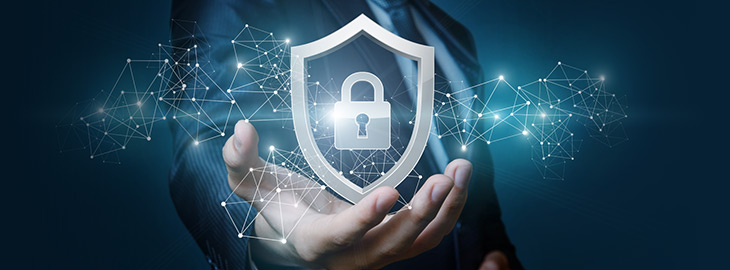
- Teacher: Ms.Nikita Pagar
- Teacher: Ms Vaishali Kumar
- Teacher: Mrs Remya Praveen
- Teacher: Dr. Bahubali Shiragapur
- Teacher: Ms Vaishali Kumar
- Teacher: Mr Riteshkumar Sale
- Teacher: Dr. Rahul Sharma
- Teacher: Dr. Swapnil Bhurat
- Teacher: Dr Arvind Kumar Mathur
- Teacher: Shital Vijay Nehere
- Teacher: Dr. Lubna Shaik
- Teacher: Siddhi Malusare
- Teacher: Dr Pranjali Tete
- Teacher: Arvind Singh
- Teacher: Arvind Singh
- Teacher: Arvind Singh
- Teacher: Dr Viraj Atre
|
Program |
Year of Study |
Semester |
Course Type |
|
B.B.A |
1st Year |
I |
Core Course |
|
Course Full Title |
Fundamentals of Management |
|
Course Short Title |
FOM |
|
Course Code |
101 |
|
Course Credit |
4 |
Course Description
The objective of this course is to introduce students to the principles of general management theory and to explain the interface between management and the business environment. Key aspects of the functional areas of management will be introduced (i.e., planning, organizing, leading, and controlling the use of economic and human resources to accomplish organizational goals), and the nature of organizational processes will be explained (e.g., processes related to organizational design such as decision making, leadership and communication.) The interface with the business environment will also provide students with a broad introduction to the current trends in management and international business conditions, organizational cultures, marketing, social responsibility and business ethics.
Course Outcomes:
CO 1: Understand basic principles and concept, nature &evolution of Management
CO 2: Understandvarious functions of management
CO 3: Apply managerial skills in business environment
CO 4: Relate to the current trends in management
CO 5: Understand the nuances of decision making
|
Unit No |
Topic |
Content |
|
1 |
Nature of Management and Evolution of Management Thoughts |
|
|
2 |
Functions of Management : Part – l |
|
|
3 |
Functions of Management : Part – II |
|
|
4 |
Functions of Management : Part – III |
|
|
5 |
Recent Trends in Management |
|
Learning Resources:
|
Sr. No |
Type |
Details |
|
1 |
Recommended Text Book |
1. Fundamentals of Management by Robbins, S.P. and Decenzo, D.A., Pearson Education Asia, New Delhi. |
|
2 |
Reference Books |
1. Management by Koontz and Wechrich, TMGH 2. Management by Stoner, et. al., Prentice Hall of India, New Delhi 3. Essentials of Management by Tripathi&Reddi 4. Management by SatyaRaju |
|
3 |
Recommended Research Journals |
1. Foundations of Management-The Journal of Warsaw University of Technology 2. Journal of Management Studies |
|
4 |
Recommended Magazines |
1. Universal Business School (e- Magazine) 2. Management Magazine (iup publications) 3. Diversity MBA magazine |
|
5 |
Recommended Journal |
1. The Five Minds of a Manager by Gosling, Jonathan, Minttzberg, Henry, Harvard Business Review. |
|
6 |
Recommended Websites |
1. http://www.iupindia.in 2. www.nxtbook.com 3. www.free-management-ebooks.com 4. www.sciencemag.org 5. http://www.drukerinstitute.com/link/about-peter- druker/ |
|
7 |
Recommended Tech- Talks |
1. Sheryl Sandberg –Face book COO 2. KrassimirPetrov |
- Teacher: Prasad Deshpande
- Teacher: Mr Atul Pradhan
- Teacher: Mrs Amruta Adwant
- Teacher: Dr Arvind Kumar Mathur
- Teacher: Mr Nitin Motgi
- Teacher: Mrs Amruta Adwant
- Teacher: Dr Arvind Kumar Mathur
- Teacher: Mr Nitin Motgi
- Teacher: Mrs Amruta Adwant
- Teacher: Dr. Swapnil Bhurat
- Teacher: Pranil Choudhari
- Teacher: Dr Arvind Kumar Mathur
- Teacher: Mr Nitin Motgi
- Teacher: Pranjal Shahinath Tekade
- Teacher: Sulaxan Jadhav
- Teacher: Suvarna Ketankumar Karankal
- Teacher: Dr. Niharika Singh
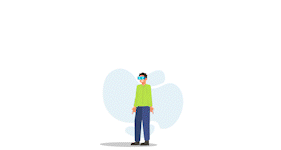
- Teacher: Mr Amit Kumar Om
This is an advanced interdisciplinary course designed to explore the applications and techniques of artificial intelligence (AI) in the field of media and creative content generation. This course delves into the intersection of AI and media, providing students with a comprehensive understanding of how AI can be harnessed to create, enhance, and manipulate various forms of media, including images, videos, music, and text.
- Teacher: Mr Amit Kumar Om
- Teacher: Mr. Rajkumar Chaudhari
- Teacher: Mr Shrikant Mahindrakar
- Teacher: Dr. Kapil Sharma
- Teacher: Ms Krishnendu S
- Teacher: Ms Priyanka Karale
- Teacher: Ms Yukta More
- Teacher: Dr. Prateek Srivastav
- Teacher: Ms Hetal Thaker
- Teacher: Bhanuprakash Bussagari
- Teacher: Mr Mahendra Patel
- Teacher: Dr. Vijay Shah
This course is intended to provide students with the basic principles of gene cloning, gene expression, construction of various libraries and gene identification. This course will help students to analyse DNA/RNA/proteins by genetic engineering techniques. Discussions are interactive, so students are challenged to find answers to key questions rather than being informed.
- Teacher: Dr Priyatosh Ranjan
- Teacher: Dr Priyatosh Ranjan
- Teacher: Dr Priyatosh Ranjan
- Teacher: Mrs Reema C Deshmukh
- Teacher: Dr. Sidhartha Singh
- Teacher: Dr Priyatosh Ranjan
- Teacher: Dr Priyatosh Ranjan
- Teacher: Dr Priyatosh Ranjan
- Teacher: ABHISHEK LAKHERA
- Teacher: Dr. Surabhi Sonam
- Teacher: Dr Priyatosh Ranjan
- Teacher: Dr Priyatosh Ranjan
- Teacher: Dr Priyatosh Ranjan
- Teacher: Sheetal Bura
- Teacher: Sharad Gupta
- Teacher: Ms Smruti Shelke
- Teacher: Mr. Awdhesh Tiwary
- Teacher: Ms Smruti Shelke
- Teacher: Ms Smruti Shelke
- Teacher: Dr. Priyanka Dhoot
- Teacher: Dr. Kranti Shingate
Course Description
Governance and Public Policy is a comprehensive subject that delves into the intricate mechanisms of government operations and the formulation, implementation, and evaluation of public policies. This course aims to provide students with a deep understanding of the principles, theories, and practices that govern public administration and policymaking.
Course Objective
• Understanding the concepts of Governance
• Exploring Public Policy Frameworks
• Analyzing Policy Issues and Challenges
• Assessing Policy Impact and Effectiveness
• Applying Practical Knowledge through Case Studies
Course Outcome
After completing the course, the students will be able to -
● Comprehensive Understanding of Governance and Public Polic
● Policy Analysis and Evaluation Skills
● Effective Policy Communication
● Understanding of Policy Implementation and Impact
Structure of the course
Unit-I: Introduction to governance and public policy
• Governance role, structure, and institutions
• Public Policy importance, concepts, theories, and models
• Case study 1
Unit-II: Public policy processes
• Policymaking
• Policy implementation
• Policy monitoring, evaluation, and analysis
• Case study 2
Unit-III: Stakeholders
• Overview of radio as a medium
• The importance of effective radio writing
• Historical context and evolution of radio broadcasting
Practical & Assignments
i) Presenting the qualities of various forms of governance
ii) Identifying some current public policy issues and presenting a thorough analysis
iii) Policy Evaluation and Impact Assessment
iv) Writing in brief about current policy documents
Evaluation Pattern – 50 Marks
|
Class Attendance & Behaviour |
Class Exercise / Assignment |
Mid Term Exam (Practical Format) |
|
10 marks |
15 Marks |
25 Marks |
25 Marks - The practical exam consisting two projects
Final Project-I: presentation of an in-depth story focused on
Governance: 10 Marks
Final Project-II: presentation of an in-depth story focused on Public
Policy: 15 Marks
Assessment method: - Practical marks will be allotted based on
creativity applied in the following axis:
• Relevance and Importance
• Critical Thinking and Analytical Skills
• Theoretical Framework
• Policy Development and Implementation
• Case Studies and Real-World Applications
• Interdisciplinary Approach
• Contemporary Issues and Future Trends
- Teacher: Maan Bardhan Kanth
- Teacher: Dr Ananya Mehta
- Teacher: Mr. Ajit Dalavi
- Teacher: Mr Jeevraj S Bhalerao
- Teacher: Ms Shruti Bir
- Teacher: Mr Ketan M Deore
- Teacher: Mr Krishna Kumar
- Teacher: Mr Aziz M Poonawala
- Teacher: Ms. Monika Sharma
- Teacher: Ms Sri Gayathri Vedula
- Teacher: Mr Jeevraj S Bhalerao
- Teacher: Ms Shruti Bir
- Teacher: Mr Ketan M Deore
- Teacher: Mr Krishna Kumar
- Teacher: Mr Aziz M Poonawala
- Teacher: Ms. Monika Sharma
- Teacher: Ms Sri Gayathri Vedula
- Teacher: Mr Amit Kumar Om
- Teacher: Dr. Kranti Shingate
|
Program |
Year of Study |
Semester |
Course Type |
|
B.B.A |
3rd Year |
V |
Core Course |
Course Description:
Green Supply Chain Management will focus on the fundamental strategies, tools and techniques required to analyse and design environmentally sustainable supply chain systems. Topics covered include: Closed-loop supply chains, reverse logistics systems, carbon foot printing, life-cycle analysis and supply chain sustainability strategy.
Class sessions will combine presentations, case discussions and guest speakers. All students will work on a course-long team project that critically evaluates the environmental supply chain strategy of an industry or a publicly traded company.
Course Outcomes:
CO.1: Explain the fundamental concepts of Green Supply Chain.
CO.2: Understand the Closed-loop Supply Chain.
CO.3: Understand the various tools of Product Eco-Design.
CO.4: Explain the Green Procurement and Purchasing
CO.5: Identify the Green Supplier Development.
CO.6: Illustrate the 4Re’s.
CO.7: Explain the Lean Manufacturing for Green Manufacturing.
CO.8: Illustrate the Closing the Loop: Reverse Logistics.
CO.9: Explain the applications of Green Logistics and Transportation
|
Unit no |
Topic |
Content |
|
1 |
Introduction |
Introduction – Traditional Supply Chain and Green Supply Chain – Environmental Concern and Supply Chain – Closed-loop Supply Chain – Corporate Environmental Management – Green Supply Chain (GSCM): Definition, Basic Concepts – GSCM Practices |
|
2 |
Eco-Design
|
Design for the Environment (DFE) or Eco-Design – Eco-Design and Supplier Relationships –Definitions of Eco-Design – Tools of Product Eco-Design – Involving suppliers in product eco-design: Drivers, Challenges and Successful factors |
|
3 |
Green Purchasing |
Green Procurement and Purchasing – Definitions of green purchasing – Drivers of green purchasing – Green purchasing strategies – Green purchasing performance measurement –Green Supplier Development and Collaboration. |
|
4 |
Green Manufacturing
|
Green Manufacturing or Production: Evolution, Definitions – 4Re’s: recycling, remanufacturing, reuse and reduction – Closed-loop Manufacturing – ISO 14000 systems – Life Cycle Analysis (LCA) – Lean Manufacturing for Green Manufacturing or Production. |
|
5 |
Green Logistics And Transportation
|
Green Logistics and Transportation – Definitions of Green Logistics – Critical drivers of Green Logistics – Green transportation and logistics practices – Environmental impacts of transportation and logistics – Closing the Loop: Reverse Logistics |
Learning Resources:
|
Sno |
Type |
Details |
|
1 |
Recommended Text Book |
1. Joseph Sarkis, Yijie Dou. Green Supply Chain Management: A Concise Introduction, Routledge, 2017. 2. Charisios Achillas, Dionysis D. Bochtis, Dimitrios Aidonis, Dimitris Folinas. Green Supply Chain Management, Routledge, 2018. |
|
2 |
Reference Books |
1. Hsiao-Fan Wang, Surendra M. Gupta. Green Supply Chain Management: Product Life Cycle Approach, McGraw Hill publishing, 2011 2. Stuart Emmett, Vivek Sood. Green Supply Chains: An Action Manifes by Stuart Emmett, Wiley publications, 2010 |
|
3 |
Recommended Magazines |
1. BOSS Magazine |
|
|
Recommended Journal |
1. Green Supply Chain Management: A Review", International Journal of Engineering Trends and Technology (IJETT) |
|
5 |
Recommended Websites |
|
|
6 |
Recommended Tech- Talks |
1.
2.
3.
|
- Teacher: Prasad Deshpande

- Teacher: Dr. Kranti Shingate
- Teacher: Ms Anuradha Patil
- Teacher: Dr Aparna Ghaisas
- Teacher: Dr. Kranti Shingate
- Teacher: Shital Vijay Nehere
Module - I
Few topics for your reference that have been covered in the classroom session but take your class lecture notes into consideration as well, while giving examination.
Computing classes, Vector and scalar processor, Von neumann Architecture, flynn's Taxonomy, parallel computer memory architecture, Clustering, Distributed System and Computing, HPC, HPC Architecture, HPC working, Types of High Performance Computing Systems, HPC Computational Barriers, HPC Cluster :- Setting Up an HPC Cluster, HPC Cluster Architecture, Storage Solutions for HPC, PARAM Series, AWS HPC example, HPC application:- HPC in Science ( Space Science, Earth Science , Atmospheric Science, Life Science, Nuclear Science, Nano Science, Crash Simulation, Aerodynamics Simulation & Aircraft Designing, Structural Analysis, Graphical Animation Application.- Teacher: Mr Mayank Nipane
- Teacher: Dr. Rahul Sharma
- Teacher: Ms Yashasvi Surajiwala
- Teacher: Mr. Yash Sanjay More
- Teacher: Mr Pulkit Tiwari
- Teacher: Mr. Santosh Chavan
- Teacher: Dr Sayalee Deshmukh
- Teacher: Mrs Remya Praveen
- Teacher: Ms Nayanatara Tampi
- Teacher: Ms.Falguni Marbate
- Teacher: Mr. Vivek Prakash Magar
- Teacher: Ms. Priyanka Subhash Kunjir
- Teacher: Ms. Monika Sharma
- Teacher: Prof.Shashi Singh
- Teacher: Mr. Vivek Prakash Magar
- Teacher: Ms. Sharvari Pote
- Teacher: Ms. Tejashri Chhagan Sawant
- Teacher: Miss Kavita Ashok Gaikwad
- Teacher: Dr. Palash Bairagi
- Teacher: Dr. Kranti Shingate
- Teacher: Sulaxan Jadhav
- Teacher: Prof.Shashi Singh
- Teacher: Mrs Reema C Deshmukh
- Teacher: Mrs Reema C Deshmukh
- Teacher: Ms Divya Raidas
- Teacher: Mrs Reema C Deshmukh
- Teacher: Dr. Rahul Sharma
- Teacher: Ms. Saher Dabir Pathan
- Teacher: Dr. Rahul Sharma
- Teacher: Mrs.Mayura Abhijit khanore
- Teacher: Dr. Rahul Sharma
- Teacher: Kunal Dumbre
- Teacher: Mr. Yash Sanjay More
- Teacher: Prof.Shashi Singh
- Teacher: Shikha Shubham
- Teacher: Anagha Devalekar
- Teacher: Anjali Wagh
- Teacher: Sheetal Bura
- Teacher: Dr. Madhavi Deshpande
- Teacher: Dr. Madhavi Deshpande
- Teacher: Dr. Madhavi Deshpande

- Teacher: Mr. Ashwin Agarwal
Name of the Course:
- Course Instructor :
Name: Dr. Madhavi Deshpande
Office Number: 7709025301
Phone:
Email:Madhavi.deshpande@dypiu.ac.in
Office hours: Thursdays – 4pm -5pm
Location: cabin 351
- Level (who can take this course?): Students who have completed 1st semMBA
- Credit : 3
- Evaluation :
|
|
https://www.coursera.org/specializations/human-resource-management |
10 marks |
Certificate needed |
|
Presentation on online REcruitment and poster using Canva |
10 marks |
Exhibition |
|
|
Role Play/Skits |
10 marks |
Submission of scripts/actual performance |
|
|
https://www.coursera.org/learn/wharton-people-analytics |
10 marks |
Certificate Needed |
|
|
Compensation & Benefits |
https://www.coursera.org/learn/compensation-management?#about |
10 marks |
Certificate Needed |
|
Endterm |
Offline |
50 marks |
Type will declare before examination |
- Maximum Number of Students : 60
Course Objectives:
The course is designed to familiarize the learners on operational as well as strategic functions of HRM, and how these are operationalized in the business domain.
Course Outcomes:
CO 1: Appreciate the importance of human resource management as a field of study and as a central management function;
CO 2: Understand the implications for human resource management of the behavioural sciences, government regulations, and court decisions;
CO 3: Know the elements of the HR function (e.g. – recruitment, selection, training and development, etc.) and be familiar with each element’s key concepts & terminology; and
CO 4: Apply the principles and techniques of human resource management gained through this course to the discussion of major personnel issues and the solution of typical case problems.
Prerequisites:
Throrough understand of Mangement Functions and Organizational Behavior
Course Syllabus :
|
Sr. No |
Content |
Date |
|
1 |
Introduction to HRM What is human Resource Management, HR as a profit center, |
24.1.23 |
|
2 |
People as competitive advantage, Evolution of HRM, |
27.1.23 |
|
3 |
Strategic Human Resource management Functions, |
31.1.23 |
|
4 |
HR score card, |
2.2.23 |
|
5 |
workforce demographics and diversity trends, |
3.2.23 |
|
6 |
Employee Engagement Distributed HR, |
7.2.23 |
|
7 |
Digital HRM, |
9.2.23 |
|
8 |
HR Analytics |
10.2.23 |
|
9 |
Evaluation 1 – Submission |
14.2.23 |
|
10 |
Talent Management, imperatives and |
16.2.23 |
|
11 |
Talent management Review, Process, |
17.2.23 |
|
12 |
Job Analysis, |
21.2.23 |
|
13 |
Job Descriptions, |
23.2.23 |
|
14 |
workforce planning and forecasting , Predictive workforce monitoring, |
24.2.23 |
|
15 |
Recruitment and selection and Placement |
28.2.23 |
|
16 |
Succession Planning, |
2.3.23 |
|
17 |
Recruitment yield pyramid, |
3.3.23 |
|
18 |
Social media recruitment, Artificial Intelligence in recruitment |
7.3.23 |
|
19 |
Evaluation 2 |
9.3.23 |
|
20 |
Orienting and onboarding new employees, |
10.3.23 |
|
21 |
Training need identification, Training need analysis, aligning strategy with training, |
16.3.23 |
|
22 |
Designing Training program, |
17.3.23 |
|
23 |
Methods of training, Evaluation and Feedback. Management Development Program, |
21.3.23 |
|
24 |
, Talent Development Initiatives – Differential Development Assignments , |
23.3.23 |
|
25 |
Employee engagement and Empowerment |
24.3.23 |
|
26 |
Evaluation 3 |
28.3.23 |
|
27 |
Performance Management Concept |
30.3.23 |
|
28 |
– process, need, defining employee goals and performance standards, |
31.3.23 |
|
29 |
Who should appraise? Techniques, Rater errors. |
4.4.23 |
|
30 |
Career management – psychological contract |
6.4.23 |
|
31 |
integrating Talent management, career and succession planning , |
7.4.23 |
|
32 |
Manager as a mentor , |
11.4.23 |
|
33 |
Managing Employee turnover, promotions and transfers , Dismissals |
13.4.23 |
|
34 |
Evaluation 4 |
14.4.23 |
|
35 |
Compensation philosophy, Components, |
18.4.23 |
|
36 |
Compensation plans and business strategy, |
20.4.23 |
|
37 |
devising a compensation plan, |
21.4.23 |
|
38 |
Incentives, Benefits and Services, Executive pay. |
25.4.23 |
|
39 |
Evaluation 5 |
27.4.23 |
|
40 |
|
28.4.23 |
|
|
|
|
|
|
|
|
|
|
|
|
|
|
|
|
- Course Outcome:
- Understand fundamentals of HRM and role of HR
- Understand talent management process and apply Social media recruitment dynmics to recruitment process
- Prepare job descriptions
- Identify Training needs and design training programs
- Understand the purpose of Performance management
- Text Book:
Dessler, G. Fundamentals of Human Resource Management (4th Edition, Pearson)
- Reference Book:
K Ashwatthapa, Human Resource Management, 8th Edition, Mcgraw Hill
- Study Materials:
|
Sr. No |
Type |
Details |
|
1 |
Recommended Text Book |
1. Dessler, G. Fundamentals of Human Resource Management (4th Edition, Pearson) |
|
2 |
Reference Books |
1. K Ashwatthapa, Human Resource Management, 8th Edition, Mcgraw Hill |
|
3 |
Recommended Research Journals |
1. Human Resource Management Journal, Wiley online 2. International Journal of Human Resource Management, Taylor and Francis Journals |
|
4 |
Recommended magazines |
1. People Management 2. HRD Connect 3. Training Journal 4. Harvard Business Review |
|
6 |
Recommended Websites |
1. HR.com 2. HR Bartender 3. TLNT 4. SHRM in the News 5. Talent Culture
|
|
7 |
Recommended Ted Talks |
1. Future of Working: The Future of Talent Management, Andrea Tjoeng, https://www.youtube.com/watch?v=-anGdH4vhNY 2. https://www.ted.com/talks/regina_hartley_why_the_best_hire_might_not_have_the_perfect_resume 3. https://www.ted.com/talks/yves_morieux_how_too_many_rules_at_work_keep_you_from_getting_things_done 4. https://www.ted.com/talks/margaret_heffernan_forget_the_pecking_order_at_work 5. https://www.ted.com/talks/tim_leberecht_4_ways_to_build_a_human_company_in_the_age_of_machines
|
- Teacher: Dr. Madhavi Deshpande
M203 Human Resource
Management
|
Program |
Year of Study |
Semester |
Course Type |
|
M.B.A-DB |
1st Year |
II |
Core Course |
|
Course Full Title |
|
|
Course Short Title |
HRM |
|
Course Code |
M203 |
|
Course Credit |
3 |
Course Description
Human
Resource management is a primary function of any organization which infuses
life, and which also expends 50% of operating budget of the organization. HRM
strategizes in making effective use of human capital in the organization
involving leadership, values, and employment planning, recruiting, selecting,
training and compensating employees, significantly influencing organizational
culture.
The course is designed to familiarize the learners on operational as well as strategic functions of HRM, and how these are operationalized in the business domain.
Course Outcomes:
CO 1: Appreciate the importance of human resource management as a field of study and as a central management function;
CO 2: Understand the implications for human resource management of the behavioural sciences, government regulations, and court decisions;
CO 3: Know the elements of the HR function (e.g. – recruitment, selection, training and development, etc.) and be familiar with each element’s key concepts & terminology; and
CO 4: Apply the principles and techniques of human resource management gained through this course to the discussion of major personnel issues and the solution of typical case problems.
|
Course Content |
|||
|
Unit No |
Topic |
Content |
No of Lectures |
|
1 |
Introduction to HRM |
What is human Resource Management, HR as a profit center, People as competitive advantage, Evolution of HRM, Strategic Human Resource management Functions, HR score card, workforce demographics and diversity trends, Employee Engagement Distributed HR, Digital HRM, HR Analytics |
6 |
|
2 |
Talent Acquisition |
Talent Management, imperatives and Talent management Review, Process, Job Analysis, Job Descriptions, workforce planning and forecasting , Predictive workforce monitoring, Recruitment and selection and Placement , Succession Planning, Recruitment yield pyramid, Social media recruitment, Artificial Intelligence in recruitment |
6 |
|
3 |
Talent Development ` |
Orienting and onboarding new employees, Training need identification, Training need analysis, aligning strategy with training, Designing Training program, Methods of training, Evaluation and Feedback. Management Development Program, Talent Development Initiatives – Differential Development Assignments , Employee engagement and Empowerment |
6 |
|
4 |
Talent Management |
Performance Management Concept – process, need, defining employee goals and performance standards, Who should appraise? Techniques, Rater errors. Career management – psychological contract, integrating Talent management, career and succession planning , Manager as a mentor , Managing Employee turnover, promotions and transfers , Dismissals |
6 |
|
5 |
Compensation & Benefits |
Compensation philosophy, Components, Compensation plans and business strategy, devising a compensation plan, Incentives, Benefits and Services, Executive pay. |
6 |
|
|
|
Total lectures |
30 |
Learning Resources:
|
Sr. No |
Type |
Details |
|
1 |
Recommended Text Book |
1. Dessler, G. Fundamentals of Human Resource Management (4th Edition, Pearson) |
|
2 |
Reference Books |
1. K Ashwatthapa, Human Resource Management, 8th Edition, Mcgraw Hill |
|
3 |
Recommended Research Journals |
1. Human Resource Management Journal, Wiley online 2. International Journal of Human Resource Management, Taylor and Francis Journals |
|
4 |
Recommended magazines |
1. People Management 2. HRD Connect 3. Training Journal 4. Harvard Business Review |
|
6 |
Recommended Websites |
1. HR.com 2. HR Bartender 3. TLNT 4. SHRM in the News 5. Talent Culture
|
|
7 |
Recommended Ted Talks |
1. Future of Working: The Future of Talent Management, Andrea Tjoeng, https://www.youtube.com/watch?v=-anGdH4vhNY 2. https://www.ted.com/talks/regina_hartley_why_the_best_hire_might_not_have_the_perfect_resume 3. https://www.ted.com/talks/yves_morieux_how_too_many_rules_at_work_keep_you_from_getting_things_done 4. https://www.ted.com/talks/margaret_heffernan_forget_the_pecking_order_at_work 5. https://www.ted.com/talks/tim_leberecht_4_ways_to_build_a_human_company_in_the_age_of_machines
|
- Teacher: Prasad Deshpande
- Teacher: Ms.Garima Kaneria
To enable students to inculcate Professionalism in oral and written Communication. Instilling confidence and preparing them for future requirements in their Career.
- Teacher: Aabha Gupta
- Teacher: Abhinita Daiya
- Teacher: Mr. Ravi Sagar
- Teacher: Dr.Rahul Weldode
- Teacher: Dr. Sonal Mahajan
- Teacher: Dr. Sonal Mahajan
- Teacher: Kunal Dumbre
- Teacher: Varshita Gangadhar
- Teacher: Sulaxan Jadhav
- Teacher: Jayashri Kawale
- Teacher: Ms Shilpa Marathe
- Teacher: Mr. Yash Sanjay More
- Teacher: Dr. Bahubali Shiragapur
- Teacher: Mr Kumud Das
- Teacher: Mr Kumud Das
- Teacher: Mr Kumud Das
- Teacher: Mr Kumud Das

This course comprehensively explores the Indian economy, blending historical perspectives with contemporary dynamics. It explores macroeconomic shifts to microeconomic nuances. Each module unfolds diverse facets of the Indian economic landscape, revealing the perpetual impact of economic principles on our daily lives. Students will understand how economic forces shape the intricate tapestry of India's economic journey.
- Teacher: Ms. Neha Dubey
- Teacher: Maan Bardhan Kanth
- Teacher: Dr Sheeva Dubey
- Teacher: Dr. Pallavi Jha
This course provides an in-depth understanding of the Indian political system, its historical evolution, structure, and functioning. Designed for media and journalism students, the course emphasizes the interplay between politics, governance, and media. It aims to equip students with the knowledge necessary to analyse political developments and communicate them effectively in their professional roles.
- Teacher: Maan Bardhan Kanth
- Teacher: Mr Kumud Das

- Teacher: Manjaree Pandey

- Teacher: Manjaree Pandey

- Teacher: Manjaree Pandey

- Teacher: Manjaree Pandey

- Teacher: Manjaree Pandey
- Teacher: Dr. Pallavi Jha
- Teacher: Mr Kumud Das
- Teacher: Dr. Pallavi Jha
- Teacher: Dr Dipti chandra
- Teacher: Ms Vaishali Kumar
- Teacher: Dr. Dipika Pradhan
- Teacher: Dr Dipti chandra
- Teacher: Ms Vaishali Kumar
- Teacher: Dr. Dipika Pradhan
- Teacher: Ms Vaishali Kumar
- Teacher: Dr. Vijay Shah
- Teacher: Dr. Sanjay Kumar
- Teacher: Dr. Sanjay Kumar

Industry 4.0 is the subset of the fourth industrial revolution that concerns industry. The fourth industrial revolution encompasses areas which are not normally classified as an industry, such as smart cities, for instance.
Although the terms "Industry 4.0" and "fourth industrial revolution" are often used interchangeably, "Industry 4.0" factories have machines which are augmented with wireless connectivity and sensors, connected to a system that can visualize the entire production line and make decisions on its own.
In essence, Industry 4.0 is the trend towards
automation and data exchange in manufacturing technologies and processes which include cyber-physical systems
(CPS), the internet of things (IoT), industrial internet of things (IIOT), cloud computing, cognitive computing and
artificial intelligence.
- Teacher: Mr. Ashwin Agarwal
- Teacher: Ms Hetal Thaker
- Teacher: Prachi Chhajed
- Teacher: Dr Sarika Jadhav
- Teacher: Dr Richa Purohit
- Teacher: Ms. Prachi Soniminde
Name of the Course: Information Security
- Course Instructor:
- Name: Dr. Sunanda Mulik
Office Number: 452
Phone: 9112702866
Email: sunanda.mulik@dypiu.ac.in
Office hours:
Location: 4th Floor, Office no 452
- Teaching Assistant:
Name: --
Contact:
Office Hours: Time slots
Location
- Level (who can take this course?):
- Credit: 4-0-0-6
- Evaluation: Theory + Practical
- Breakup of evaluation: % wise
ESE (Theory)- 50 %
Practical-20
Mid Term-15%
Assignments-15%
- Maximum Number of Students: 21
Course Objectives:
Students will be able to understand-
1. To provide the ability to examine and analyze real-life security cases.
2. To provide a thorough introduction to the different concepts of information security practices.
3. To impart knowledge of different mechanisms for encryption, digital signature, MAC, and hash functions.
4. To make students understand how to apply these principles for securing data over the internet.
Course
Prerequisites:
Nil
Course Syllabus:
|
Sr. No |
Content |
Date |
|
1 |
To make students understand how to apply these principles for securing data over the internet. |
|
|
2 |
Aspects of security: Attacks, services and mechanisms, Taxonomy |
|
|
3 |
Generic types of attack Network Security Model |
|
|
4 |
Stream ciphers, Block ciphers. Design considerations for stream ciphers, Cryptanalysis of stream ciphers |
|
|
5 |
Conventional Cryptographic Techniques |
|
|
6 |
Combined encryption and encoding. |
|
|
7 |
Block Ciphers – DES and variant, modes of use of DES |
|
|
8 |
Public key cryptography, characteristics |
|
|
9 |
Applications, and schemes |
|
|
10 |
RSA: Use, working, Key generation, and distribution |
|
|
11 |
Key distribution in asymmetric encryption, Diffie Hellman Key Exchange |
|
|
12 |
set up , examples |
|
|
13 |
Introduction to Message Authentication & e-mail |
|
|
14 |
MAC and its Usage |
|
|
15 |
Hash function- MD-5, SHA-512, working of SHA I, |
|
|
16 |
compression function, HMAC structure |
|
|
17 |
Digital Signatures: Properties requirements, standards, verification process |
|
|
18 |
Public Key distribution: Digital Certificates, Certificate Authority, X.509 Authentication service, |
|
|
19 |
certificate format, certificate renewal, revocation, delta revocation |
|
|
20 |
Email privacy, cryptographic algorithms and secrets, certificates |
|
|
21 |
SMTP |
|
|
22 |
PGP (Pretty Good Privacy), operations, authentication and confidentiality , and services, |
|
|
23 |
compression and segmentation service |
|
|
24 |
MIME : headers , contents, techniques |
|
|
25 |
Introduction to IPSec, Benefits, Types of modes, |
|
|
26 |
AH protocol , ESP protocol, security Association and database. |
|
|
27 |
Web security requirements |
|
|
28 |
Network security approaches |
|
|
29 |
Data Compression Technique |
|
|
30 |
IP Security: Architecture, Authentication Leader, Encapsulating security Payload – Key Management |
|
|
31 |
Web Security: SSL, TLS, SET |
|
|
32 |
SSL-Change-cipher_spec Protocol, Alert Protocol, Handshake Protocol |
|
|
33 |
Phases and handshake procedure of TLS |
|
|
34 |
SET – working, business requirement, duel signature |
|
|
35 |
Firewalls Design principle, techniques, established systems, types, Packet filter router, |
|
|
36 |
attacks and countermeasures, application level firewall, circuit level gateway, |
|
Laboratory
|
Sr. No |
Content |
Date |
|
1 |
Write a script to perform email analysis.
|
|
|
2 |
Generate hash value of a file using script.
|
|
|
3 |
Programmatically illustrate the symmetric substitution encryption technique.
|
|
|
4 |
Write a script to generate RSA key pair. |
|
|
5 |
Network Analysis |
|
- Course Outcome:
On completion of the course the student should be able to:
Define the terms used in information security such as attacks, virus, firewall, encryption, digital signature etc.
Explain different types of encryption techniques.
Apply their knowledge of securing e-mails, sending secured data over network.
List the alternative solutions for data and information security from different active and passive attacks.
- Text Book:
W. Stallings, Network Security Essentials (Applications and Standards), 7th ed., Pearson Education.
- Reference Book:
W. Stallings, Cryptography and network Security, 5rd ed., Pearson Education.
R. Bragg, M. Rhodes, Network Security: The complete reference, 3rd ed., TMH
Buchmann,
Introduction to Cryptography, Springer
- Study Materials:
Uploaded from time to time
- Teacher: Anupurba Das
- Teacher: Dr Sunanda R Mulik
- Teacher: Dr. Rahul Sharma
- Teacher: Mrs. Heena Bhatia
- Teacher: Rashmi Dharwadkar
- Teacher: Dr Richa Purohit
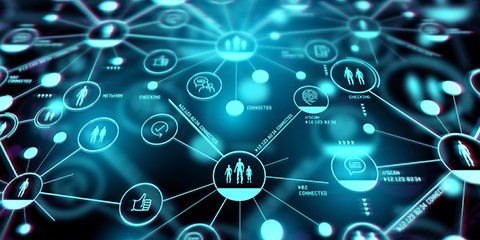
- Teacher: Kshiitiz Anand
- Teacher: Anil Narasipuram
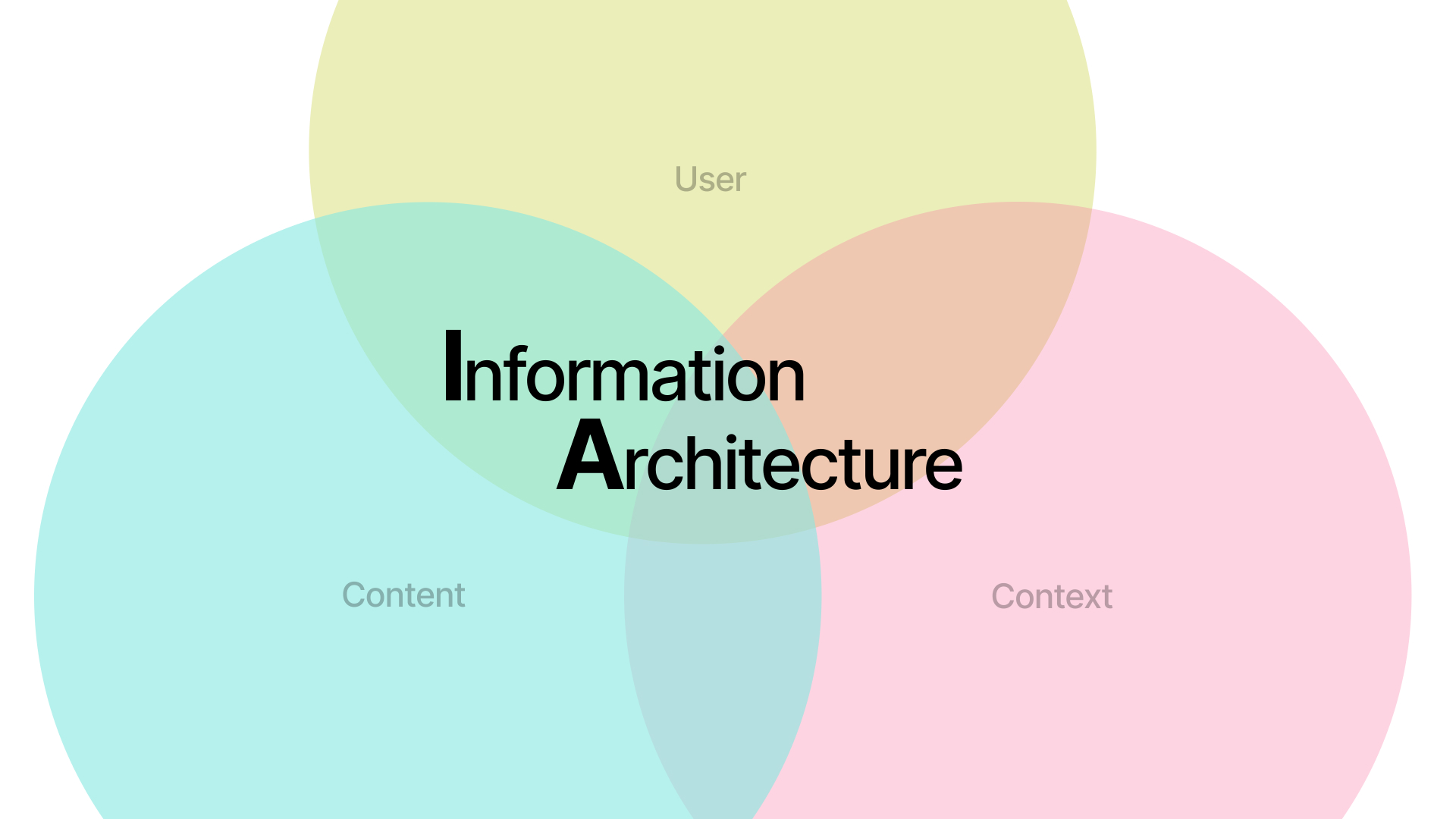
- Teacher: Ms Sri Gayathri Vedula

Aim(s) - The aim of learning information architecture as a module for design students is to equip them with the knowledge and skills necessary to create effective and user-centered information structures in various design contexts.
Objective(s) -
To understand the role of information architecture in design and its importance in organizing and structuring information for effective communication and user experience.
To develop user-centered design skills by conducting user research, understanding user needs, and incorporating usability principles into information architecture design.
To learn various techniques for organizing and classifying information, including hierarchical structures, faceted classification, metadata, and other methods that facilitate efficient information retrieval and navigation.
To apply fundamental design principles such as layout, typography, color, and composition to create visually appealing and readable information architectures.
To develop skills in content strategy and information design, including creating content hierarchies, meaningful taxonomies, and structuring content for different contexts and devices.
Detailed Syllabus
Session No. | Topic & Sub-Topic | Duration (hrs.) |
Information, data, complexity, uncertainty | 5 | |
Information systems, mapping information systems | 5 | |
Information processing, information ecology, principles of cognitive psychology, memory, cognitive load | 5 | |
Information Architecture, taxonomies and hierarchies of information | 10 | |
Grouping and classifying content, naming and labeling content, structures, information priority | 10 | |
5 different IA models - Hierarchical trees, Nested lists, Hub-and-Spoke, Bento Box, Filtered view, choosing and combining models | 10 | |
Navigation Design, primary, secondary, global and local navigation. | 5 | |
Building a sitemap for a website/app | 5 | |
Testing and validating IA | 5 | |
Total hrs. | 60 hrs. |
(Please add the number of rows as required to the Table above)
`Prerequisite/s-
Understanding of Design Principles: Familiarize yourself with fundamental design principles such as layout, typography, color theory, and composition. This knowledge will provide a solid basis for creating effective information structures.
Knowledge of User Experience (UX) Design: Gain an understanding of UX design principles, including user research, wireframing, prototyping, and usability testing. UX design is closely related to information architecture and helps ensure that the information structures you create are user-centered and intuitive.
Information Organization and Classification: Learn about different methods of organizing and classifying information, such as hierarchical structures, faceted classification, and metadata. Understanding these concepts will help you design effective information architectures that enable users to find and navigate information easily.
Content Strategy and Information Design: Explore the principles of content strategy and information design. This involves understanding how to structure and present information in a clear, coherent, and meaningful way.
User Research Techniques: Familiarize yourself with user research methods, such as interviews, surveys, and usability testing. User research helps you gain insights into user needs, behaviors, and preferences, which are crucial for designing information architectures that meet user requirements.
Data Visualization: Develop skills in data visualization to effectively present complex information in a visual and understandable format. This can involve learning about chart types, data storytelling, and information graphics.
Collaboration and Communication Skills: Information architecture often involves working with cross-functional teams and stakeholders. Enhance your collaboration and communication skills to effectively convey your ideas, understand user requirements, and work in a team environment.
Mode of submission : Soft Copies
- Teacher: Mr Krishna Kumar
- Teacher: Mr Krishna Kumar
- Teacher: Ms.Nikita Pagar
- Teacher: Dr Swapnil Waghmare
- Teacher: Dr. Maheshwari Biradar
- Teacher: Mr. Yash Sanjay More
- Teacher: Dr. Rahul Sharma
- Teacher: Dr Swapnil Waghmare
- Teacher: Ms. Neha Dubey
- Teacher: Dr Ananya Mehta
- Teacher: Ms. Pragati Pallavi

MBA-DB
SEMIV
SCM 406 Intelligent Transport Systems
- Teacher: Mr. Ashwin Agarwal
Presentation Should be Uploaded by Each Members.
- Teacher: Ms Rupali Gupta
- Teacher: Maithili Salgaokar
- Teacher: Dr. Palash Bairagi
- Teacher: Ms Sandhya S Jawale
- Teacher: Mrs Remya Praveen
- Teacher: Mr Tosheet Hedaoo
- Teacher: Ms Vaishali Kumar
- Teacher: Dr. Bahubali Shiragapur
- Teacher: Mr Ajinkya Kothavade
- Teacher: Ms Vaishali Kumar
- Teacher: Mr Riteshkumar Sale
- Teacher: Dr. Rahul Sharma
- Teacher: Mr Jeevraj S Bhalerao
- Teacher: Ms Shruti Bir
- Teacher: Mr Ketan M Deore
- Teacher: Mr Krishna Kumar
- Teacher: Mr Aziz M Poonawala
- Teacher: Ms. Monika Sharma
- Teacher: Ms Sri Gayathri Vedula
- Teacher: Mr Jeevraj S Bhalerao
- Teacher: Ms Shruti Bir
- Teacher: Mr Ketan M Deore
- Teacher: Mr Krishna Kumar
- Teacher: Mr Aziz M Poonawala
- Teacher: Ms. Monika Sharma
- Teacher: Ms Sri Gayathri Vedula
- Teacher: Dr. Sirshendu Arosh
- Teacher: Dr. Sanjay Badhe
- Teacher: Mrs. Shweta Banait
- Teacher: Dr Dipti chandra
- Teacher: Dr. Somya Dubey
- Teacher: Varshita Gangadhar
- Teacher: Sulaxan Jadhav
- Teacher: Dr.Vaishnaw Kale
- Teacher: Mr Shrikant Mahindrakar
- Teacher: Mr. Yash Sanjay More
- Teacher: Mrs Smita S Pawar
- Teacher: Dr. Dipika Pradhan
- Teacher: Dr Rishikant Rajdeepak
- Teacher: Dr. Samarjit Roy
- Teacher: Varsha Sambhaje
- Teacher: Dr. Kapil Sharma
- Teacher: Dr. Rahul Sharma
- Teacher: Dr. Bahubali Shiragapur
- Teacher: Dr. Gaurav Kumar Singh
- Teacher: Mr Pulkit Tiwari
- Teacher: Sulaxan Jadhav
- Teacher: Dr.Rahul Weldode
- Teacher: Dr.Rahul Weldode
B.A. JMC: Semester - I
Course Name: INTRODUCTION TO ADVERTISING
Course Code: JMC 103
Course Credits: 4
Course Objectives:
• To introduce concepts, processes, and theories of Advertising
• To introduce Advertising and Process, its relevance, methods, and applications
• To acquaint them with important aspects of the process of Advertising
• Explain various Models and Theories of Advertising
Course Outcomes:
On completion of this course, the students will be able to:
• The expected outcome is for all students is to develop a broad understanding of the advertising theory and practice.
• Students will become equipped with the means to analyses advertisements and theory in dynamic ways.
• Understanding which intellectual abilities are essential to the approach within the advertising processes.
• Develop awareness of appropriate advertising strategies based on the learned objectives.
- Teacher: Sandeep Dongare
- Teacher: Mr Amit Kumar Om
- Teacher: Ms. Pragati Pallavi
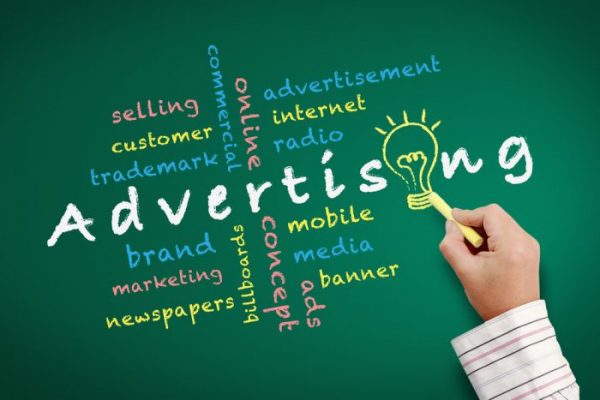
- Teacher: Ms. Pragati Pallavi
- Teacher: Rashmi Dharwadkar
- Teacher: Dr. Bahubali Shiragapur
- Teacher: Bhanuprakash Bussagari
Course Description cum Session Plan
Introduction to Animation - DES2403
SEM – IV / 2ND YEAR
● Course Instructor
Name: Ketan M Deore
Office Number:
Phone: 9712695416
Email: ketan.deore@dypiu.ac.in
Office hours: 9:00 am to 5 pm.
Location: DYPIU Akurdi.
● Teaching Assistant
Name: Shruti Bir
Contact: NA
Office Hours: 9:00 am to 5 pm.
Location: DYPIU Akurdi.
- Level (who can take this course?): 12th pass / Elementary and Intermediate course certificate
- Credit: 1-1-4-4
- Evaluation: Internal and external assignments (80 + 20 )
- Breakup of evaluation: % wise (80% internal and 20% external / jury)
- Maximum Number of Students: 44
Course Objectives:
● Understand the history and evolution of animation as a form of communication.
● Acquire fundamental skills to navigate the life cycle of video film making.
● Develop concepts, stories, and synopses for animated projects.
● Pre-visualize camera angles and shot division for storytelling purposes.
● Write screenplays and scripts tailored for animation.
● Explore various animation mediums to execute final stories effectively.
● Create concept art and character designs for animated projects.
● Collaborate effectively in group projects, particularly in storyboarding and production phases.
● Apply appropriate techniques for animation production, including shooting, animation, and editing.
● Present their animated works for grading and constructive feedback.
Prerequisites:
- Basic understanding of visual communication principles.
- Familiarity with design software/tools would be beneficial but not mandatory.
Course Syllabus:
|
Modules |
Lect. |
|
Module 1: Introduction of Students and Faculty (3 hrs) ● Ice-breaking activities ● Introduction to the course objectives and expectations ● Overview of faculty expertise and resources available |
3 |
|
Module 2: Introduction to Animation and Screening of Animation Films (3 hrs) ● History and evolution of animation ● Introduction to key animation techniques ● Screening and analysis of classic and contemporary animated films |
3 |
|
Module 3: Study of Principles and Process of Animation (6 hrs) ● Principles of animation (e.g., squash and stretch, timing, anticipation) ● Understanding the animation pipeline ● Hands-on exercises to apply animation principles |
3 |
|
Module 4: Introduction to Adobe Animate (6 hrs) ● Animate UI, Tween Animation – ● To learn and understand the UI of Adobe Animate application |
3 |
|
Module 5: Symbol Animation (6 hrs) ● Symbol Animation – Learn and understand the fundamentals of symbol animation technique in Adobe Animate using the ball bounce examples ● Introduction to tween animation and its types |
3 |
|
Module 6: Advance level of symbol animation (6 hrs) ● Advanced symbol animation & Path Animation – Learn and understand the fundamentals of symbol animation technique in Adobe Animate along with path animation |
3 |
|
Module 7: Motion tween animation and graph editor (6 hrs) ● Motion Tween Animation and Graph Editor – ● To learn the technique of motion tween which is the core of Adobe Animate application and to implement the same in terms of attractive animations. |
6 |
|
Module 8: Masking (6 hrs) ● Masking - using masking to create 3D Planet in Animate, Cell Animation – ● To learn the masking technique in Adobe Animate to make the animate creative and attractive |
6 |
|
Module 9: Panning and Zooming (12 hrs) ● Pan Shot and Zoom shot animation – ● To learn and understand the camera panning technique in Adobe Animate |
06 |
|
Module 10: Introduction to walkcycle (18 hrs) ● Stick Figure Walk cycle, Symbol Walk cycle – To learn the technique of stick figure animation in Adobe Animate and to implement it in the form of stick figure character animation ● Complete walkcycle using symbol system – To learn and understand the process of animating the stick figure character in Adobe Animate |
12 |
|
Module 11: Project (6 hrs) ● Project Discussion and Assigned to the students – To understand the importance of the project and implement the same as the given instruction, To follow the deadline and submit the project in the given timeframe. ● Project status review 1 – To check the status of ongoing students project and solve their issues |
6 |
|
Module 12: Presentation of Project/Informative Video (6 hrs) ● Project status review 2 – To check the status of ongoing students project and solve their issues ● Project doubts solving session – TO check and solve individual doubts regarding the project. |
6 |
|
Total Hours |
60 |
Lesson/Session Plan:
|
Sr. No |
Content (Daily Plan) |
Date (Proposed) |
Date (Actual) |
|
1 |
Animate UI, Tween Animation – To learn and understand the UI of Adobe Animate application |
29/01/25 |
|
|
2 |
Symbol Animation – Learn and understand the fundamentals of symbol animation technique in Adobe Animate using the ball bounce examples |
30/01/25 |
|
|
3 |
Advanced symbol animation & Path Animation – Learn and understand the fundamentals of symbol animation technique in Adobe Animate along with path animation |
31/01/25 |
|
|
4 |
Masking - using masking to create 3D Planet in Animate, Cell Animation – To learn the masking technique in Adobe Animate to make the animate creative and attractive |
05/02/25 |
|
|
5 |
Motion Tween Animation and Graph Editor – To learn the technique of motion tween which is the core of Adobe Animate application and to implement the same in terms of attractive animations. |
06/02/25 |
|
|
6 |
Pan Shot and Zoom shot animation – To learn and understand the camera panning technique in Adobe Animate |
13/02/25 |
|
|
7 |
Filters, Loop Animation using stick figure animation – To learn the filter for effects and the process of loop animation in Adobe Animate |
14/02/25 |
|
|
8 |
Stick Figure Walk cycle, Symbol Walk cycle – To learn the technique of stick figure animation in Adobe Animate and to implement it in the form of stick figure character animation |
21/02/25 |
|
|
9 |
Complete walkcycle using symbol system – To learn and understand the process of animating the stick figure character in Adobe Animate |
24/02/25 |
|
|
10 |
Project Discussion and Assigned to the students – To understand the importance of project and implement the same as the given instruction, To follow the deadline and submit the project in the give timeframe. |
25/02/25 |
|
|
11 |
Project work |
27/02/25 |
|
|
12 |
Project work |
28/02/25 |
|
|
13 |
Project work |
06/03/25 |
|
|
14 |
Project status review 1 – To check the status of ongoing students project and solve their issues |
07/03/25 |
|
|
15 |
Project work |
10/03/25 |
|
|
16 |
Project work |
11/03/25 |
|
|
17 |
Project status review 2 – To check the status of ongoing students project and solve their issues |
12/03/25 |
|
|
18 |
Project work |
13/03/25 |
|
|
19 |
Project work |
17/03/25 |
|
|
20 |
Project work |
18/03/25 |
|
|
21 |
Project work |
19/03/25 |
|
|
22 |
Project doubts solving session – To check and solve individual doubts regarding the project. |
20/03/25 |
|
|
23 |
Project doubts solving session – To check and solve individual doubts regarding the project. |
21/03/25 |
|
|
24 |
Project submission (Informative Animation) |
24/03/25 |
|
● Course Outcome:
|
CO1 |
Demonstrate a comprehensive understanding of animation principles and techniques. |
|
CO2 |
Exhibit proficiency in developing concepts, stories, and storyboards for animation projects. |
|
CO3 |
Showcase skills in character design, concept art, and background creation. |
|
CO4 |
Apply appropriate techniques for animation production, including pre-production, production and post production. |
Text book: "The Animator's Survival Kit" by Richard Williams.
"Animation 1: Learn How to Animate Cartoons Step by Step" by Preston Blair
Reference book: "The Illusion of Life: Disney Animation" by Frank Thomas and Ollie Johnston
"Animation 1: Learn How to Animate Cartoons Step by Step" by Preston Blair
● Study Materials:
● PDF/NOTES/WEB REFERENCES.
· The Illusion of Life by Disney: 12 Principles of Animation
· Adobe Animate Tutorials: Adobe Help Center
___________________________________________________________________________________
Approved / Not approved
(Dr. Madhavi Deshpande)
Dean Academics - DYPIU
Director
School of Commerce and Management,
D.Y. Patil International University, Akurdi, Pune
- Teacher: Mr Ketan M Deore
- Teacher: Bhanuprakash Bussagari
- Teacher: Varun Sharma
- Teacher: Dr. Maheshwari Biradar
- Teacher: Dr.Vaishnaw Kale
- Teacher: Mr. Yash Sanjay More
- Teacher: Dr. Rahul Sharma
- Teacher: Mrs Remya Praveen
- Teacher: Dr. Kapil Sharma
- Teacher: Ms Varshini Dayanand Kore
- Teacher: Dr. Parth Sarthi Sen Gupta
- Teacher: Dr. Parth Sarthi Sen Gupta
- Teacher: Ms Varshini Dayanand Kore
- Teacher: Dr. Parth Sarthi Sen Gupta
- Teacher: Prof. Bharat Nagargoje
- Teacher: Ankita Mendiratta
- Teacher: Mr. Sudharma S
- Teacher: Dr. Shailesh Ghodke
- Teacher: Mrs. Maya Ranjeet Pisal
- Teacher: Dr. Yudhishthir Raut
- Teacher: Mrs. Heena Bhatia
- Teacher: Mrs. Maya Ranjeet Pisal
- Teacher: Dr Richa Purohit
- Teacher: Ms Dipali P Dhokane
- Teacher: Mrs. Heena Bhatia
- Teacher: Dr Richa Purohit
- Teacher: Ms Zalak Thakkar
- Teacher: Dr. Maheshwari Biradar
- Teacher: Ms Dipali P Dhokane
- Teacher: Ms Jaya Hulugade
- Teacher: Ms Jaya Hulugale
- Teacher: Mr. Vishwjeet Jagtap
- Teacher: Dr. Rahul Sharma
- Teacher: Mrs. Heena Bhatia
- Teacher: Dr Richa Purohit
- Teacher: Mr. Jatin Sharma
- Teacher: Ms Zalak Thakkar
- Teacher: Mayuri Bhandari
- Teacher: Mrs. Heena Bhatia
- Teacher: Dr Richa Purohit
- Teacher: Ms. Prachi Soniminde
- Teacher: Ms Zalak Thakkar
- Teacher: Dr. Sirshendu Arosh
- Teacher: Ms Vijaylaxmi jain
- Teacher: Ms Shilpa Marathe

- Teacher: Kunal Dumbre
- Teacher: Jayashri Kawale
- Teacher: Dr. Gaurav Kumar Singh
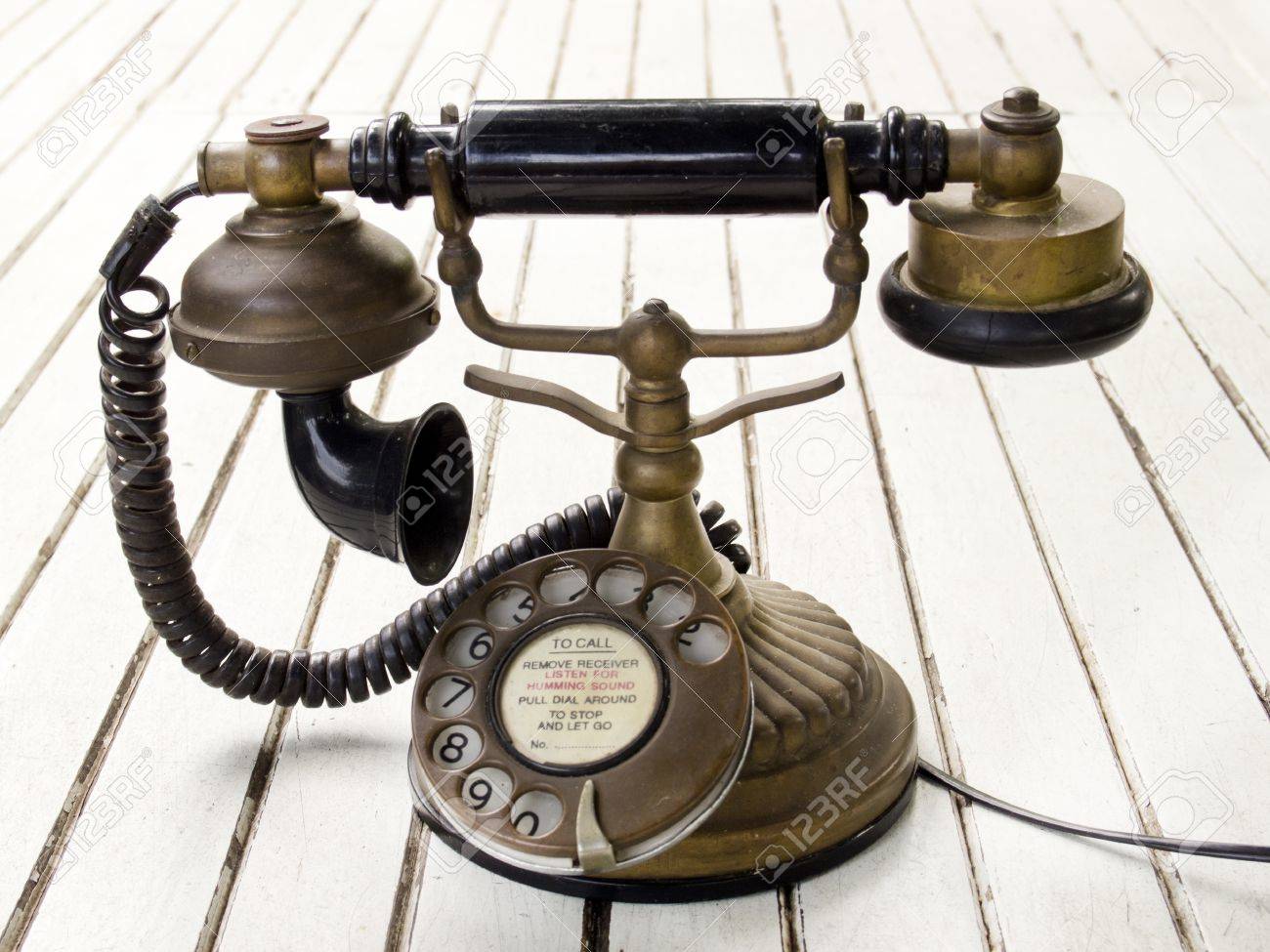
- Teacher: Dr. Sirshendu Arosh
- Teacher: Dr. Rahul Sharma

COURSE OBJECTIVE
Upon successful completion of this course, students will be able to:
● To understand basic of wave propagation
● To understand basics of communication systems: Analog Modulation, Frequency Modulation and Phase Modulations
● To design modulators and demodulators
● To study noise and introduction to digital modulation.
- Teacher: Mr. Santosh Chavan
- Teacher: Ms Shilpa Marathe
- Teacher: Dr. Gaurav Kumar Singh
- Teacher: Mrs. Shweta Banait
- Teacher: Jayashri Kawale
- Teacher: Dr. Laxmi Priya Sahu
- Teacher: Ms. Shraddha Jadhav
- Teacher: Dr. Rahul Sharma
- Teacher: Ms. Shraddha Jadhav
- Teacher: Mr. Jayant R. Pujar
- Teacher: Dr. Rahul Sharma
- Teacher: Dr Dipti chandra
- Teacher: Mr. Jayant R. Pujar
- Teacher: Dr. Rahul Sharma
- Teacher: Jayashri Kawale
- Teacher: Dr. Rahul Sharma
- Teacher: Dr. Gaurav Kumar Singh
- Teacher: Bhakti Sathe
- Teacher: Suraj Shete
- Teacher: Dr.Prateek Verma
- Teacher: Dr. Garima Pandey
- Teacher: Bhakti Sathe
- Teacher: Vivek Singh
- Teacher: Mrs. Shubhangi V Patil
- Teacher: Mrs. Shubhangi V Patil
- Teacher: Dr Sunanda R Mulik
- Teacher: Dr. Garima Pandey
- Teacher: Sandeep Dongare
Course Description cum Session Plan
Introduction to Animation - DES2403
SEM – IV / 2ND YEAR
● Course Instructor
Name: Ketan M Deore
Office Number:
Phone: 9712695416
Email: ketan.deore@dypiu.ac.in
Office hours: 9:00 am to 5 pm.
Location: DYPIU Akurdi.
● Teaching Assistant
Name: Shruti Bir
Contact: NA
Office Hours: 9:00 am to 5 pm.
Location: DYPIU Akurdi.
- Level (who can take this course?): 12th pass / Elementary and Intermediate course certificate
- Credit: 1-1-4-4
- Evaluation: Internal and external assignments (80 + 20 )
- Breakup of evaluation: % wise (80% internal and 20% external / jury)
- Maximum Number of Students: 44
Course Objectives:
● Understand the history and evolution of animation as a form of communication.
● Acquire fundamental skills to navigate the life cycle of video film making.
● Develop concepts, stories, and synopses for animated projects.
● Pre-visualize camera angles and shot division for storytelling purposes.
● Write screenplays and scripts tailored for animation.
● Explore various animation mediums to execute final stories effectively.
● Create concept art and character designs for animated projects.
● Collaborate effectively in group projects, particularly in story boarding and production phases.
● Apply appropriate techniques for animation production, including shooting, animation, and editing.
● Present their animated works for grading and constructive feedback.
Prerequisites:
- Basic understanding of visual communication principles.
- Familiarity with design software/tools would be beneficial but not mandatory.
Course Syllabus:
|
Modules |
Lect. |
|
Module 1: Introduction of Students and Faculty (3 hrs) ● Ice-breaking activities ● Introduction to the course objectives and expectations ● Overview of faculty expertise and resources available |
3 |
|
Module 2: Introduction to Animation and Screening of Animation Films (3 hrs) ● History and evolution of animation ● Introduction to key animation techniques ● Screening and analysis of classic and contemporary animated films |
3 |
|
Module 3: Study of Principles and Process of Animation (6 hrs) ● Principles of animation (e.g., squash and stretch, timing, anticipation) ● Understanding the animation pipeline ● Hands-on exercises to apply animation principles |
3 |
|
Module 4: Introduction to Adobe Animate (6 hrs) ● Animate UI, Tween Animation – ● To learn and understand the UI of Adobe Animate application |
3 |
|
Module 5: Symbol Animation (6 hrs) ● Symbol Animation – Learn and understand the fundamentals of symbol animation technique in Adobe Animate using the ball bounce examples ● Introduction to tween animation and its types |
3 |
|
Module 6: Advance level of symbol animation (6 hrs) ● Advanced symbol animation & Path Animation – Learn and understand the fundamentals of symbol animation technique in Adobe Animate along with path animation |
3 |
|
Module 7: Motion tween animation and graph editor (6 hrs) ● Motion Tween Animation and Graph Editor – ● To learn the technique of motion tween which is the core of Adobe Animate application and to implement the same in terms of attractive animations. |
6 |
|
Module 8: Masking (6 hrs) ● Masking - using masking to create 3D Planet in Animate, Cell Animation – ● To learn the masking technique in Adobe Animate to make the animate creative and attractive |
6 |
|
Module 9: Panning and Zooming (12 hrs) ● Pan Shot and Zoom shot animation – ● To learn and understand the camera panning technique in Adobe Animate |
06 |
|
Module 10: Introduction to walkcycle (18 hrs) ● Stick Figure Walk cycle, Symbol Walk cycle – To learn the technique of stick figure animation in Adobe Animate and to implement it in the form of stick figure character animation ● Complete walkcycle using symbol system – To learn and understand the process of animating the stick figure character in Adobe Animate |
12 |
|
Module 11: Project (6 hrs) ● Project Discussion and Assigned to the students – To understand the importance of the project and implement the same as the given instruction, To follow the deadline and submit the project in the given timeframe. ● Project status review 1 – To check the status of ongoing students project and solve their issues |
6 |
|
Module 12: Presentation of Project/Informative Video (6 hrs) ● Project status review 2 – To check the status of ongoing students project and solve their issues ● Project doubts solving session – TO check and solve individual doubts regarding the project. |
6 |
|
Total Hours |
60 |
Lesson/Session Plan:
|
Sr. No |
Content (Daily Plan) |
Date (Proposed) |
Date (Actual) |
|
1 |
Animate UI, Tween Animation – To learn and understand the UI of Adobe Animate application |
29/01/25 |
|
|
2 |
Symbol Animation – Learn and understand the fundamentals of symbol animation technique in Adobe Animate using the ball bounce examples |
30/01/25 |
|
|
3 |
Advanced symbol animation & Path Animation – Learn and understand the fundamentals of symbol animation technique in Adobe Animate along with path animation |
31/01/25 |
|
|
4 |
Masking - using masking to create 3D Planet in Animate, Cell Animation – To learn the masking technique in Adobe Animate to make the animate creative and attractive |
05/02/25 |
|
|
5 |
Motion Tween Animation and Graph Editor – To learn the technique of motion tween which is the core of Adobe Animate application and to implement the same in terms of attractive animations. |
06/02/25 |
|
|
6 |
Pan Shot and Zoom shot animation – To learn and understand the camera panning technique in Adobe Animate |
13/02/25 |
|
|
7 |
Filters, Loop Animation using stick figure animation – To learn the filter for effects and the process of loop animation in Adobe Animate |
14/02/25 |
|
|
8 |
Stick Figure Walk cycle, Symbol Walk cycle – To learn the technique of stick figure animation in Adobe Animate and to implement it in the form of stick figure character animation |
21/02/25 |
|
|
9 |
Complete walkcycle using symbol system – To learn and understand the process of animating the stick figure character in Adobe Animate |
24/02/25 |
|
|
10 |
Project Discussion and Assigned to the students – To understand the importance of project and implement the same as the given instruction, To follow the deadline and submit the project in the give timeframe. |
25/02/25 |
|
|
11 |
Project work |
27/02/25 |
|
|
12 |
Project work |
28/02/25 |
|
|
13 |
Project work |
06/03/25 |
|
|
14 |
Project status review 1 – To check the status of ongoing students project and solve their issues |
07/03/25 |
|
|
15 |
Project work |
10/03/25 |
|
|
16 |
Project work |
11/03/25 |
|
|
17 |
Project status review 2 – To check the status of ongoing students project and solve their issues |
12/03/25 |
|
|
18 |
Project work |
13/03/25 |
|
|
19 |
Project work |
17/03/25 |
|
|
20 |
Project work |
18/03/25 |
|
|
21 |
Project work |
19/03/25 |
|
|
22 |
Project doubts solving session – To check and solve individual doubts regarding the project. |
20/03/25 |
|
|
23 |
Project doubts solving session – To check and solve individual doubts regarding the project. |
21/03/25 |
|
|
24 |
Project submission (Informative Animation) |
24/03/25 |
|
● Course Outcome:
|
CO1 |
Demonstrate a comprehensive understanding of animation principles and techniques. |
|
CO2 |
Exhibit proficiency in developing concepts, stories, and storyboards for animation projects. |
|
CO3 |
Showcase skills in character design, concept art, and background creation. |
|
CO4 |
Apply appropriate techniques for animation production, including pre-production, production and post production. |
Text book: "The Animator's Survival Kit" by Richard Williams.
"Animation 1: Learn How to Animate Cartoons Step by Step" by Preston Blair
Reference book: "The Illusion of Life: Disney Animation" by Frank Thomas and Ollie Johnston
"Animation 1: Learn How to Animate Cartoons Step by Step" by Preston Blair
● Study Materials:
● PDF/NOTES/WEB REFERENCES.
· The Illusion of Life by Disney: 12 Principles of Animation
· Adobe Animate Tutorials: Adobe Help Center
___________________________________________________________________________________
Approved / Not approved
(Dr. Madhavi Deshpande)
Dean Academics - DYPIU
Director
School of Commerce and Management,
D.Y. Patil International University, Akurdi, Pune
- Teacher: Mr Ketan M Deore
- Teacher: Bhanuprakash Bussagari
- Teacher: Dr. Priyanka Dhoot
- Teacher: Dr. Bahubali Shiragapur
- Teacher: Dr. Priyanka Dhoot
- Teacher: Dr. Priyanka Dhoot
- Teacher: Dr. Kirti Mehta
- Teacher: Dr. Priyanka Dhoot
- Teacher: Dr. Kirti Mehta
- Teacher: Mrs Renu Singh
- Teacher: Dr. Priyanka Dhoot
- Teacher: Dr. Priyanka Dhoot
- Teacher: Dr. Vijay Shah
- Teacher: Mr Jeevraj S Bhalerao
- Teacher: Mr Mahendra Patel
- Teacher: Dr Shubhro Chakrabartty
- Teacher: Ms Anupurba Das
- Teacher: Mr. Yash Sanjay More
- Teacher: Sulaxan Jadhav
- Teacher: Dr. Bahubali Shiragapur
- Teacher: Dr. B. Pavan Babu
- Teacher: Manasa Mandapati
- Teacher: Mrs.Madhuri Pagale
- Teacher: Dr Shubhro Chakrabartty
- Teacher: Ms Anupurba Das
- Teacher: Mr. Yash Sanjay More
- Teacher: Dr Sanjay Mohite
- Teacher: Dr. Rahul Sharma
- Teacher: Ms. Akanksha Shewale
- Teacher: Mr.Swet Chandan
- Teacher: Dr. Rahul Sharma
- Teacher: Ms. Akanksha Shewale
- Teacher: Maan Bardhan Kanth

Introduction to Journalism (JMC 101) in the B.A. JMC curriculum (2020 Batch) provides a foundational understanding of journalism, focusing on the evolution and principles of print journalism in India. Students explore the vital role journalists play as the Fourth Estate, learning to define news and its essential elements. Differentiating news from features, articles, and backgrounders, they grasp the nuances of news reporting, attribution, credibility, and various news types. The course also emphasizes the broader societal role of journalism, fostering critical thinking and comprehension through practical exercises and real-world newspaper analysis."
- Teacher: Ms. Neha Dubey
- Teacher: Mrs. Maya Ranjeet Pisal
- Teacher: Mrs. Heena Bhatia
- Teacher: Suvarna Ketankumar Karankal
- Teacher: Dr Richa Purohit
- Teacher: Ms. Pallavi M. Shimpi
- Teacher: Mrs. Heena Bhatia
- Teacher: Dr Richa Purohit
- Teacher: Bhakti Sathe
- Teacher: Ms. Pallavi M. Shimpi
- Teacher: Ms. Prachi Soniminde
- Teacher: Ashish Agrawal
- Teacher: Mrs. Heena Bhatia
- Teacher: Rashmi Dharwadkar
- Teacher: Dr Richa Purohit
- Teacher: Dr. Maheshwari Biradar
- Teacher: Mrs Remya Praveen
- Teacher: Dr. Rahul Sharma
- Teacher: Mrs. Maya Ranjeet Pisal

- Teacher: Dr. Ranu Dutta
- Teacher: Mrs. Heena Bhatia
- Teacher: Mr Ketan M Deore
- Teacher: Bhanuprakash Bussagari
- Teacher: Sandeep Dongare
- Teacher: Ms. Priyanka Subhash Kunjir
- Teacher: Ms.Falguni Marbate
- Teacher: Ms. Priyanka Subhash Kunjir
- Teacher: Ms. Neha Dubey

- Teacher: Ms. Neha Dubey
- Teacher: Dr. Sanjay Badhe
- Teacher: Dr. Swapnil Bhurat
- Teacher: Dr Arvind Kumar Mathur
- Teacher: Rachana Mudholkar
- Teacher: Dr. Rajendhar Puppala
- Teacher: Ms Krishnendu S
- Teacher: Dr. Sanjay Badhe
- Teacher: Varshita Gangadhar
- Teacher: Mr. Yash Sanjay More
- Teacher: Ms Yukta More
- Teacher: Mrs Remya Praveen
- Teacher: Dr. Sanjay Badhe
- Teacher: Ms Sulakshana Bhatlwande
- Teacher: Dr. Swapnil Bhurat
- Teacher: Ms Sakshi Gunde
- Teacher: Mr Nihal A Kadam
- Teacher: Dr Arvind Kumar Mathur
- Teacher: Dr. Rajendhar Puppala
- Teacher: Dr K P Agrawal
- Teacher: Mrs. Ashwini Pawar
- Teacher: Ms Krishnendu S
- Teacher: Varshita Gangadhar
- Teacher: Mr. Yash Sanjay More
- Teacher: Mrs Remya Praveen
- Teacher: Dr. Sanjay Badhe
- Teacher: Dr. Rahul Sharma
- Teacher: Disha Upadhyay
- Teacher: Dr. Sanjay Badhe
- Teacher: Mr Saransh Kushwaha
- Teacher: Dr. Rahul Sharma
- Teacher: Ms Anupurba Das
- Teacher: Dr Sayalee Deshmukh
- Teacher: Dr. Rahul Sharma
- Teacher: Dr Sayalee Deshmukh
- Teacher: Mr Shubham Jagdale
- Teacher: Dr. Rahul Sharma
- Teacher: Raji Ajith Panickar
- Teacher: Reena Shrikant Sahane
- Teacher: Dr. Rahul Sharma
- Teacher: Ms Pratiksha Saheb
- Teacher: Dr. Rahul Sharma
- Teacher: Mrs Venkata Mrudula Bhimavarapu
- Teacher: Dr Sunanda R Mulik
- Teacher: Dr. Tamal Mondal
- Teacher: Girish Phatak
- Teacher: Ankita Mendiratta
- Teacher: Ms Vijaylaxmi jain
- Teacher: Aparna Joshi
- Teacher: Mrs.Madhuri Pagale
- Teacher: Priti Patil
- Teacher: Dr. Rahul Sharma
- Teacher: Ms Zalak Thakkar
- Teacher: Ms. Pragati Pallavi
- Teacher: Dr Arvind Kumar Mathur
- Teacher: Rachana Mudholkar
- Teacher: Mr. Suresh Kadam
- Teacher: Mr. Suresh Kadam
- Teacher: Dr. Neera Kumari
This course aims to introduce the students to the role and importance of social in journalism. Students will be introduced to various social media platforms, their working, characteristics, aesthetics and metrics. They will understand the role of social media in content generation as well as reach of content. Focus will be on blogging and microblogging. They will be taught about the power of influencers in boosting the reach of content.
- Teacher: Dr. Arvind Kumar
- Teacher: Anil Narasipuram
- Teacher: Ms. Monika Sharma
- Teacher: Anil Narasipuram

Course Description cum Session Plan
DP 2- Introduction to UI/UX Design - DES1107
SEM – I / 1st YEAR
Course Instructor:
Ms.
Shruti Bir
Office Number: 530
Phone: 7028015701
Email:
shruti.bir@dypiu.ac.in
Office hours: 9:30 am -5:30pm
Location: SID, DYPIU,
Akurdi, Pune.
Name: NA
Contact: NA
Office Hours: NA
Location: NA
Level (who can take this course?): 12th pass /
Elementary and Intermediate course certificate holder students
who has a keen interest and passion for designing digital products.
Credit: 2 (30 hrs.)
Evaluation:
Internal Evaluation - 80% (Continuous Evaluation)
External
Evaluation - 20% (Jury)
Maximum Number of Students: 44
Course Objectives:
- Introduction to the areas of study categorized under the umbrella of “User Experience” and “User Interface”.
- Explain the various design principles that come together to create a user’s experience when using a product or service.
- Explain the design thinking process and the various stages that are involved in.
- Define and explain the artifacts of the UX design process like wireframes, prototypes
- Define the elements of UI design for Web/App design, introduction to design frameworks like Google’s Material Design and Apple’s HIG.
- Understand the various UI/UX roles that exist in companies today and the career opportunities for those in the field.
Prerequisites:
- Basic reading and comprehension skills
- Familiarity with current technologies like mobile apps, websites
- Presentation Skills
- Familiarity with Mobile App Concepts, an awareness of current UI/UX trends and an introductory knowledge of HCI.
Course Syllabus:
|
S. No. |
Module Topics |
Lect. |
|
1 |
Overview of User Experience (UX) Work: 1. Importance of user experience in design. 2. Main areas of UX work: Graphic Design, UI Design, and UX Design. 3. Relationships and distinctions between Graphic, UI, and UX Design. |
5 |
|
2 |
UX Design Process: 1. Introduction to the design thinking process. 2. Stages of the UX design process: Empathize, Define, Ideate, Prototype, Test. 3. Integration of UI design within the UX design process. |
5 |
|
3 |
Foundations of UX Design: 1. Human-centred design principles. 2. Importance of user research and usability. 3. Basics of information architecture. |
5 |
|
4 |
Introduction to UI Design: 1. Elements of UI design: buttons, forms, navigation. 2. Overview of design frameworks in UI design. |
5 |
|
5 |
Digital Display Technology: 1. Understanding pixels and pixel density. 2. Adapting UI design for different screen sizes. |
5 |
|
6 |
Design Artifacts: 1. Explanation of design artifacts in the process. 2. Types of artifacts: User flow diagram, Site map, Information Architecture, Wireframes designs. |
3 |
|
7 |
UI/UX Designer Roles: 1. Responsibilities of UI/UX designers in organizations. 2. Career path and growth opportunities in the field. |
2 |
|
|
Total Hours |
30 |
Lessons & Session Plan:
|
S. No. |
Module Content |
Dates |
|
1 |
Module 1: Overview of User Experience Design Work · Importance of user experience in design · Main areas of UX work: Graphic Design, UI Design, and UX Design · Relationships and distinctions between Graphic, UI, and UX Design · Overview of the role of UX in digital products · Understanding user-centered design vs. technology-centered design |
13/09/2024 |
|
2 |
Module 2: UX Design Process · Introduction to the design thinking process · Stages of the UX design process: Empathize, Define, Ideate, Prototype, Test · Integration of UI design within the UX design process · Importance of iteration in UX design · Techniques for effective user research (e.g., surveys, interviews, observations) |
14/09/2024 |
|
3 |
Module 3: Foundations of UX Design · Human-centered design principles · Importance of user research and usability · Basics of information architecture · How to create user personas · Designing for accessibility and inclusion |
15/09/2024 |
|
4 |
Module 4: Introduction to UI Design · Elements of UI design: buttons, forms, navigation · Overview of design frameworks in UI design · Understanding visual hierarchy in UI · Best practices in UI design (e.g., consistency, feedback, clarity) · Prototyping tools and techniques for UI design |
16/09/2024 |
|
5 |
Module 5: Digital Display Technology · Understanding pixels and pixel density · Adapting UI design for different screen sizes · Responsive vs. adaptive design · Designing for mobile-first experiences · The impact of different operating systems and devices on UI |
17/09/2024 |
|
6 |
Module 6: Design Artifacts · Explanation of design artifacts in the process · Types of artifacts: User flow diagram, Site map, Information Architecture, Wireframes designs · Role of wireframes and mockups in the design process · How to create and use user flow diagrams effectively · Understanding how artifacts communicate design decisions |
18/09/2024 |
|
7 |
Module 7: UI/UX Designer Roles · Responsibilities of UI/UX designers in organizations · Career path and growth opportunities in the field · Collaborating with developers and other team members · The importance of feedback and iteration in the design process · Building a UI/UX portfolio and finding freelance opportunities |
19/09/2024 |
|
8 |
Wrap-up and Review and prepare for the final Submission and MCQ · Review and Q&A session for all modules covered · Recap of key concepts: UX vs. UI, design thinking, responsive design · Best practices for starting your UX/UI career · Final thoughts on the importance of continuous learning in the design field · Open forum for questions and clarifications |
20/09/2024 |
Course Outcome:
- Proficiency in UX Design Process
- Application of Human-Centred Design Principles
- Competence in UI Design and Adaptation for Digital Displays
- Effective User Research and Usability Testing
- Mastery of Information Architecture
- Development of Interactive Prototypes
- Application of Responsive Design Principles
- Knowledge of Design Systems and Component Libraries
- Integration of Accessibility Standards in Design
- Become an industry ready UI/UX professional.
Text Book:
- "Don't Make Me Think, Revisited: A Common-Sense Approach to Web Usability" by Steve Krug
- "UX Design and Usability Mentor Book" by Emrah Yayici
Reference Book:
- "Rocket Surgery Made Easy – Steve Krug
- Design for everyday life – Don Norman
- Human – computer interaction – Alan Dix
- UI is communication: how to design intuitive, user centred interface by focusing on effective communication – Everett Mckay
Study Materials:
Pdfs, Docs, Exl sheets, PPTs and also supportive internal tutorial Videos will be provided as required alongside the day-to-day lectures to make the learning and teaching more interactive, easy and fun.
Web references for external research and study:
- "100 Days of UI/UX: A Complete Guide for Beginners" by Geeks for Geeks
- Link: 100 Days of UI/UX: A Complete Guide For Beginners
- UI/UX design, web development, and front-end techniques: https://www.smashingmagazine.com
- In-depth articles, case studies, and guidelines on topics like usability, user research, interaction design, and accessibility: https://www.nngroup.com
- Teacher: Ms Shruti Bir
- Teacher: Mr Aziz M Poonawala
- Teacher: Sandeep Dongare
- Teacher: Dr. Sanjay Kumar
- Teacher: Dr. Sanjay Kumar
- Teacher: Arvind Singh
- Teacher: Mr. Ajit Dalavi

- Teacher: Dr. Kranti Shingate
- Teacher: Dr. Kranti Shingate
- Teacher: Dr. Kranti Shingate
|
Course Description |
To focus on the research, strategy and application specific to decision-making in the highly competitive and rapidly growing services sector. This course has been drafted to meet the growing need of corporate companies which are into I IT Enabled Services. Course Contents have been designed to fill the gap between academics, Computers and IT Enabled Service Sector. Theoretical concepts are backed by practical training which will provide knowledge about latest updates in IT enabled service marketing. The Student shall develop the skills to understand the process involved in ITES and learn the management skills for ITES Projects. Basics of IT services management skill-set is imparted through this course |
|||||
|
|
||||||
|
Course Outcomes (CO) / Learning Outcomes |
||||||
|
CO 1 |
To provide insights into all basic terms of Services marketing. |
|||||
|
CO 2 |
To study the Relevant Internet & Web Applications for ITES |
|||||
|
CO 3 |
To give a perspective of the Indian service sector scenario. |
|||||
|
CO 4 |
To give an insight on Global perspective of service marketing. |
|||||
|
CO 5 |
To understand the functioning of various industries from service sector. |
|||||
|
CO6 |
To study the Current Trends in Service Industries and Understanding Specific Service Industries |
|||||
|
Course Content |
||||||
|
Unit No. |
Topics |
Content |
No of Sessions |
|||
|
1 |
Introduction to Services Marketing |
Introduction to Services Marketing: Definition - Characteristics – Classification. Services Marketing Mix: Understanding the 7 P’s Product, Price, Place, Promoter, People, Process & Physical Evidence. Consumer Behavior in Services - Customer Expectations of Services - Customer Perceptions of Services – Evaluation of services Strategies for Services Marketing: Positioning & Differentiation |
10 |
|||
|
2 |
Introduction & Driving IT Enabled Service Global Outsourcing Market |
Introduction, Evolution of ITES, Key Drivers of ITES, India's Challenge in the IT Enabled Services Key benefits of IT-enabled outsourcing, Global Outsourcing Market on a growth path: The Indian IT-Enabled outsourcing market |
10 |
|||
|
3 |
Strategies for delivering Service quality through IT Enabled e services |
E-services Emergence & growing importance of e-services, Electronic Channels of Delivering Services, Challenges in distributing services through electronic channels, Future of delivering services: Impact of Artificial Intelligence, Big Data etc |
10 |
|||
|
4 |
Current Trends in Service Industries |
Current Trends in Service Industries and Understanding Specific Service Industries: Financial, Hospitality, Health, Telecom, Consultancy, Logistics, Education, NGO, Public Utilities, ITCS, Travel & Tourism, and Professional Services
|
10 |
|||
|
|
||||||
|
Learning Resources |
||||||
|
1 |
Recommended Reference Book |
1. Nasscom’s Handbook on IT Enabled Services Nasscom 2. MGI (McKinsey Global) reports 2006 and 2007- McKinsey Global excerpts 3. ITES Case Studies from Wipro/ Infosys/ IBM etc. To be procured from Internet 4. Service Level Management and SLA : resources Internet |
||||
|
2 |
Recommended Text Book |
1. Services Marketing, 4th e Zeithaml Valerie / Bitner Mary Jo. Tata McGraw-Hill 2. Services Marketing, 6th e Lovelock, Christopher , Prentice-Hall, International Edition 3. Marketing Services: Competing through Berry, Leonard L / Parasuraman, A. 4. Quality Services Marketing, 2nd e Nargundkar, Rajendra. Tata McGraw Hill - 2006
|
||||
- Teacher: Prasad Deshpande
- Teacher: Rashmi Pawar

- Teacher: Rashmi Dharwadkar
- Teacher: Dr. Saif Nalband

- Teacher: Rashmi Dharwadkar
- Teacher: Dr. Saif Nalband

- Teacher: Mrs. Heena Bhatia
- Teacher: Dr Richa Purohit
- Teacher: Mrs. Heena Bhatia
- Teacher: Dr Richa Purohit
- Teacher: Mr. Swapnil Jogi
- Teacher: Ms. Neha Dubey
- Teacher: Sandeep Dongare
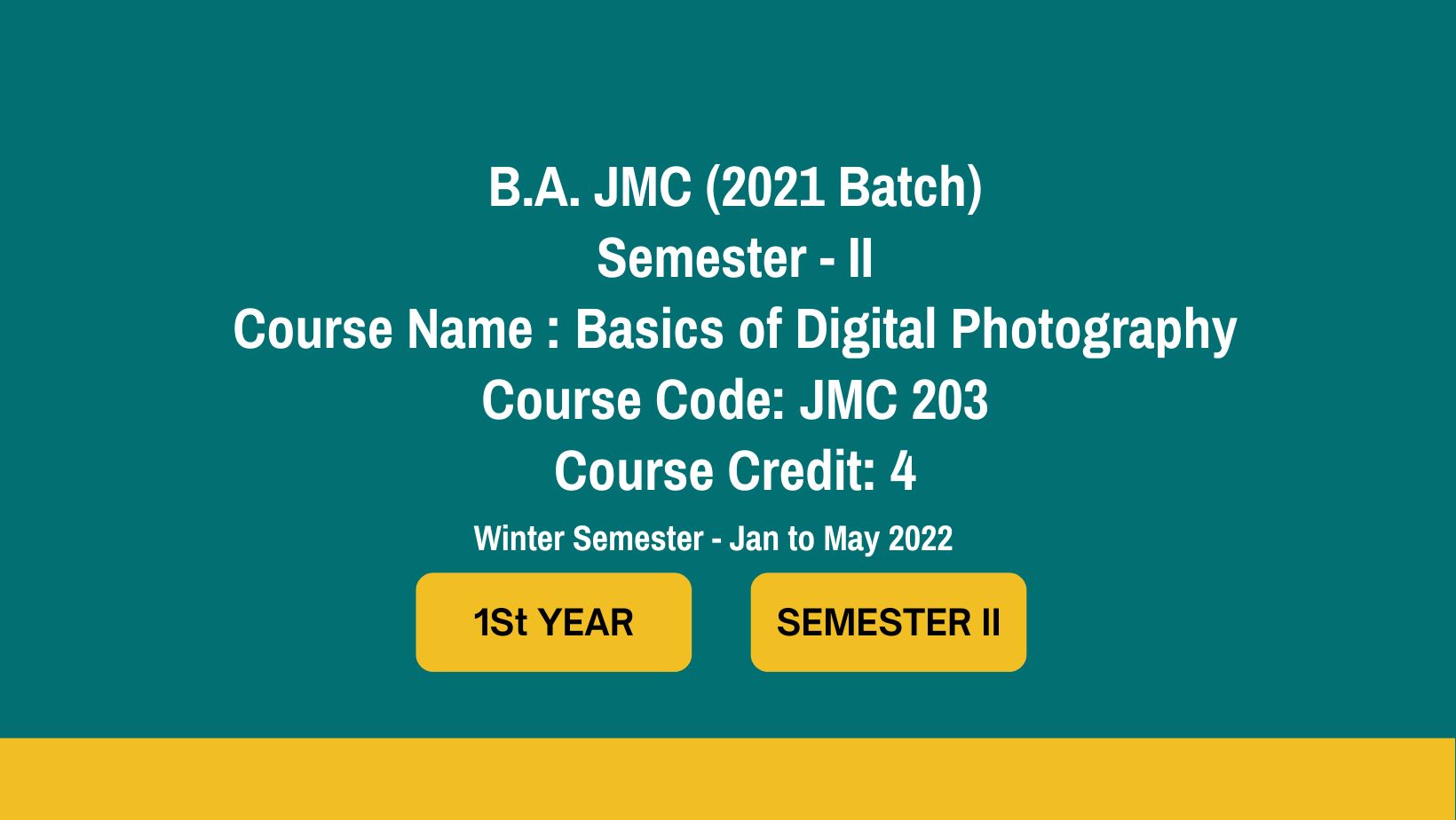
Objectives
· To introduce History and Concepts of Digital Photography.
· Student will understand via this subject the relevance of Digital Photography in Media.
· This subject examines the emergence of photographic traditions and practices within the context of social, cultural and artistic, political, economic, scientific and philosophical forces that shaped particular directions in the medium’s evolution.
- Teacher: Sandeep Dongare
- Teacher: Mr Amit Kumar Om
- Teacher: Sandeep Dongare
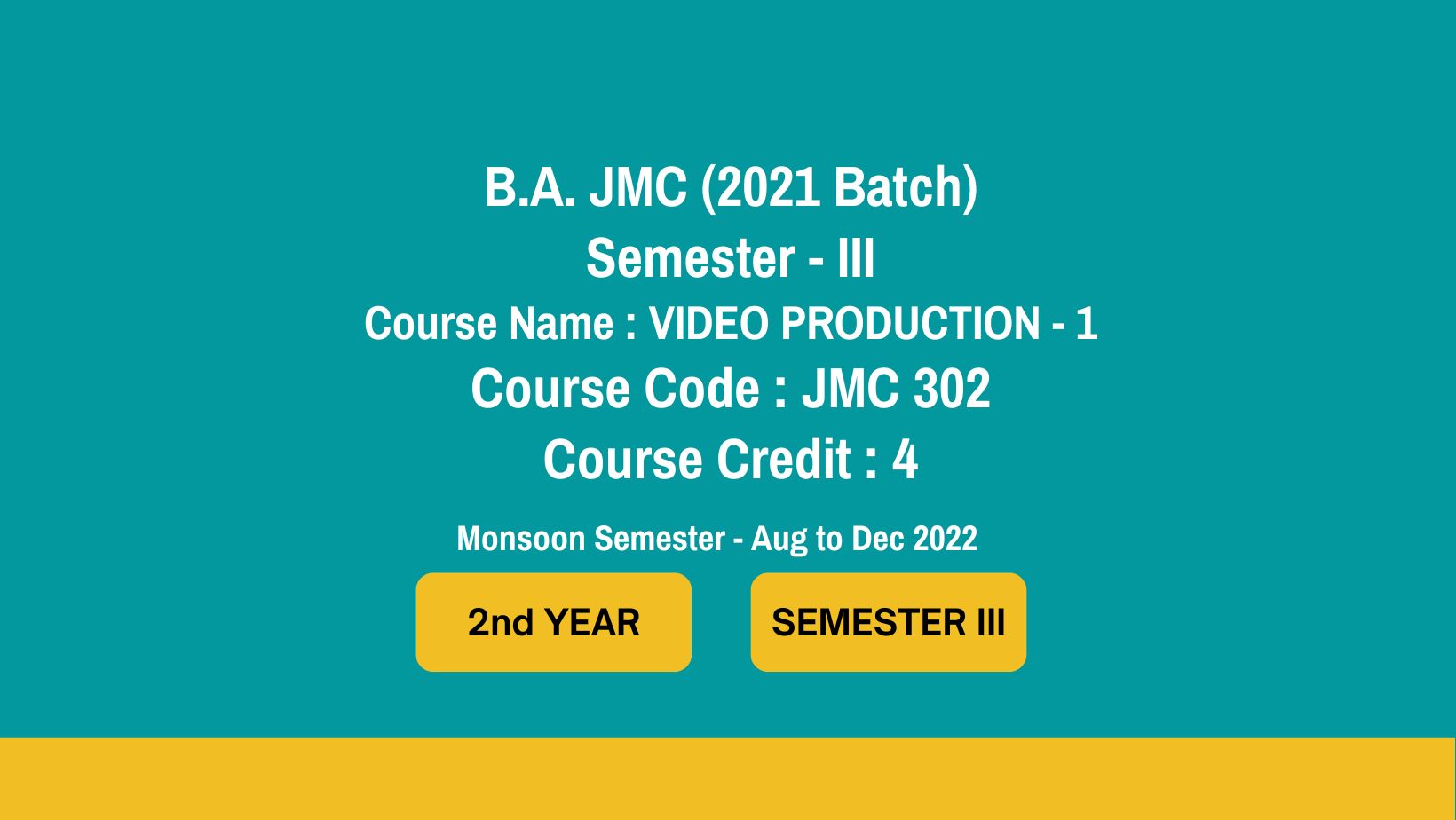
Course
Objectives:
- · To introduce Concepts of Audio - Video Production.
- · Student will understand via this subject the relevance of Video Production in Media.
- · Students are oriented to the aesthetics and techniques of the video production process.
- · Lectures, readings, screenings, discussions, hands-on equipment exercises, and the making of short video productions will facilitate this process.
- Teacher: Sandeep Dongare
- Teacher: Mr. Swapnil Jogi
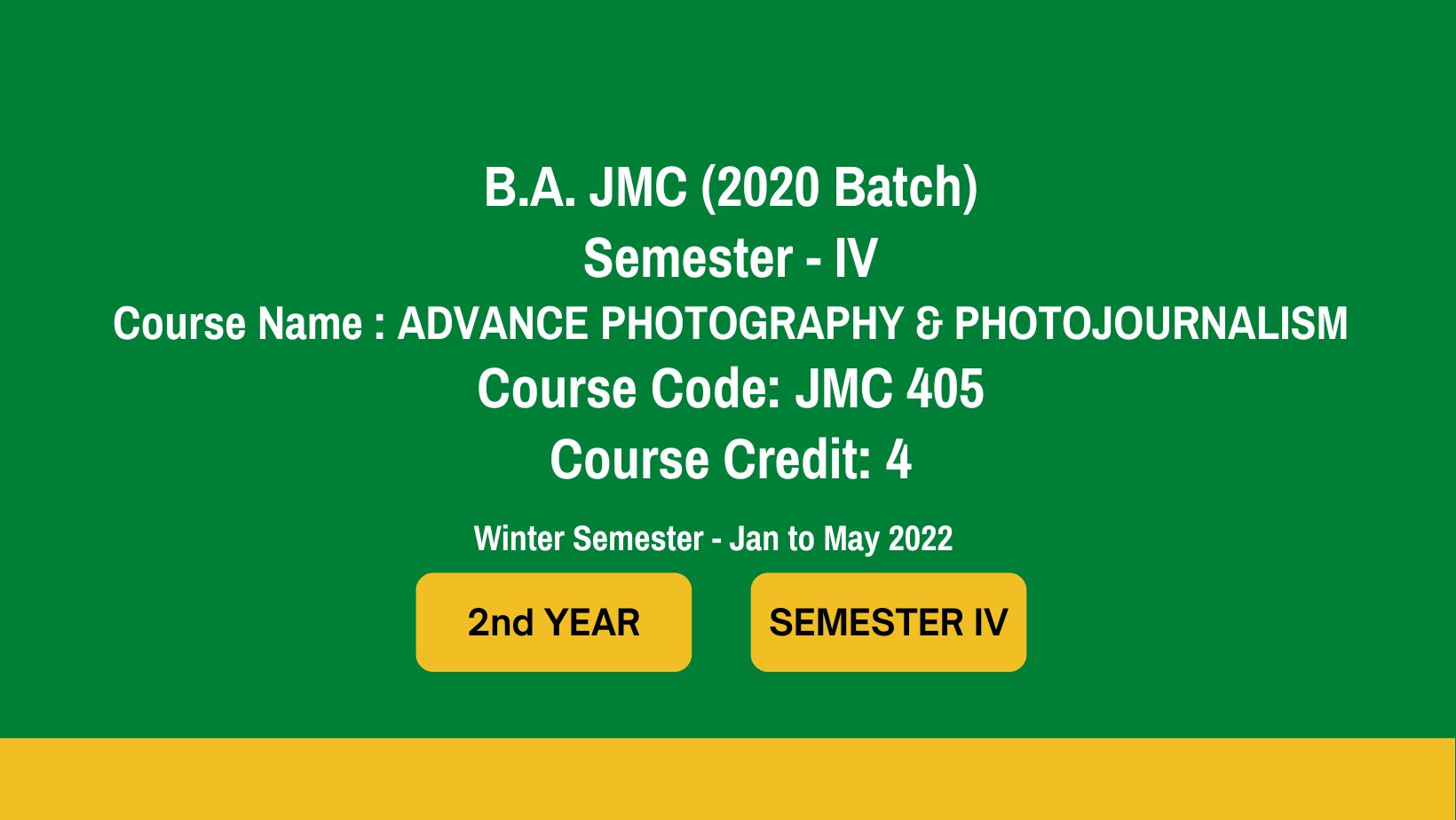
Course Objectives:
· Develop a broad understanding of the Digital photography, Advance Technics and Photojournalism concept and practice.
· Equipped with the means to digital photography practical and theory in dynamic ways.
· Lectures, readings, screenings, discussions, hands-on equipment exercises, and the making of short video productions will facilitate this process.
- Teacher: Sandeep Dongare
- Teacher: Sandeep Dongare
- Teacher: Mr. Swapnil Jogi

Course
Objectives:
- · To establish an introductory understanding of film history and development in world and India.
- · Students are oriented to the aesthetical and theoretical understanding of the film appreciation process.
- · Lectures, readings, screenings, discussions and the screenings of films will facilitate this course.
- Teacher: Sandeep Dongare
- Teacher: Mr Amit Kumar Om
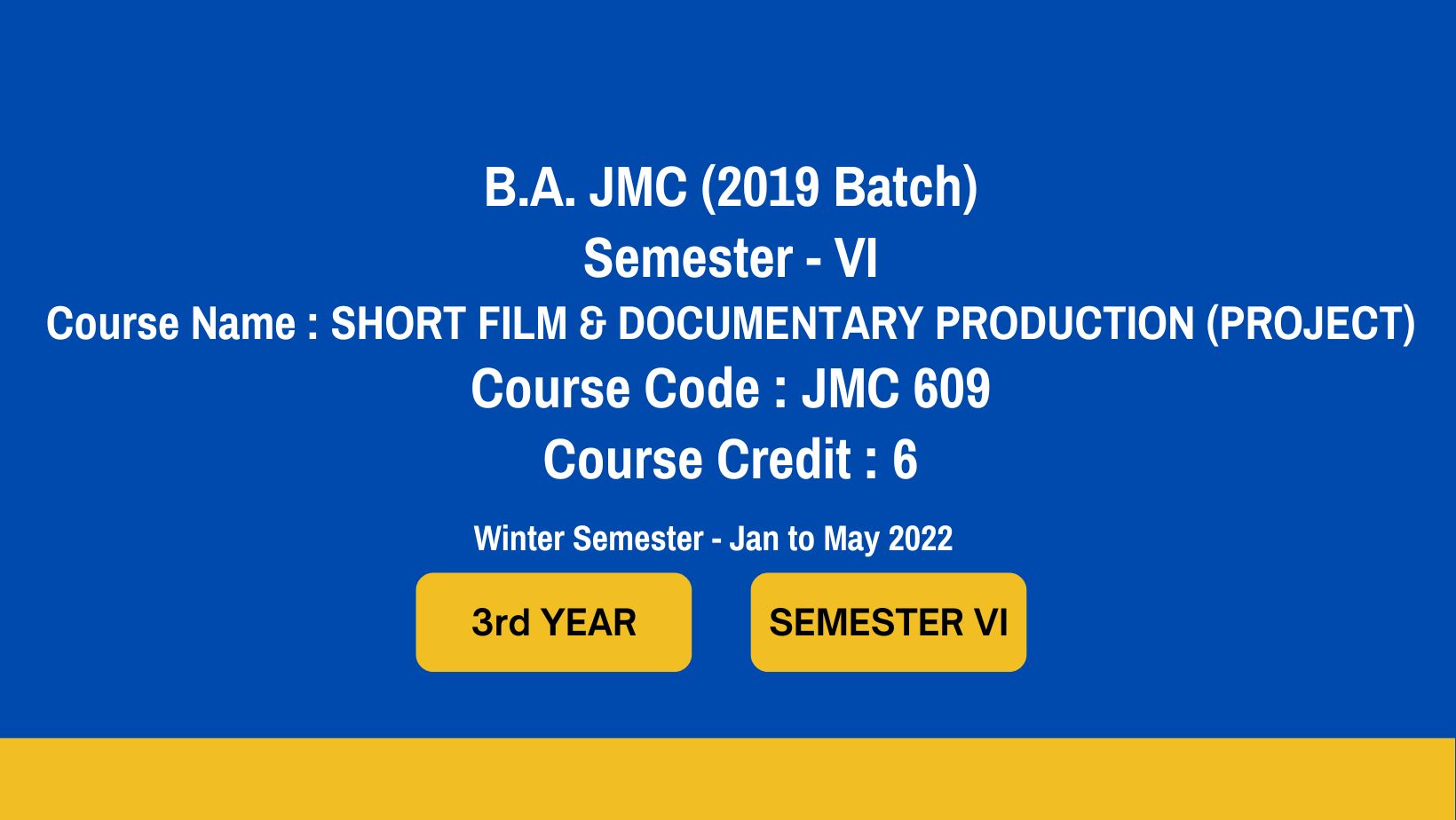
Course Description:
Short Film & Documentary Production introduces practical film production work. Offering training and workshops in the main areas of film production, this course culminates in the production of short fiction or documentary films, which could serve as portfolio pieces for specifications in creative works.
Course Objectives:
This practical, multi-disciplinary course provides innovative and relevant training in the various roles behind the camera including - Screenwriting, directing, camera operating, cinematography, sound mixing, and recording. Using high-end HD cameras and DSLR cameras, students will write, shoot a film, edit and produce a short fiction film or a short documentary (each 05-10 minutes Excluding Credits).
Course Outcomes:
After successful completion of this course, each student will -
- Understand the whole process of production.
- Complete a short film or a documentary film.
- Understand a wider range of short storytelling formats/options.
- Gain valuable feedback/critiquing skills.
- Gain experience applying to a film festival.
COURSE COMPONENT SPECIFICS
Students will be given multiple homework assignments to be completed outside the normal scheduled classroom. Some assignments may be conducted working with assigned partners. Students will do their best to coordinate times to work on each project at the same time.
CLASS PARTICIPATION
Participation is always valued and is expected of all students. Each student should make an effort to contribute in all classroom discussions. Class participation will be considered as grading criteria for your final course grade.
Illegal Activity
Documenting with either audio or video, being present at an illegal activity or knowingly violation of any local, state, or federal laws related to the execution of any assignment will automatically exclude it from being accepted for a grade. In addition, the same exclusion applies if you learn after the fact that your actions were of an illegal nature. Incorporating the use of inappropriate or socially unacceptable images or audio into your work will automatically exclude it from being accepted for a grade.
- Teacher: Sandeep Dongare
- Teacher: Sandeep Dongare
- Teacher: Sulaxan Jadhav
- Teacher: Dr Nalini Jagtap
- Teacher: Ms Priyanka Karale
- Teacher: Dr. Bahubali Shiragapur
- Teacher: Dr Sayalee Deshmukh
- Teacher: Raji Ajith Panickar
- Teacher: Dr. Rahul Sharma
- Teacher: Dr K P Agrawal
- Teacher: Sulaxan Jadhav
- Teacher: Mr. Yash Sanjay More
- Teacher: Dr. Rahul Sharma
- Teacher: Dr. Vijaya M Waidande
- Teacher: Mr. Ajit Dalavi
- Teacher: Anjali Wagh
- Teacher: Ms. Neha Dubey
- Teacher: Vahida Pathan
- Teacher: Vahida Pathan
- Teacher: Mr. Devendra Athavale
- Teacher: Mr. Devendra Athavale
- Teacher: Mr. Devendra Athavale
- Teacher: Mr. Devendra Athavale
- Teacher: Vahida Pathan
- Teacher: Mrs. Manisha Bhavsar
- Teacher: Vahida Pathan
- Teacher: Vahida Pathan
- Teacher: Mr. Ajit Dalavi
- Teacher: Mr Amit Kumar Om
- Teacher: Dr. Anuja Sethiya
- Teacher: Maithili Salgaokar
- Teacher: Mr. Ajinkya Hiran
- Teacher: Mr. Ajinkya Hiran
- Teacher: Dr. Kranti Shingate
- Teacher: Dr. Kranti Shingate
- Teacher: Dr.Ravi Bhakat
- Teacher: Vahida Pathan
- Teacher: Arvind Singh
- Teacher: Sharad Gupta
- Teacher: Mr Dinesh Kumar
- Teacher: Dr Arvind Kumar Mathur
- Teacher: Mr Dinesh Kumar
- Teacher: Dr Arvind Kumar Mathur
- Teacher: Mr Dinesh Kumar
- Teacher: Dr Arvind Kumar Mathur
- Teacher: Dr. Sirshendu Arosh
- Teacher: Mr. Rajkumar Chaudhari
- Teacher: Prof. Bharat Nagargoje
- Teacher: Sharad Gupta
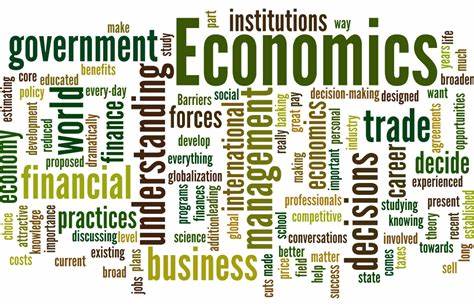
- Teacher: Dr. Kirti Mehta
Name of the Course: Managerial Economics
- Course Instructor:
Name: CA Sagar Patil
Office Number: 9225631657
Phone:9225631657
Email: ca.sagardpatil@gmail.com
Office hours: 10.00 am to 5.30 pm
Location: Nigdi, Pune
- Teaching Assistant:
Name:
Contact:
Office Hours: Time slots
Location
- Level (who can take this course?): Beginner
- Credit: 3-0-3-4.5
- Evaluation: Viva, Presentations, MCQ Exam
- Breakup of evaluation: % wise – 35-35-30
- Maximum Number of Students: 120
Course Objectives: Business Economics, also called Managerial Economics, is the application of economic theory and methodology to business. Business involves decision-making. Decision making means the process of selecting one out of two or more alternative courses of action. The question of choice arises because the basic resources such as capital, land, labor and management are limited and can be employed in alternative uses. The decision-making function thus becomes one of making choice and taking decisions that will provide the most efficient means of attaining a desired end, say, profit maximization.
Prerequisites: None
Course Syllabus:
1. Foundations of Managerial Economics
2. Production Functions
3. Market Structure
5. Macro-economic environment
Lesson Plan:
|
Sr. No |
Content (Daily Plan) |
Date (Proposed) |
|
1 |
General foundations of managerial economics |
16/8/23 |
|
2 |
Micro and macro economics |
16/8/23 |
|
3 |
Circular flow of activity |
17/8/23 |
|
4 |
Nature of the firm |
18/8/23 |
|
5 |
Objectives of firms |
23/8/23 |
|
6 |
Demand Analysis and Estimation |
23/8/23 |
|
7 |
Determinants of Demand |
24/8/23 |
|
8 |
Elasticity of Demand |
25/8/23 |
|
9 |
Demand Forecasting |
30/8/23 |
|
10 |
Law of Variable Proportions |
30/8/23 |
|
11 |
Theory of the Firm |
31/8/23 |
|
12 |
Production Functions in Short Run and Long Run |
01/9/23 |
|
13 |
Determinants of Cost |
06/9/23 |
|
14 |
Cost Forecasting – Short run and long run |
06/9/23 |
|
15 |
Types of Costs |
07/9/23 |
|
16 |
Analysis of Risk and Uncertainty |
08/9/23 |
|
17 |
Introduction to National Income |
13/9/23 |
|
18 |
National Income Concepts |
13/9/23 |
|
19 |
Models of National Income Determination |
14/9/23 |
|
20 |
Economic Indicators |
15/9/23 |
|
21 |
Technology and Employment |
20/9/23 |
|
22 |
Phases of Business Cycles |
20/9/23 |
|
23 |
Management of Cyclical Fluctuations |
21/9/23 |
|
24 |
Fiscal and Monetary Policies |
22/9/23 |
|
25 |
Student Presentations and Continuous Assessment |
27/9/23 |
|
26 |
Student Presentations and Continuous Assessment |
27/9/23 |
|
27 |
Perfect Competition |
29/9/23 |
|
28 |
04/10/23 |
|
|
29 |
Oligopoly and Duopoly |
04/10/23 |
|
30 |
Monopolistic Competition |
05/10/23 |
|
31 |
Pricing and employment of inputs under different market structures |
06/10/23 |
|
32 |
Price Discrimination |
11/10/23 |
|
33 |
Economic Transition in India |
11/10/23 |
|
34 |
Liberalization, Privatization and Globalization |
12/10/23 |
|
35 |
Business and Government |
13/10/23 |
|
36 |
Public Private Partnership and Industrial Finance |
18/10/23 |
|
37 |
Foreign Direct Investment |
18/10/23 |
|
38 |
Viva and continuous assessment |
19/10/23 |
|
39 |
Viva and continuous assessment |
20/10/23 |
|
40 |
Viva and continuous assessment |
25/10/23 |
|
41 |
Viva and continuous assessment |
|
|
42 |
Viva and continuous assessment |
|
|
43 |
Viva and continuous assessment |
|
Laboratory
|
Sr. No |
Content |
Date |
|
|
|
|
|
|
|
|
|
|
|
|
|
|
|
|
|
|
|
|
|
|
|
|
|
|
|
|
|
|
|
|
|
|
|
|
|
|
|
|
|
|
|
|
|
|
|
|
|
|
|
|
|
|
|
|
|
|
|
|
Course Outcome: Understanding foundations of Managerial Economics, Understanding Production Functions, Studying Market Structure, Studying National Income, Economic Indicators and Business Cycles, Studying macro-economic environment and its relevance to business
- Text Book: Yogesh Maheshwari, Managerial Economics – Phi Learning, New Delhi
- Reference Book: Managerial Economics by D.M. Mithani
- Study Materials: Journal of International Business and Economics
- Teacher: CA Sagar Patil
- Teacher: Dr Arvind Kumar Mathur
- Teacher: Mr Atul Pradhan
- Teacher: Mr Kanchan Rajput
- Teacher: Dr. Kranti Shingate
- Teacher: Mrs.Smita Brahmachari
- Teacher: Mr. Ravi Sagar
- Teacher: Mrs.Smita Brahmachari
- Teacher: Girish Phatak
- Teacher: Sheetal Bura
- Teacher: Mrs.Susrutha Yadav
- Teacher: Sheetal Bura
- Teacher: Abhinita Daiya
- Teacher: Dr. Bahubali Shiragapur
- Teacher: Dr. Satyen Marathe
- Teacher: Sheetal Bura
- Teacher: Girish Phatak
- Teacher: Dr. Pallavi Jha
- Teacher: Dr. Maheshwari Biradar
- Teacher: Dr Siddharth Gavhale
- Teacher: Ms Sushmita Kumar
- Teacher: Dr. Rahul Sharma
- Teacher: Dr Siddharth Gavhale
- Teacher: Mrs. Mangal Anilkumar Ambi
- Teacher: Dr Priyatosh Ranjan
- Teacher: Mrs. Mangal Anilkumar Ambi
- Teacher: Prof.Shashi Singh
- Teacher: Ms. Surbhi Pandya
- Teacher: Dr. Surabhi Sonam
- Teacher: Mr. Sushil Someshwar Dombe
- Teacher: Mrs. Mangal Anilkumar Ambi
- Teacher: Dr Priyatosh Ranjan
- Teacher: Mrs. Mangal Anilkumar Ambi
- Teacher: Prof.Shashi Singh
- Teacher: Mr. Sushil Someshwar Dombe
- Teacher: Dr. Mugdha Sirvastava
- Teacher: Ms. Surbhi Pandya
- Teacher: Dr. Surabhi Sonam
- Teacher: Prof.Shashi Singh
- Teacher: Ms Vaishali Kumar
- Teacher: Dr. Rahul Sharma
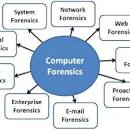
- Teacher: Dr Sunanda R Mulik

- Teacher: Dr Sarika Jadhav
- Teacher: Ms Vaishali Kumar
Introduction to Artificial Intelligence
Unit 1: Introduction to AI
Overview of AI, Goals of AI, Contributes to AI, Programming with and without AI, Applications of AI.
Unit 2: Fundamental Concepts of AI
Intelligence, Difference between human and machine intelligence, Composition of Intelligence, Types of learning, Domain of AI, Concepts of Agents and their environment.
Unit 3: Types of Searching
Search concepts, Types of search, BFS, DFS, and Heuristic Approach.
Unit 4: ML Concepts
Introduction to Machine Learning, Types of Machine Learning: Supervised learning and unsupervised learning, Cluster and Classification, LSTM Algorithm, RNN, etc
- Teacher: Mr. Yash Sanjay More
- Teacher: Mr Pulkit Tiwari
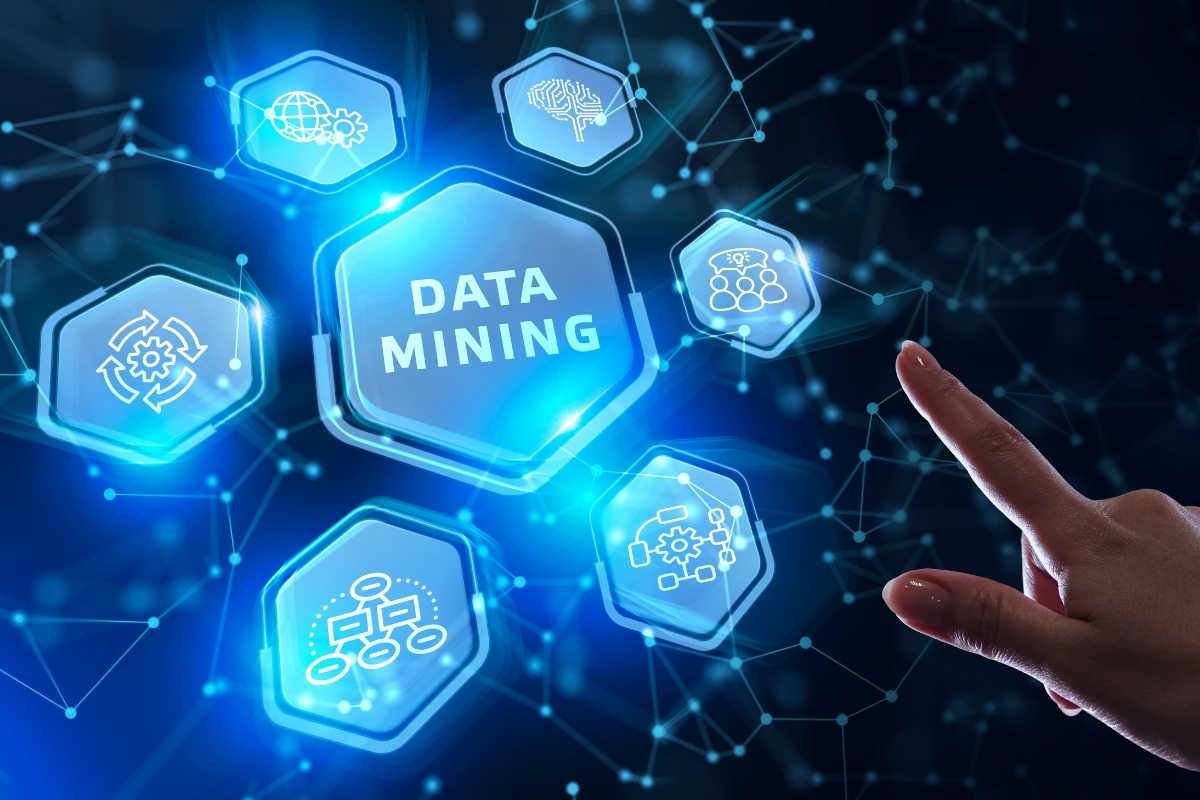
- Teacher: Shubham Jagdale
- Teacher: Mrs. Veena Kiragi
- Teacher: Aabha Gupta
- Teacher: Dr. Samarjit Roy
- Teacher: Dr. Sirshendu Arosh
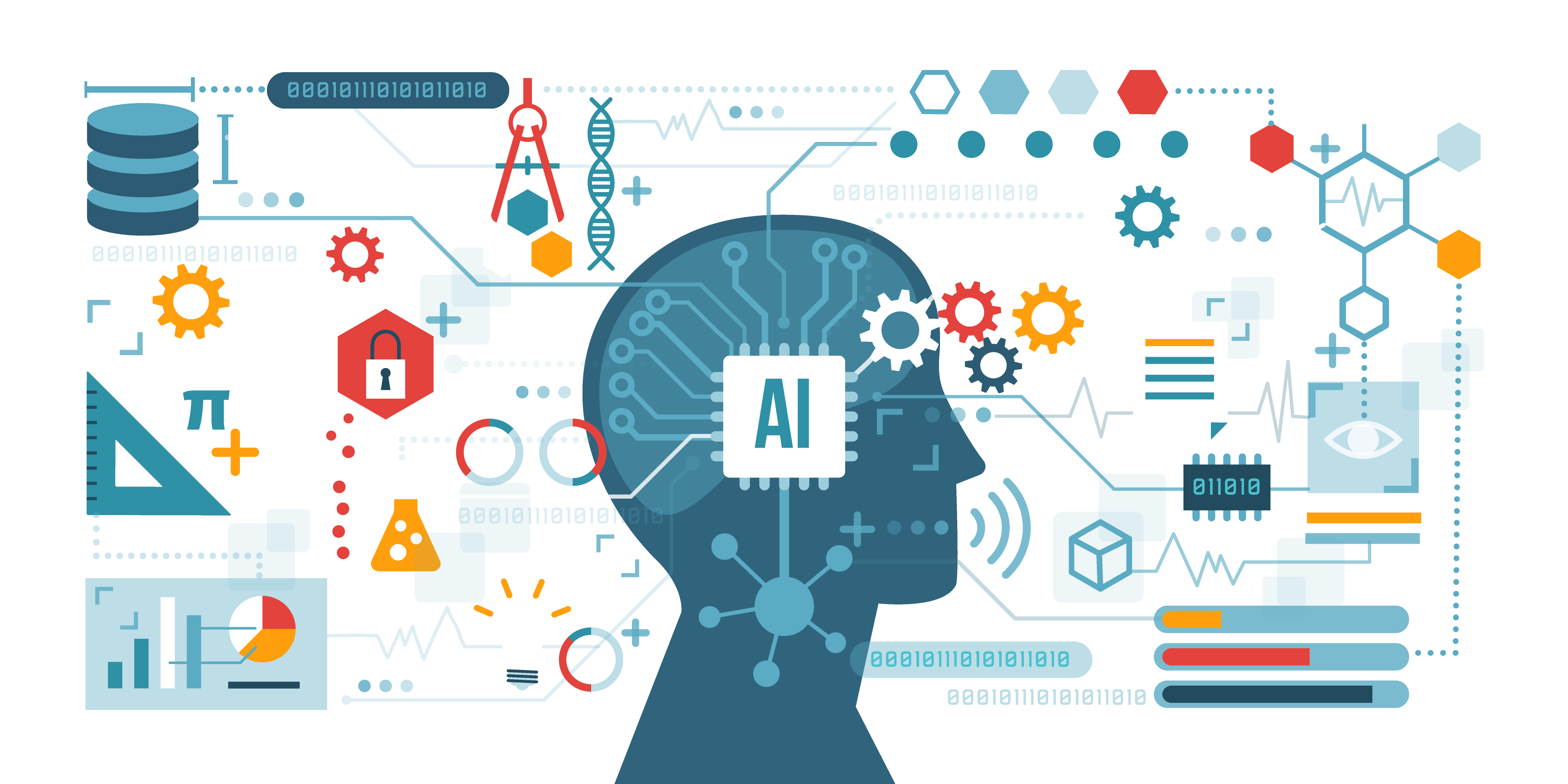
- Teacher: Dr Sarika Jadhav
- Teacher: Dr. Anuja Sethiya
- Teacher: Dr. Kirti Mehta
- Teacher: Mr. Shyam Pagare
- Teacher: Prof.Dr.Sabahudin Hadzialic
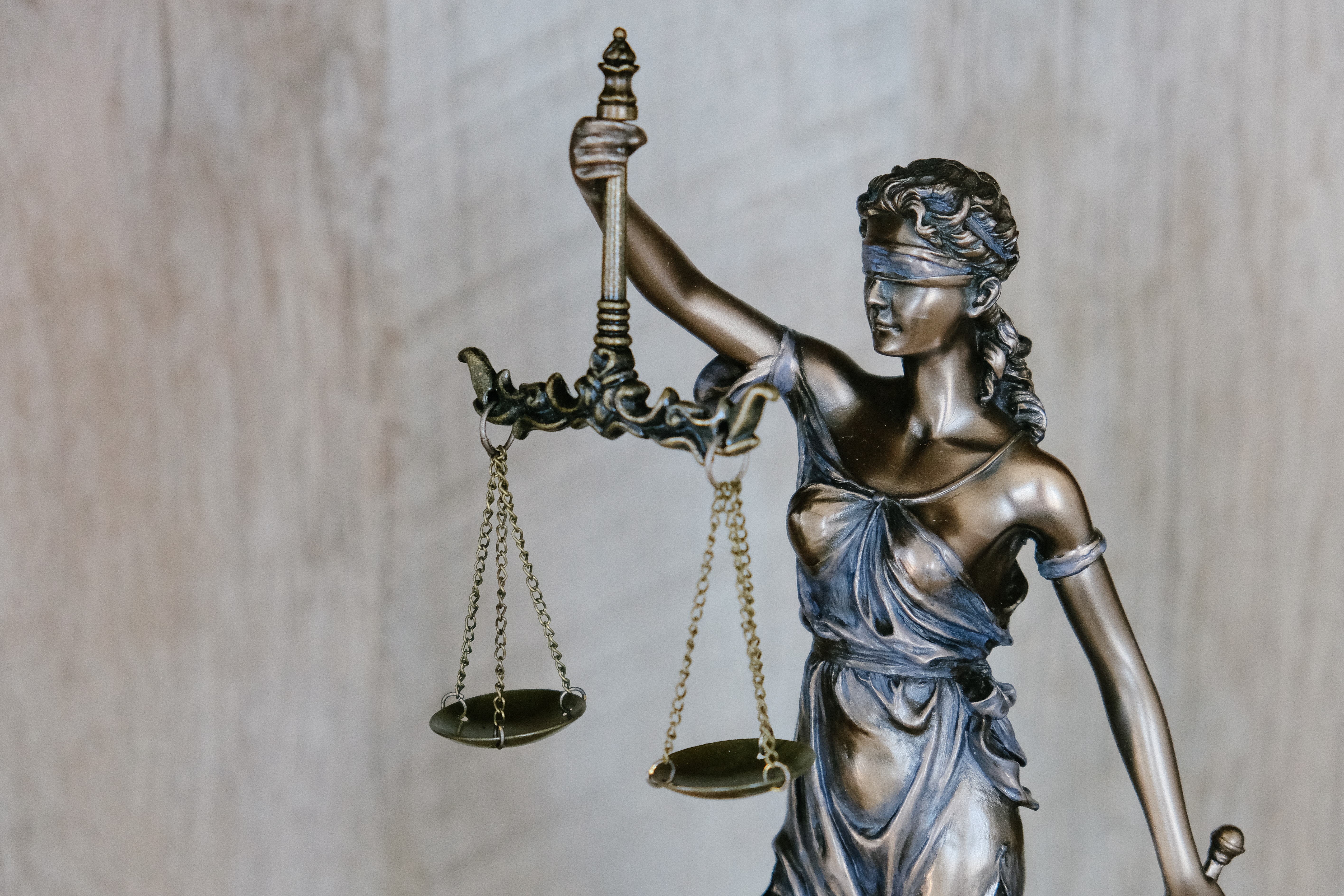
- Teacher: Ms. Neha Dubey
- Teacher: Mr Kumud Das
- Teacher: Mr Kumud Das
- Teacher: Ms. Pragati Pallavi
- Teacher: Dr. Bahubali Shiragapur
- Teacher: MS.DOYEL DUTTA
- Teacher: Mr Kumud Das
- Teacher: Ms. Pragati Pallavi
- Teacher: Mr Kumud Das

- Teacher: Dr. Pallavi Jha

This course is designed to equip students with the knowledge and practical skills necessary to conduct systematic and insightful research in the field of media studies. Students will explore a wide range of research methods, both qualitative and quantitative, to investigate media-related phenomena. By the end of the course, students will be proficient in selecting and applying appropriate research methods, collecting and analyzing media data, and critically evaluating research findings in the context of contemporary media landscapes.
- Teacher: Dr. Pallavi Jha
- Teacher: Mr Kumud Das
- Teacher: Dr. Bahubali Shiragapur
- Teacher: Prof.Shashi Singh
- Teacher: Dr. Ranu Dutta
- Teacher: Mrs. Shubhangi V Patil
- Teacher: Harshana Srivastava
- Teacher: Dr Shubhro Chakrabartty
- Teacher: Dr. Sonal Mahajan

- Teacher: Dr. Sonal Mahajan
Name of the Course: MMB 4003 Medical Microbiology Theory
- Course Instructor:
Name: Prof. Manoj Kumar AS
Office Number: 352
Phone: 9967181502
Email: manoj.kumar@dypiu.ac.in
Office hours: 9 am to 5 pm
Location: Akurdi
- Teaching Assistant:
None
- Level (who can take this course?): Graduates in Bioengineering and Biotechnology
- Credit:
L T P C
3 0 0 3
- Evaluation: Based on attendance, interactiveness, mid term examination score and end of semester examination score
- Breakup of evaluation:
Total marks: 100
Attendance & Interactiveness: 20
Mid term Exam: 30
End of Semester Exam: 50
- Maximum Number of Students: 30
- Actual Number of Students: 22
Prerequisite: Must be a student of M.Sc Medical Biotechnology
Course Syllabus:
|
COURSE CONTENTS |
LECTURES (Hrs.) |
|
Unit I: Host Pathogen Interaction: History of infectious disease, Introduction to human pathogens, Host pathogen interaction, Introduction to normal flora, Distribution and significance of normal human microbial flora (Skin, mouth, upper respiratory tract, eye, etc.). Normal flora as pathogen, accidental pathogens, oncogenic viruses. Definitions - Infection, Invasion, Pathogen, Pathogenicity, Virulence, Toxigenicity, Carriers and their types, Nosocomial infections. Modes of Transmission of infection. |
8 |
|
Unit II: Study of following groups of microbial pathogens (Morphological characters, pathogenesis, diagnosis, epidemiology, prophylaxis and treatment) Bacterial- Enteric pathogens (Salmonella), Pyogenic organisms (Staphylococcus); Viral- HIV, Dengue; Fungal-Candida; Parasite- Plasmodium & Entamoeba. |
8 |
|
Unit III: Diagnostic Methodology: General principles of diagnostic microbiology; Collection, transport and processing of clinical samples. Cultural, biochemical, serological and molecular methods for microbial typing. |
8 |
|
Unit IV: Immunology & Epidemiology: Response of immune system in specific disease. Epidemiological principles in prevention and control of diseases. Concepts of mortality/ morbidity rates, incidence and prevalence; Emerging and re-emerging diseases: examples of model bacterial, viral, fungal, and parasite diseases. |
8 |
Lesson Plan (Class room lecture):
|
Sr. No |
Content |
Date of Lecture |
|
1 |
History of Medical Microbiology and Infectious disease; Introduction to normal flora, Distribution and significance of normal human microbial flora (Skin, mouth, upper respiratory tract, eye, etc.) |
August 10, 2024 |
|
2 |
Introduction to human pathogens, Host pathogen interaction, Definitions - Infection, Invasion, Pathogen, Pathogenicity, Virulence, Toxigenicity, Carriers and their types, Modes of Transmission of infection. Nosocomial infections. Normal flora as pathogen, accidental pathogens |
August 20, 2024 |
|
3 |
Bacterial pathogens - Morphological characteristics, pathogenesis, diagnosis, epidemiology, prophylaxis and treatment of Enteric bacteria (eg. Salmonella), and Pyrogenic bacteria (eg. Staphylococcus). Other common bacterial pathogens will be covered as student assignments |
August 31, 2024 |
|
4 |
Viral pathogens - Morphological characteristics, pathogenesis, diagnosis, epidemiology, prophylaxis and treatment of HIV and Dengue viruses. Other common viral pathogens will be covered as student assignments |
September 10, 2024 |
|
5 |
Fungal pathogens - Morphological characteristics, pathogenesis, diagnosis, epidemiology, prophylaxis and treatment of Candida. Other common fungal pathogens will be covered as student assignments |
September 20, 2024 |
|
6 |
Parasites - Morphological characteristics, pathogenesis, diagnosis, epidemiology, prophylaxis and treatment of Entamoeba and Plasmodium. Other common parasites will be covered as student assignments |
September 30, 2024 |
|
7 |
Introduction to Oncogenic viruses; Oncogenic DNA viruses – EBV, HPV and HBV |
October 15, 2024 |
|
8 |
Oncogenic RNA viruses – HCV, HIV and HHV-8 |
October 30, 2024 |
|
9 |
General principles of diagnostic microbiology; Collection, transport and processing of clinical samples. Cultural, biochemical, serological and molecular methods for microbial typing |
November 15, 2024 |
|
10 |
Response of immune system in specific disease. Epidemiological principles in prevention and control of diseases. Concepts of mortality/ morbidity rates, incidence and prevalence; Emerging and re-emerging infectious diseases |
November 30, 2024 |
- References:
Kayser F. H., Bienz K. A., Eckert J. and Zinkernagel R. M. (2004), Medical Microbiology, Thieme.
- Jawetz, Melnick, &Adelberg's Medical Microbiology by Carroll KC, Hobdon JA, Miller S, Morse SA, Mietzner TA. 27th edition. Lange Publication, 2016.
- Brooks GF, Carroll KC, Butel JS and Morse SA. Jawetz, Melnick and Adelberg’sMedical Microbiology. 24th edition. McGraw Hill Publication. (2007). 3. Goering R, Dockrell H, Zuckerman M and Wakelin D. Mims Medical microbiology. 4th edition. Elsevier. (2007).
- Course Outcome:
The course will introduce students to various topics like pathogens, interaction of hosts with pathogens, normal flora and their significance. The course will emphasize on learning diagnostic methods in identification of disease-causing agents and give ideas on immunological and epidemiological aspects in control of disease.
Name of the Course: MMB 4008 Medical Microbiology Lab
- Course Instructor:
Name: Prof. Manoj Kumar AS
Office Number: 352
Phone: 9967181502
Email: manoj.kumar@dypiu.ac.in
Office hours: 9 am to 5 pm
Location: Akurdi
- Teaching Assistant:
Name: Presida Basil Vanjare
Contact: 8446001901
Office Hours: 9 am to 5 pm
Location: Akurdi
- Level (who can take this course?): Graduates in Bioengineering and Biotechnology
- Credit:
L T P C
0 0 4 2
- Evaluation: Based on Lab record, Lab experiment, Attendance and Viva
- Breakup of evaluation:
Total marks: 30
Lab record: 10 marks = 33%
Lab experiment: 10 marks = 33%
Attendance: 5 marks = 17%
Viva: 5 marks = 17%
- Maximum Number of Students: 30
- Actual Number of Students: 22
List of Practicals:
- Preparation of Nutrient broth and Nutrient Agar plates; Inoculation and culturing of bacteria in Nutrient broth, Spread plating and streaking of bacteria on agar plates; Isolation of single colonies of bacteria on Nutrient Agar plates
- Preparation and storage of bacterial glycerol stocks; Revival of bacteria from glycerol stocks
- Isolation, observation and identification of normal microbial flora of the human body (from hand and saliva).
- IMViC Test
- Widal
test
- Characterization of microorganisms by Gram staining
- Determination of minimal inhibitory concentration (MIC) of an antibiotic.
- Identification of Etiological Agent. Sequence analysis of Etiological agents using NCBI Genbank database and NCBI BLAST
Evaluation:
|
Lab Attendance |
Record book |
End term Lab experiment |
Viva |
Total |
|
5 marks |
10 marks |
10 marks |
5 marks |
30 marks |
Prerequisites: Must be a student of M.Sc Medical Biotechnology
Course Syllabus:
Lesson Plan (Laboratory):
|
Sr. No |
Content |
Date of Practical lesson |
|
1 |
Introduction to Microbiology laboratory practices |
August 2024 |
|
2 |
Preparation of Nutrient broth and Nutrient Agar plates; Inoculation and culturing of bacteria in Nutrient broth, Spread plating and streaking of bacteria on agar plates; Isolation of single colonies of bacteria on Nutrient Agar plates.
|
August 2024 |
|
3 |
Preparation and storage of bacterial glycerol stocks; Revival of bacteria from glycerol stocks
|
August 2024 |
|
4 |
Isolation, observation and identification of normal microbial flora of the human body (from hand and saliva).
|
August 2024 |
|
5 |
Characterization of microorganisms by Gram staining
|
September 2024 |
|
6 |
IMViC Test
|
September 2024 |
|
7 |
Widal test
|
October 2024 |
|
8 |
Antimicrobial testing (MIC) of an antibiotic.
|
November 2024 |
|
9 |
Identification of Etiological Agent. Sequence analysis of Etiological agents using NCBI Genbank database and NCBI BLAST
|
November 2024 |
- References:
- Kayser F. H., Bienz K. A., Eckert J. and Zinkernagel R. M. (2004), Medical Microbiology, Thieme.
- Jawetz, Melnick, &Adelberg's Medical Microbiology by Carroll KC, Hobdon JA, Miller S, Morse SA, Mietzner TA. 27th edition. Lange Publication, 2016.
- Brooks GF, Carroll KC, Butel JS and Morse SA. Jawetz, Melnick and Adelberg’sMedical Microbiology. 24th edition. McGraw Hill Publication. (2007). 3. Goering R, Dockrell H, Zuckerman M and Wakelin D. Mims Medical microbiology. 4th edition. Elsevier. (2007).
- Course Outcome:
This course is expected to create an advanced practical understanding and applied knowledge of the practice of clinical microbiology. It will combine the biochemical and pathophysiological understanding by combining clinical biochemistry with medical microbiology experiments, which quips students with the knowledge of diagnosing and treating bacterial diseases.
- Teacher: Dr Manoj Kumar
- Teacher: Ms. Khushboo Bhurat
- Teacher: Ms Unnati Sunil Darak
- Teacher: Prof. Bharat Nagargoje

A survey of the biology of microorganisms with an emphasis on bacteria. Topics include prokaryotic diversity, bacterial cell structure and metabolism, microbial growth and reproduction, microbial pathology, introductory virology and immunology, molecular microbiology and diagnostic
techniques and translational microbiology.
.
- Teacher: Dr. Surabhi Sonam

This course is designed for students in allied health programs. It includes preparing stained smears, culturing micro-organisms, conducting toxicity experiments, performing tests to identify bacteria and fungi, and studying microbial growth control methods.
- Teacher: Shweta Kulkarni
- Teacher: Aparna Phirange
- Teacher: Dr. Surabhi Sonam
- Teacher: Mrs. Heena Bhatia
- Teacher: Anil Narasipuram
- Teacher: Dr Richa Purohit
- Teacher: Dhanashri Varute
- Teacher: Mrs. Heena Bhatia
- Teacher: Anil Narasipuram
- Teacher: Dr Richa Purohit
- Teacher: Dhanashri Varute
- Teacher: Mrs. Maya Ranjeet Pisal
Course Details:
This course explores the evolving landscape of journalism in the digital age, with a specific focus on mobile journalism (MOJO). Students will learn to harness the power of smartphones and mobile devices to produce high-quality journalistic content across various platforms. Through hands-on exercises, field reporting, and discussions, students will develop the skills needed to report, edit, and distribute news stories using mobile technology. They will learn the arts and aesthetics of mobile storytelling, multimedia reporting, and ethical considerations in mobile journalism.
- Teacher: Mr Amit Kumar Om
- Teacher: Mr.Swet Chandan
- Teacher: Jayashri Kawale
- Teacher: Dr Aniket Kolekar
- Teacher: Dr Priyatosh Ranjan
- Teacher: Sneha Ashok Adsule
- Teacher: Dr. Sonal Mahajan
- Teacher: Ms Unnati Sunil Darak
- Teacher: Mrs Reema C Deshmukh
- Teacher: Ms Divya Raidas
- Teacher: Ms Tejaswini Sarwate
- Teacher: Mrs Reema C Deshmukh
- Teacher: Dr. Sidhartha Singh
- Teacher: Dr Priyatosh Ranjan
- Teacher: Dr. Sonal Mahajan
- Teacher: Dr Priyatosh Ranjan
- Teacher: Ms Varshini Dayanand Kore
- Teacher: Dr. Parth Sarthi Sen Gupta
- Teacher: Varshini Dayanand Kore
- Teacher: Dr. Parth Sarthi Sen Gupta
- Teacher: Ms Varshini Dayanand Kore
- Teacher: Dr. Parth Sarthi Sen Gupta

This course provides students with the opportunity to pursue a personalized long-format multimedia project in a niche area of their choice, approved and guided by a faculty mentor. Students will develop content across blog, podcast, and video formats and use social media platforms to amplify and engage audiences. The project aims to build domain expertise, storytelling depth, and professional content creation skills.
- Teacher: Mr Amit Kumar Om
- Teacher: Ms. Poonam Prakash Chim
- Teacher: Ms. Suhani Dubey
- Teacher: Dr. Vijayalakshmi Srinivasan
- Teacher: Ms. Presida Bacil Vanjare
- Teacher: Dr Prafull Chavan
- Teacher: Ms Unnati Sunil Darak
- Teacher: Ms. Saher Dabir Pathan
- Teacher: Prof.Shashi Singh
- Teacher: Mr. Saikat Dutta
- Teacher: Dr. Sanjay Kumar
- Teacher: Mr Kumud Das
- Teacher: Mr. Swapnil Jogi
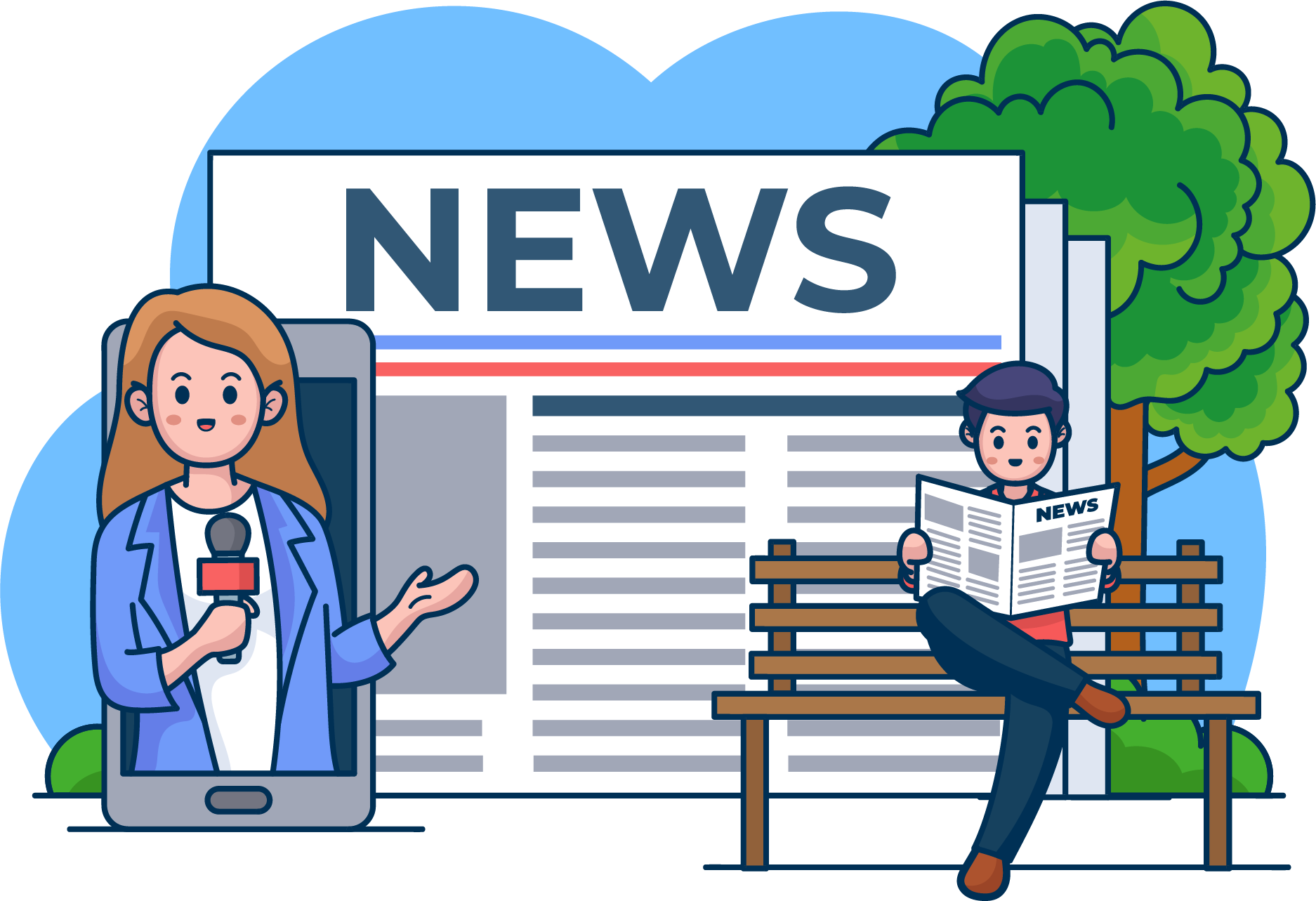
- Teacher: Maan Bardhan Kanth
- Teacher: Mr Amit Kumar Om
- Teacher: Mrs. Heena Bhatia
- Teacher: Varshita Gangadhara
- Teacher: Dr Richa Purohit
- Teacher: Mr Nikhil Soniminde
- Teacher: Mrs. Maya Ranjeet Pisal
- Teacher: Dr. Maheshwari Biradar
- Teacher: Mr Mayank Nipane
- Teacher: Dr. Rahul Sharma
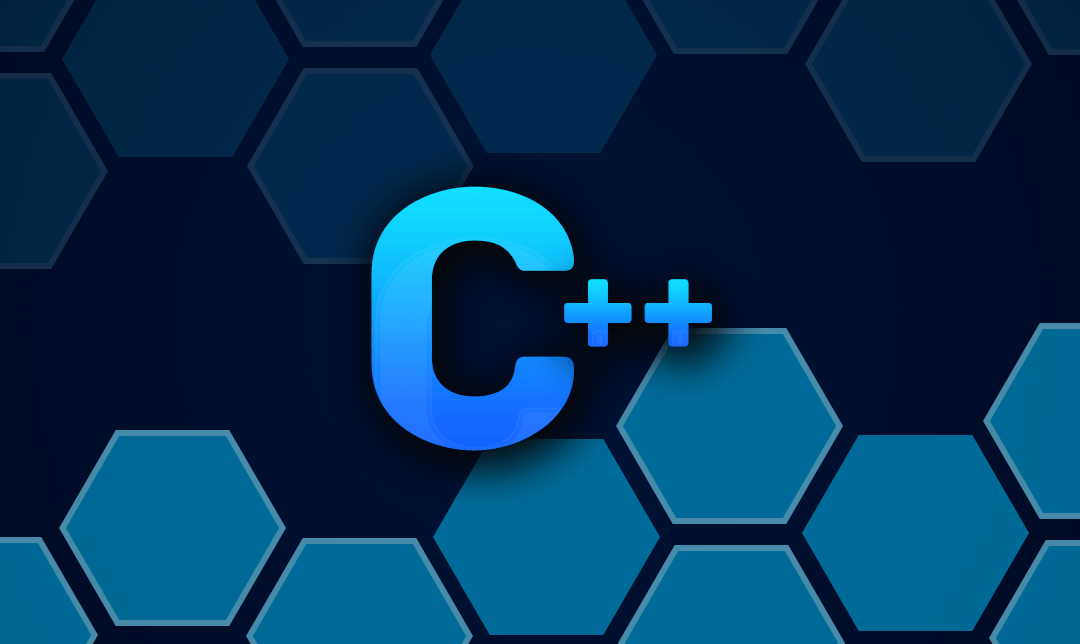
- Teacher: Mrs. Heena Bhatia
- Teacher: Mr Nikhil Soniminde
- Teacher: Rashmi Pawar
- Teacher: Ms Divya Raidas
- Teacher: Dr Priyatosh Ranjan
- Teacher: Dr Priyatosh Ranjan
- Teacher: Dr Priyatosh Ranjan
- Teacher: Dr. Kranti Shingate
- Teacher: Subrata Nandi
- Teacher: Dr. Kranti Shingate
- Teacher: Dr. Kranti Shingate
- Teacher: Sheetal Bura
- Teacher: Dr. Kranti Shingate
- Teacher: Sheetal Bura
- Teacher: Dr. Kranti Shingate
- Teacher: Ms Hetal Thaker
- Teacher: Mrs. Maya Ranjeet Pisal
- Teacher: Mr Nikhil Soniminde
- Teacher: Ms Hetal Thaker
- Teacher: Mrs. Heena Bhatia
- Teacher: Mrs. Maya Ranjeet Pisal
- Teacher: Dr Richa Purohit
- Teacher: Mr Nikhil Soniminde
- Teacher: Mrs. Maya Ranjeet Pisal
- Teacher: Dr. Maheshwari Biradar
- Teacher: Ms Priyanka Karale
- Teacher: Dr. Rahul Sharma
- Teacher: Dr. Maheshwari Biradar
- Teacher: Ms Priyanka Karale
- Teacher: Dr. Sidhartha Singh
- Teacher: Ms. Monika Sharma
- Teacher: Dr. Vijay Shah
- Teacher: Anil Narasipuram
- Teacher: Dr. Vijay Shah
- Teacher: Anil Narasipuram
- Teacher: Mrs Shilpa Idhol
- Teacher: Dr Arvind Kumar Mathur
- Teacher: Dr.Abhijit Patankar
- Teacher: Dr. Maheshwari Biradar
- Teacher: Ms Dipali P Dhokane
- Teacher: Ms. Akshara A. Saoji
- Teacher: Dr. Rahul Sharma
- Teacher: Dr. Maheshwari Biradar
- Teacher: Ms Pratiksha Saheb
- Teacher: Ms. Akshara A. Saoji
- Teacher: Dr. Rahul Sharma
- Teacher: Dr Sarika Jadhav
- Teacher: Mrs. Ashwini Pawar
- Teacher: Dr Sarika Jadhav
- Teacher: Dr Richa Purohit
- Teacher: Dr Viraj Atre
- Teacher: Dr. Bahubali Shiragapur
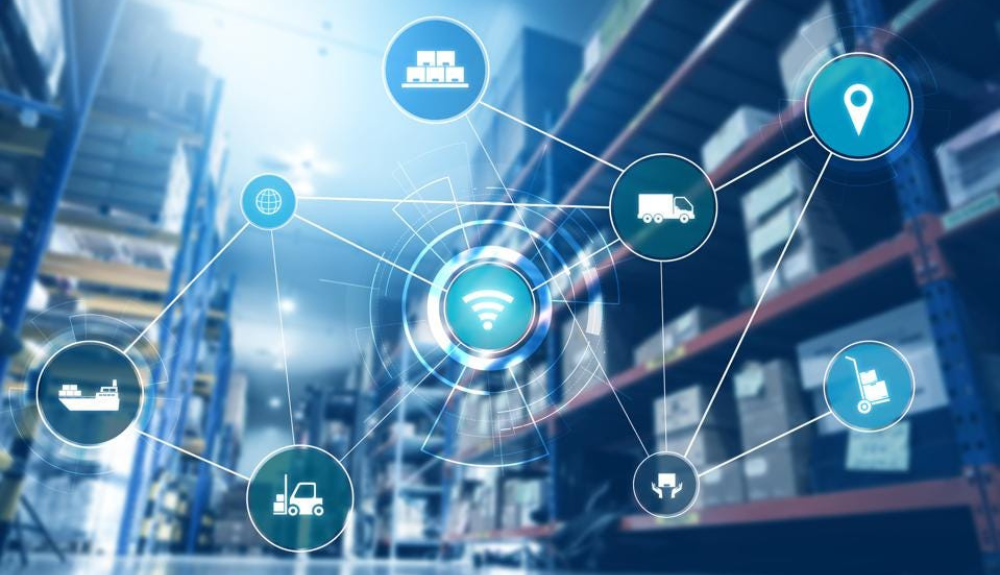
- Teacher: Mr. Ashwin Agarwal
- Teacher: Dr. Kranti Shingate
- Teacher: Mr. Ajit Dalavi
- Teacher: Dr. Kranti Shingate
- Teacher: Mr. Ajit Dalavi
- Teacher: Dr. Kranti Shingate
- Teacher: Dr Viraj Atre
- Teacher: Mrs. Pritam Chavan
- Teacher: Arvind Singh
- Teacher: Mr. Devdatta Mandore

Operational supply chain decisions are made hundreds of times each day in a company. These
are the decisions that are made at business locations that affect how productsare developed,
sold, moved, and manufactured.Operational decisions are made with an awareness of the
strategic and tactical decisions that have been adopted in a company. These higher level
decisions are made to create a framework within the company’s supply chain operation and to
the best competitive advantage. The day to day operational supply chain decisions ensure that
the products efficiently move along the supply chain, achieving the maximum cost benefit. A
number of examples of operational decisions can be identified in
manufacturing, supplier relationships, and logistics.
- Teacher: Mr. Ashwin Agarwal
- Teacher: Mr. Suresh Kadam
- Teacher: Harish Pal
- Teacher: Mr Amit Kumar Om
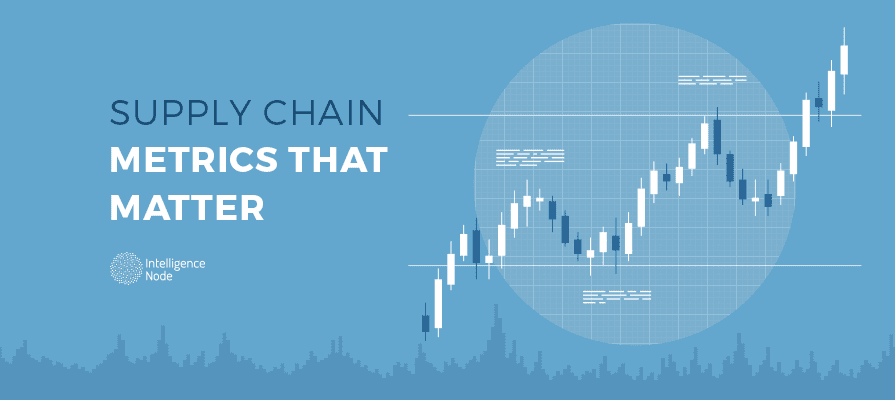
- Teacher: Mr. Ashwin Agarwal
- Teacher: Shital Vijay Nehere
- Teacher: Shital Vijay Nehere
- Teacher: Shital Vijay Nehere
- Teacher: Shital Vijay Nehere
- Teacher: Mrs.Mayura Abhijit khanore
- Teacher: Mrs.Mayura Abhijit khanore
- Teacher: Mrs.Mayura Abhijit khanore
- Teacher: Ms . Priyanka Eknath Doke
- Teacher: Ms . Priyanka Eknath Doke
- Teacher: Miss Kavita Ashok Gaikwad
- Teacher: Miss Kavita Ashok Gaikwad

- Teacher: Dr.Rahul Weldode
- Teacher: Mr. Shyam Pagare
- Teacher: Dr. Vandana Patil

- Teacher: Sneha Ashok Adsule
- Teacher: Dr. Sonal Mahajan
- Teacher: Dr. Meena Pandey
- Teacher: Dr. Meena Pandey
- Teacher: Dr. Meena Pandey

- Teacher: Dr. Meena Pandey

- Teacher: Dr. Meena Pandey

- Teacher: Dr. Meena Pandey

- Teacher: Dr. Meena Pandey

- Teacher: Dr. Meena Pandey

- Teacher: Dr. Meena Pandey
- Teacher: Mrs Shilpa Idhol
- Teacher: Sheetal Bura
- Teacher: Dr Pramod Kulkarni
- Teacher: Dr Arvind Kumar Mathur
- Teacher: Dr Pramod Kulkarni
- Teacher: Dr Arvind Kumar Mathur
- Teacher: Dr Sandhya Shinde
- Teacher: MS.DOYEL DUTTA
- Teacher: Dr. Sonal Mahajan
- Teacher: Dr Priyatosh Ranjan
- Teacher: Anupurba Das
- Teacher: Ms Anupurba Das
- Teacher: Sulaxan Jadhav
- Teacher: Dr Anuj Kumar
- Teacher: Samruddhi Sapkal
- Teacher: Dr. Bahubali Shiragapur
- Teacher: Dr Anuj Kumar
- Teacher: Mrs Remya Praveen
- Teacher: Dr. Rahul Sharma
- Teacher: Dr. Maheshwari Biradar
- Teacher: Sulaxan Jadhav
- Teacher: Dr Anuj Kumar
- Teacher: Dr. Rahul Sharma
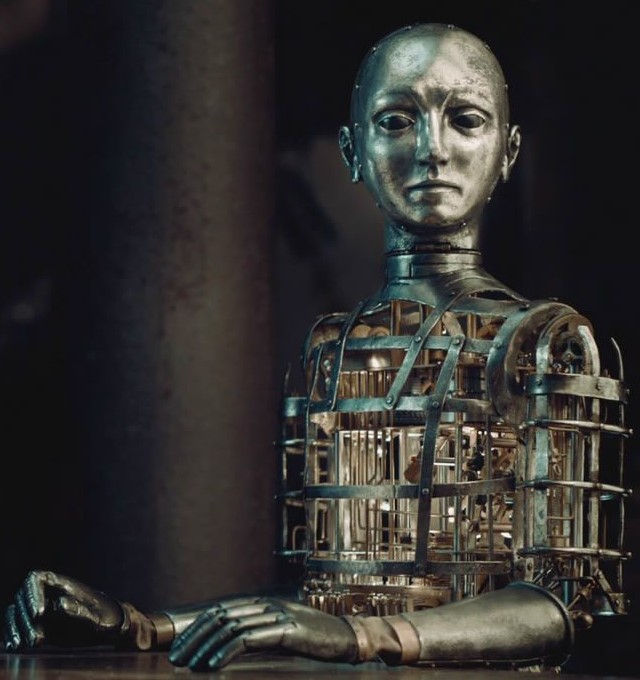
- Teacher: Dr. Sirshendu Arosh
- Teacher: Mr. Rajkumar Chaudhari
- Teacher: Dr. Sonal Mahajan

- Teacher: Mr Shrikant Mahindrakar
- Teacher: Nitin Rajput
- Teacher: Mrs.Madhuri Pagale
- Teacher: Dr. Samarjit Roy
- Teacher: Mrs.Madhuri Pagale
- Teacher: Dr. Samarjit Roy
- Teacher: Ms. Monika Sharma
- Teacher: Dr. Vijay Shah
- Teacher: Mr. Shyam Pagare
- Teacher: Dr Ananya Mehta
- Teacher: Mrs Venkata Mrudula Bhimavarapu
- Teacher: Mr. Ajit Dalavi
- Teacher: Girish Phatak
- Teacher: Dr. Maheshwari Biradar
- Teacher: Dr Anu Dandona
- Teacher: Vahida Pathan
- Teacher: Dr. Rahul Sharma
- Teacher: Dr Sarika Jadhav
- Teacher: Dr. Maheshwari Biradar
- Teacher: Sulaxan Jadhav
- Teacher: Dr.Vaishnaw Kale
- Teacher: Dr Anuj Kumar
- Teacher: Dr. Rahul Sharma
- Teacher: Dr. Bahubali Shiragapur
- Teacher: Dr Dipti chandra
- Teacher: Kunal Dumbre
- Teacher: Varshita Gangadhar
- Teacher: Sulaxan Jadhav
- Teacher: Jayashri Kawale
- Teacher: Ms Shilpa Marathe
- Teacher: Mr. Yash Sanjay More
- Teacher: Dr. Dipika Pradhan
- Teacher: Dr. Bahubali Shiragapur
- Teacher: Varun Sharma
- Teacher: Dr. Vijay Shah
- Teacher: Mrs Sneha Kanawade
- Teacher: Ms Krishnendu S
- Teacher: Mrs Asha S Ayakar
- Teacher: Dr. Sanjay Badhe
- Teacher: Dr. Maheshwari Biradar
- Teacher: Mr.Swet Chandan
- Teacher: Dr Dipti chandra
- Teacher: Dr. Anju Chaurasia
- Teacher: Dr. Pragati Choudhari
- Teacher: Dr Sayalee Deshmukh
- Teacher: Ms Dipali P Dhokane
- Teacher: Dr. Somya Dubey
- Teacher: Dr Sarika Jadhav
- Teacher: Dr Jagadish Jakati
- Teacher: Dr Bansidhar Joshi
- Teacher: Dr.Vaishnaw Kale
- Teacher: Mr Ajinkya Kothavade
- Teacher: Dr Anuj Kumar
- Teacher: Ms Vaishali Kumar
- Teacher: Dr Sanjay Mohite
- Teacher: Mr. Yash Sanjay More
- Teacher: Ms Shobhana Patil
- Teacher: Mrs Smita S Pawar
- Teacher: Dr. Dipika Pradhan
- Teacher: Dr Rishikant Rajdeepak
- Teacher: Dr. Laxmi Priya Sahu
- Teacher: Mr Riteshkumar Sale
- Teacher: Varsha Sambhaje
- Teacher: Dr. Rahul Sharma
- Teacher: Dr. Gaurav Kumar Singh
- Teacher: Mrs Arti Singh
- Teacher: Suprabhat Sinha
- Teacher: Dr. Prateek Srivastav
- Teacher: Dr Vandna Srivastava
- Teacher: Dr Swapnil Waghmare
- Teacher: Dr Sarika Jadhav
- Teacher: Dr Sarika Jadhav
- Teacher: Dr. Vijay Shah
- Teacher: Ms Vaishali Kumar
- Teacher: Dr. Maheshwari Biradar
- Teacher: Dr Dipti chandra
- Teacher: Sulaxan Jadhav
- Teacher: Dr.Vaishnaw Kale
- Teacher: Dr Anuj Kumar
- Teacher: Ms Shilpa Marathe
- Teacher: Dr. Dipika Pradhan
- Teacher: Dr. Rahul Sharma
- Teacher: Dr. Bahubali Shiragapur
- Teacher: Dr. Maheshwari Biradar
- Teacher: Ms Vaishali Kumar
- Teacher: Dr. Maheshwari Biradar
- Teacher: Ms Vaishali Kumar
- Teacher: Dr Swapnil Waghmare
- Teacher: Dr Anuj Kumar
- Teacher: Ms Vaishali Kumar
- Teacher: Dr Sarika Jadhav
- Teacher: Mrs. Heena Bhatia
- Teacher: Prachi Chhajed
- Teacher: Dr Sarika Jadhav
- Teacher: Dr Richa Purohit
- Teacher: Ms. Prachi Soniminde
- Teacher: Dr. Maheshwari Biradar
- Teacher: Dr Swapnil Waghmare
- Teacher: Mrs. Heena Bhatia
- Teacher: Dr Dipti chandra
- Teacher: Dr Sarika Jadhav
- Teacher: Dr. Dipika Pradhan
- Teacher: Dr Richa Purohit
- Teacher: Mrs. Heena Bhatia
- Teacher: Dr Sarika Jadhav
- Teacher: Dr Richa Purohit
- Teacher: Heena Ahuja
- Teacher: Mrs. Heena Bhatia
- Teacher: Prachi Chhajed
- Teacher: Dr Sarika Jadhav
- Teacher: Dr Richa Purohit
- Teacher: Ms. Prachi Soniminde
- Teacher: Dr Sarika Jadhav
- Teacher: Dr. Maheshwari Biradar
- Teacher: Mr Shubham Jagdale
- Teacher: Ms Vaishali Kumar
- Teacher: Dr. Rahul Sharma
- Teacher: Ms Vaishali Kumar
- Teacher: Mr Shubham Jagdale
- Teacher: Ms Vaishali Kumar
- Teacher: Ms Vaishali Kumar
- Teacher: Dr Sarika Jadhav
- Teacher: Mrs. Veena Kiragi
- Teacher: Dr Sarika Jadhav
- Teacher: Mrs. Heena Bhatia
- Teacher: Dr Sarika Jadhav
- Teacher: Dr Richa Purohit
- Teacher: Mrs. Heena Bhatia
- Teacher: Dr Sarika Jadhav
- Teacher: Dr Richa Purohit
- Teacher: Dr Sarika Jadhav
- Teacher: Ms Vaishali Kumar
- Teacher: Dr Sarika Jadhav
- Teacher: Ms Vaishali Kumar
- Teacher: Anil Narasipuram
- Teacher: Anil Narasipuram
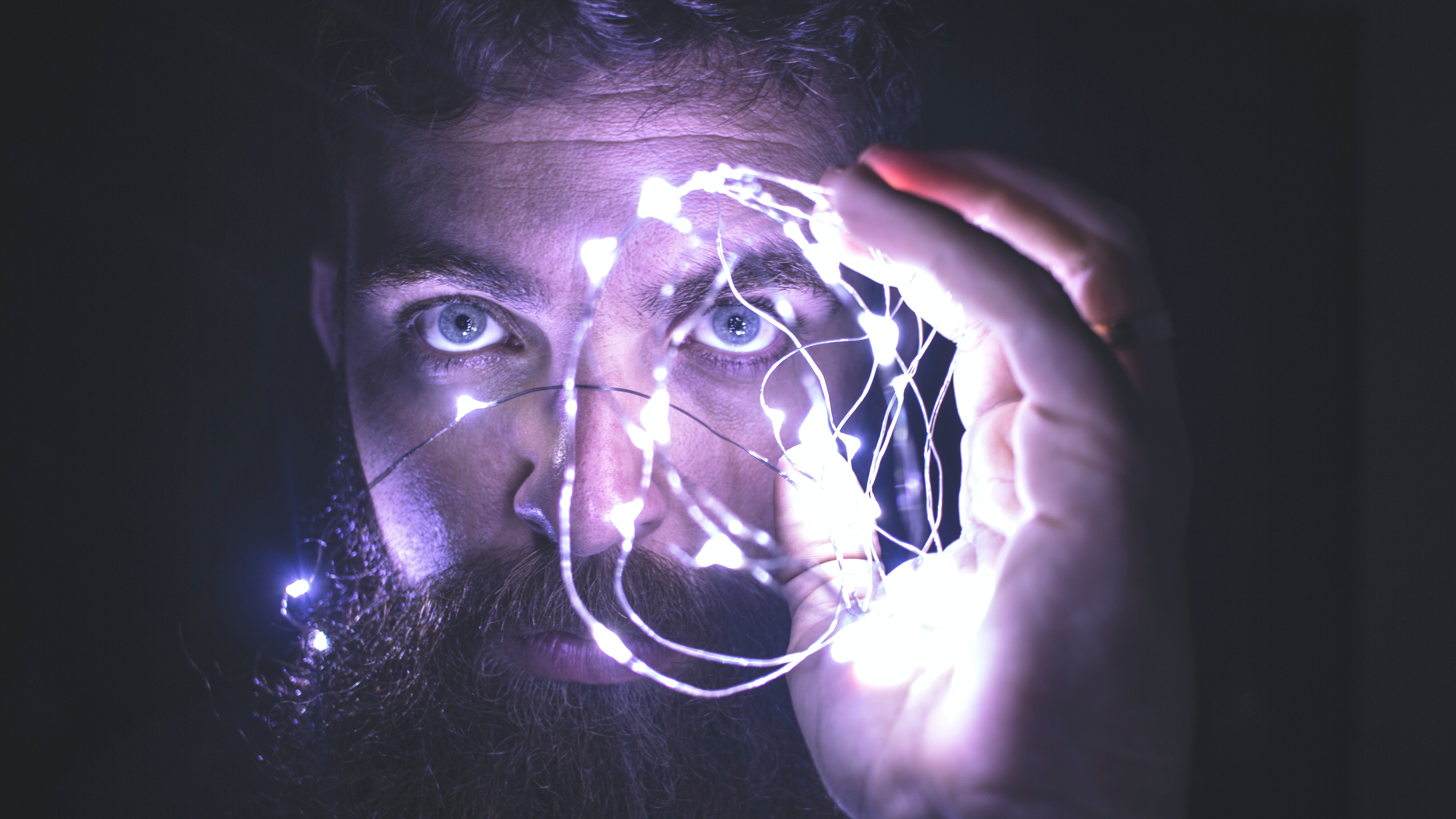
Psychology and Human Factors
Objective(s) -
Gain an understanding of how human and social factors affect the relationship
between people and technologies, tools, environments, and systems.
Gain an understanding of the human behind the term “user,” including the
user’s memory and decision-making and problem-solving skills
Learn how cognition and perception, which encompass attention, memory,
thought, the “senses”, play a role in affecting the experience of design.
Understand how decisions are made using mental models and how emotion
and cognitive biases affect user experience.
Learn how to create effective designs as well as identify potential pitfalls in
your design, basing them on how the brain manages and prioritizes the sensory information it receives.
Understand how social context and environment influences human behavior.
Session No. | Topic & Sub-Topic | Duration (Hrs.) |
The human brain, subconscious mind, psychology of interaction design, cognitive frameworks | 5 | |
Cognition and perception, visual perception and color vision | 3 | |
Memory, types of memory | 3 | |
Thinking, action, learning, mental models, cognitive biases | 3 | |
Attention, choice, cognitive load. | 5 | |
Emotion and experience, peak experience, flow | 3 | |
Visceral, behavioral and reflective design | 5 | |
Feedback loops, social validation and virality | 3 | |
Total Hrs. | 30hrs. |
Prerequisite/s- Understanding of Design-related courses: While not a strict prerequisite, taking courses in design or related fields like graphic design, industrial design, or human-computer interaction can be advantageous. These courses can provide you with a foundational understanding of design principles, aesthetics, and user-centered design.
Mode of submission - Soft Copies
- Teacher: Mr Krishna Kumar
- Teacher: Mr Krishna Kumar
- Teacher: Mr Krishna Kumar
- Teacher: Mr Kumud Das
- Teacher: Dr Ananya Mehta
- Teacher: Mr Kumud Das
This Course is for winter sem .
- Teacher: Mrs. Heena Bhatia
- Teacher: Priti Patil
- Teacher: Dr Richa Purohit
- Teacher: Nishikant Surwade
- Teacher: Mrs. Heena Bhatia
- Teacher: Priti Patil
- Teacher: Dr Richa Purohit
- Teacher: Prof Paresh Kulkarni
- Teacher: Dr Arvind Kumar Mathur
- Teacher: Dr. Kapil Sharma
- Teacher: Suprabhat Sinha
- Teacher: Dr Rishikant Rajdeepak
- Teacher: Dr. Bahubali Shiragapur
- Teacher: Dr. Kapil Sharma

- Teacher: Mr Amit Kumar Om
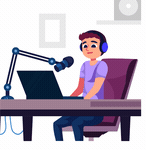
Course Objectives:
• To provide in-depth understanding of the concept, role and significance of the Radio.
• To acquaint the students with the best traditions and practices of Radio Journalism.
• To train the students in the art and craft of Radio Journalism.
• Provide understanding of Radio journalism, program generation, station management of the Radio stations.
• To provide extensive hands-on training in the latest digital audio technologies.
- Teacher: Mr Amit Kumar Om
- Teacher: Mr Amit Kumar Om
- Teacher: Abhinita Daiya
- Teacher: Ms Unnati Sunil Darak
- Teacher: Ms. Siddhi Pandey
- Teacher: Dr. Sidhartha Singh
- Teacher: Dr Priyatosh Ranjan
- Teacher: Dr Priyatosh Ranjan
- Teacher: Maithili Salgaokar
- Teacher: Mr. Ajit Dalavi
- Teacher: Mr. Ajit Dalavi
- Teacher: Mr. Ajit Dalavi
- Teacher: Mr. Ajit Dalavi
- Teacher: Mrs. Ashwini Pawar
- Teacher: Mrs. Heena Bhatia
- Teacher: Mrs. Maya Ranjeet Pisal
- Teacher: Dr Richa Purohit
Name of the Course: Relational Database Management System
- Course Instructor:
- Name: Dr. Sunanda Mulik
Office Number: 452
Phone:9112702866
Email: sunanda.mulik@dypiu.ac.in
Office hours:
Location: 4th Floor, Office no 452
- Teaching Assistant:
Name: --
Contact:
Office Hours: Time slots
Location
- Level (who can take this course?):
- Credit: 3-0-3-4.5
- Evaluation: Theory + Practical
- Breakup of evaluation: % wise
ESE (Theory)- 50 %
Practical-25%
Mid Term-15%
Assignments-10%
- Maximum Number of Students: 136
Course Objectives:
Students will be able to understand-
1. relational database concepts and transaction management concepts in database system.
2. Students will understand the different issues involved in the design and implementation of a database system.
3. Students will study the physical and logical database designs, database modeling, relational, hlerarchical, and network models.
4. Students will develop an understanding of essential DBMS concepts such as: database securlty, integrity, and concurrency.
5. Students will able design and build h Slmple database system and demonstrate competence with the fundamental tasks involved with modeling, designing, and implementing a DBMS.
Course
Prerequisites:
Nil
Course Syllabus:
|
Sr. No |
Content |
Date |
|
1 |
Overview 1.2 File system Vs. DBMS
|
11/1/23 (Please follow the |
|
2 |
Database models: Relational, Hierarchical and network
|
date format.) |
|
3 |
Levels of abstraction Data independence- Logical data independence Physical data independence |
|
|
4 |
Instances and Schemas |
|
|
5 |
Characteristics of DBMS ,Advantages of DBMS
|
|
|
6 |
Applications of DBMS
|
|
|
7 |
Types of Users , Types of databases |
|
|
8 |
Data Dictionary |
|
|
9 |
Overview of DB design
|
|
|
10 |
Relational Model: Relation, Domain & attributes
|
|
|
11 |
ER data model (entities, attributes, entity sets, relations, relationship sets) ,
Conversion of ER to Relational model
|
|
|
12 |
keys
|
|
|
13 |
Decomposition 2.5.1 Problems Related to Decomposition Desirable Properties of Decomposition |
|
|
14 |
Functional dependencies Types of Functional Dependencies Full Functional Dependencies Partial Dependencies Transitive Dependencies |
|
|
15 |
Trivial Dependencies Multi valued Dependencies |
|
|
16 |
Closure of set of Functional Dependencies Closure of Attribute set |
|
|
17 |
An algorithm to find the candidate key for a Relation R |
|
|
18 |
Canonical Cover , Prime attribute and Non-Prime Attribute
|
|
|
19 |
Properties of Decomposition Loss less Join Decomposition Dependency Preserving |
|
|
20 |
Normalization. lNF, 2NF |
|
|
21 |
Normalization. 3NF and BCNF |
|
|
22 |
Case studies |
|
|
23 |
Introduction to SQL
|
|
|
24 |
DDL Commands : CREATE, ALTER, DROP for tables DML Commands; SELECT, INSERT, DELETE and UPDATE |
|
|
25 |
Order by clause |
|
|
26 |
Group By and Having clause
|
|
|
27 |
Joins and Types of Joins
|
|
|
28 |
Sub queries and nested sub queries |
|
|
29 |
View and DML operations on view |
|
|
30 |
Sequences |
|
|
31 |
Case studies on SQL |
|
|
32 |
Transaction Concepts
Properties of Transactions State of the Transaction
|
|
|
33 |
Concurrent Transactions Problems in concurrent transactions |
|
|
34 |
Types of schedule based on order of operations Types of schedules based on recoverability |
|
|
35 |
Conflict Serializability 4.5.2 Precedence graph of Serializability 4.5.3 View Serializability
|
|
|
36 |
Concurrency control mechanisms
|
|
|
37 |
Deadlock Deadlock Avoidance |
|
|
38 |
Deadlock Prevention Algorithms |
|
|
39 |
Deadloclc Detection |
|
|
40 |
Recovery from deadlock |
|
|
41 |
Domain Constraints 5.3 Referential Integrity
|
|
|
42 |
Methods of Database security 5.5 Discretionary Access Control ( DAC) method
|
|
|
43 |
Granting Privileges 5.5.2 Specifying Privileges using views 5.5.3 Revoking Privileges 5.5.4 Propagation of Privileges using the Grant Option
|
|
|
44 |
Mandatory Access Control Method
|
|
|
45 |
Introduction to NoSQL, Brief history of NoSQL, feed of NoSQL, RDBMS vs NoSQL, CAP Theorem, NoSQL pros/cons , NoSQL Categories - Key-value stores, Column-oriented, Graph, Document oriented
|
|
Laboratory
|
Sr. No |
Content |
Date |
|
1 |
Installation and configuration of MYSQL
|
|
|
2 |
Draw ER-Diagram for Bank Management System
|
|
|
3 |
Assignment on DML commands-select, Insert, Delete, Update
|
|
|
4 |
Assignment on DDL commands-create, alter, drop, truncate, rename, comment, flashbaclc |
|
|
5 |
Assignment on Constraints- Primary key, Unique Key, Check ,full, Referential integrity constraint |
|
|
6 |
Restricting and Sorting Data using where clause and order by clause
|
|
|
7 |
Assignment on accepting Data from users-Substitution variables
|
|
|
8 |
Assignment on Slngle Row Functions to customize output
|
|
|
9 |
ASSlgnment on Conversion Functions and Conditional Statements
|
|
|
10 |
Assignment on Group Functions
|
|
|
11 |
Assignment on displaying data from multiple tables using jolns.
|
|
|
12 |
Assignment on Sub queries, nested sub queries
|
|
|
13 |
Assignment on DCL commands- Grant, Revoke
|
|
|
14 |
Assignment on TCL command—s commit, rollback, save point
|
|
|
15 |
Assignment on Views
|
|
|
16 |
Installing MongoDB on Windows
|
|
|
17 |
Data Types in Mongo DB, Database Create and Drop, CRUD Operations in Mongo DB |
|
- Course Outcome:
On successful completion of this course, the learner will be able to-
Describe the fundamental elements of relational database management systems.
Explain the basic concepts of relational data model, entity-relationship model, relational database design, relational algebra and SQL. To get knowledge and working of input output devices.
Design ER-models to represent simple database application scenarios
Convert the ER-model to relational tables, populate relational database and
formulate SQL queries on data.
Improve the database design by normalization.
- Text Book:
Database system concept Korth , TMH, 5th Ed.
- Reference Book:
1. Introduction to database systems C.J. Date, Pearson.
2. Database system concept Korth , TMH, 5th Ed.
- Study Materials:
Uploaded time to time
- Teacher: Dr Sunanda R Mulik
- Teacher: Mrs. Ashwini Pawar
- Teacher: Mrs.Madhuri Pagale
- Teacher: Rashmi Pawar
- Teacher: Mr. Swapnil Jogi
- Teacher: Mr Kumud Das
- Teacher: Mr Kumud Das
- Teacher: Dr. Sanjay Badhe
- Teacher: Mrs. Shweta Banait
- Teacher: Mr.Swet Chandan
- Teacher: Dr Dipti chandra
- Teacher: Dr. Somya Dubey
- Teacher: Varshita Gangadhar
- Teacher: Sulaxan Jadhav
- Teacher: Dr.Vaishnaw Kale
- Teacher: Mr Shrikant Mahindrakar
- Teacher: Mr. Yash Sanjay More
- Teacher: Ms.Nikita Pagar
- Teacher: Dr. Dipika Pradhan
- Teacher: Dr. Samarjit Roy
- Teacher: Varsha Sambhaje
- Teacher: Dr. Kapil Sharma
- Teacher: Dr. Rahul Sharma
- Teacher: Dr. Bahubali Shiragapur
- Teacher: Mr Pulkit Tiwari
- Teacher: Dr Dipti chandra
- Teacher: Sulaxan Jadhav
- Teacher: Mr Shubham Jagdale
- Teacher: Dr.Vaishnaw Kale
- Teacher: Ms Priyanka Karale
- Teacher: Ms Vaishali Kumar
- Teacher: Mr Saransh Kushwaha
- Teacher: Mr Shrikant Mahindrakar
- Teacher: Dr.Om Mishra
- Teacher: Mr Mayank Nipane
- Teacher: Dr. Dipika Pradhan
- Teacher: Dr. Rahul Sharma
- Teacher: Dr. Bahubali Shiragapur
- Teacher: Disha Upadhyay
- Teacher: Dr. Sanjay Badhe
- Teacher: Dr.Vaishnaw Kale
- Teacher: Dr. Neera Kumari
- Teacher: Dr. Rahul Sharma
- Teacher: Dr. Surabhi Sonam
- Teacher: Prof.Shashi Singh
- Teacher: Prof.Shashi Singh
- Teacher: Prof.Shashi Singh
- Teacher: Prof.Shashi Singh
- Teacher: Dr. Swapnil Bhurat
- Teacher: KHUSHBOO GUPTA
- Teacher: Dr Sudhir Kumar
- Teacher: Dr Arvind Kumar Mathur
- Teacher: Mr. Devendra Athavale
|
Program |
Year of Study |
Semester |
Course Type |
|||||
|
M.B.A-DB |
II Year |
IV |
Core Course |
|||||
|
|
||||||||
|
Course full title |
Retailing |
|||||||
|
Course short title |
RL |
|||||||
|
Course code |
MA404 |
|||||||
|
Course credit |
4 |
|||||||
|
|
||||||||
|
Reviewed By |
Dean / Academic In-Charge |
|||||||
|
|
||||||||
|
Course Description |
This course will introduce you Retailing. Retailing refers to the range of activities undertaken in the retail store by the retailers as well as the brand to promote the products to the customers in order to generate awareness, interest, and sales. In simple words, everything from the interior and exterior of the retail store, to in-store advertisements, product placements, offers and promotions, and the behaviour of store representatives comes under retail marketing. |
|||||||
|
|
||||||||
|
Course Outcomes (CO) / Learning Outcomes |
||||||||
|
CO 1 |
To provide insights into all functional areas of retailing |
|||||||
|
CO 2 |
To give an account of essential principles of retailing. |
|||||||
|
CO 3 |
To give a perspective of the Indian retailing scenario. |
|||||||
|
CO 4 |
To give an insight on Retail Planning, Administration. |
|||||||
|
CO 5 |
To explain the Retail communication , Merchandising Pricing |
|||||||
|
CO6 |
ELABORATE on the various aspects of Mall Management & Challenges to Indian Retail sector |
|||||||
|
Course Content |
||||||||
|
Unit No. |
Topics |
Content |
No of Sessions |
|||||
|
1 |
Introduction to Retail ailing, Retail Environment & Retail Classification |
Overview of Retailing: Definition, Scope, Role of Retailer in the Channel of Distribution, Benefits of Retailing, Functions of Retailers Retailing Environment: Economic Environment – Legal Environment – Technological Environment – Competitive Environment Classification of Retailers: Classification by Ownership – Independent Stores – Chain stores – Franchise Stores – leased Departments – Cooperatives , Classification by Strategy – General Merchandise Retailers – Discount Stores – Specialty Stores – Off Price Retailers , Classification by Product Line – Department stores – Supermarkets – Hypermarkets – Convenience Stores - Services retailing. Non Traditional Retail Classifications: Non store retailer – Direct Marketing – Catalog Marketing– Telemarketing – TV Home shopping – Automatic vending – E – Tailing – Malls and other formats |
10 |
|||||
|
2 |
Retail Location, Administration, Planning |
Retail Location & Site Selection: Types of retail locations, Steps involved in choosing a retail location, Methods of evaluating a trading area, Store Layout, Design &Visual Merchandising: Store planning, Store Design and the retailing mix, Space mix, effective space management, Store layout Retail Administration: Store management, Human resource management, Information System & SCM Planning Merchandise Assortment: Organizing the buying process by categories- Category Management – The Buying Organization – Setting Financial Objectives for the Merchandise Plan – Gross Margin Return On Inventory Management (GMROI), Measuring Inventory Turnover – Sales Forecasting – Assortment Planning Process – Variety – Assortment – Product Availability – Tradeoffs between Variety, Assortment and Product Availability – Assortment Plan, Product Mix Trends. |
10 |
|||||
|
3 |
Merchandising Pricing & Retail Communication |
Merchandise Pricing: Setting the Retail Price- Pricing Objectives – Pricing strategies – Pricing Methods – Pricing Adjustments – Price Discrimination Retail Communication Mix: Role of Communication in Retailing – Methods of communication – Planning the Retail Communication Programs – Implementing and Evaluating the Retail Communication Programs |
10 |
|||||
|
4 |
Mall Management & Challenges to Indian Retail sector |
Mall Management: Major players nationally & internationally, Role of promoter, developer& retailer: selecting tenant stores, Managing experience, target footfalls & their conversion to sales. Identifying customers, differentiating the mall, real estate pricing, measuring duration & sequence of visit, Number & nature of outlets visited &spend of share of wallet across the tenants. Challenges to Indian Retail Sector: Political & legal, economic, real estate pricing, customer coming of age to shop in organized sector |
10 |
|||||
|
|
|
Total lectures |
40 |
|||||
|
|
||||||||
|
Learning Resources |
||||||||
|
1 |
Recommended Reference Book |
1. Retail Management by Gibson Vedamani , Jaico Books 2. Retailing by Patrick Dunne, Robert Lusch, David Griffith, Cengage Learning, Indian reprint. 3. Retail Marketing Management by David Gilbert, Pearson Publication. 4. Retail Management, Arif Sheikh, Himalaya Publishing |
||||||
|
2 |
Recommended Text Book |
1. Retailing Management by Michael Levy & Barton Weitz, TMGH, 5th Edition 2. Retailing Management by Swapna Pradhan , TMGH
|
||||||
|
3 |
Recommended Research Journals |
|
||||||
|
4 |
Recommended Websites |
|
||||||
- Teacher: Prasad Deshpande
- Teacher: Ms Anuradha Patil
- Teacher: Mrs Asha S Ayakar
- Teacher: Dr. Sanjay Badhe
- Teacher: Dr. Maheshwari Biradar
- Teacher: Mr.Swet Chandan
- Teacher: Dr Dipti chandra
- Teacher: Dr. Anju Chaurasia
- Teacher: Dr.Vaishnaw Kale
- Teacher: Mrs. Veena Kiragi
- Teacher: Ms Vaishali Kumar
- Teacher: Raji Ajith Panickar
- Teacher: Mrs Smita S Pawar
- Teacher: Dr. Dipika Pradhan
- Teacher: Dr. Yogesh Kumar Sariya
- Teacher: Dr Ashvini P Shende
- Teacher: Dr.Prateek Verma
- Teacher: Dr. Vijaya M Waidande
- Teacher: Bhanuprakash Bussagari
- Teacher: Mr Krishna Kumar
- Teacher: Dr. Vijay Shah
- Teacher: Ms. Monika Sharma
- Teacher: Bhanuprakash Bussagari
- Teacher: Ms Anuradha Patil
- Teacher: Mrs Asha S Ayakar
- Teacher: Dr. Sanjay Badhe
- Teacher: Dr.Vaishnaw Kale
- Teacher: Dr. Rahul Sharma
Course Description:
The cut-throat competition in the market place has led the growth of sales and distribution management in an apex heights. Hence knowledge, skills, and theoretical underpinnings related to sales and distribution management are the key for success of a management graduates. Keeping in mind the contemporary relevance of the sales and distribution management in this course materials have integrated all the possible dimensions of sales and distribution management to facilitate the learners for maximum integrated learning of sales concepts, nature, role and functions to challenge the cut throat competition in the contemporary market place between marketers, and sales organizations.
Course Outcomes:
CO.1 UNDERSTAND core concepts of Sales Management.
CO.2 IDENTIFY Methods of Sales Control.
CO.3 DETERMINE the role of Personal Selling.
CO.4 APPLY the concepts, strategies, and applications involved in Distribution related decision.
CO.5 UNDERSTAND the concept of Warehousing.
|
Course Content |
|||
|
Unit no |
Topic |
Content |
No of Lectures |
|
1 |
Sales and Distribution Management: Nature, Concept and Scope |
Sales Management —What is Sales Management? —Sales Management and the Environment —Sales and Other Departments —The Scope of Sales Management —Characteristics of the Sales Job —Categories of Salespersons —The Role of a Salesperson— Sales-Related Marketing Policies —Sales and Advertising —Sales & Distribution—Sales and pricing—The Sales Management Process —Implementing the Sales Programme —Evaluation Control of the Sales Programme —Sales Management and Control —Formal Control—Key Account Management —Building Relationships with Key Accounts —Tactics of Relationship Selling |
8 |
|
2 |
Sales Budgeting and Control |
Sales Budgeting and Control —Purpose of Sales Budget —Methods of Sales Budgeting—Preparation of Sales Budget —Sales Control — Purpose of Sales Control —Sales Control System —Methods of Sales Control —Sales Analysis —Marketing Cost Analysis —Sales Management Audit —Sales Quotas —Purpose of Sales Quotas —Controlling Sales Person’s Activities —Types of Sales Quotas —Sales Volume Quotas —Methods of Setting Sales Volume Quotas —Limitations of Sales Quotas —Administration of Quota System —Sales Territories — Developing Territories —Objectives and Criteria for Territory Formation —Purpose of Sales Territories |
8 |
|
3
|
Personal Selling |
Personal Selling: AIDAS Theory of Selling, “Right set of Circumstances” Theory, “Buying Formula” Theory, “Behavioral Equation” Theory Salesmanship and Sales-Promotion Concept, Essential Qualities of Successful Salesman Motivating & Compensating Sales Personnel Motivation “Help from management”, Financial Motivation Techniques, Non-Financial Motivation Techniques, Devising a Sales Compensation Plan, Types of Compensation Plan, Fringe Benefits, Negotiating Skills. |
8
|
|
4 |
Distribution |
Distribution Plan—Elements of Distribution & Cost Implications— Network Design —Direct Delivery—Distribution Centre Network— Supplier Milk Run—Choosing a Network Configuration—Quality Control Monitoring —Supply tracking—Performance measurement— End user monitoring |
8 |
|
5 |
Warehousing and Inventory Management |
Warehousing and Inventory Management Definition—Global Warehouses—Field Warehouses—Policies and Procedures—Types of Warehouse Space—Basic Principles of Warehouse and Inventory Management—How to Select and Set-Up a Warehouse—Determining Storage Requirements—Warehouse Preparation Planning—Aspects to consider when managing Warehouse Operations—Resource Requirements—Legal Considerations |
8 |
Learning Resources:
|
Sno |
Type |
Details |
|
1 |
Recommended Text Book |
1. Sales & Distribution Management – Text & Cases (2nd Edition), Krishna K. Havaldar, Vasant M. Cavale, Tata McGraw-Hill |
|
2 |
Reference Books |
1. Sales Management: Decisions, Strategies & Cases, Richard R. Still, Edward W. Cundiff, Norman A.P. Govoni, Pearson Education, Latest Edition 2. Sales Management: Concepts Practice, and Cases, Johnson F.M., Kurtz D.L., Scheuing E.E., Tata McGraw- Hill, Latest Edition 3. Selling & Sales Management, David Jobber, Geoffrey Lancaster, Pearson Education,Latest Edition 4. Sales Management, Tanner, Honeycutt, Erffmeyer, Pearson Education, Latest Edition 5. Sales Force Management, Mark W. Johnston, Greg W. Marshall, Tata McGraw-Hill,Latest Edition 6. Sales Management, William L. Cron, Thomas E. DeCarlo, Wiley, Latest Edition 7. Sales & Distribution Management, Dr. S. L. Gupta, Excel, Latest Edition
|
|
3 |
Recommended Research Journals |
1. Journal of Sales, Service and Marketing Research 2. Journal of Marketing Research 3. International Journal of Sales & Marketing Management Research and Development (IJSMMRD) |
|
4 |
Recommended Magazines |
1. Sales & Marketing Management 2. Healthcare Sales and Marketing Magazine 3. Direct Marketing News |
|
5 |
Recommended Journal |
1. International Journal of Retail & Distribution Management 2. Journal of Personal Selling & Sales Management, Volume 42, Issue 1 (2022) |
|
6 |
Recommended Websites |
1. https://www.marketingprofs.com/ 3. https://contentmarketinginstitute.com/ |
|
7 |
Recommended Tech- Talks |
1. The Secrets That Drive Us To Greater Success: Jon Gordon at TEDxHilliard 2. You are contagious: Vanessa Van Edwards at TEDxLondon 3. The greatest TED Talk ever sold: Morgan Spurlock at TED 4. Patrick Renvoise – Is there a Buy Button inside the brain. |
- Teacher: Prasad Deshpande
- Teacher: Mr. Saikat Dutta
- Teacher: Dr. Surabhi Sonam
- Teacher: Jinsu Thomas
- Teacher: Sakshi Ravindra Dhaptkar
- Teacher: Dr. Surabhi Sonam
- Teacher: Dr. Lubna Shaik
- Teacher: Maan Bardhan Kanth
- Teacher: Dr. Bahubali Shiragapur
- Teacher: Maan Bardhan Kanth
- Teacher: Dr. Ranu Dutta
- Teacher: Dr. Sanjay Kumar
- Teacher: Dr. Surabhi Sonam
- Teacher: Dr. Sanjay Kumar
- Teacher: Dr Viraj Atre
- Teacher: Dr Prafull Chavan
- Teacher: Dr. Sanjay Kumar
- Teacher: Dr. Sidhartha Singh
- Teacher: Dr. Sanjay Kumar
- Teacher: Sandeep Dongare
- Teacher: Sandeep Dongare
- Teacher: Dr Swapnil Waghmare
- Teacher: Sheetal Bura
- Teacher: Mr. Ravi Sagar
- Teacher: Ms Smruti Shelke
- Teacher: Mrs.Smita Brahmachari
- Teacher: Varun Sharma
- Teacher: Dr. Vandana Patil
- Teacher: Mrs. Heena Bhatia
- Teacher: Suvarna Ketankumar Karankal
- Teacher: Dr Richa Purohit
- Teacher: Suvarna Ketankumar Karankal

To introduce students to systems thinking and its application in design.
To develop understanding about user-centered, human-centered, and life-centered design and its principles.
To enable students to use frameworks to analyze, define, and address design problems in a holistic perspective.
- Teacher: Ms. Monika Sharma
- Teacher: Ms Sri Gayathri Vedula

To introduce students to systems thinking and its application in design.
To develop understanding about user-centered, human-centered, and life-centered design and its principles.
To enable students to use frameworks to analyze, define, and address design problems in a holistic perspective.
- Teacher: Ms. Monika Sharma
- Teacher: Ms Sri Gayathri Vedula
- Teacher: Dr Dipti chandra
- Teacher: Dr. Dipika Pradhan
- Teacher: Prof.Shashi Singh
- Teacher: Prof.Shashi Singh
- Teacher: Prof.Shashi Singh
- Teacher: Mr.Sharad Wadkar
- Teacher: Mr. Vivek Prakash Magar
- Teacher: Mr. Vivek Prakash Magar
- Teacher: Mr. Vivek Prakash Magar
- Teacher: Mrs Amruta Adwant
- Teacher: Dr Vikas Dive
- Teacher: Manasa Mandapati
- Teacher: Dr. Yudhishthir Raut
- Teacher: Mrs. Heena Bhatia
- Teacher: Dr Richa Purohit
- Teacher: Mrs. Heena Bhatia
- Teacher: Dr Richa Purohit
- Teacher: Sheetal Bura
- Teacher: Mr. Ajit Dalavi
- Teacher: Maithili Salgaokar
- Teacher: Sandeep Dongare

- This course provides an in-depth study of signal systems and processing techniques.
- The Fourier Series and Fourier Transform course aims to provide students with a comprehensive understanding of the fundamental concepts and practical techniques used in signal analysis and processing.
- Upon successful completion of the course, students will grasp the mathematical foundation of Fourier Series and Fourier Transform as tools for analysing signals in the time and frequency domains.
- They will learn the concepts of periodicity, convergence, and the relationship between time-domain and frequency-domain representations of signals.
- The course will also develop practical skills for applying Fourier methods to real-world signal processing problems, such as filtering, frequency analysis, and noise reduction.
- They will explore applications in various domains, such as audio and speech processing, communications, and image processing, and apply Fourier Transform for filtering, spectral analysis, and feature extraction in sample data.
- Teacher: Dr. Debasish Nath
- Teacher: Sheetal Bura
- Teacher: Ms. Surabhi Kanchan Gulwelkar
- Teacher: Ms. Surabhi Kanchan Gulwelkar
SUBJECT- Sketching & Drawing – I Time Hrs. - 20hrs Project/Assign. No - 01 Topic / Sub Topic – Product Drawing Research & projects work sheets
Color scheme – Black & white graffiti pencil, Staedtler Mars Lumograph Graphite Drawing Pencil - Set of 6
brand only, Micron pen set, black & white waterproof ink.
- Teacher: Mr.Sharad Wadkar
Project
Title: Cast Drawing
Project Concept / Objects: To improve the skill of sketching and drawing from casts, impart the knowledge about human anatomy, to develop the understanding of light and shadows.
Project Task: Complete the cast drawing with pencil/charcoal shading from the following POP casts. List of Casts
- Eye 2. Ear 3. Lips 4. Nose 5. Head of planes
Expected Submission: Students have to submit 3 sheets duly attached and covered with butter paper on the top:
1) Sheet 1: Drawing of POP Cast: Eye & Nose
2) Sheet 2: Drawing of POP Cast: Ear & lips
3) Sheet 3: Drawing of POP Cast: Head of plains
- Teacher: Ms. Surabhi Kanchan Gulwelkar
- Teacher: Ms. Monika Sharma
- Teacher: Ms Nayanatara Tampi
- Teacher: Bhanuprakash Bussagari
- Teacher: Vahida Pathan
- Teacher: Vahida Pathan
- Teacher: Mrs. Heena Bhatia
- Teacher: Vahida Pathan
- Teacher: Dr Richa Purohit
- Teacher: Vahida Pathan
- Teacher: Dr. Maheshwari Biradar
- Teacher: Vahida Pathan
- Teacher: Vahida Pathan
- Teacher: Mrs. Heena Bhatia
- Teacher: Vahida Pathan
- Teacher: Dr Richa Purohit
- Teacher: Dr. Madhura Jagtap

This course offers a comprehensive examination of the concepts of social diversity, inclusion, and human rights within the context of contemporary society. Students will explore the intricate interplay between various aspects of diversity, the importance of fostering inclusion, and the principles and practices of human rights. Through interdisciplinary perspectives, this course equips students with the knowledge and skills necessary to promote social equity, diversity, and respect for human rights in diverse social settings.
- Teacher: Dr. Pallavi Jha
- Teacher: Ms. Pragati Pallavi
This course aims to introduce the students to the role and importance of social in
journalism.
Students will be introduced to various social media platforms, their working, characteristics, aesthetics, metrics, analytics and their role in generating content as well as increasing the reach of content. Focus will be blogging. They
will also be taught about the power of influencers in boosting the reach of any content.
- Teacher: Dr. Arvind Kumar
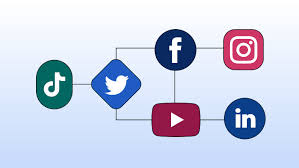
Course Details:
This course aims to introduce the students to the role and importance of social in journalism.
Students will be introduced to various social media platforms, their working aesthetics and
metrics, and their role in generating content as well as increasing the reach of content. They
will also be taught about the power of influencers in boosting the reach of any content.
- Teacher: Dr Shilpi Jha
- Teacher: Ms Smruti Shelke
- Teacher: Abhinita Daiya
- Teacher: Ms Smruti Shelke
- Teacher: Ms Smruti Shelke
- Teacher: Dr Sheeva Dubey

- Teacher: Ms. Neha Dubey
- Teacher: Dr. Pallavi Jha
- Teacher: Rachana Mudholkar
- Teacher: Dr. Bahubali Shiragapur
- Teacher: Mr. Moiz Adtani
- Teacher: Mr Nihal Kale
- Teacher: Vahida Pathan
- Teacher: Dr Richa Purohit
- Teacher: Mr Nihal Kale
- Teacher: Vahida Pathan
- Teacher: Mr. Moiz Adtani
- Teacher: Mrs. Heena Bhatia
- Teacher: Dr Richa Purohit
- Teacher: Aabha Gupta
- Teacher: Mrs. Heena Bhatia
- Teacher: Dr Richa Purohit
- Teacher: Mr Nihal Kale
- Teacher: Dr. Rahul Sharma
- Teacher: Ms. Pamir Gogoi
- Teacher: Mr Nihal Kale
- Teacher: Dr. Rahul Sharma
- Teacher: Ms. Pamir Gogoi
- Teacher: Mr Nihal Kale
- Teacher: Dr. Rahul Sharma
- Teacher: Mrs. Kalyani Kute
- Teacher: Dr. Bahubali Shiragapur
- Teacher: Mrs. Heena Bhatia
- Teacher: Suvarna Ketankumar Karankal
- Teacher: Dr Richa Purohit
- Teacher: Dr Richa Purohit
- Teacher: Varsha Sambhaje
- Teacher: Ms Hetal Thaker
- Teacher: Dr Richa Purohit
- Teacher: Ms Hetal Thaker
- Teacher: Dr Amol Dhakne
- Teacher: Dr.Abhijit Patankar
- Teacher: Dr. Bahubali Shiragapur
- Teacher: Mr Shivaji Vasekar
- Teacher: Archana Kadam
- Teacher: Dr. Saif Nalband
- Teacher: Ms Sandhya S Jawale
- Teacher: Dr. Rahul Sharma
- Teacher: Mr Shivaji Vasekar
- Teacher: Mrs Deepali Hajare
- Teacher: Dr. Rahul Sharma
- Teacher: Dr.abhijeet Phatnkar
- Teacher: Dr. Rahul Sharma
- Teacher: Dr Sandesh Solepatil
- Teacher: Dr Arvind Kumar Mathur
- Teacher: Dr Sandesh Solepatil
- Teacher: Dr Amit Umbrajkar
- Teacher: Dr. B. Pavan Babu
- Teacher: Dr. Swapnil Bhurat
- Teacher: Dr Sudhir Kumar
- Teacher: Dr Arvind Kumar Mathur
- Teacher: Dr. Rajendhar Puppala
- Teacher: Dr. B. Pavan Babu
- Teacher: Dr. Swapnil Bhurat
- Teacher: Dr Sudhir Kumar
- Teacher: Dr Arvind Kumar Mathur
- Teacher: Dr. Rajendhar Puppala
- Teacher: Dr. Maheshwari Biradar
- Teacher: Maan Bardhan Kanth
- Teacher: Maan Bardhan Kanth
- Teacher: Dr. Neera Kumari
- Teacher: Dr. Neera Kumari
- Teacher: Dr. Neera Kumari
- Teacher: Dr. Neera Kumari
- Teacher: Mr. Ajit Dalavi
- Teacher: Mr. Ajit Dalavi
- Teacher: Mr. Ajit Dalavi
- Teacher: Maithili Salgaokar
- Teacher: Mr. Ajit Dalavi
- Teacher: Mr. Ajit Dalavi
- Teacher: Dr. Madhavi Deshpande
- Teacher: Dr. Priyanka Dhoot
- Teacher: Jagdeep Singh
- Teacher: Sheetal Bura
- Teacher: Dr. Madhavi Deshpande
This student survey is created to gather information from students about availability of laptop, computer system, smart phone, internet, etc. at their respective homes during lock down (occurred due to Covid 19). The purpose is to prepare for conducting online examinations.
- Teacher: Nitin Rajput
- Teacher: Mrs Asha S Ayakar
- Teacher: Dr. Sanjay Badhe
- Teacher: Dr. Maheshwari Biradar
- Teacher: Dr Dipti chandra
- Teacher: Mr. Rajkumar Chaudhari
- Teacher: Dr. Anju Chaurasia
- Teacher: Mr. Santosh Chavan
- Teacher: Mrs. Pritam Chavan
- Teacher: Ms Karishma Doke
- Teacher: Kunal Dumbre
- Teacher: Dr.Vaishnaw Kale
- Teacher: Ms Priyanka Karale
- Teacher: Jayashri Kawale
- Teacher: Ms Shilpa Marathe
- Teacher: Ms Shobhana Patil
- Teacher: Mrs Smita S Pawar
- Teacher: Dr. Dipika Pradhan
- Teacher: Mrs Remya Praveen
- Teacher: Dr Rishikant Rajdeepak
- Teacher: Dr. Yudhishthir Raut
- Teacher: Mr Chandresh Shah
- Teacher: Dr. Rahul Sharma
- Teacher: Dr. Bahubali Shiragapur
- Teacher: Dr. Gaurav Kumar Singh
- Teacher: Suprabhat Sinha
- Teacher: Dr Swapnil Waghmare
- Teacher: Dr. Sanjay Badhe
- Teacher: Dr. Maheshwari Biradar
- Teacher: Mr.Swet Chandan
- Teacher: Dr Dipti chandra
- Teacher: Dr.Vaishnaw Kale
- Teacher: Mrs. Veena Kiragi
- Teacher: Ms Vaishali Kumar
- Teacher: Manasa Mandapati
- Teacher: Raji Ajith Panickar
- Teacher: Mrs Smita S Pawar
- Teacher: Mrs. Ashwini Pawar
- Teacher: Dr. Dipika Pradhan
- Teacher: Dr Rishikant Rajdeepak
- Teacher: Samruddhi Sapkal
- Teacher: Dr. Kapil Sharma
- Teacher: Dr. Rahul Sharma
- Teacher: Ms. Monika Sharma
- Teacher: Dr Ashvini P Shende
- Teacher: Dr. Bahubali Shiragapur
- Teacher: Dr. Gaurav Kumar Singh
- Teacher: Mr Nikhil Soniminde
- Teacher: Dr. Vijaya M Waidande
- Teacher: Dr. Kranti Shingate
- Teacher: Mr. Shubham Chandgude
- Teacher: Dr. Sidhartha Singh
- Teacher: Dr. Sidhartha Singh
- Teacher: Dr. Sidhartha Singh
- Teacher: Dr Richa Purohit
- Teacher: Priyanka Raju Balage
- Teacher: Mrs. Heena Bhatia
- Teacher: Dr Richa Purohit
- Teacher: Ms. Prachi Soniminde
- Teacher: Ms Dipali P Dhokane
- Teacher: Dr. Maheshwari Biradar
- Teacher: Ms Dipali P Dhokane
- Teacher: Varshita Gangadhara
- Teacher: Raji Ajith Panickar
- Teacher: Prof. Vinayak Sathe
- Teacher: Mr Pulkit Tiwari
- Teacher: Sulaxan Jadhav
- Teacher: Prof. Vinayak Sathe
- Teacher: Dr. Pragati Choudhari
- Teacher: Mr Mayank Nipane
- Teacher: Dr. Rahul Sharma
- Teacher: Raji Ajith Panickar
- Teacher: Dr. Somya Dubey
- Teacher: Mr Saransh Kushwaha
- Teacher: Dr. Somya Dubey
- Teacher: Varshita Gangadhar
- Teacher: Ms Vaishali Kumar
- Teacher: Harsh Dharmendrabhai Shah
- Teacher: Sulaxan Jadhav
- Teacher: Dr. Garima Pandey
- Teacher: Dr Sarika Jadhav
- Teacher: Mr Riteshkumar Sale
- Teacher: Manasa Mandapati
- Teacher: Dr. Pramod Yelmewad
- Teacher: Mr Anshanu Birajdar
- Teacher: Dr. Somya Dubey
- Teacher: Raji Ajith Panickar
- Teacher: Dr. Bahubali Shiragapur
- Teacher: Mr Anshanu Birajdar
- Teacher: Dr. Somya Dubey
- Teacher: Dr. Rahul Sharma
- Teacher: Dr. Rahul Sharma
- Teacher: Ms. Sweta Shreyashi
- Teacher: Mr Anshanu Birajdar
- Teacher: Dr. Somya Dubey
- Teacher: Dr. Rahul Sharma
- Teacher: Dr. Garima Pandey
- Teacher: Raji Ajith Panickar
- Teacher: Varshita Gangadhar
- Teacher: Dr Jagadish Jakati
- Teacher: Raji Ajith Panickar
- Teacher: Samruddhi Sapkal
- Teacher: Ms Dipali P Dhokane
- Teacher: Raji Ajith Panickar
- Teacher: Dr. Vijaya M Waidande
- Teacher: Varshita Gangadhar
- Teacher: Dr Jagadish Jakati
- Teacher: Raji Ajith Panickar
- Teacher: Samruddhi Sapkal
- Teacher: Varshita Gangadhar
- Teacher: Raji Ajith Panickar
- Teacher: Samruddhi Sapkal
- Teacher: Dr Swapnil Waghmare
- Teacher: Mr. Rajkumar Chaudhari
- Teacher: Dr Jagadish Jakati
- Teacher: Dr. Rahul Sharma
- Teacher: Dr. Rahul Sharma
- Teacher: Ms. Sweta Shreyashi
- Teacher: Dr. Kirti Mehta
- Teacher: Manjusha. CB
- Teacher: Dr. Maheshwari Biradar
- Teacher: Aabha Gupta
- Teacher: Dr. Rahul Sharma
- Teacher: Vahida Pathan
- Teacher: Dr. Pallavi Jha
- Teacher: Dr. Pallavi Jha
- Teacher: Dr. Pallavi Jha
This foundational course is designed to equip students with essential knowledge and practical skills in using personal computers and navigating the internet effectively. It serves as an introduction to basic computer operations, digital communication tools, and internet technologies that are integral to both academic and professional environments.
Throughout the duration of the course, students will gain hands-on experience in performing fundamental computer tasks, including word processing, spreadsheet management, and digital presentation techniques. Emphasis will also be placed on efficient use of web browsers, search engines, and cloud-based tools for communication, collaboration, and research.
- Teacher: Dr. Pallavi Jha

This course aims to prepare the students for basic knowledge and usage of personal computers and the internet. During the tenure of this course, the students will learn the use basic computer and internet technology for effective communication. They will also receive hands-on training to secure their information and prevent data theft.
- Teacher: Ms. Neha Dubey
- Teacher: Dr. Sanjay Kumar
- Teacher: Mr.Swet Chandan
- Teacher: Mrs Reema C Deshmukh
- Teacher: Dr. Sonal Mahajan
- Teacher: Dr. Meena Pandey
- Teacher: Mrs. Shubhangi V Patil
- Teacher: Dr. Lubna Shaik
- Teacher: Abhinita Daiya
- Teacher: Prof Paresh Kulkarni
- Teacher: Ms Karishma Doke
- Teacher: Dr.Anjali Gupta
- Teacher: Bhakti Sathe
- Teacher: Dr. Bahubali Shiragapur
- Teacher: Priti Patil
- Teacher: Prof. Vinayak Sathe
- Teacher: Dr.Anjali Gupta
- Teacher: Dr. Rahul Sharma
- Teacher: Mr. Ravi Sagar
- Teacher: Dr. Rahul Sharma
- Teacher: Prof.Dr.Sabahudin Hadzialic
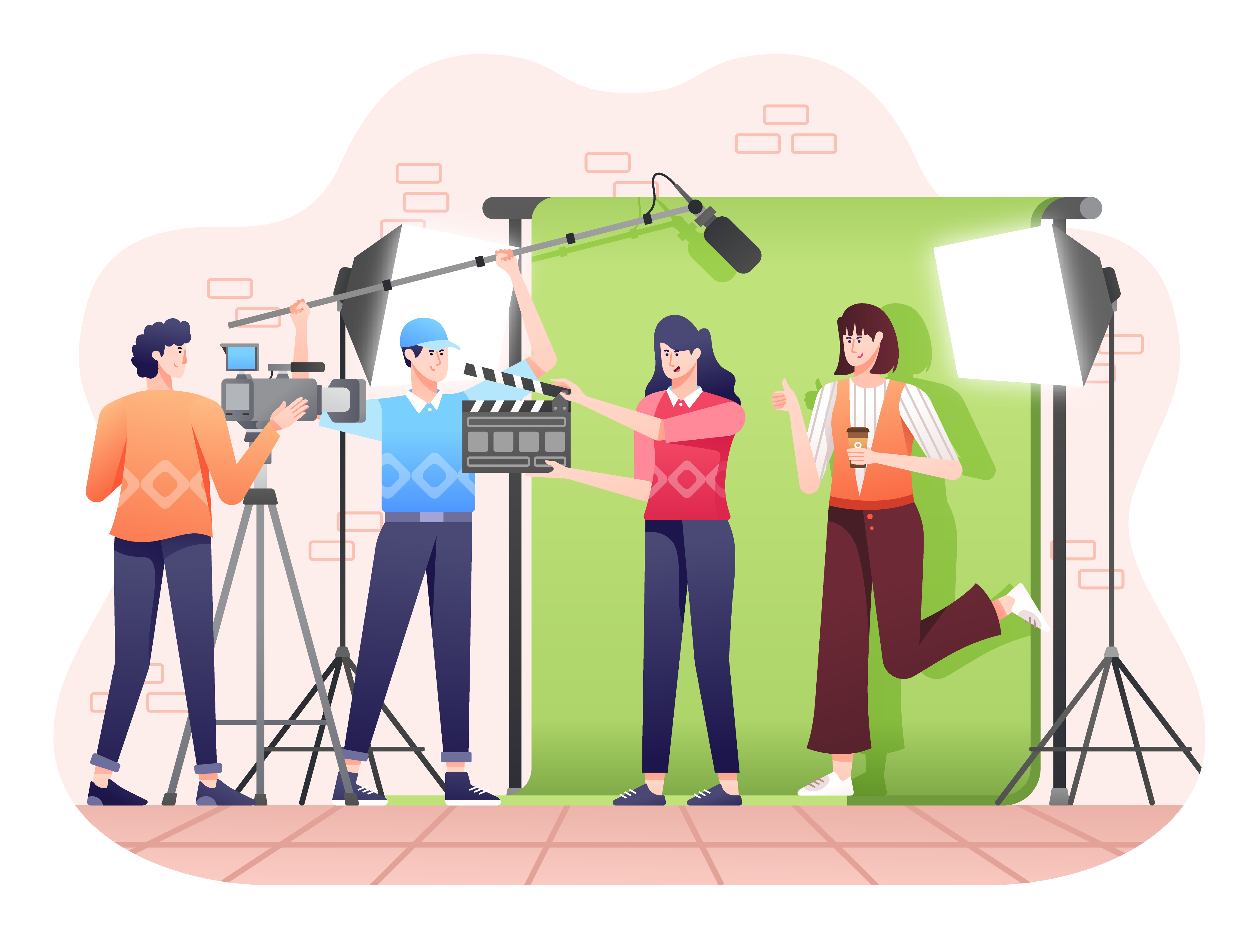
- Teacher: Maan Bardhan Kanth
- Teacher: Mr Amit Kumar Om
- Teacher: Maan Bardhan Kanth
- Teacher: Maan Bardhan Kanth
- Teacher: Ms. Sharvari Pote
- Teacher: Mr. Shyam Pagare

Syllabus of Theory of Machine
- Teacher: Dr Amol Mali
- Teacher: Dr Arvind Kumar Mathur
- Teacher: Mr Chetan Pawar
- Teacher: Mr Sushil Gaikwad
- Teacher: Dr Arvind Kumar Mathur
- Teacher: Mr Ganesh Naik
- Teacher: Mr Chetan Pawar
- Teacher: Ms Sakshi Ravindra Dhapatkar
- Teacher: Prof.Shashi Singh
- Teacher: Mrs. Mangal Anilkumar Ambi
- Teacher: Prof.Shashi Singh
- Teacher: Mr.Swet Chandan
- Teacher: Mr. Rajkumar Chaudhari
- Teacher: Mr Tosheet Hedaoo
- Teacher: Mr Shrikant Mahindrakar
- Teacher: Dr. Bahubali Shiragapur
- Teacher: Prof. Mangesh Javkhedkar

SEMIV-DB
Course: SCM 402
Transport Flow Modelling
- Teacher: Mr. Ashwin Agarwal
- Teacher: Dr Viraj Atre

- Teacher: Maan Bardhan Kanth
- Teacher: Mr Amit Kumar Om
- Teacher: Dr Shilpi Jha
- Teacher: Mr Amit Kumar Om
- Teacher: Ms. Sharvari Pote
|
- Teacher: Mr Kuntal De
- Teacher: Varun Sharma
- Teacher: Mrs. Heena Bhatia
- Teacher: Prachi Chhajed
- Teacher: Anil Narasipuram
- Teacher: Dr Richa Purohit
- Teacher: Ms. Prachi Soniminde
- Teacher: Mrs. Heena Bhatia
- Teacher: Prachi Chhajed
- Teacher: Anil Narasipuram
- Teacher: Dr Richa Purohit
- Teacher: Ms. Prachi Soniminde
- Teacher: Rohit Sahebrao Deshmukh
- Teacher: Ms. Monika Sharma
- Teacher: Ms. Monika Sharma
- Teacher: Anil Narasipuram
- Teacher: Anil Narasipuram
- Teacher: Anil Narasipuram
- Teacher: Anil Narasipuram
- Teacher: Anil Narasipuram
- Teacher: Anil Narasipuram
- Teacher: Dr. Vinodkumar Ghale
- Teacher: Dr Arvind Kumar Mathur
- Teacher: Dr. Vinodkumar Ghale
- Teacher: Dr Arvind Kumar Mathur
- Teacher: Dr Vikas Dive
- Teacher: Dr Arvind Kumar Mathur
Vehicle dynamics is the study of the behavior of vehicles in motion. The vehicle in motion study is one of the most important activities in the Vehicle design and development cycle to design vehicles that drive well and are comfortable to ride in
- Teacher: Dr Vikas Dive
- Teacher: Dr Arvind Kumar Mathur
- Teacher: Sandeep Dongare
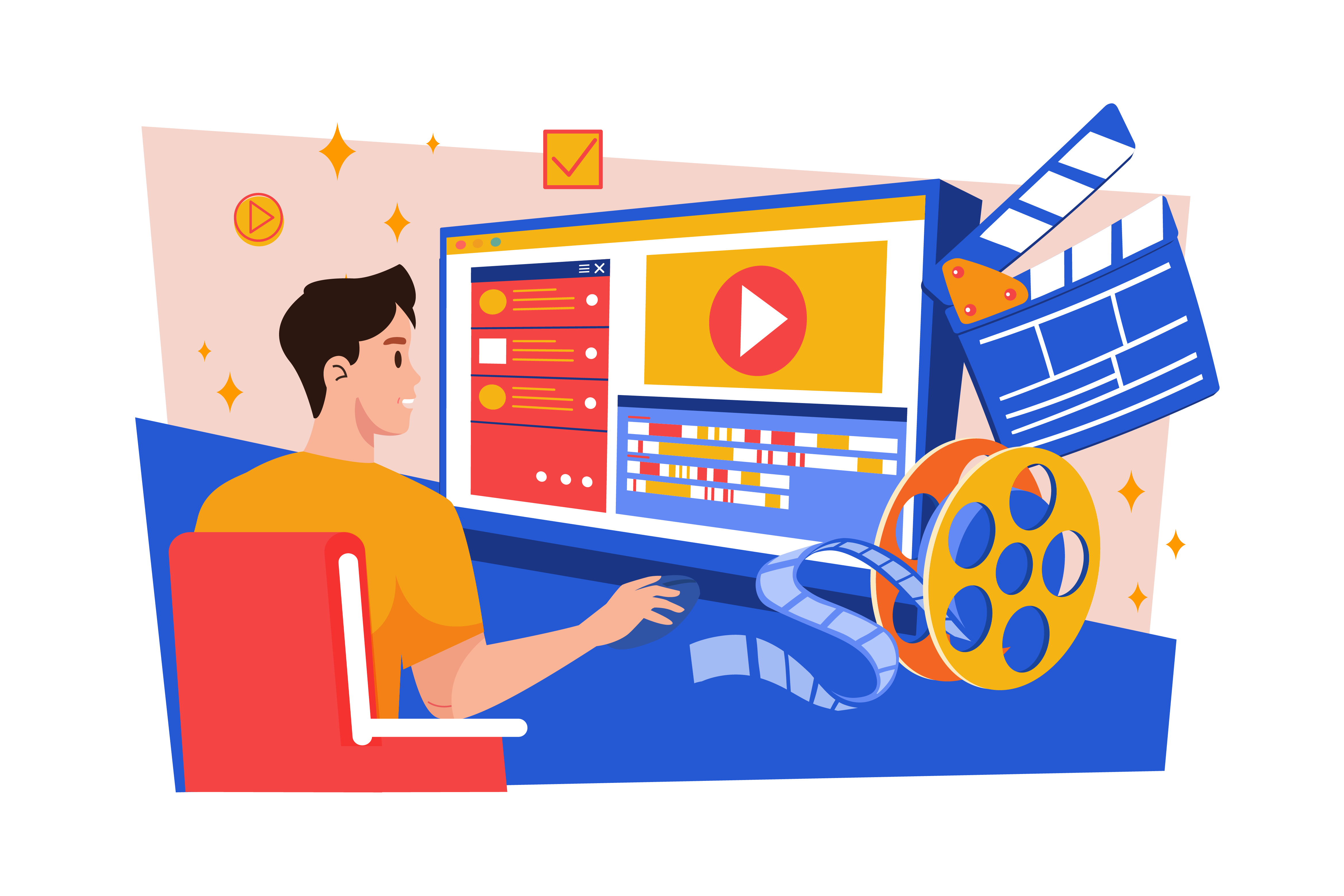
- Teacher: Mr Amit Kumar Om
- Teacher: Mr Amit Kumar Om
- Teacher: Mr Amit Kumar Om

- Teacher: Sandeep Dongare
- Teacher: Mr. Shyam Pagare
- Teacher: Bhanuprakash Bussagari
- Teacher: Sheetal Bura
Assignment and the Evaluation Students should complete in Time.
- Teacher: Sheetal Bura
- Teacher: Dr. Kirti Mehta
- Teacher: Dr. Kirti Mehta
- Teacher: MS.DOYEL DUTTA
- Teacher: Maan Bardhan Kanth
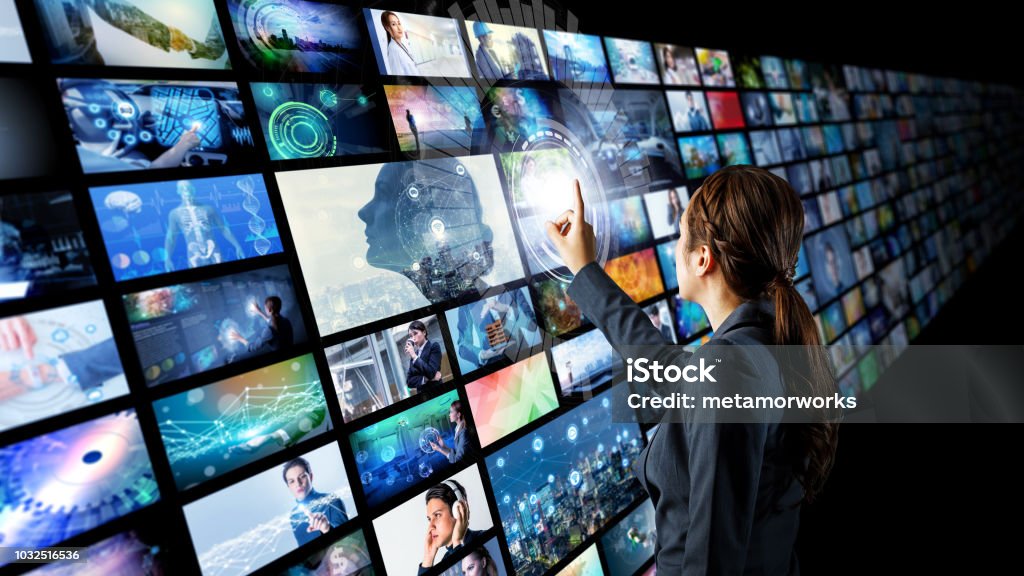
This course aims to introduce students to the basics of web journalism, making them understand the key components and metrics of news websites, providing hands-on experiences in writing articles and headlines for news websites, and writing live updates for news websites.
- Teacher: Ms. Neha Dubey
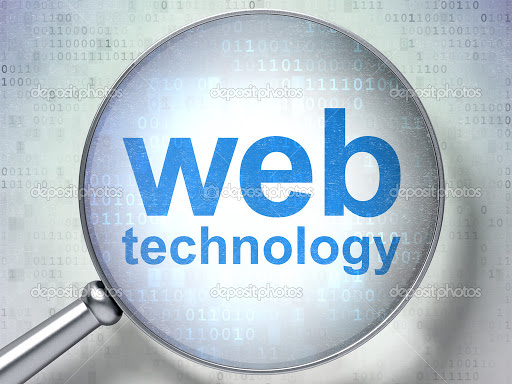
Web Technology-I, Semester III (June-Dec 2019).
This course covers the Client-side scripting languages like HTML5 and CSS3
- Teacher: Mrs. Heena Bhatia
- Teacher: Ashwini Bhavsar
- Teacher: Ms Dipali P Dhokane
- Teacher: Ms Jyoti Dukare
- Teacher: Dr. Maheshwari Biradar
- Teacher: Ms. Komal Borate
- Teacher: Dr. Rahul Sharma
- Teacher: Mrs. Heena Bhatia
- Teacher: Dr Richa Purohit
- Teacher: Ms Jyoti Dukare
- Teacher: Mrs. Veena Kiragi
- Teacher: Ms Hetal Thaker
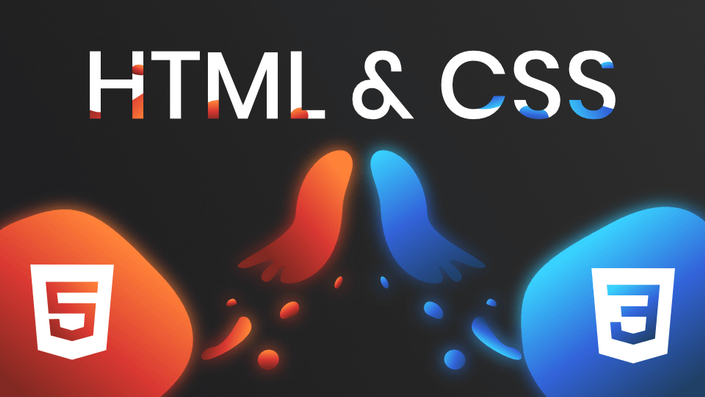
- Teacher: Mrs. Heena Bhatia
- Teacher: Mrs.Madhuri Pagale
- Teacher: Mrs. Heena Bhatia
- Teacher: Mrs.Madhuri Pagale

Web Technology -II, Semester IV (Jan-June 2020)
This course covers PHP Basic concepts, File Handling, Database Handling and Cookies and Sessions
- Teacher: Mrs. Heena Bhatia
- Teacher: Arvind Singh

Course Objectives:
On completion of this course, the student should be able to:
describe the writing process for various media
describe the process of translation
utilize knowledge gained in writing accurately and creatively for mass media
- Teacher: Maan Bardhan Kanth
- Teacher: Mr Kumud Das

